SPECIAL FEATURE: KARL BERGER IN MEMORIAM
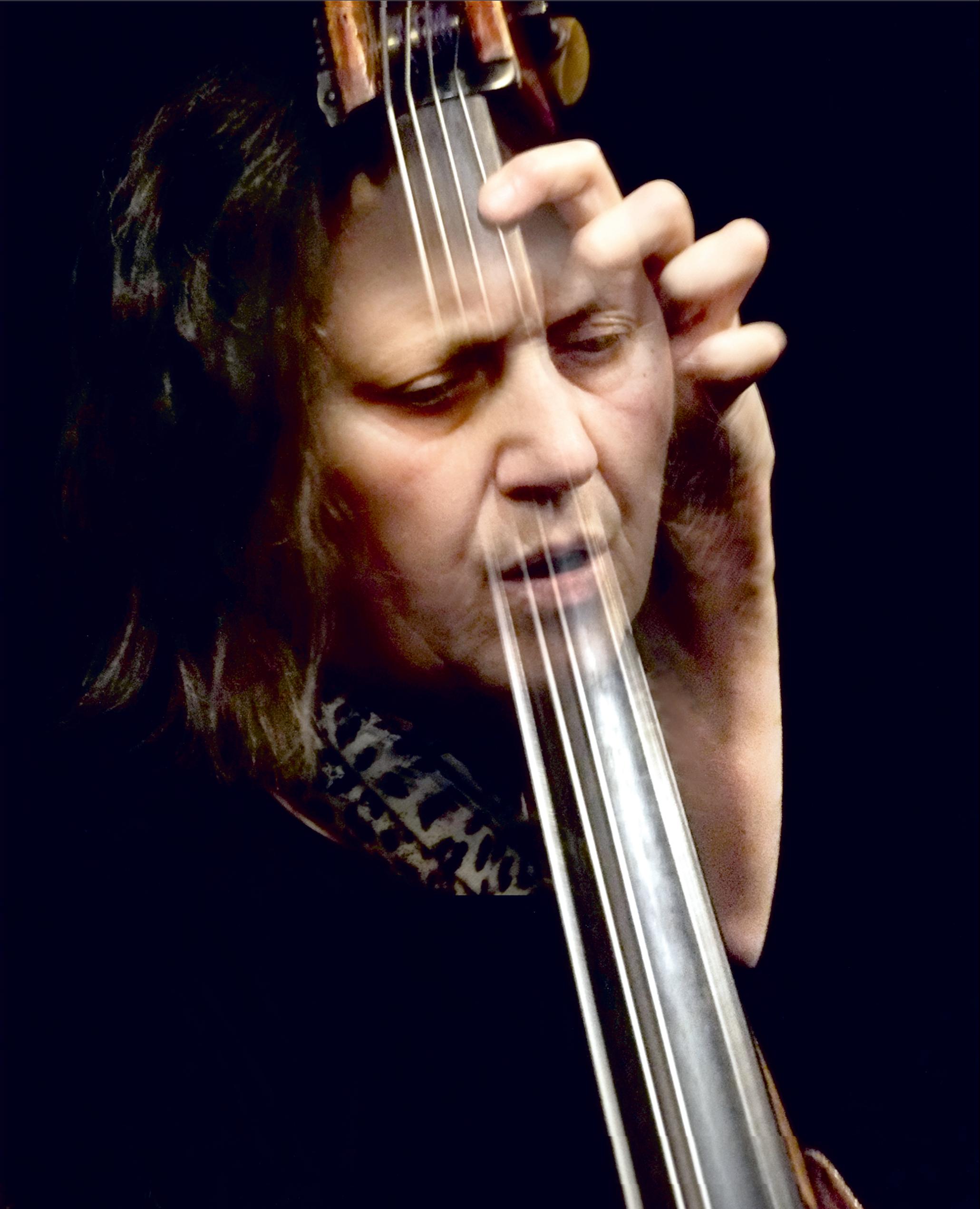
JOËLLELÉANDRE LifetimeRebel

JUNE 2023-ISSUE 254
BOBBY SANABRIA ARUÁN ORTIZ ALAN SKIDMORE BUDDY TATE
Managing Editor: Laurence Donohue-Greene
[Co-Founder/editor emeritus: Andrey Henkin]
To Contact:
The new York City Jazz Record 66 Mt. Airy Road east Croton-on-Hudson, nY 10520 united States
Phone/Fax: 212-568-9628
Laurence Donohue-Greene: ldgreene@nycjazzrecord.com
Nate Dorward (Copy Editor): ndorward@nycjazzrecord.com
Advertising: advertising@nycjazzrecord.com

Keith Hoffman (Event Calendar Manager): calendar@nycjazzrecord.com

Suzanne Lorge (VOXNews): voxnews@nycjazzrecord.com
US Subscription rates: 12 issues, $40 Canada Subscription rates: 12 issues, $45 International Subscription rates: 12 issues, $50 For subscription assistance, send check, cash or money order to the address above or email ldgreene@nycjazzrecord.com
Staff Writers
Stuart Broomer, Robert Bush, Brian Charette, Mike Cobb, Thomas Conrad, Ken Dryden, Phil Freeman, Pierre Giroux, Kurt Gottschalk, Tom Greenland, George Grella, Keith Hoffman, Terrell K. Holmes, Marilyn Lester, Steven Loewy, Suzanne Lorge, Marc Medwin, Francesco Martinelli, Jim Motavalli, Russ Musto, John Pietaro, John Sharpe, elijah Shiffer, elliott Simon, Thomas Staudter, Anna Steegman, eric Wendell, Scott Yanow


Contributing Writers
Fred Bouchard, Jason Gross, Andrew Hamlin, George Kanzler, Franz Matzner, John Shand
Contributing Photographers Lauren Deutsch, Jeremy Fletcher, Jimmy & Dena Katz, Daniel McCullough, Alan nahigian, Hank O’neal, Luciano Rossetti, Peter Serling, Mike Shur, Robert Sutherland-Cohen, uli Templin, Jack Vartoogian, Mark Wastell
June 2023 – ISSue 254
neW YORK@nIGHT
InTeRVIeW: BOBBY SAnABRIA by russ musto
ARTIST FeATuRe: ARuÀn ORTIZ by george grella
On THe COVeR: JOËLLe LÉAnDRe by john sharpe
LABeL SPOTLIGHT: FLYInG DuTCHMAn
LeST We FORGeT: BuDDY TATe by mike cobb by suzanne lorge
VOXneWS
by elliott simon
enCORe: ALAn SKIDMORe by francesco martinelli FeSTIVAL
SPeCIAL FeATuRe: KARL BeRGeR In MeMORIAM
Letter from the Editor
With summer upon us in just a few weeks’ time, June marks the unofficial beginning of jazz festival season, adding to the always rich stew of nightly jazz options in nYC. Key festivals range in length from a week (the 27th annual Vision Festival and 7th annual Jazztopad Festival) to two weeks (Soapbox Gallery’s first annual Sono Fest curated by pianist ethan Iverson) to a month (Jazz In June Festival at the McCarter Theatre Center and the Blue note Jazz Festival at the club as well as at larger venues such as Sony Hall, Town Hall and Beacon Theatre) to the entire summer (Jazzmobile’s Summerfest, BRIC Celebrate Brooklyn! and City Parks Foundation’s Summerstage). And of course you can always refer to TNYCJR’s extensive event Calendar listings (pgs. 42-45) as a roadmap to the overwhelming diversity of choices. For some strong in-house recommendations, though, be sure to check out our features, plus much of the Album Review section, for plugs of local concerts happening this month.
Our three main features focus on three musicians, all with new album releases. French bassist Joëlle Léandre (Cover Story) receives Vision Festival’s Lifetime Achievement award at Roulette and performs throughout the festival’s opening night dedicated to her various ensembles. Cuban, nYC-based pianist Aruán Ortiz (Artist Feature) continues his upwards trajectory as an original player, composer, bandleader and collaborator, all aspects on display at his June concerts: 411 Kent’s “Shift” series (solo), Dizzy’s Club (with Andrew Cyrille’s “Caribbean Cross-Generations”) and DiMenna Center for Classical Music (with ensemble Ipse). And South Bronx-born drummer/percussionist/educator Bobby Sanabria (Interview Feature) will be at Hostos Center for the Arts & Culture, celebrating the follow-up to his last Grammynominated album.
We also honor a few legends of this music. Octogenarian english saxophonist Alan Skidmore is overdue for an nYC visit, but at least we can join him in celebration of an astounding, just-released boxed set highlighting his six decades in music. We pay tribute to two other legendary figures who made the jazz stew that much thicker during and beyond their lifetimes: tenor saxophonist/Count Basie alum Buddy Tate (Lest We Forget) and the late vibraphonist/Creative Music Studio founder Karl Berger (In Memoriam Special Feature), who passed away in April.
There’s a lot to digest, so bring your reading and listening appetite. And see you out at the shows!
2 June 2023 | THE NEW YORK CITY JAZZ RECORD
On
All rights reserved. Reproduction without permission strictly prohibited. All material copyrights property of the
MeMORIAM
The Cover: Joëlle Léandre (photo by © Lauren Deutsch)
authors. CLuB DIReCTORY In
by thomas staudter
RePORT 8 7 6 4 11 11 10 10 eVenT CALenDAR 42 46 47 12 ALBuM ReVIeWS 16
14
IN CORRECTION (May 2023 issue)
We regret the following error…. The photo of Artist Feature Ben Stapp by Peter Gannushkin/DOWNTOWNMUSIC.NET was incorrectly credited.
nycjazzrecord.com



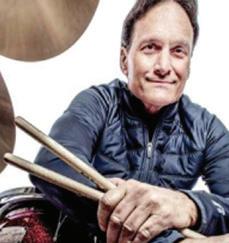
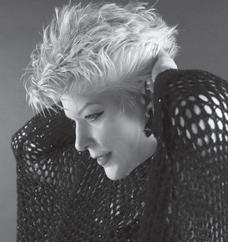
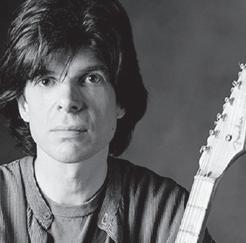

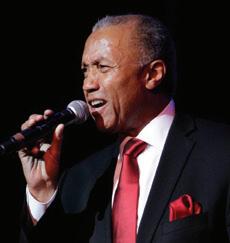

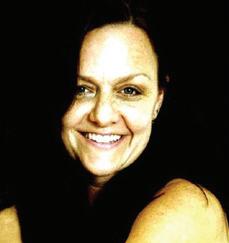

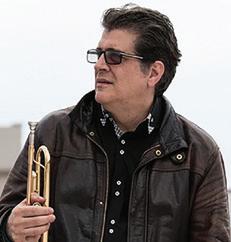
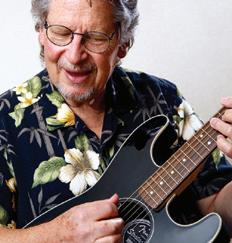

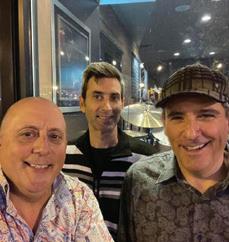
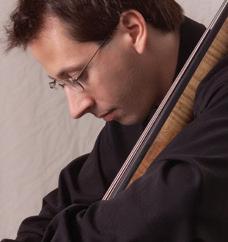


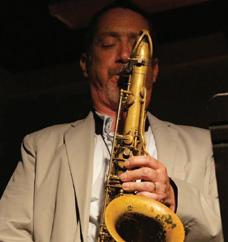


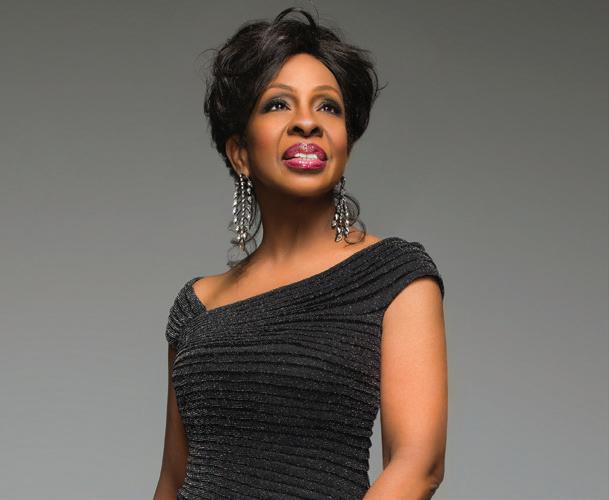
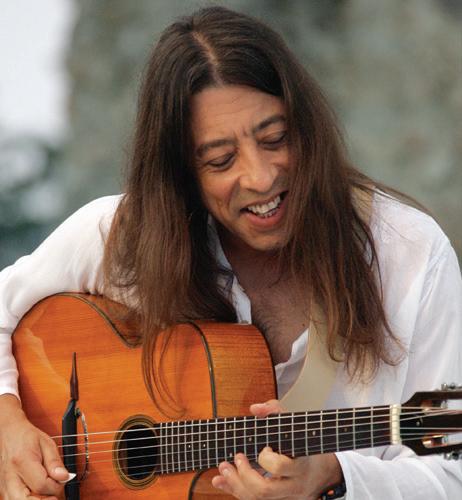
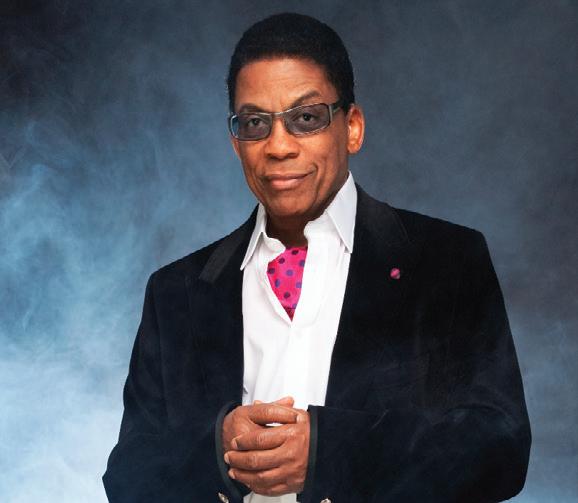
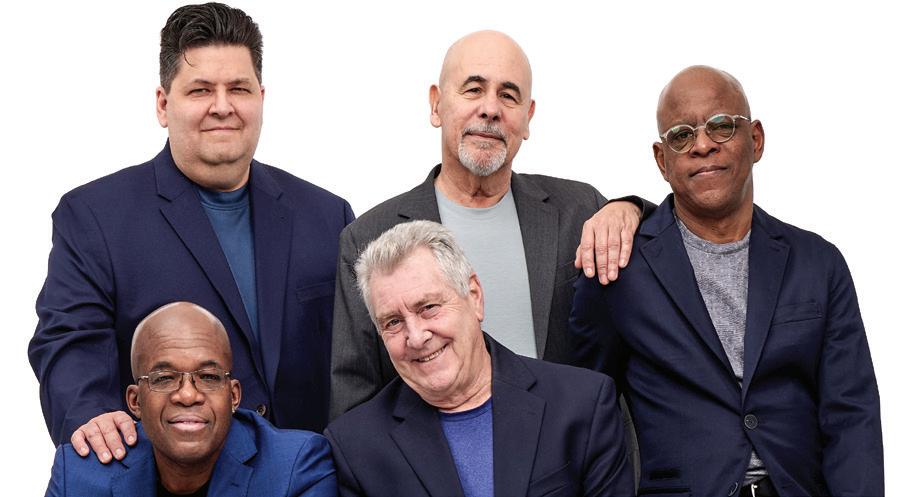

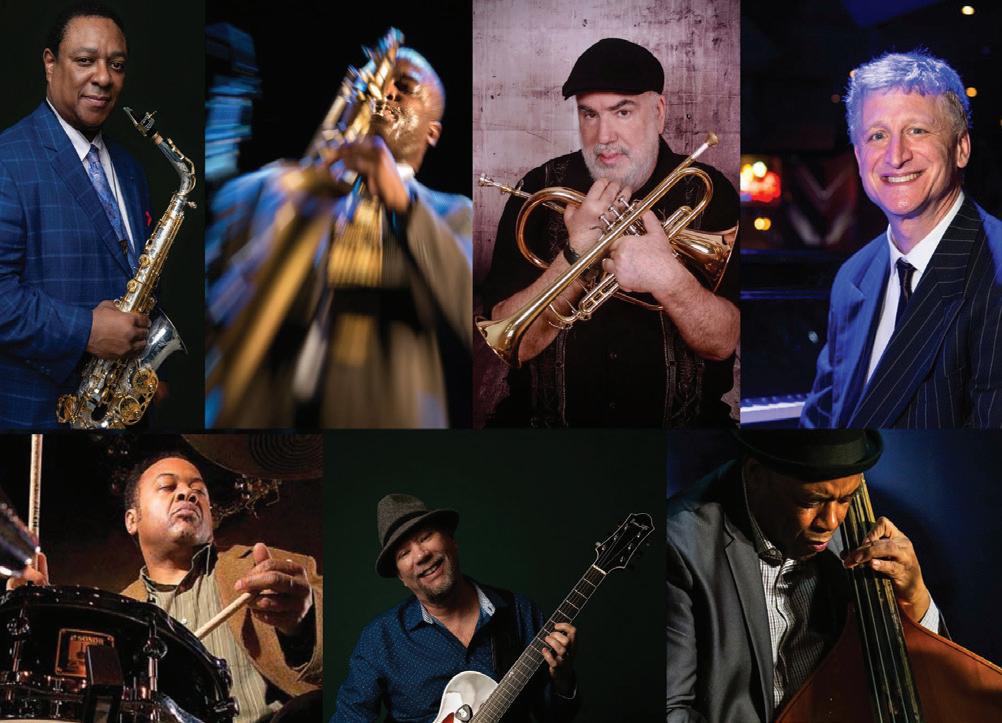
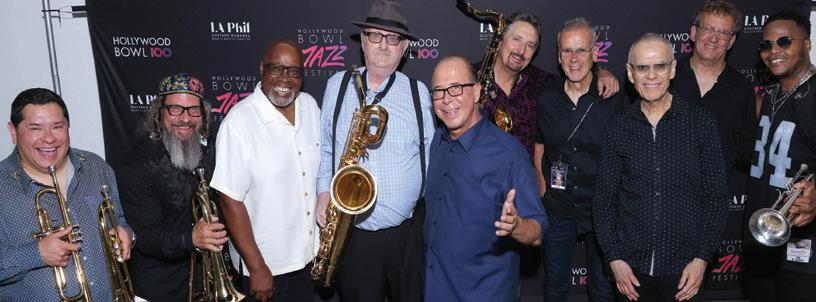
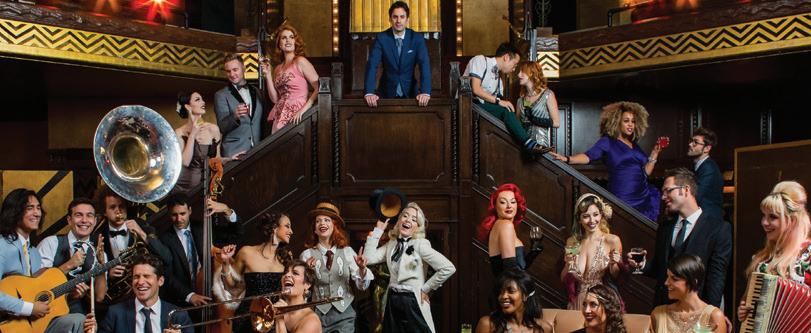



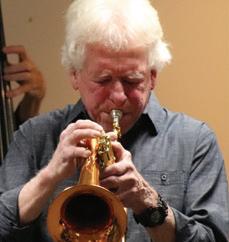
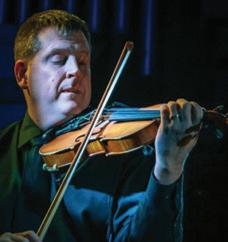
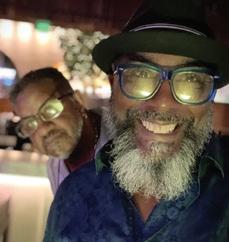
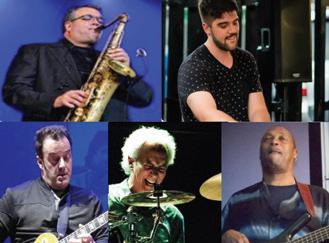
E S P JAZZ GROUP MELISSA GARDINER FUNKY JAZZ BAND BOB HOLZ NANCY KELLY MARK DOYLE QUATRO RONNIE LEIGH ERIC ALEXANDER TAMARALEE SHUTT MARISSA MULDER JOE MAGNARELLI MARK HOFFMANN JOYCE DICAMILLO JAZZ MAFIA FRANK GROSSO JOHN ROHDE TRIO JEFF MARTIN TRIO JULIE HOWARD TOM BRIGANDI JULIE & RICK MONTALBANO TRIO National Grid Jazz Fest 37th Annual Wed. June 21- Sun. June 25 HERBIE HANCOCK TOWER OF POWER POSTMODERN JUKEBOX TUBA SKINNY SOMETHING ELSE! GLADYS KNIGHT HARRI STOJKA SPYRO GYRA Pho o by Doug as K rkland SYRACUSE,NY national grid FREE! A n d M a ny M o r e ! Fo r T h e C o m p l e t e L i n e u p , Vi s i t S Y R AC U S E J A Z Z F E S T. C O M V I S I T S Y R AC U S E . C O M MONK ROWE FIVE FAMILIES ENSEMBLE JT HALL JAZZ CONSORT HOT CLUB OF SYRACUSE MICHAEL HOUSTON /SAM WYNN LONGWOOD JAZZ PROJECT syracusejazzfest2023_ad_9.5x12_newyorkcityjazzrecord_color_Layout 1 4/24/23 3:13 PM Page 1
NOAH HAIDU STANDARDS
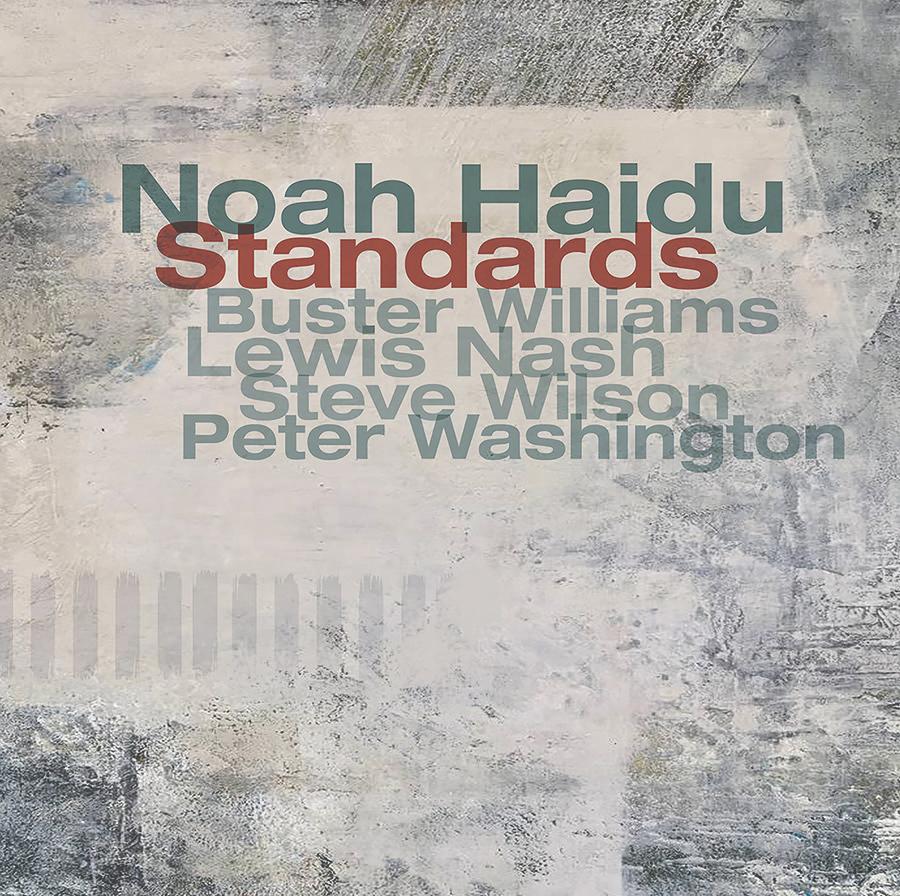
with BUSTER WILLIAMS / LEWIS NASH
STEVE WILSON / PETER WASHINGTON
SSC 1705 / AVAILABLE 6/23/23
Haidu has truly lived in music for his whole adult life. He has been performing with the likes of Walter Perkins, Duane Eubanks, Essiet Essiet, and more recently Billy Hart, Steve Wilson, Carl Allen, Willie Jones III, Jon Irabagon, and Gary Thomas. Of his exemplary trio Haidu says simply, “We are seeking the deepest level of expression. It’s not about technique, tricks or trends. It’s all heart.”
DENNY ZEITLIN CRAZY RHYTHM EXPLORING GEORGE GERSHWIN

SSC 1693 / AVAILABLE 6/30/23
Zeitlin brings his full creative force to the effort to transform well-known pieces into remarkable musical journeys. In 2018, Zeitlin decided to focus on the great American composer, George Gershwin, for his concert at Oakland’s Piedmont Piano Company and recorded the proceedings, released now as Crazy Rhythm: Exploring George Gershwin.
www.sunnysiderecords.com
A lluding to genres like bluegrass, e uropean and Indian classical and jazz can’t capture the eclectic music of Béla Fleck, Zakir Hussain, Edgar Meyer and Rakesh Chaurasia (on banjo, tabla, bass and bansuri, respectively), heard to dazzling effect at Town Hall (May 4). Showcasing a sound that debuted on Melody of Rhythm (2009), the band also included tunes from the forthcoming As We Speak . Brandishing astounding technical skills, the quartet’s sinuously imaginative style made the complex arrangements—awash with long-form melodies, slippery accent patterns and byzantine rhythmic permutations—sound effortless. The crisp, choppy banjo and tabla established a tensile cushion of percolating pulses, to which Meyer’s bowed upright and Chaurasia’s almost-human-sounding flute added warmth and intimacy. Over two sets it was hard to stop staring at Hussain’s fluttering fingertips, which tapped, rolled, glided and pressed to yield an astonishing array of shapeshifting beats, cadencing his ideas in three-part tihai patterns. Among many highpoints were Chaurasia’s soulful, fluid phrasing on “Conundrum”, “Pashta” and “Trade Winds” (a duet with Hussain); Fleck’s “raga-grass” experimentation on “Rickety Karma”; Meyer’s feral bowing and gliding on “J Bhai- e ” and “Beast in the Garden”; Hussain’s showstopping episodes on “As We Speak” and “B-Tune”; and the quartet’s close cohesion on the intricate “Owl’s Misfortune” and weird but wonderful “Motion”.
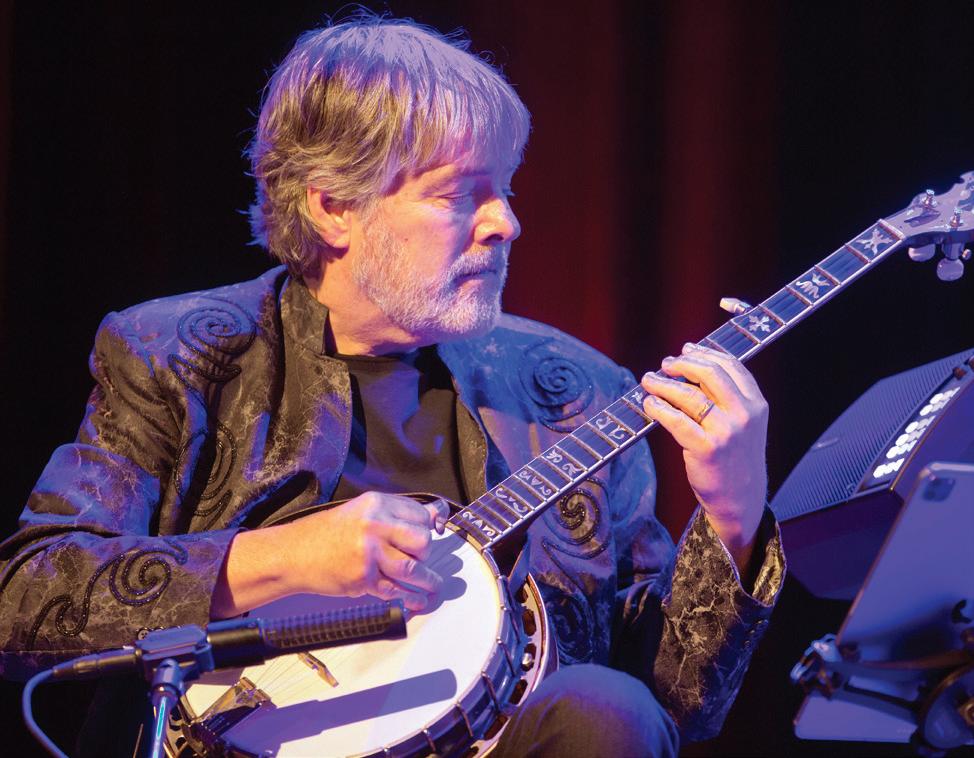 — Tom Greenland
— Tom Greenland
During the pandemic, two significant events happened that affected the jazz world: St. Peter’s Church suffered a catastrophic flood and Dr. Barry Harris, born on December 15, 1929, left this earth on December 8, 2021. The rebuilt sanctuary of the church has just now been completed, allowing for a Barry Harris Jazz Memorial celebration of life (May 10) for the pianist-educator. Before the ceremony began, 16 renowned artists, including pianists Pete Malinverni, ehud Asherie and Spike Wilner, among others, played musical tributes (on Billy Strayhorn’s piano) to an ever-growing audience that eventually packed the sanctuary. Tributes in music and word followed, including from Jazz Pastor emeritus, The Rev. Dale R. Lind, who told of the founding of the Jazz Ministry at the church, and how Harris was an integral part of it. MC Sheila Anderson (of WBGO) skillfully kept the pace lively. Conducting the “Barry Harris Orchestra and Chorus” (30 and 35 members respectively), Philip Bingham led with energy and joyfulness, with numbers such as “Come Sunday”, “Something to Live For” and “Afternoon in Paris”, arranged as symphonic, hymn-like jazz. Vocalist Sheila Jordan (who grew up with Harris in Detroit) spoke and performed, as did pianist-vocalist Johnny O’neal. Closing out the moving program was Rossano Sportiello with the orchestra’s rhythm section, delivering a lively “Tea for Two”. Chorus and orchestra ended with a swinging “Wee Dot” and “nascimento”, which had everyone up and dancing, including forming several celebratory and impromptu second lines. — Marilyn Lester
B ill’s Place is tucked between row houses on Harlem’s 133rd St., a strip known as “Swing Street” in the Prohibition e ra, due to the prevalence of speakeasies and live music. Since 2006, tenor saxophonist Bill Saxton has hosted weekend blowing sessions with an audience of two dozen or so listeners who pack into his cramped railroad apartment. The BYOB drink policy and Saxton’s relaxed repartee ensure the good times roll. Friday’s (May 12) early set featured the dynamic Oscar Perez (piano), Chris Haney (bass) and Ocie Davis (drums), with Saxton up front. Opening with a medium-up, slightly reharmonized “Speak Low”, the u nmic’d quartet was soon off and swinging. They stretched out on solos, so that tunes might run to fifteen minutes. “I Thought About You” featured an inventive bass solo by Haney, though several chatterboxes in the rear room weren’t paying attention until a lady up front said, “Please keep quiet!” Despite such distractions—wine bottles constantly handed around, cellphones checked—the casual atmosphere was part of the charm. A romp over Cedar Walton’s “Bolivia” preceded the ballad treatment of “If You Could See Me n ow”, Saxton reciting the lyrics beforehand, coloring his sound with old-school, Ben Webster-esque vibrato, and Perez in superb form. After Cannonball Adderley’s “Wabash”, Saxton laid horn aside to sing a couple blues, including humorous verses detailing his “baby’s” proclivity for whiskey. In closing, he related a few amusing anecdotes about local history. (TG)
I n Come Sunday: Duke Ellington’s Sacred Works , vocalist Joy Brown joined an octet of prime musicians at Dizzy’s Club (May 13), led by music director/pianist Luther S. Allison . In his autumn years, e llington presented three Sacred Concerts (1965, 1968, 1973), which included about 31 works in total. This curated selection allowed Brown to express her full vocal capacities, evidenced particularly in “Heaven”, introduced famously by Swedish operatic soprano, Alice Babs. Brown didn’t quite hit those stratospheric Babs high notes, but she proved her range, while the band—Bruce Harris (trumpet), Frank Lacy (trombone), Joe Miller (alto), Jason Marshall (baritone), Russell Malone (guitar), Peter Washington (bass) and Kyle Poole (drums)—excelled at the work’s changing moods and tempos. Brown’s gospel blues vocal on “Come Sunday” (written originally for Black, Brown and Beige ) mirrored the reverence of the notable version sung by Mahalia Jackson (1958). The highlight of the set was a thrilling “David Danced Before the Lord With All His Might” (originally with Bunny Briggs), on which Omar e dwards tapped ecstatically for nearly ten minutes, removing his shoes near the end to tap in bare feet. Through “Tell Me It’s the Truth” and “Almighty God” and more, the excellence of the band prevailed, holding the groove powerfully and tightly. With a big, highenergy audience participation play-out of “Hallelujah”, the genius of e llington and his famous star players was more than well-served. (ML)
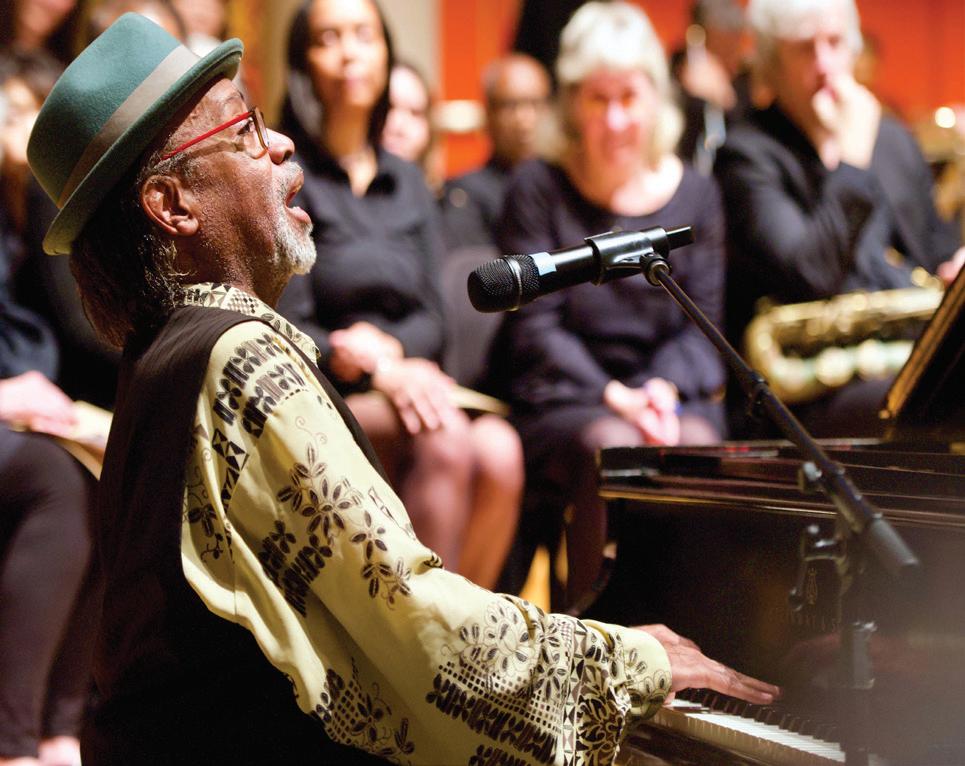
4 June 2023 | THE NEW YORK CITY JAZZ RECORD
n e W Y O R K @ n I G H T
Béla Fleck @Town Hall
A L A n n A H I G I A n R I S u T H e R L A n DC O H e n / J A Z Z e X P R e S S I O n S O R G
Johnny O’neal @St Peter’s Church
C elebrating the centennials of timbalero Tito Puente and sonero Tito Rodriguez, two towering figures of Latin music, bassist Carlos Henriquez led an estimable ensemble at Rose Theater (May 6), which featured a fiery percussion section of veterans Jose Madera, Jr. (timbales), Bobby Allende (congas) and Johnny Rodriguez (bongos and bell). The first half of the concert was devoted to Rodriguez’ repertoire, beginning with the instrumental “Satin and Lace” before vocalist Jeremy Bosch stepped out front to sing mambos “el Sabio” and “el Rincon”. The band fired up the classic “Mama Guela” with Abdias Armenteros digging in on tenor. The elegant rhythms of “el Medio al Cha Cha Chá” had the crowd swaying and “Mango del Monte” got them clapping clave, then cheering with recognition for “el Que Se Fue”, before the set closed with “el Moldo de Las Locas (Blast Off)”, which lived up to its title. The Puente part of the program started with “Mambo Birdland”, as Paul nedzela’s baritone wailed on top of percolating percussion. “Yo Vendo unos Ojos negros” underscored Puente’s skill as an arranger and “Vaya Puente” his fluency in the jazz idiom. The cha cha “Llegó Miján” mellowed the mood, before Tito’s son, Ron Puente, came out to speak and play vibes on “Tus Ojos” and “Vibe Mambo”. Timbalero Marcos Lopez Ayala guested on an incendiary reading of the iconic Puente anthem “Para Los Rumberos” to close out the set. A raucous standing ovation brought the band back for an encore of “Oye Como Va.” — Russ Musto
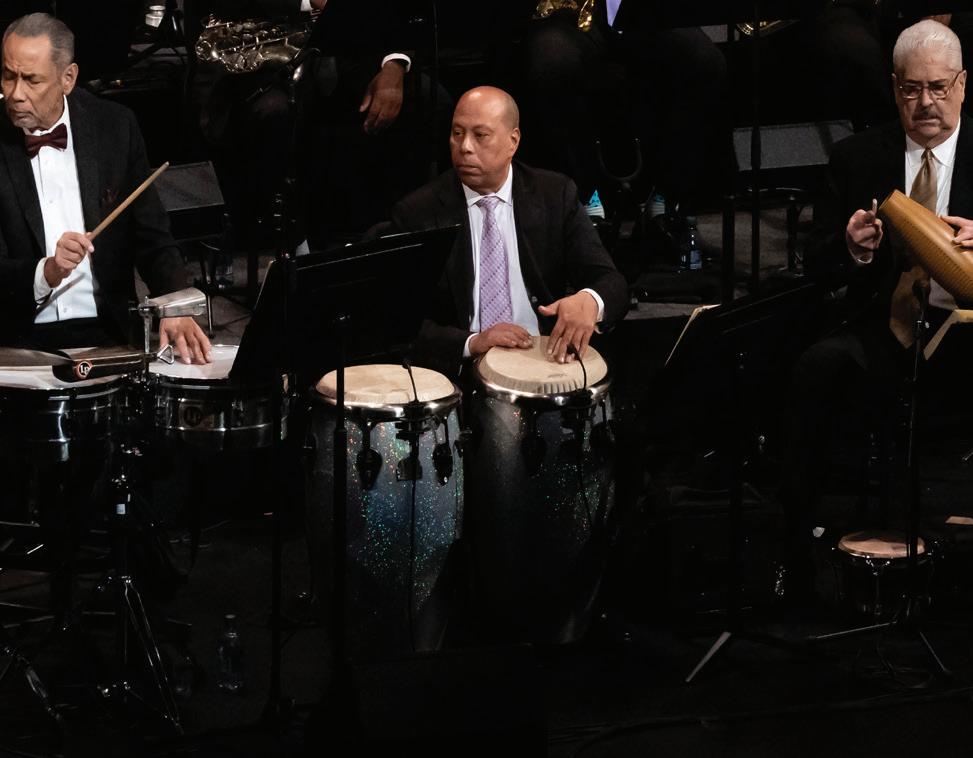
A wildly enthusiastic crowd packed Roulette (May 4) to hear Omar Sosa & Seckou Keita celebrate the release of their second album together, Suba Joined by Venezuelan master percussionist Gustavo Ovalles, the Cuban pianist/keyboardist and Senegalese vocalist/kora player embarked on a transcontinental musical journey of soul-stirring spirituality and joyousness. The set opened with Keita prayerfully intoning the Mandinka lyric of “Maam”, the intertwined chords of piano and kora buoyed by a Yamaha Montage keyboard bass line and Ovalles’ prancing bongos. Segueing into “Drops of Sunrise”, piano and voice engaged in a playful c all-and-response pattern over bata drums. Classically tinged piano flowed into bluesy kora and voice on “Tama Tama” and jazz-infused pianistics merged with harplike kora for “Allah Léno”, with Sosa and Keita leaping to center stage, dancing and leading the audience into a h and-clapping singalong. After that point, the audience was up and down the rest of the evening, jubilantly dancing to the lively polyrhythms laid down by Ovalles as he circumnavigated a variety of hand drums, gourds, shakers, bells and cymbals. Keita added his talking drum to the mix on “Voices of the Sea”, as the three danced and embraced each other as they marched offstage. The foot-stomping, cheering crowd brought them back on to conclude the concert with “Fatiliku”. ( RM)
The genius of Gil evans lingers on 35 years after the composer-orchestrator’s death: Birth of the Cool, Miles Ahead, Porgy and Bess and Sketches of Spain document the brilliance of his work with Miles Davis; but evans’ career spanned well beyond, starting with his own 1930s big band (which included the expanded instrumentation he’d later use with a vengeance). Coming to prominence arranging the Claude Thornhill Orchestra, followed by cloistered meetings, as the legends go, with Miles, Gerry Mulligan and others in his claustrophobic room behind a Chinese laundromat, evans’ prolific career ran through the remainder of his life. Cut to 2012, and Ryan Truesdell, partnering with the evans family, acquired the original manuscripts and founded the Gil Evans Project, proving that the music is a living document. Birdland (May 10) hosted the ensemble in full force, displaying Truesdell’s expertise and the band’s prodigious talents. Opening with “Yardbird Suite”, the lush but fierce sounds resounded across the house and never ceased. One memorable selection, “Time of the Barracudas”, was jointly composed by evans and Davis for the 1963 Peter Barnes play of the same name. It was handled as a swinging jazz waltz colored with tonal discord, tempo shifts and lengthy solo segments (drummer Lewis nash’s was jawdropping). A fascinating orchestration of Bix Beiderbecke’s “Davenport Blues” featured Riley Mulherkar’s tenaciously creative trumpet. The full personnel list would spill over this column’s allotment, but Gary Versace (piano), Chris Lewis (tenor), Jay Anderson (bass), in particular, deserve mention.
WHAT’S ne Ws
Jazz Power Institute’s “Summer Institute for Artists and Educators” takes place Jul. 6-7 (9 am to 5 pm both days) at Lehman College (CUNY) in the Bronx with pianist Eli Yamin (JPI Managing/Artistic Director), guitarist Tom Dempsey (Program Director Professor, LaGuardia Community College), vocalist Antoinette Montague (Senior Vocal Instructor, Marymount College), pianist Phil Bingham (Barry Harris Institute of Jazz) and dancer Mercedes Ellington (Duke Ellington Center for the Arts). Registration is free. For more info visit jazzpower.org/institute2023. Ruth Foundation for the Arts (aka “Ruth Arts”, named in honor of Ruth DeYoung Kohler II) has announced its second annual 2023 Artist Choice recipients. The artist-led grant program awards $1.25 million to over 50 arts and cultural organizations across the country. New York organizations awarded include Asian American Arts Alliance, The Black Painters Academy, The Center for Photography at Woodstock, Harlem Stage, The Jazz Gallery and The Kitchen. For more info visit rutharts.org.
Corbett vs. Dempsey Instant Award in Improvised Music 2023 recipients have been announced. The winners—Tristan Honsinger and the Tobias Delius/Christian Lillinger Duo—will receive an unrestricted $50K award. Previous recipients include Peter Brötzmann, Satoko Fujii, Mats Gustafsson, Ikue Mori, Alexander von Schlippenbach, Henry Threadgill and Nate Wooley. For more info visit corbettvsdempsey.com.
— John Pietaro
Living Jazz announced its 1st Annual Jazz Camp West Fellow: 23-year-old French drummer Guilhem Fourty. Fourty studied at Toulouse Music Conservatory, received a scholarship to Berklee College of Music (where he joined the Berklee Jazz and Gender Justice Institute directed by drummer Terri Lyne Carrington) and has played with saxophonists Miguél Zenon and Bill Pierce. In fall 2023, he continues his studies under a full-tuition scholarship at the Berklee Global Jazz Institute. Living Jazz runs musiceducation programs and its Jazz Camp West features drummer/ educators Ulysses Owens, Jr. (Fellowship Mentor and Artist in Residence) and Allison Miller (Artistic Director). For more info visit livingjazz.org.
O pening with a smoking instrumental set, the band led by vocalist Jeanne Gies and trombonist Michael Rorby kicked off another Friday evening at Frankie & Johnnie’s on 37th Street (May 5). Joined by adroit bassist Jennifer Vincent and the perfect guitar pairing of Joe Cohn and Paul Bollenback, this unique and immediately irresistible ensemble reimagined standards and pop songs, blithely scoring a Friday night’s revelry in John Barrymore’s townhouse. With Rorby out front (imagine Bill Watrous conjoined with Tommy Dorsey, J.J. Johnson and Steve Swell), twin guitars weaving about him, the action was relentless. Joe Cohn is the quietly acerbic son of tenor sax giant Al, with a discography including Buddy DeFranco, Bill Crow and Jay Leonhart. Bollenback, an in-demand musician, has recorded with Joey DeFrancesco, Gary Bartz and Joe Locke. Together they were a formidable tandem team, warping in and out of each other’s melodic and rhythmic lines. Gies’ vocals, aerial, sweet but just world-weary enough, took on “Old Devil Moon” as a pulsating drummer-less bossa, with the guitars crossing each other deliciously. She purred the ironic, lyrical warning, dancing over Bollenback’s rapidfire runs. Her lush, whispery vocal on The Carpenters’ “Superstar” benefited from the ensemble’s tendency to drop a downbeat where one least expected it. Similarly, the band’s readings of “Who Can I Turn To?”, “Mrs. Robinson” (featuring an impeccable guitar duet), “Come Sunday” and James Taylor’s “Fire and Rain” all captured the songs’ emotional subtexts.
Jazz at Lincoln Center announced the 28th annual winners in the Essentially Ellington High School Jazz Band Competition and Festival at Frederick P. Rose Hall: (1st place) Osceola County School for the Arts (Kissimmee, FL); (2nd place) Susan E. Wagner High School (Staten Island, NY); (3rd Place) New World School of the Arts (Miami, FL). Trophies and awards up to $5K were given for improving each of the jazz education programs. The three-day festival also included awards for individual soloists, composition, arrangement and band sections. Judges included Wynton Marsalis, drummer Jeff Hamilton, JALC Orchestra bassist Carlos Henriquez and Essentially Ellington alum Alexa Tarantino. For more info visit jazz.org/ellington.
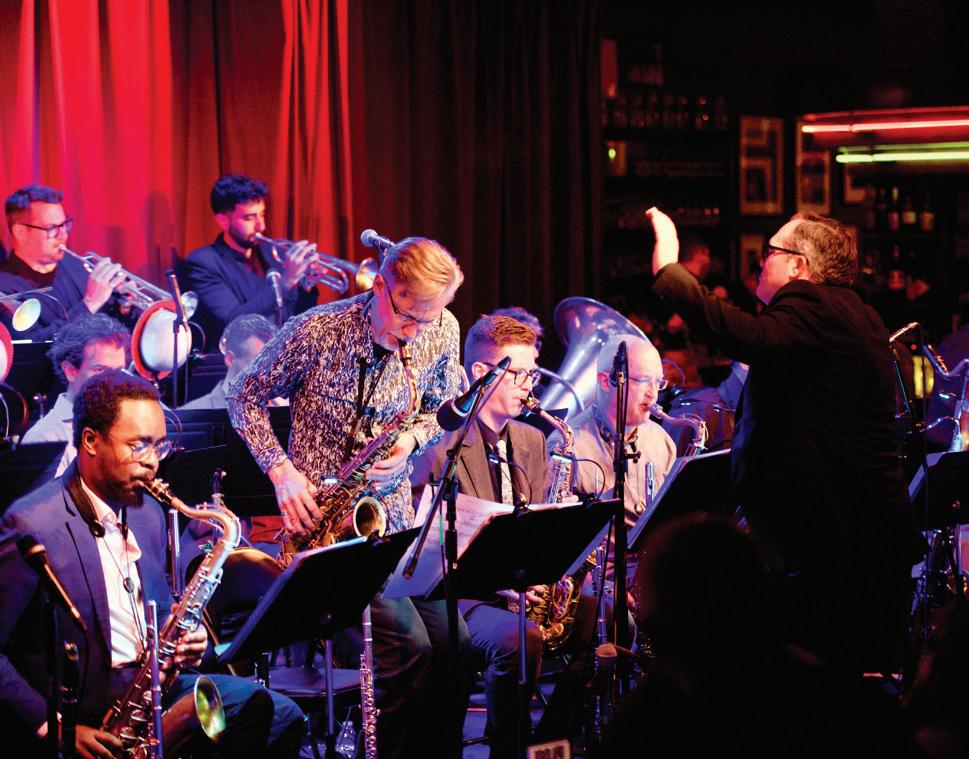
Sloane: A Jazz Singer (directed by Michael Lippert), a documentary released only a month after legendary jazz vocalist Carol Sloane passed away in January, will have a one-night-only NYC premiere on Jun. 21 as an official selection of the Manhattan Film Festival at Cinema Village. For more info visit sloanefilm.com.
New Orleans-based trumpeter/vocalist Kermit Ruffins and girlfriend, Harmonese Pleasant, have started a GoFundMe page to help with the expense of creating a wheelchair-accessible home after last year’s March 24th incident that resulted in Pleasant, pregnant at the time, being shot in their Tremé neighborhood by a stray bullet that also hit the couple’s unborn baby. Both thankfully survived and baby Blossom recently celebrated her first birthday but is still rehabilitating and may not be able to walk. For more info and to help support the couple and Blossom visit gofundme.com/f/help-us-raise-for-blossom-ruffins-medical-bills.
A GoFundMe campaign has also been set up to help the family of the late Karl Berger (his daughter/dancer Savia and wife/vocalist Ingrid Sertso), to ease the financial burden of funeral and medical expenses following his passing on Apr. 9 at the age of 88. Berger was one of jazz’ most significant vibraphonists to come out of the ’60s. In the early ’70s he co-founded Creative Music Studio (along with Sertso and Ornette Coleman), an organization that nurtured the careers of many and continues to this day under the leadership of percussionist and CMS Executive Director (and Director/CEO of Creative Music Foundation) Billy Martin. (See In Memoriam Special Feature tribute on pgs. 14-15). For more info visit gofundme.com/f/karl-bergers-legacy-support-for-his-family.
THE NEW YORK CITY JAZZ RECORD | June 2023 5
(JP)
M I K e S H u R R I S u T H e R L A n DC O H e n / J A Z Z e X P R e S S I O n S O R G
Jose Madera, Jr , Bobby Allende, Johnny Rodriguez @Rose Hall Gil evans Project @Birdland
B obby Sanabria has emerged as one of the world’s foremost advocates and purveyors of Afro-Caribbean music. He plays many roles, as drummer, percussionist, composer, arranger, bandleader, producer, educator, music historian, recording annotator, host of radio station WBGO’s “Latin Jazz Cruise” and co-artistic director of the Bronx Music Heritage Center. He’s an alumnus of the Latin bands of Mongo Santamaria, Tito Puente, Larry Harlow, Ray Barretto and Mario Bauzá, and a member of notable jazz ensembles M’Boom and the Joe Chambers Quintet; as well as a sideman on countless recordings that span genres. Recently, he took time out from his incredibly busy schedule to discuss his early life and current projects.
The New York City Jazz Record: You are a proud n uyorican and S.O.B (“son of the Bronx”), as you like to describe yourself. Could you talk about growing up in the borough, and what kind of music you heard and how it inspired you both culturally and musically?
Bobby Sanabria: Well, I’m a product of my environment, and I was lucky. I was born in 1957. Jazz was still in the mainstream. Afro-Cuban music, in terms of the mambo and cha cha cha cha and what eventually became known as salsa, was firing on all cylinders. They kind of became the lingua franca of n ew York City. And I was able to see great jazz artists on TV, on the Ed Sullivan Show —people like Count Basie and Duke e llington and Buddy Rich, Rahsaan Roland Kirk. I remember seeing Candido, not knowing that later I would become not only a colleague of his, but a good friend. Maestro Tito Puente as well, same thing—not knowing that I would eventually record and perform with him.

TNYCJR: What kind of music did you hear at home?
BS: My father had very eclectic tastes. Harry Belafonte, who just passed away—I remember distinctly hearing those live at Carnegie Hall albums from him. And he listened to Tito Puente, Tito Rodriguez, he listened to Mexican ranchera music. We listened to music from Spain. I heard Ahmad Jamal from my father. We listened to everything. That’s why I fell in love with Brazilian music. He brought home Sergio Mendes & Brazil 66 doing “Mas Que n ada”. I would play that over and over again.
We were lucky in n ew York City because we had these great radio stations. WBLS with Frankie Crocker and this moniker, “the Total Black e xperience in Sound,” which I totally believe in. It was so forward thinking at the time. He’d play James Brown and he’d play Gladys Knight and the Pips. But then he played Santana. He played something by the Fania All-Stars. On the rock station, W ne W, I’m listening to the Allman Brothers’ At Fillmore East , I’m listening again to Santana. That’s how I heard Bitches Brew for the first time. Allison Steele the n ightbird played it. Jonathan Schwartz loved Frank Sinatra and Tito Puente. After he
BOBBY SAnABRIA son of the bronx
BY RuSS MuSTO
played something by Procol Harum all of a sudden he announces, “And now the Count Basie of Latin music, Tito Puente.”
I grew up with that kind of ethos, which now I call the multiverse. I grew up in a time period when all these forms of music were kind of like on an equal plane, maybe not monetarily, but you would have a chance to hear them in n ew York City. You know, the rock drummers, the cat from Cream, Ginger Baker. All these people I saw on PBS too. I saw Don e llis on PBS. That freaked me out. A lot of people think that my whole driving force is Tito Puente, and he’s one of the driving forces, but the main one is Don e llis in terms of what I want to embrace musically as a bandleader. There are no boundaries. That’s why I decided in 2012 to rename the band Bobby Sanabria Multiverse Big Band, because I don’t want people to call us a Latin jazz band. n o, no, we’re far from that, because we embrace so many things musically. Latin Jazz, that’s part of it, but we embrace all these other things as well.
So, there are no musical boundaries. I got that from my father, I got that from Don e llis. I got that from my high school band director in Cardinal Hayes High School in the South Bronx, Mr. William Lyon.
TNYCJR: You formed your first band, Quarteto Aché, back in 1974 and it’s still going strong. n ow this year you’re celebrating the silver anniversary as leader of your multi-Grammy nominated big band.
BS: I remember when I formed this big band in 1998. I said, “Man, I wonder how this music would sound not with my students (at the Manhattan School of Music), but with professional musicians.” And the first gig we ever did was at the n uyorican Poets Cafe. A year later, we recorded at Birdland… Dave Rufo was the sound man at Birdland, so I go down there and he goes to me, “Listen, I’ve got a ProTools setup. I’ve been recording bands here. Just pay me five hundred bucks and I can record the band.” And we did. And that was our first Grammy nomination. But it was all serendipitous. I could have told him, “ n ah, it’s all right”; but we did it and…
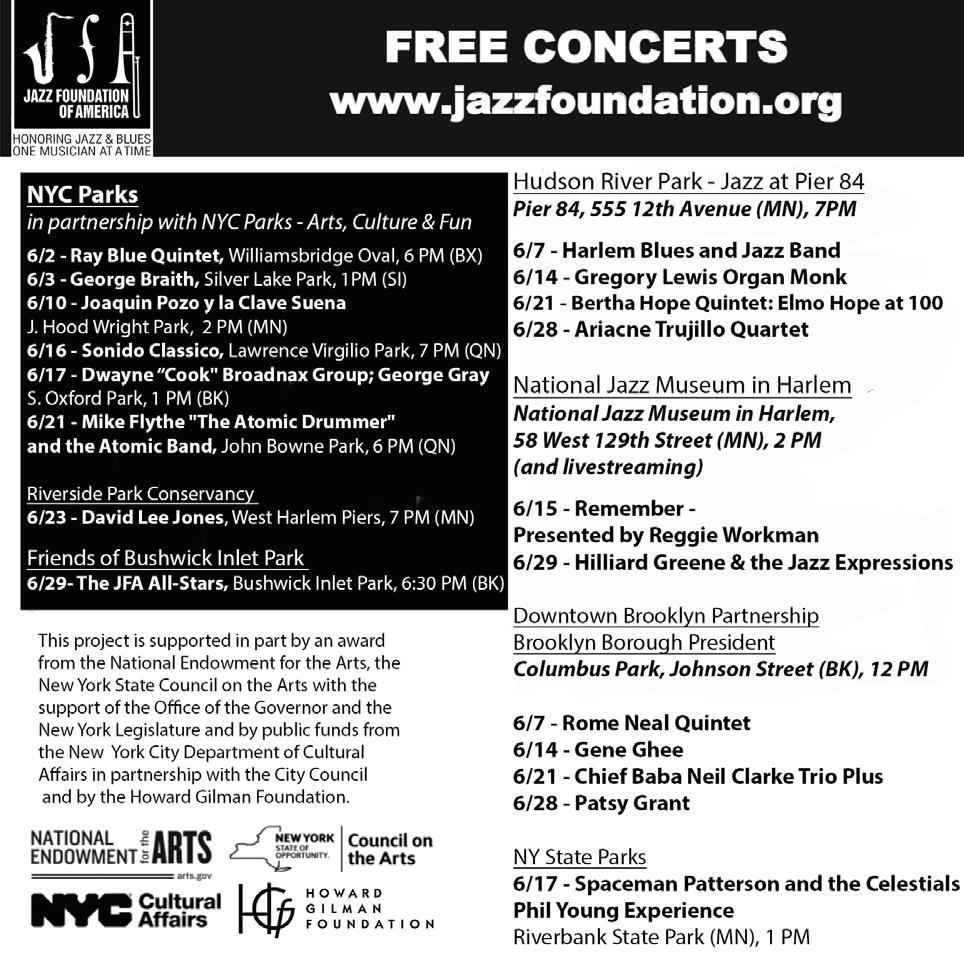
TNYCJR: The rest is history. The Grammy nominations kept on coming.
BS: We’re very proud of the West Side Story Reimagined recording. We lost the Grammy. We should have won it. I’ll be very honest. I’m not going to pull any punches: we should have won it. We got effectively robbed. That’s just a fact. But we got something even greater, which was the Jazz Journalists Association Album of the Year Award, which means more to me because the people who voted for us are knowledgeable jazz writers. So, it was a nice kind of a tradeoff. I’m very proud of the musicians, because we did that live, no jive, at Dizzy’s.
TNYCJR: That’s also where you recorded the band’s latest album, VOX HUMANA , with vocalists Janis Siegel, Antoinette Montague and Jennifer Jade Ledesna.
BS: These women inspire me so much with some of the things they come up with, because they’re true jazz singers. When we do this music it’s different every time. They’re always looking for things, coming up with new phrasing, etc. It’s very accessible [music], and the listeners are hopefully going to love it as much as we all did doing it.
(CONTINUED ON PAGE 41 )
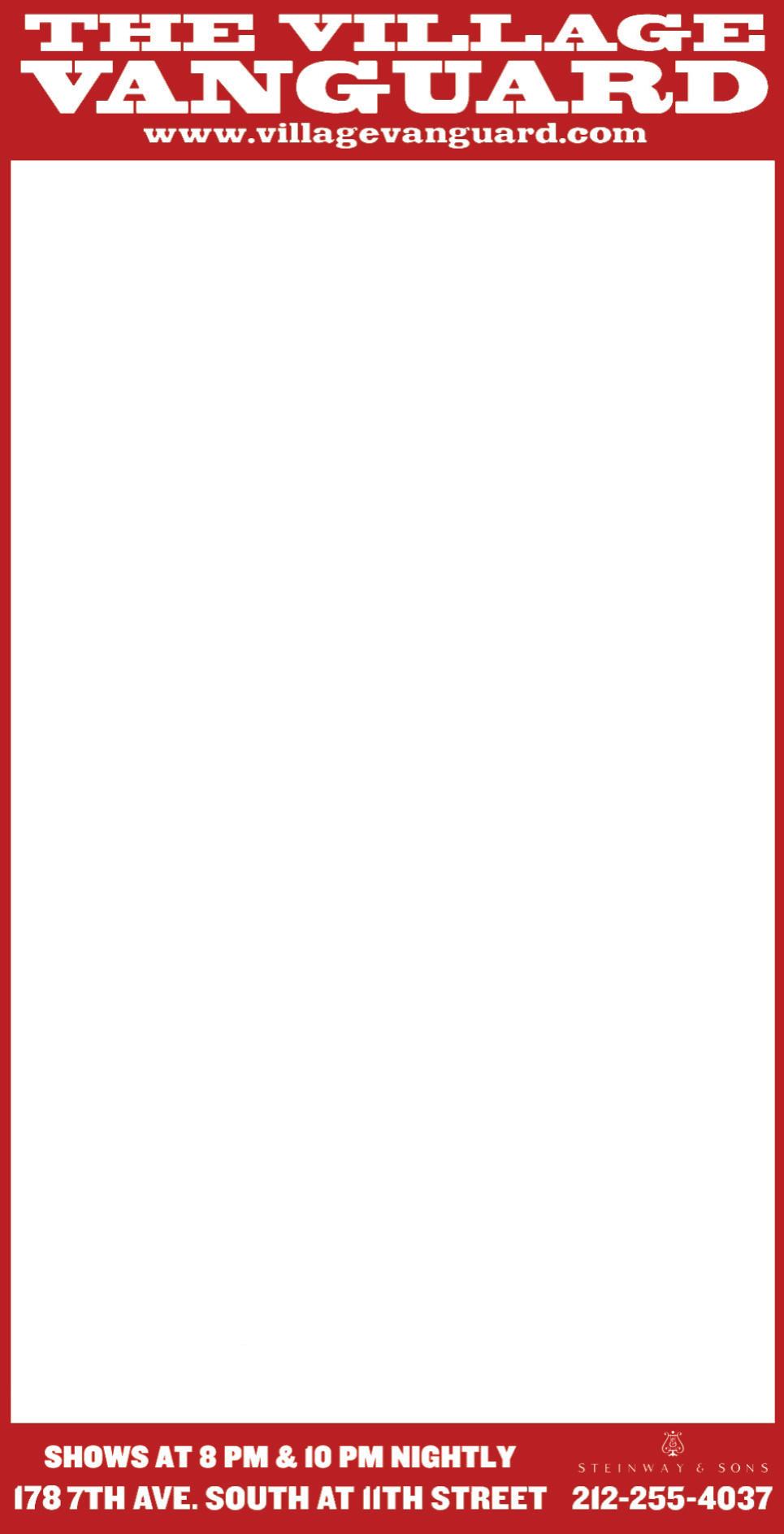
6 June 2023 | THE NEW YORK CITY JAZZ RECORD
J e R e M Y F L e T C H e R I n T e R V I e W
T he categories of Latin jazz and Afro-Cuban music are convenient fictions, a way to collect and identify a lot of great, important music. But they can also sadly limit listeners’ attention to and awareness of music that has roots in those traditions but expands out in unexpected, nontraditional directions.

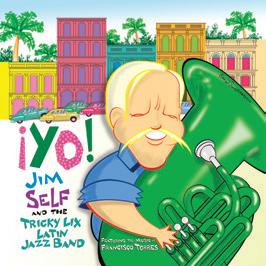
Take Cuban pianist Aruàn Ortiz, who has been a major figure in jazz since his arrival in America early this century. The clave is there in his playing, as he pointed out recently across a Zoom connection from e urope, where he was on tour with bassist Brad Jones and (alternately) drummers John Betsch and Jeff Ballard. But Ortiz is a true modernist; when he plays, it often becomes an opportunity to worry a succinct idea through myriad variations, or explore how many harmonic relationships he can develop out of simple material. That makes for a style of playing that is elegant, sinuous, capable of both introspection and energetic extroversion. An Ortiz solo can be a slender path like a river, or a triumphant arch, like a mountain.
“I work with the melody of rhythm a lot, like building rhythms I generated with lines, and then make them fit into an architecture of style,” Ortiz says. He also looks back to his country of origin: “Of course, coming from Cuba, I have a natural approach to rhythm… but not in the way of creating patterns,” he adds. That is (he explains), he does not create repeated sections as in AfroCuban music. Instead, it’s “the way to generate a kind of language…where everything is very liquid and it could disintegrate. The elasticity of rhythm for me is very fascinating, and how you could build layers of different micro-rhythmic cells.”
In a historical sense, this is classic modernism, reaching back to older ideas and using them in a new context, and when it comes to jazz and spontaneous music-making, these elements (many of which can be found in Medieval e uropean music) become new each time Ortiz builds something with them. “When you hear all of them, you hear one or two things happening, but it’s just like little cells that are one on top of another, and that is another approach to polyphony.”
Ortiz’ flexible and distinctive personal voice balances rhythm, melody and especially harmony, the foundation of his modernism. He learned the fundamentals from Charlie Banacos, a pianist and teacher with influential harmonic concepts that have become staples at leading jazz schools like Berklee College of Music, the n ew e ngland Conservatory, and the n ew School; however, he has developed them in his own way.
“My creative process,” he says, “let’s put it this way: I’ve started moving away from the tonal center, and then to organize intervals. It could be based on combinations of intervals, like pitch

ARuÀn ORTIZ
modernist from cuba BY Ge ORGe GReLLA
collections. So you have a group of pitches, three or four, and I find a relation with all intervallic organizations. Then I go as far as I can to try to move through a path, and organizing it allows me to go back to the center.”

He also credits pianist, composer and bandleader Muhal Richard Abrams and reed player Don Byron. The former showed him “compositional rhythm—how to combine harmony, rhythm, and melody at the same time.” From the latter, with whom he made the excellent duo recording Random Dances and (A)tonalities , he learned ways to integrate his harmonic studies with the range of jazz and jazz-related traditions that Byron brings to the table.
His discography as a leader includes Live in Zurich with Jones and drummer Chad Taylor, Inside Rhythmic Falls with drummer Andrew Cyrille—who Ortiz describes as “a poet of colors”—and percussionist Mauricio Herrera, and most recently, Serranías: Sketchbook for Piano Trio , with Jones and Betsch (all albums are on the Swiss Intakt label).
Ortiz has also been an invaluable member of other groups, especially saxophonist James Brandon Lewis’ Molecular Quartet, where he shows how powerful his playing can be, and also how comfortable he is playing with stacked harmonies, while always ready to choose freedom as the destination away from the center.

The pianist always plays with a sense of purpose and meaning: there’s intention behind each note. His concepts may organize how an individual piece of music works, but also seem to be fundamentally a way of expressing his own voice. “I’m not looking for consonance or dissonance,” he explains. “I’m looking for a release of tension. I’m looking for different parameters when I play and compose, like if you have emptiness and you can have activity, so you have something very fast, very slow.
“In a way, that creates an arc, a gesture. I work with a lot of gestures, and if I play something very atonal or dense, I tend to empty that. I create a sense that you’re going somewhere, that you’re moving in a sort of cycle. I always focus first on the design of it; here’s how I know that the pieces are moving in the clear way. All those parameters are always present when I play—that’s why I love to improvise and to create all those atmospheres in real time. I am able to challenge myself, to control myself and to listen to myself—to go through that, and just write that story.”
For more info visit aruan-ortiz.com. Ortiz is at 411 Kent’s “Shift” series Jun. 4, SEEDS Jun. 6, Dizzy’s Club Jun. 9-10 as part of Andrew Cyrille’s “Caribbean Cross-Generations” and DiMenna Center Jun. 29 with Ensemble Ipse. See Calendar.
Recommended Listening:


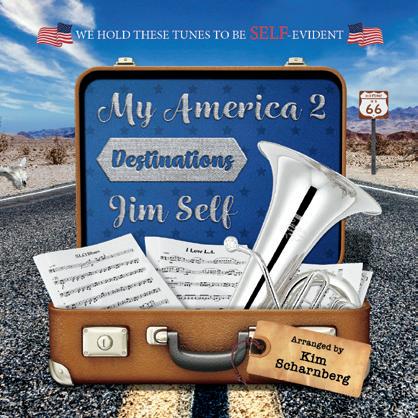
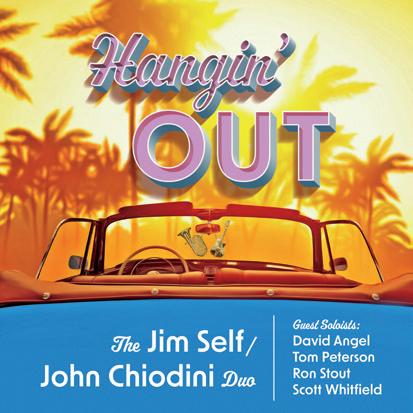
• Aruán Ortiz Trio— Vol. 1 (AYVA Music, 2003)

• Aruán Ortiz Quartet— Alameda (Fresh Sound n ew Talent, 2006)

• Aruán Ortiz— Cub(An)ism (Intakt, 2016)

• Aruán Ortiz (with Andrew Cyrille, Mauricio Herrera)— Inside Rhythmic Falls (Intakt, 2019)
• James Brandon Lewis Quartet— Molecular (Intakt, 2020)
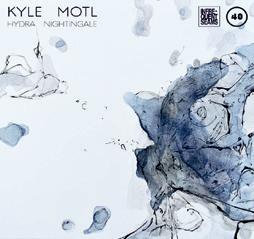
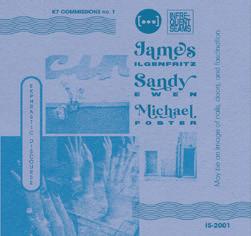
• Aruán Ortiz Trio— Serranías (Sketchbook For Piano Trio) (Intakt, 2022)
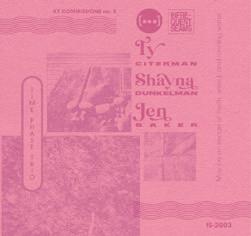
THE NEW YORK CITY JAZZ RECORD | June 2023 7
J I M M Y & D e n A K A T Z A R T I S T F e A T u R e Qubit Presents: Whitney Biennial Intervention Revisited Ekphrastic Discourse: James Ilgenf ritz + Sandy Ewen + Michael Foster + Sam Newsome Sara Schoenbeck + Josh Sinton + Giacomo Merega Anagram Ensemble: Katie Porter + James Ilgenf ritz + Eli Wallace Sara Bernstein + Stuart Popejoy duo Time Phase Trio (Ty Citerman + Jen Baker + Shayna Dunkelman) Alex Marcelo + J D Parran + Daniel Carter Anagram Ensemble: Andrew Drury + Thomas Buckner + Nicole Parks plays Aaron Jay Myers Wednesday June 7, 8pm Thursday June 8, 8pm Saturday June 10, 8pm My America 2 Jazzy American Songs Hangin’ Out 3rd Duo Jazz with John Chiodini ¡YO! Tuba in Latin Jazz Nonet InnerPlay Jazz Tuba and Strings Basset Hound Blues Jazz Quintet Jazz CDs from Hollywood Recording Artist Jim Self Other Jim Self CDs and music available at: www.jimself.com Floating in Winter Tuba/Guitar Duo with Jim Self and John Chiodini The Light Fantastic 2nd Duo Jazz with John Chiodini Out on the Coast 13 Piece Jazz Ensemble (triple CD) Produced by Jim Self N ew Release! N ew Release! e
LifetimeRebel JOËLLE LÉANDRE
by john sharpe
now 71, French bassist Joëlle Léandre (born September 12, 1951) is a consummate improviser who allies unrivalled facility with boundless imagination. Her early performances were in the field of new Music, especially focused on the works of John Cage and Giacinto Scelsi, who both composed pieces specifically for her. It wasn’t until she met the iconoclastic english guitarist Derek Bailey in new York in 1980 that her dedication to free improvisation really took flight. She has long since outgrown explicit influences, but they still inform her authoritative tone, incantatory phrasing, rich color palette and openness to theatricality and humor. Having performed on over 240 albums, and over the years, she has recorded with about everyone, from Anthony Braxton, George Lewis, William Parker, Marilyn Crispell, John Zorn and Steve Lacy, to a slew of up-andcoming talent. As such, she is a worthy recipient of the annual Vision Festival Lifetime Achievement Award, to be presented to her at Roulette this month.

As a woman from a working class background, operating in what is largely a male-dominated art form, Léandre’s journey has not been straightforward. She studied at the local conservatory in Aix-en-Provence before pursuing her education in Paris. Although she was still on the classical music career track, it was here that AfricanAmerican music first made its mark, firing up a lifelong passion and independence of spirit. “I was 19 years old. It was the American Center. I’m a child of free jazz. I was there to listen. Bill Dixon, Frank Wright, Rashied Ali, Anthony Braxton, Art ensemble of Chicago, Frank Lowe. When these men played, they gave me the sense of jubilation. The sense of freedom to effectively play your shit. I talk about Afro-American music. They create and invent for different reasons, political and other things. And this always was attractive.”
Although Léandre largely performed contemporary new music over the next decade, working with composers Pierre Boulez, Morton Feldman, Cage and Scelsi, she also rebelled against the straitjacket of playing other people’s scores and increasingly turned to improvisation. Her fearless approach manifested itself early on when a solo concert for London’s Actual Music festival in the late ‘70s unexpectedly became a duo with German bassist Peter Kowald. She grasped what proved a pivotal moment. “Kowald invited me to Wuppertal. If you play in Wuppertal, you play in Berlin. There’s a mafia. I was invited to play, (and) record with different musicians.” Such adventurousness has defined her career. She sets out her credo: “If tomorrow on the street a person goes to me, ‘Oh Madame Léandre, I know who you are, I have a project, we could have three or four gigs’, then I say ‘Yes!’ I was ready for this adventure, because life is just so risky. Many people have only one job, the same employer. I don’t have a day that’s like another day. never. So I’m a nomad. I’m a gypsy.”
It was on a year’s scholarship to new York that the significant turning point occurred: encountering Derek Bailey, who she credits as the spiritual father of european free improvisation, at one of his Company presentations. She recalls: “I went there, and I went to talk with Derek because that’s my character. He says ‘Oh, Joëlle, we have to play together. We have to try.’ You do your best and we go and we improvise. It was in 1980. We played all day and
drank tea, talking about Boulez, about free music, about lots of things.” She forged yet more connections when Bailey subsequently asked her to join another Company week a few months later with Bill Laswell, Zorn and others; the next year he called on her to play a trio with evan Parker for the BBC.
even though renowned as an improviser, Léandre is dismissive of the idea that what she plays is totally free. “Improvisation means something. We are not free. Free music means nothing for me. When you have an instrument in your hand, [you] are not free. When you improvise, it’s a selection. It’s a kind of continuous composition.” Certainly, listening to her play, the sense of form she conveys is striking. How could it be any other way? “I played new Music for ten years. You learn about a lot of things if you have an open mind. I learned about form, structure, music [from] a lot of different composers. When I improvise, I compose. Yes, to give a sense of repetition, organization, validation, themes. everything has a sense, an organization, in terms of memory, how you start, who you play with, instrumentation. The first sound and you’re on the train and you become responsible to the other ones around. That’s why for me improvisation equals first collective— it’s collective music. It’s instrumental music, and definitely for me it’s a chamber music.”
It was through Kowald that Léandre first met William Parker in Berlin. Duets, quartets and other collaborations ensued and she subsequently became close friends with Parker and his wife Patricia nicholson. The bassist was in new York in 1984 for the groundbreaking Sound unity Festival, the precursor to Vision Festival at which she has appeared some nine times since its inception in 1996. Consequently, in spite of a garlanded career, the Lifetime Achievement Award means a lot to her: “I’m so excited you cannot imagine. I play a lot in America. I go to America one or two times a year. I was so happy and so touched, because this really comes from the Afro-American community, not only, but mostly. And I play with them. They adopted me years ago.”
Léandre has consistently championed women’s place in improvised music. She was an important part of the european Women’s Improvising Group and in 1960 cofounded Les Diaboliques, a pioneering trio with Swiss pianist Irène Schweizer and Scottish vocalist Maggie nicols. She explains the rationale: “Why not? Women had to be there. We played more than 35 years together. It was the only woman band in europe. You can play in an apartment, but the live music, to have the gigs, to be on tour…nada. Of course it’s political. Women create the same, they invent the same, they do a lot the same, so why not play together? Because men forget to invite us.” Continuing that mission, the first of her dedicated four sets being presented at the Vision Festival will be the Tiger Trio. This project features Léandre with pianist Myra Melford and flutist nicole Mitchell, who met when the bassist was teaching at Mills College in California.
Mitchell describes the attraction: “Joëlle Léandre is a true hero in creative music as a trailblazing woman who has taken the music to great heights in europe and beyond for decades. As a musician’s musician, her fearlessness, unstoppable innovation and virtuosity shine
bright inspiration to countless listeners. She has created a seamless improvisational language that combines her heart for humanity, her humor and her sound in ways that will never be able to be imitated.”
She will also be playing in another trio at the Vision Festival, with longstanding partner, violist Mat Maneri, and pianist Craig Taborn. Over the course of 27 years, her association with Maneri has included the Stone Quartet and the Judson Trio, an intense cooperative unit (with drummer Gerald Cleaver) notable for its sparkling discourse. Léandre is characteristically effusive about Taborn: “I tell you, I could say he’s number one in a way, but never mind. He’s so good, so rich, and natural, and [such a] great improviser. You have to understand how I met Craig. More than 20 years ago we had a concert with Les Diaboliques in France in Touraine, a festival. We started first, and the second band was with Craig. And afterward he came to me and said, ‘We have to play together.’” now, finally, they have. This will be their second performance together following a date at the French Sons d’hiver festival in February 2022, which can be heard on the wonderful, just released hEARoes (RogueArt).
There’s also a performance at The Vision with acclaimed poet Fred Moten. Although this is the first time they have performed together, Léandre is very familiar with the format, working with dancers and poets. Does she play differently in these situations than when interacting with other musicians? “I listen to the texts, the word, the meaning. I can be with or against. I have my vocabulary as a bass player, of course, but the attention, the listening… You have to be careful because the verse, the text, has to be heard to be listened [to] by the audience also. You have to care for the balance, and in terms of volume.” For the finale she will debut a new composition showcasing an all-star cast of American improvisers. “I have less than two months to put together the score. It will be seven musicians on stage, my friends, me on bass, with Mat Maneri, Joe Morris, Fred Lonberg-Holm, Jason Kao Hwang, Ingrid Laubrock, Steve Swell. I will be busy—I arrive early. We have a day’s septet rehearsal!”
But whatever the lineup, Léandre’s passion is sure to shine through. “even at my age I keep this rage, and this is political. I have this fire, I don’t know where it comes from; it’s just me. I kept this utopia to change the world, because, of course, I’m a rebel. We have to change the world, and art can change the world.”
For more info visit joelle-leandre.com. Lèandre receives a Lifetime Achievement Award and performs at Roulette Jun. 13 as part of Vision Festival. See Calendar.
Recommended Listening:
• Joëlle Léandre—Taxi (Adda, 1981-82)
• Irène Schweizer/Joëlle Léandre—Cordial Gratin (FMP, 1986)
• John Cage/Joëlle Léandre—The Wonderful Widow of Eighteen Springs (Montaigne, 1995)
• Sylvie Courvoisier/Joëlle Léandre/Susie Ibarra— Passaggio (Intakt, 2001)
• Tiger Trio—Unleashed (RogueArt, 2016)
• Joëlle Léandre—Zürich Concert (Intakt, 2022)
8 June 2023 | THE NEW YORK CITY JAZZ RECORD O n T H e C O V e R
L u C I A n O R O S S e T T I © P H O C u S A G e n C Y
INTAKT RECORDS www.intaktrec.ch
ARUÁN ORTIZ TRIO WITH BRAD JONES & JOHN BETSCH
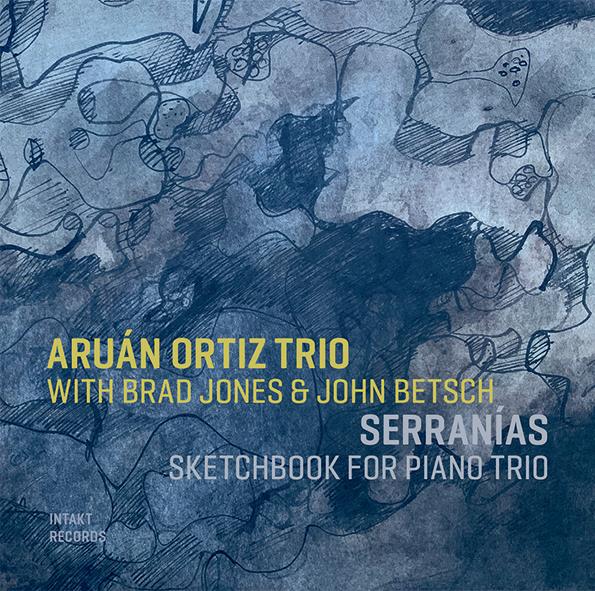
SERRANÍAS SKETCHBOOK FOR PIANO TRIO
Aruán Ortiz: Piano ∙ Brad Jones: Bass
John Betsch: Drums
ANDREW CYRILLE MUSIC DELIVERY / PERCUSSION
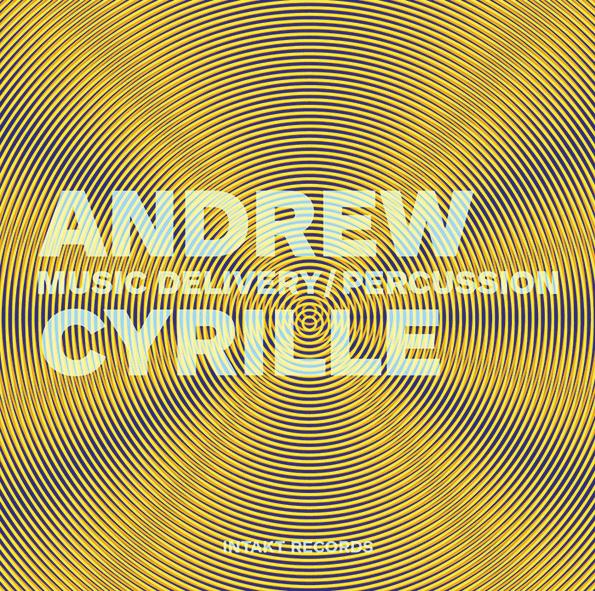
Andrew Cyrille: Drums, Percussion
JOËLLE LÉANDRE ZURICH CONCERT
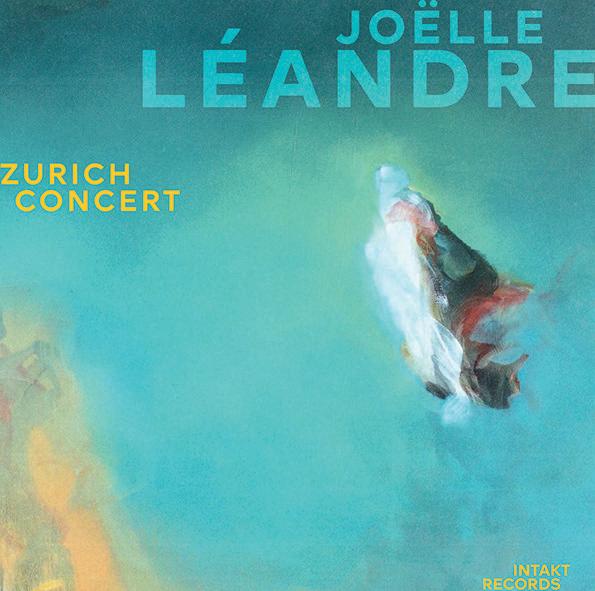
Joëlle Léandre: Bass
DAVID VIRELLES
WITH BEN STREET AND ERIC M c PHERSON CARTA
David Virelles: Piano ∙ Ben Street: Acoustic Bass

Eric McPherson: Drums, Percussion
TIM BERNE – HANK ROBERTS – AURORA NEALAND
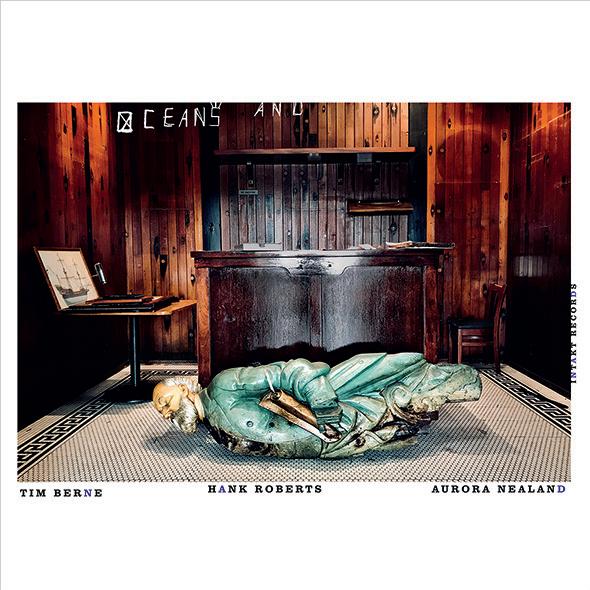
OCEANS AND
Tim Berne: Alto Saxophone ∙ Hank Roberts: Cello
Aurora Nealand: Accordion, Clarinet, Voice
STEMESEDER LILLINGER

UMBRA
Elias Stemeseder: Lautenwerk, Synth, Electronics, Una Corda
Christian Lillinger: Drums, Sampler, Synth
Peter Evans: Piccolo trumpet ∙ Russell Hall: Bass
DoYeon Kim: Gayageum ∙ Brandon Seabrook: Banjo, Guitar
ALEXANDER HAWKINS TRIO WITH NEIL CHARLES AND STEPHEN DAVIS CARNIVAL CELESTIAL

Neil Charles: Double Bass, Perc. ∙ Stephen Davis: Drums, Perc.
Alexander Hawkins: Piano, Synthesizer, Sampler, Percussion
MICHAEL FORMANEK ELUSION QUARTET AS THINGS DO
Michael Formanek: Double Bass ∙ Kris Davis: Piano
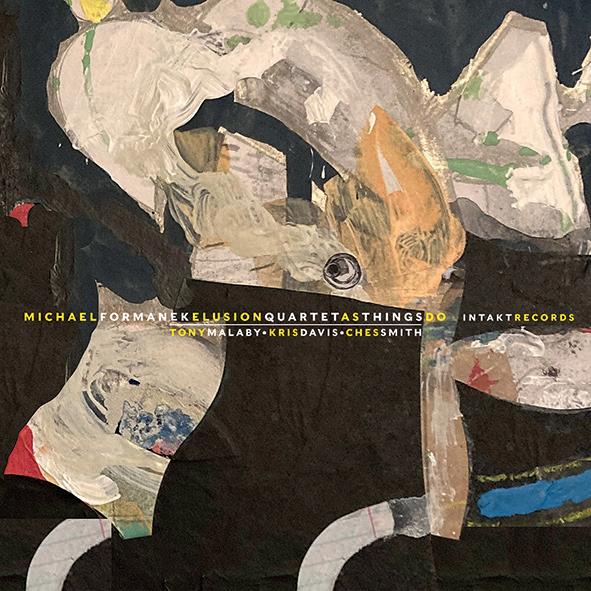
Tony Malaby: Tenor and Soprano Saxophones
Ches Smith: Drums and Vibes
CHRIS SPEED TRIO DESPITE OBSTACLES

Chris Speed: Tenor Saxophone, Clarinet
Chris Tordini: Acoustic Bass ∙ Dave King: Drums
DISTRIBUTED BY: VIRTUAL LABEL GROUP AVAILABLE IN NYC: DOWNTOWN MUSIC GALLERY DIGITAL DOWNLOADS: intaktrec.bandcamp.com
Intakt CD 399
Intakt CD 398
Intakt CD 405
Intakt CD 385 Intakt CD 392
Intakt CD 402 Intakt CD 403 Intakt CD 394 Coming in June
Intakt CD 404 Coming in June
NYCJR_FP_Jun2023.indd 1 16.05.23 16:06
ALA n SKIDMOR e trane to skid
BY FRA n C e SCO MARTI ne LLI
Alan Skidmore’s explosive saxophone solo on “The Saxophone Song”, from english singer/songwriter Kate Bush’s first album in 1978, might well be his major exposure to the great public, but Skid—as he is affectionately called—has touched on an amazing number of other bases in his career, always maintaining his own musical personality. “The journey is never ending. I am still learning to play the saxophone,” he wrote. It could be Coltrane speaking, and in fact this great American saxophonist’s thirst for discovery was a major inspiration for his British colleague.
Son of Jimmy Skidmore, one of the first major tenor saxophonists in the uK, whose nuanced and elegant style helped jazz win a major audience in england, young Alan at first showed little interest in playing the saxophone; once he did, he developed a style that was the diametric opposite of his father’s. But now Skid cites him, after Coltrane, Dexter Gordon and Paul Gonsalves, as among his major inspirations. “When I’d first got the tenor out, I made the most dreadful racket you can imagine. So he locked me in the bedroom and said: ‘You wanna play the tenor saxophone? Well, you’ve gotta play long notes.’ And he was right.”
The now-octogenarian was born in London in 1942, and at 16 he was already a pro. “In 1960, I was working a summer season in Redcar,” he recalled. “And while walking past a record shop I noticed an album in the window called Giant Steps by John Coltrane. I bought it and it blew me away! Then, on my 21st birthday, someone bought me an album called Coltrane—Live! at the Village Vanguard featuring a piece called ‘Chasin’ the Trane’ and this changed my life forever.” In 1961, his father brought him to see Coltrane live, and in 1963 he played in two key British blues bands: Alexis Korner’s Blues Incorporated and John Mayall’s Blues Breakers. Korner’s band was hip enough to play Mingus themes, with Skid soloing on “Oh Lord Don’t Let Them Drop That Atomic Bomb on Me”, and he riffed the blues like the best of them in the weird and wonderful last recording by Sonny Boy Williamson II with Brian Auger, Jimmy Page and Joe Harriott. “My real
B u DDY TAT e his sax still blows
BY e LLIOTT SIMO n
T he saxophone’s archetypal status in jazz is largely due to what Cannonball Adderley termed the “moan within the tone” popularized by “Texas tenors” Herschel “Tex” e vans, Illinois Jacquet, Arnett Cobb and Charles Holmes “Buddy” Tate. Tate could swing with anyone, but his unique way with blues, bop and ballads combined the influences of Coleman Hawkins and Lester “Pres” Young into his own Texas sound. He played with a hard edge, superb phrasing and a tone that emerged from deep within the saxophone, shunning vibrato for power and clarity.

Born in Sherman, TX on February 22, 1913, Tate began playing alto at eleven and was soon tapped by
musical education came from a good few years on the road and recording with Alexis Korner’s Blues Incorporated— the ‘Alexis Academy’,” said Skid. “I also recorded with John Mayall’s Blues Breakers along with eric Clapton. I have always considered this to be my ‘university’, a priceless experience, because if you can’t play the blues you will never be able to think about playing jazz. You can teach all the techniques and mechanics of playing, but to play the blues you have to have feeling that comes from within.” Later he discovered that Coltrane had gone through a similar schooling and that his opening salvo on John Mayall’s “Have You Heard” inspired a teenaged Michael Brecker to take up the saxophone. “When Brecker told me, I didn’t know what to say. I was gobsmacked. But it’s true.”

Another reedman taught him a lesson: “I once picked up Roland Kirk from his hotel in London’s Soho and drove him and all his saxophones to the Berg Larsen factory in Potters Bar; he needed to check some mouthpieces out. I happened to mention that I was looking for a different mouthpiece. It was quite a shock when he started to feel and grope around my lips and mouth and then said: ‘the mouthpiece for you is the Berg Larsen ebonite tenor mouthpiece 130/00m with a Rico 5 reed.’ This is a very big hard setup—but it gave me the sound I wanted. Roland was absolutely right.”
In 1965, Skid was playing with the BBC Radio Big Band during the day and at dances in the evening because he had a mortgage and a family to support; but the BBC job fell through, oddly enough for a radio band, because they wanted him to cut his hair. Work with Ronnie Scott’s quartet proved essential to survive and to grow, as demonstrated by a live BBC recording with Scott, Gordon Beck and Jeff Clyne; later, at the sessions at Ronnie’s Old Place, he rebonded with John Surman, Mike Osborne and Kenny Wheeler. In 1969, his quintet with Wheeler, John Taylor and Tony Oxley won the jazz competition of the Montreux Festival, giving him more recognition at home and wider european fame as well. Skid became a flexible and creative voice in several key jazz orchestras of the British scene, led by Surman, Chris McGregor, Colin Towns, Stan Tracey, Mike Gibbs, elton Dean; he also led his own groups, usually in a quartet format and often paying tribute to Coltrane by playing some of his most difficult pieces including “Selflessness” and “Ascension”.
On the european scene, SOS, a short-lived saxophone trio with Surman and Osborne (born out of a quintet with three saxes, drum and bass), was hugely influential. Surman’s electronics and Skidmore’s drumming—drums are his second favorite instrument—
enlarged the band’s palette. Skid’s drumming can be heard on “Wherever I Am”, from the eponymous SOS album on Ogun (1975). Its immediate successor was the european Jazz ensemble, founded in 1976 with Leszek Zadlo, Gerd Dudek, Ali Haurand and Pierre Courbois, a band that saw the participation of virtually all the luminaries of european jazz, including Jiri Stivin, ernst-Ludwig Petrowsky, Manfred Schoof, Tony Oxley, Charlie Mariano and Tony Levin. This group became an intermittent but long-lived collaboration that celebrated its 30th year in 2016.
Skid realized a dream by playing with elvin Jones’ Jazz Machine in 1988. In the ’90s he worked with the South African percussion band Amampondo—Xhosa musicians from Cape Town—when his group was selected as the first to tour South Africa after the fall of the apartheid regime; they recorded two excellent albums, The Call (1999) and Ubizo (2003). In 2006, Skidmore was nominated by the Jazz Journalists Association Awards (for the reissue of his Once Upon A Time 1969 album on Deram), with a ceremony at B. B. King’s Blues Club & Grill which he attended. His last appearance in new York, though, was over a decade ago at the Iridium jazz club, playing in drummer Charlie Watts’ big band on June 29, 2012.
Last month, u.K.’s Confront Recordings issued A Supreme Love: a 46-track, six-CD retrospective of Skidmore’s career, extracted from his vast private archive. The material covers his entire legacy, ranging from 1961, his debut alongside his father, through historical recordings of his seminal 1969 quintet, SOS and the european bands, to his only rendition of Coltrane’s “Psalm” from A Love Supreme, from 2019. It is a stunning monument to his creativity and endurance.
For more info visit alanskidmore.info
Recommended Listening:
• Alan Skidmore—A Supreme Love (Confront, 1961-2019)
• Alan Skidmore Quintet—Once Upon A Time… (Deram, 1969)
• S.O.S. (John Surman/Alan Skidmore/Mike Osborne) Looking For The Next One (Cuneiform, 1974-75)
• elton Dean, Alan Skidmore, Chris Laurence, John Marshall—El Skid (Vinyl, 1977)
• S.O.H. (Alan Skidmore/Tony Oxley/Ali Haurand)— Live in London (Jazzwerkstatt, 1983)
• Alan Skidmore Quartet— Tribute to ‘Trane (Miles Music, 1988)
his cousin Roy McCloud for the n ight Owls. In 1930, he joined Andy Kirk’s Clouds of Joy (switching to tenor), which introduced him to the Kansas City style. Count Basie’s band, in which Young’s sophisticated coolness contrasted with e vans’ Texas tenor, would shortly popularize the KC style more widely. In 1935, Tate moved to Omaha, ne with the n at Towles Orchestra, and in 1939, following e vans’ passing, he joined Basie as the featured soloist alongside Young.
Tate’s first recordings with Basie that year were for Vocalion. On “Rock-A-Bye Basie”, Young’s melodicism takes over, but “Taxi War Dance” shows Tate as a poised player. Some months later, their twin tenors are central to “Blues” (Okeh, 1940) and “Tickle Toe” (Columbia, 1940), while “Super Chief” (Okeh, 1940) is Tate/Young magic. “Stampede in G-Minor” (Okeh, 1941) showcases Tate’s powerful flow, as he overshadows Paul Bascomb (sitting in for Pres). During Tate’s decade with Basie, his side projects best reveal his breadth. e xamples are a nascent R&B/rock and roll solo on trumpeter Karl George Octet’s “Peek-A-Boo” (Melodisc, 1945) that complements trombonist J.J. Johnson and his first sessions as a leader with the Buddy Tate Orchestra for
the Grey Gull Records subsidiary Supreme (1947).
By 1949, Tate had left Basie, settled in n YC and developed a fruitful relationship with pianist Skip Hall. Check out Swinging Like Tate (Felsted, 1958) for an example of their stellar work together. A top session musician, he appeared with trumpeter Buck Clayton, vocalist Jimmy Rushing and many others. Beginning in 1953, Tate’s Celebrity All Stars became a fixture for over 20 years at the Celebrity Club on Madison and 125th Street. Several ’70s releases with organist Milt Buckner ( Midnight Slows , Black & Blue) are a mustlisten, enveloping his smoky horn in a sexy atmosphere. A meeting with Abdullah Ibrahim ( Buddy Tate Meets Dollar Brand , Chiaroscuro Records, 1977) resulted in an interesting conversation in which Tate deftly fields the pianist’s post-bop phrasing; it works in part due to the welcoming backdrop set up by Cecil McBee (bass) and Roy Brooks (drums).
In the ’80s, Tate toured extensively in e urope as a soloist and with Jacquet and Cobb as the “Texas Tenors”. Recently released, Tate’s Delight (Storyville) documents a fun session in Denmark from 1982 on which Tate
(CONTINUED ON PAGE 41 )
10 June 2023 | THE NEW YORK CITY JAZZ RECORD
e n C O R e
L e S T W e F O R G e T
MARK WAST e LL HA n K O’ ne AL
FLYI n G D u TCHMA n
flies again
BY MIK e COBB
By the time he founded Flying Dutchman Records in 1969, producer and songwriter Bob Thiele already had a legendary career. As an A&R representative, he had signed pop stars Buddy Holly and Jackie Wilson and worked with ella Fitzgerald, Bing Crosby and Quincy Jones. From 1961 to 1969, Thiele was the head of Impulse! Records, where he worked with John Coltrane on masterpieces such as A Love Supreme and Ascension He also recorded Charles Mingus, Duke ellington, Sonny Rollins, Archie Shepp, Albert Ayler, et al. He even wrote (with co-writer George David Weiss) “What a Wonderful World”, a smash hit for Louis Armstrong.
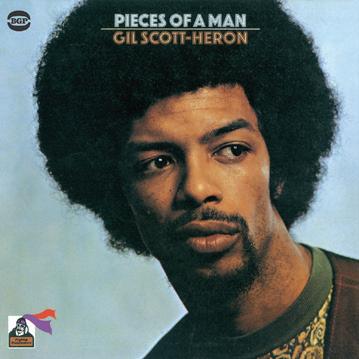
After eight years at Impulse!, Thiele felt the need to expand his vision. His credibility solidified by his work as Coltrane’s producer, Thiele was able to connect with the counterculture and Black Power movement of the late ’60s. His concept was to give voice to the sounds of revolution happening in music and society as well as to acknowledge jazz legends.
Flying Dutchman featured legendary icons Armstrong, Basie, ellington and earl “Fatha” Hines, as well as progressive jazz musicians such as Ornette Coleman, George Russell, Larry Coryell, Horace Tapscott and the John Carter/Bobby Bradford Quartet. It also released political speeches and audio journalism by Angela Davis and championed the early works of social revolutionary musician Gil Scott-Heron. Despite its independent status and lack of funding, Flying

VOC e S LATI n AS
BY S u ZA
nne LORG
e
Bandleader/drummer Bobby Sanabria usually uses vocals on his recordings with Multiverse, his Grammynominated Afro-Cuban big band. He’ll sing himself, and the band will provide backup, and sometimes he’ll invite a star singer like Charenée Wade to front the group. On his new release VOX HUMANA (Jazzheads), Sanabria continues building on his interest in arranging for voices. The album’s 13 tracks, with the big band, spotlight three jazz singers—Janis Siegel, Antoinette Montague, Jennifer Jade Ledesna—each of whom (like Sanabria) arose from new York’s multi-cultural musical scene.
Recorded live at Dizzy’s Club last June, the record captures not only the band’s relentless exuberance, but the singers’ diverse personalities. Spanish-speaking Ledesna settles naturally into the joyous lilt of the Puerto Rican classic, “Capullito De Aleli”; Montague punches all the blue notes just so as she delivers Jazzheads owner and songwriter Randy Klein’s lyrics on “Who Taught You That”; and Siegel marries bop idioms with Latin drive in a fiery scat solo on the ’60s hit “Spooky”. Sanabria also commingles the sounds of all three singers, first in individual solos and then in closely harmonized trio singing on “Do It Again”—an exciting re-contextualization
Dutchman always invested in quality and detail: glossy gatefolds, attractive photographs and high-fidelity recordings made at top-notch studios. Though the spirit of revolution had faded by the mid ’70s, pianist/ keyboardist Lonnie Liston Smith had a worldwide hit in 1975 with his cosmic jazz explorations on his album Expansions , which—along with the success of Argentinean tenor saxophonist Gato Barbieri who recorded over a half dozen albums for the label—created a second chapter for Flying Dutchman.
Carrying on the tradition by reviving the label with new releases, Thiele’s son, Bob Thiele Jr., speaks of his father’s efforts and struggles. “Viewing our world through the lens of COVID, #BlackLivesMatter and systemic racism, I fully grasp the obstacles that he faced. His accomplishments were many, but they came at a cost to his personal and professional life. As a businessman, he was not a success. But following the courage of his convictions, crossing racial lines, risking financial bankruptcy more than once, my father never backed down. I feel compelled to bring Flying Dutchman back into the fray so it may once again be a part of the voice of this generation,” he says.
Flying Dutchman recently released influential soul singer Billy Valentine’s latest album, Billy Valentine & The Universal Truth , which marks the official return of Flying Dutchman and includes protest songs by Curtis Mayfield, Stevie Wonder, eddie Kendricks, War, Prince, ScottHeron and Leon Thomas. The new release (the vocalist accompanied by modern jazz luminaries including Pino Palladino, Jeff Parker and Immanuel Wilkins) is a comeback story for both Valentine and the label.
As a teenage singer, Valentine was discovered at a cocktail lounge in new Jersey, opening for Roberta Flack
and Donny Hathaway (who were enroute to and from The Apollo) and toured in the original road cast of The Wiz . His group The Valentine Brothers scored minor hits with “Money’s Too Tight (To Mention)”, a cult hit in the u.K., and the classic “Lonely nights”.
Linking up with Thiele Jr. and singer-songwriter Phil Roy in the late ’80s, Valentine tried his hand at songwriting. His compositions were recorded by Ray Charles, The neville Brothers, and Pops and Mavis Staples. Valentine’s voice also appeared as part of the soundtracks for the TV shows Boston Legal and Sons of Anarchy and in “Legit” by rapper nas and “nobody else” by Axwell, which drew on influences from the u.K. dance scene. About Valentine, Thiele Jr. says, “It was Billy’s voice that sold our songs. Billy would become the secret weapon of nearly every songwriter in L.A. His vocal performances on demos made their songs (and ours) irresistible to Bonnie Raitt, Joe Cocker, Bette Midler and countless others. And yet, no one outside of the privileged few knew who Billy Valentine was.”
Having witnessed the civil rights protests through the Deep South in the united States, the Kent State university shootings in 1970, and the Vietnam War’s devastating effects on veterans, Valentine has always been drawn to message music. “The music on my album speaks to me,” Valentine says. “I think this is the most important music that I’ve done yet in my life.” About working with Bob Thiele Jr., Valentine adds, “Bob and I have been friends for close to 40 years as songwriters. He came to me during the pandemic and said he was thinking of relaunching his father’s label with me as the first artist, which completely bowled me over.”

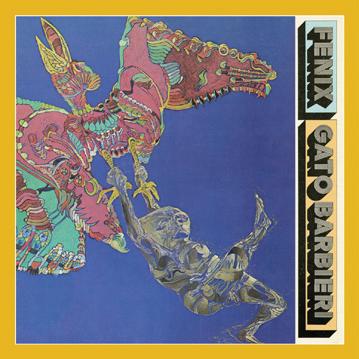
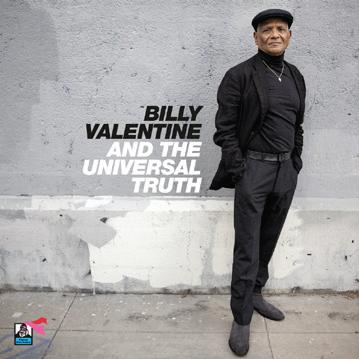
(CONTINUED ON PAGE 41 )
of one of Steely Dan’s most popular tunes. Sanabria, Siegel, Montague and Ledesna will appear with the Multiverse Big Band in two free concerts this month (Jun. 4 at Hostos Center, and Jun. 24 at Bay Plaza Mall Auditorium). A side note: Siegel also sings with Manhattan Transfer at Sony Hall as part of the Blue note Jazz Festival (Jun. 9).
Guggenheim Fellow and SFJAZZ Collective member Edward Simon’s new album, Femeninas: Songs of Latin American Women (ArtistShare), brings us a step closer to gender equity by honoring the Latina composers who have contributed to the Latin American Songbook. The record represents a wealth of tunes by women songwriters from across South/Central America and the Caribbean— including Violeta Parra (Chile), Marta Valdés (Cuba), Chabuca Granda (Perú), elizabeth Morris (Chile), Rosa Passos (Brazil), Georgina Hassan (Argentina) and Joyce Moreno (Brazil). Mexican vocalist Magos Herrera adds a liquid, understated emotionality to these classic pieces and to Simon’s three-movement piece, “Latino Soy” (“naked Sky”, “Mujer Remolino”, and “Bulería”)—the Venezuelan pianist’s sole contribution to the record as a composer, and a superb example of his fresh, modern writing. The album drops on Jun. 8 and, the following week, Simon launches the project at Dizzy’s Club (Jun. 13).
Last year, Cuban singer Aymée Nuviola won a Latin Grammy for Live in Marciac (5Passion), a duo with pianist Gonzalo Rubalcaba recorded at the summer jazz festival in that small French village. On the record, nuviola’s laid-back vocals steal into the ear like a warm breeze, conjuring visions
of sun-dappled countryside and halcyon skies. Contrast this with Havana Nocturne (Worldwide), the singer’s newest release, a quintet studio recording awash in the sounds and feel of Havana nightlife. Here the singer taps into the Cuban filin, a style blending “vocal jazz, Debussy’s impressionism and the tradition of the Cuban son and bolero,” according to the liner notes. Both sides of nuviola’s musical persona deserve attention via these recordings, which are now available through multiple distribution channels.
new York-based jazz vocalist Mary Foster Conklin has long promoted the work of female jazz composers, both through her recordings and as host of the Sunday radio show A Broad Spectrum: The Ladies of Jazz. This past February, she released her fifth album, These Precious Days (Mock Turtle), an eclectic collection of popular and jazz tunes penned primarily by women. She’ll introduce the album live at Mezzrow (Jun. 18).
Addenda: Singer Ben Cassara, who produces a vocal jazz series at north Square Lounge and Pangea, one of Conklin’s regular rooms, presents his second self-produced album, What a Way to Go!, at the latter club (Jun. 7). Sergio Mendes graces the Blue note Jazz Fest at Sony Hall (Jun. 23-24). And the 12th Annual Sarah Vaughan International Jazz Vocal Competition is officially open for submissions: jazz singers from the world over can apply via the nJPAC website. (Last year’s winner, Lucía Gutiérrez Rebolloso, hails from Veracruz, Mexico, where she developed her winning vocal style by singing son jarocho, a local hybrid of Spanish, African and indigenous Mexican music.)
THE NEW YORK CITY JAZZ RECORD | June 2023 11
V O X n e W S L A B e L S P O T L I G H T
John Carter & Bobby Bradford Quartet Flight for Four Billy Valentine
And The Universal Truth
Pieces
A
Gato Barbieri Fenix
Of
Man
Gil-Scott Heron Bernard “Pretty” Purdie
Soul Is… Pretty Purdie
2023 AM e RICA n PIA n ISTS AWARDS
BY S u ZA nne LORG e
u LRICHSB e RG KAL e IDOPHO n
BY JOH n SHARP e
LO n G PLAY F e STIVAL
BY TOM GR een LA n D
O n the second evening of this year’s American Pianists Association (APA) jazz competition in Indianapolis, contender Isaiah J. Thompson announced his final piece from the stage, even though it wasn’t listed in the program. “I’ll play one more, if that’s alright,” the 25-year-old said, as he introduced “Thank You, Betsy”, from his latest album, The Power of the Spirit (Blue e ngine). Betsy, he explained, was the black Volvo that had gotten him to and from rehearsals, school and gigs, during his formative years as a young musician. The audience laughed, and Thompson settled into the skittering riff that opened the ever-so-gently swinging original.
e xpressions of gratitude were frequent among the five pianists competing for the APA’s Cole Porter Jazz Fellowship (Apr. 20-22): Thompson, Caelan Cardello, e steban Castro, Paul Cornish and Thomas Linger. n ot surprisingly, given the near-Olympian effort it takes to launch a world-class jazz career, the finalists had many people to thank. By the time these young players had reached the APA’s finalists circle, they had spent most of their lives training in private study and specialized after-school music programs, at choice universities or conservatories and under the tutelage of jazz celebrity mentors. The achievement of the Cole Porter Fellowship would give their music careers an additional boost: a substantial cash prize, a one-album deal with Mack Avenue Records, professional marketing and promotion and a two-year artist’s residency at the u niversity of Indianapolis. According to the APA, the Fellowship is worth upwards of $200,000 all told.

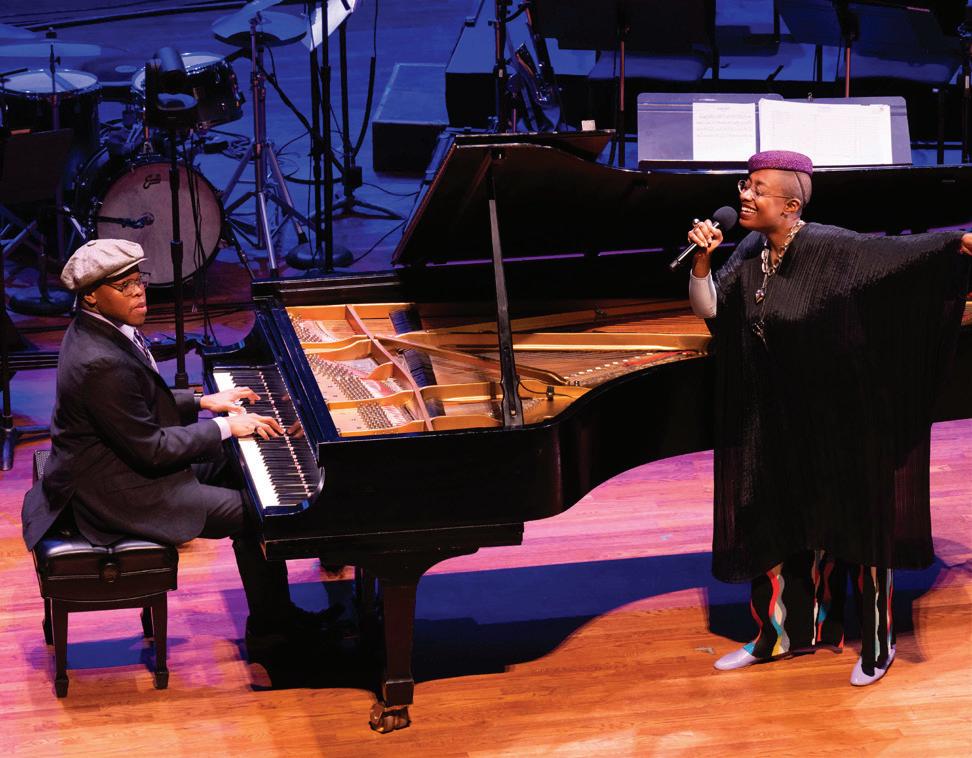
The evening after Thompson played “Thank You, Betsy”, the judges awarded him the Fellowship. With this triumph, he joins previous winners Sullivan Fortner, e mmet Cohen, Aaron Diehl, Adam Birnbaum and Dan Tepfer—all of whom went on to establish important careers.
Whatever rigorous path brought this year’s finalists to Indianapolis, however, the vetting process for the Fellowship is equally as demanding: it takes more than a year and involves the careful navigation of a series of challenges. First, interested pianists must receive a nomination from an established performing artist, educator or industry professional. Those who make the cut must then successfully compete in two rounds of juried auditions, one recorded and one live. The five finalists must also complete a teaching residency at an area school and concertize at a local
(CONTINUED ON PAGE 40 )
n estling in the rolling hills of u pper Austria, the JazzAtelier in u lrichsberg has hosted the annual Kaleidophon ever since 1986. n ot bad for a festival that gazes determinedly toward the left field. For its 37th edition (Apr. 28-30), director Alois Fischer assembled a mouthwatering bill, leading to a sold-out event. This made a fitting swansong for Fischer, who will step back after this year, passing on the reins to younger hands. While the poster and photograph exhibition celebrating fifty years of the JazzAtelier, displayed upstairs in the barn-like venue, revealed the festival’s early dedication to American free jazz, over time the line-ups have also incorporated improv, and most recently, contemporary composition. Some of this was featured over a wonderful three days.

e ven among the headliners, the trio of pianist Sylvie Courvoisier, bassist Drew Gress and drummer Kenny Wollesen stood out. A unit for some ten years, the band exhibits an uncanny chemistry. They remain simultaneously tight yet loose, navigating melodic fragments in unlikely places, delivering explosive flurries and making abrupt detours. Although it’s a repertoire they have toured for several years, they continue to uncover new facets, finding thrilling opportunities for group interplay and unexpected pockets for individual expression. Gress frequently demonstrated why he is in such demand, as he combined a finely honed lyric sense with impeccable timing, while Wollesen embellished and implied the beat as much as playing it. Courvoisier shifted seamlessly between keys and interior preparations, as volatile as her compositions, ever ready to unleash forearms and backs of hands when the moment required it, in a set that was variously combustible, solemn and vivacious, sometimes within the space of a single number.
Last Dream of Morning, the poetically monikered cooperative British trio of saxophonist John Butcher, bassist John e dwards and drummer Mark Sanders, is built on similarly durable foundations. The collective experience they have amassed in various permutations served them well, as evidenced by a hair-trigger responsiveness and a trust that whatever happens will lead somewhere worthwhile. Their energy and passion, allied to mastery of tone, timbre and tension, blurred the distinction between free jazz and improv, in a flow which might suddenly accelerate from a spellbinding textural exchange into bristling forward motion. e dwards astounded with the sheer physicality of his snapping strings, flying bows and tensile fingering.
(CONTINUED ON PAGE 41 )
T he Long Play Festival (May 5-7), now in its second year, is the latest in a series of “new music” marathon concerts (begun as a concept in 1987) curated by Bang on a Can (BoaC) founders Michael Gordon, David Lang and Julia Wolfe. Big (56 acts, 10 venues) and Brooklyn-based, it furthers BoaC’s mission to exhibit artists who exemplify the 3 R’s: radicalism, rebellion and revolution. As such, scheduled acts are predictably unpredictable: you never know what you’ll get, but it’s sure to grab your attention.
e vent times were generally slated in halfhour increments, so it was possible to catch bits and bites of many different shows, though certain time slots obliged a choice. While your industrious correspondent couldn’t be everywhere at once, he did manage to get an ear-/eyeful of more than half the shows.
On opening night (May 5), avant icon Meredith Monk proved to supportive fans at Red Hook’s Pioneer Works that eighty trips round the sun haven’t slowed her orbital momentum. Resplendent in red silk tailcoat and jodhpurs, her movements lithe as a teenager’s, voice vibrant, she guided vocalists Theo Bleckmann, Katie Geissinger, Allison Sniffin and the rocking BoaC all-star sextet through pieces from her Memory Game : catchy childlike melodies with post-apocalyptic sci-fi lyrics, all delivered with an immediacy that, as she put it, “grows before your very eyes.”
The marathon proper began just after noon Saturday (May 6) at Mark Morris Dance Center with Alarm Will Sound (a 16-piece mixed ensemble with conductor) performing Tyshawn Sorey’s For George Lewis , an almost-hour-long episode of staggered long tones rubbing up against each other, reeling along at the slow, inexorable pace of a Béla Tarr film. At Public Records, a dark, cramped space hosting some of the festival’s most intimate encounters, JACK (string) Quartet played Catherine Lamb’s Prisma Interius VII , a protracted tone poem reminiscent of Sorey’s piece, followed by Iannis Xenakis’ Tetras , a mash of collective scurries, swoops and volume swells that suggested children screaming on a Coney Island roller coaster.
One of the best-attended shows was the Philip Glass e nsemble at Roulette, three keyboardists (one singing soprano) and three woodwind players performing the composer’s trademark looping, slowly permutating themes, artsy yet accessible. At Littlefield, the site of some of the festival’s edgiest acts, Takeoff Collective, a tenor saxophone trio, mixed
(CONTINUED ON PAGE 40 )
12 June 2023 | THE NEW YORK CITY JAZZ RECORD F e S T I VA L R e P O R T
Sylvie Courvoisier @ulrichsberg Kaleidophon
Isaiah J Thompson, Cécile McLorin Salvant @American Pianists Awards
© u L I T e M P L I n © P e T e R S e R L I n G @ L O T S O P I K T u R e S DA n I e L MCC u LLO u GH/AM e RICA n PIA n ISTS ASSOCIATIO n
Famoudou Don Moye @Bang on a Can Long Play Festival
D I O N P A R S O N & 2 1 S T C E N T U R Y B A
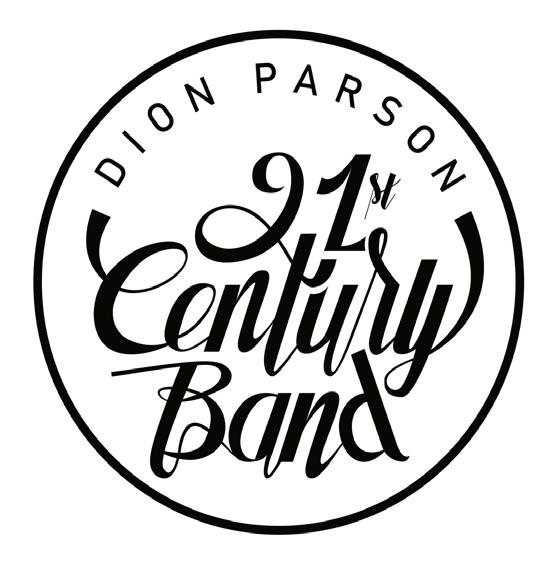
A n E n t i r e W o r l d o f M u s i c p a c k e d i n t o a P o w e r h o u s e E n s e m b l e
D i z z y ' s C l u b , J a z z a t L i n c o l n C e n t e r
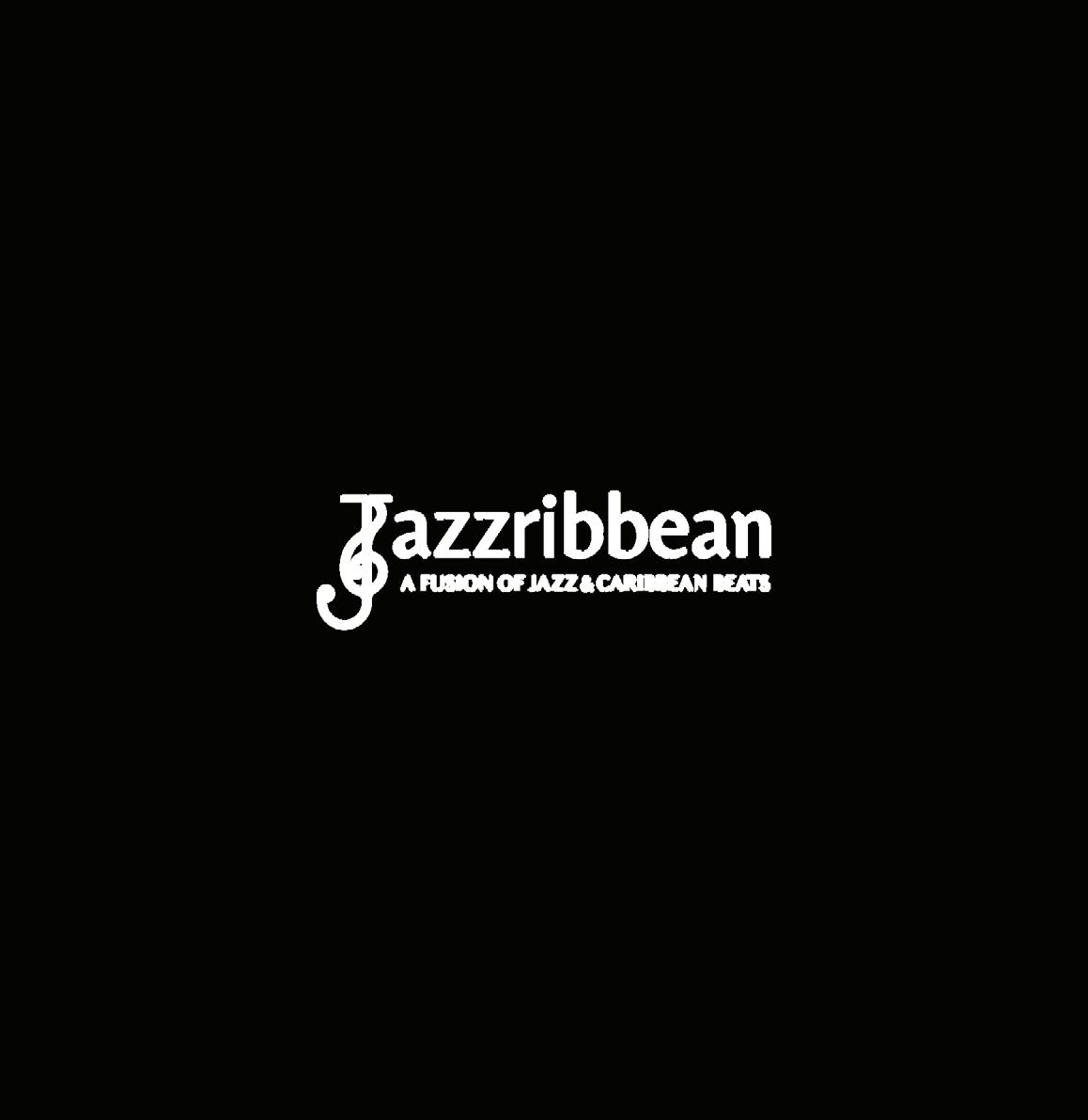
D i o n P a r s o n - D r u m s
R o n B l a k e - S a x o p h o n e
M e l v i n J o n e s - T r u m p e t
R e u b e n R o g e r s - B a s s
C a r l t o n H o l m e s - P i a n o

V i c t o r P r o v o s t - S t e e l P a n
A l i o u n e F a y e
P e r c u s s i o n / S a b a r D r u m s
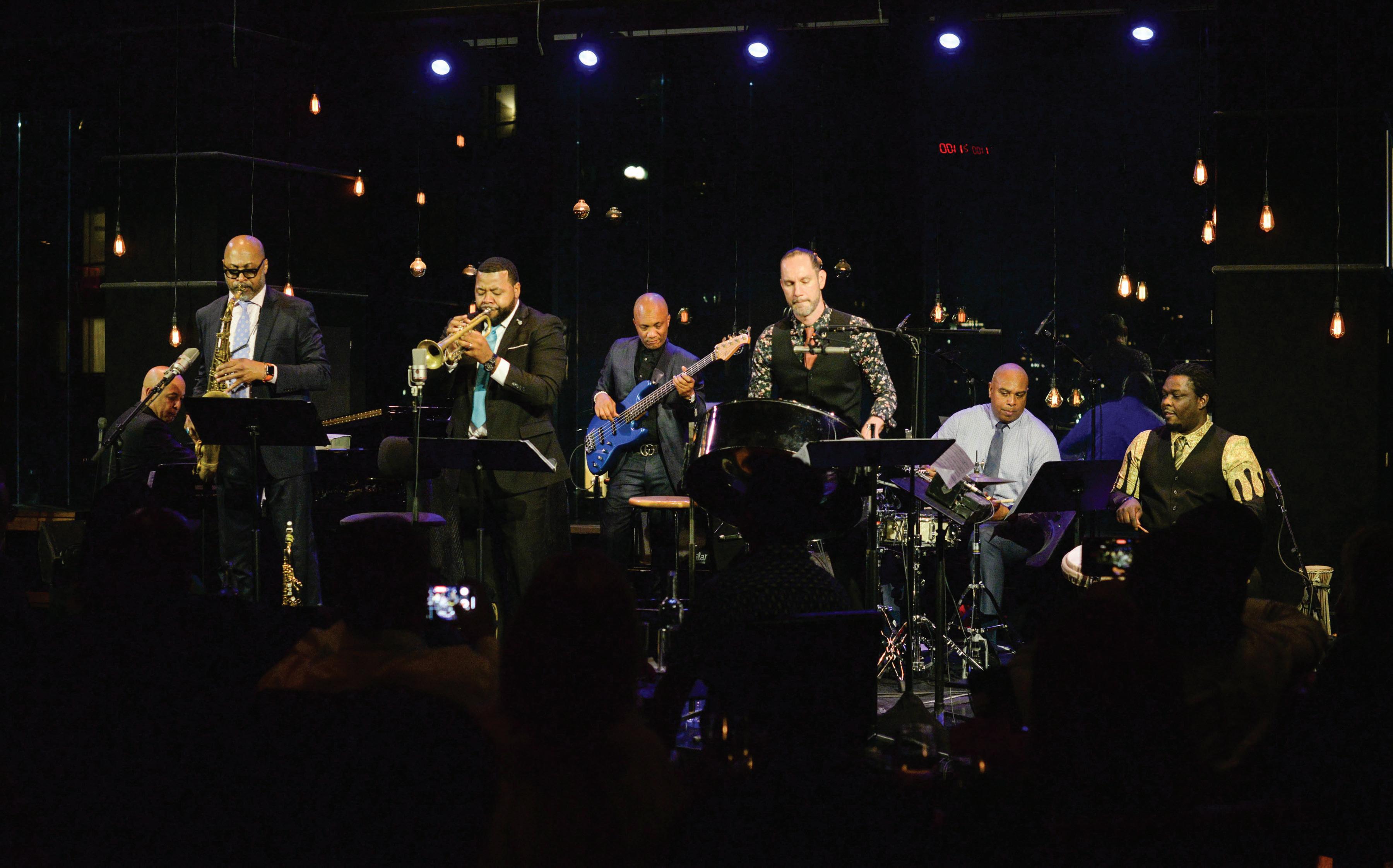
P A C K S A P U N C H W I T H I T S P O W E R F U L F U S I O N O F T R A D I T I O N A L J A Z Z A N D C A R I B B E A N R H Y T H M S J U N E 2 , 3 & 4 , 2 0 2 3 F R I D A Y & S A T U R D A Y 7 : 3 0 P M & 9 : 3 0 P M E T S U N D A Y 5 : 0 0 P M & 7 : 3 0 P M E T
e
e B a n k C e
e
C o l u m b u
C
i c k e t s : S t u d e n t s $ 2 0 - A d u l t s $ 3 0 t o $ 5 5 N e w Y o r k , N Y - P h o n e : + 1 2 1 2 - 2 5 8 - 9 5 9 5 h t t p s : / / 2 0 2 3 j a z z o r g / d i o n - p a r s o n w w w u n t e d j a z z o r g
J A Z Z R I B B E A N
D
u t s c h
n t
r -
s
i r c l e T
“Michael, you always play the right thing. I don’t know how you do it.” e ven after 40+ years of dedicating my life to this music, those words, that sentiment let me know, in a most profound way (I wasn’t prepared for), I had arrived. Karl was/is a giant, a gentle giant. His ability to let others in, and willingness to be let in, knew no bounds. This is how this music moves forward. Thank you, Karl, for not only blazing the trail but leading it into the beyond. Big love.
—MICHAEL BISIO ( bass)
Karl was my dear friend and a wise and inspirational teacher. He and his family have been like a second family to me since I came to Woodstock in the late ’70s. His death is a deep loss to me and to the family, friends and students who loved and learned from him.
—MARILYN CRISPELL (piano)
I met Karl in 1976, and for years was a frequent visiting teacher at Creative Music Studio, offering Indian singing and ‘Raga’ form. Karl’s vision was all about authentic musicianship that went beyond technique and performance of a particular style. His groundbreaking rhythmic exercise “Ga Ma La Ta Ki”, and deep attention to time and space, opened ears to a unique mind/body awareness. I was part of a family of Turkish, African and Indian musicians who brought elements of world music into the offerings of the CMS. My last concert with Karl, along with his dear wife/musical partner, Ingrid Sertso, and bassist Michael Bisio, was this past fall. It was always a joy to play with them.
—STEVE GORN (flute)
I met Karl Berger and Ingrid Sertso in upstate nY during Camp MMW (Medeski, Martin & Wood) in Summer 2010. I had no idea what Creative Music Studio was then, but later realized how influential CMS was for me. I had been deeply influenced by the iconic musicians that came out of CMS in the ’70s and ’80s, such as Codona (Don Cherry, nana Vasconcelos and Collin Walcott), Jack DeJohnette, Anthony Braxton, Ra Kalam Bob Moses, et al. The next time I ran into Karl was years later at Ornette Coleman’s apartment in nYC. It was Ornette’s birthday. As I was leaving, Karl ran up to me and asked if I could come upstate to teach a masterclass at his CMS retreat, held at the same location where I first met him at Camp MMW.
After I taught my masterclass, Karl told me I was perfect for CMS because of my fundamental approach to teaching. I would soon become one of the artistic directors. A year later, Karl handed me the leadership ( e xecutive Director/President) of CMS. It all happened so fast. From the time I started working with Karl, from 2016 to 2023, I have had such deep learning experiences as an artist and leader. Karl’s vision to bring people together from all backgrounds was such a breath of freshness. This was a movement he started back in the early ’70s, which I hope to keep evolving at CMS.
Karl was certainly a mentor to me. A father figure for sure. He was kind, soft-spoken and encouraging in many ways. One of the most profound moments was sitting with him at the piano in his house. I asked him, “How should I approach my way of playing piano?” I played some things and he knew right away what I needed: “Just open up your intervals wider.” And voila, that was it! Of course, there were many more things I learned watching and listening to him play and teach. His conducting technique certainly rubbed off on me as we often shared the conducting role at his monthly CMS Improvisers Orchestra concerts in Kingston, nY. I love his idea of “beat-for-beat” attention. That’s something he and drummer ed Blackwell had intuitively, and he noticed that was something we had when we played together. Karl will always be there with me, smiling, gently listening and dancing with the music. I know he’s dancing in the spheres and conducting an incredible ensemble out there in the Omnisphere.
—BILLY MARTIN (percussion/CMS Executive Director & President)
Apart from his outstanding work as a performer, his organization, Creative Music Studio and its workshops in Woodstock, was an educational triumph at a time when there was very little opportunity to find anywhere else to explore the way that jazz was moving forward. Karl was truly ‘one of a kind’ and I was privileged to have been able to even join in a few classes during the ’70s.
—JOHN SURMAN (saxophone)
Karl Berger was an oracle. He moved every person he played with and spoke to. He was always inspired and inspiring. I met Karl in 2011 after many years of being a fan of his. We shared a bill one night and he played an unforgettable duo concert with William Parker. After the concert he invited me to play with him and right away we were friends, playing all the time in duo, quartet and large ensembles. He asked me to teach with him at the Creative Music Studio and I attended all of his classes each time and wrote down everything he said. I think about something he said every day. He liked to talk on the phone and I looked forward to those conversations. When COVID first happened and everyone was upset and complaining about no work, Karl said to me, “For us, time is a gift. Let’s make the most of this time to study.” And he was always studying, always using his time to learn and make beautiful music. Karl remained completely open and free as a musician and person. He is the most important vibraphone player, a poet on the piano, and an incredible composer and bandleader. I will miss him every day.
—KIRK KNUFFKE (cornet)
A few years back, the Creative Music Studio Artistic Council at the time (Karl, Ingrid Sertso, Billy Martin, Steven Bernstein, Ken Filiano and myself) met with a consultant team that had been hired to help promote the organization. We were shown pictures of different animals and asked to pick the one we thought best exemplified the CMS aesthetic. Karl looked over the pictures and, noticing one he didn’t recognize, asked what it was. After being told it was a meerkat, Karl decided that would be his choice. Asked why, he replied, “Because I don’t know it!”
To me, this was one of the wonderful things about Karl, and said as much about him as about CMS: his willingness to embrace the unknown was what made him a true improviser. He was a great teacher and a great friend and bandmate for 46 years, and I’ll miss him dearly.
—PETER APFELBAUM (multi-instrumentalist)
I miss you, Karl. Words are not enough. I feel your sounds, voice and energy, kind smile—even after you’re gone.
I am both amazed and grounded by all that has transpired in my musical and personal relationship with Karl—creating, collaborating, inventing, moving and renewing. Our 2005 album Duets 1 , made three decades after our initial meeting, was both a crystallization of our diverse work together and the artistic trailhead of a new path we had only but begun to tread upon. Perhaps it is this symbiosis that kept our work together continually fresh. n ot in the sense that it is refreshing, but more that each sound voyage we embarked upon shined with surprising discoveries, regardless of how steeped in previously constructed foundations those journeys may, or may not, be. n ow in flight in unknowable realms upon the wings of boundless imagination, forevermore….
—JOHN LINDBERG ( bass)
I was a percussion student at the same time Karl was a percussion student; we were born less than a year apart. I hadn’t met him, though, until after I came to n ew York, as he was still in Germany by the time I got here. I had gotten a scholarship to attend Manhattan School of Music to complete a master’s degree, during which time I began an association with a lot of musicians, especially since I had a reputation for reading weird scores and participated with then-considered-strange, forward-thinking folks like Gunther Schuller. It was so unusual to have a percussionist like Karl who was basically doing what I was doing. Karl was one of the few people I knew who could play the mallet instruments. He was a virtuoso in terms of the vibraphone; I couldn’t even approach his vibraphone technique. I am a percussionist, so my first love was the drum set and then the timpani as there were very few trying to improvise on timpani. But Karl was doing the same thing, just with marimba and vibraphone. We were exploring and going into this whole different shift in composition and improvisation, where contemporary music was taking on different rhythmic and tonal explorations, and he was very much part of that with his mallet instruments. e very time we got together, we were able to create something unusual, sometimes in gatherings of multiple percussionists. If I ever needed a mallet player for anything more than I could handle, I’d invite him, and conversely if he needed someone like me, he’d invite me. Karl was experimenting in a certain way that was never rigid. He was expanding the way that people were listening to music and he really opened up different kinds of expression not explored before. —WARREN SMITH (vibraphone/percussion)
Karl taught me so much through our sonic plays and hangouts. He was my spiritual best friend, my musical grandfather. He told me that I needed to play when I felt too insecure to play, and said, “ n o one plays violin the way you do,” and gave me work to play long tones and improvisations in my own sensitive way. He taught me to love myself and my expressions a little more when I needed to, and to listen to everyone and everything more deeply and subtly. Recently he said to me, “You are a musician first of all and that is where your attention needs to go.” To me that means to prioritize listening to my heart because it will always direct me to the right path as a musician and as a human being. It was a gift that I was able to be around Karl in my 20s and 30s. He didn’t educate me like a teacher, but, rather, he let me be; he listened to me carefully and responded kindly and joyfully. His way of being was playing and we did so much of it. I will always wish we could have done more of it but, for now, thank you my friend and my playful teacher.
—SANA NAGANO (violin)
BERNSTEIN (trumpet)
I met Karl Berger (and Ingrid... it’s always been Karl and Ingrid to me) when Peter Apfelbaum and I went to Creative Music Studio in 1977. It’s unclear exactly how we got up to Woodstock (actually West Hurley) from JFK, and legend has it that no one was there when we showed up. But gradually folks assembled and Karl taught us gamala taki and Ingrid had us capturing overtones. George Russell, (Wadada) Leo Smith, Frederic Rzewski, Sunny Murray, Abdullah Ibrahim, Carla Bley, e d Blackwell, et al. all showed up and opened our impressionable minds. That was the experience Karl Berger brought to so many young people. CMS, universal music, World Music, active listening: a holistic approach to music. And his vibraphone playing was the embodiment of that—free and rooted, melody and surprise. He had a great style, musically and sartorially… understated Buddhist cool. I knew he had been having recent health issues, and I called to check in on a dog walk this March. He sounded as upbeat as ever, just so Karl: “Hey, man. We are doing Sundays in Kingston with the Improvisers Orchestra. I can pay some bread and cover your gas.” I thought how beautiful at 88 to have the overwhelming desire to create and improvise and dance in front of his orchestra. Here’s to a life well-lived. Thank you for the gifts... One big Om to you. —STEVEN
14 June 2023 | THE NEW YORK CITY JAZZ RECORD
I n M e M O R I A M
I heard Karl with the Don Cherry Quintet at the International Jazz Festival Praha (Prague) in 1965 with Gato Barbieri, J.F. Jenny-Clark and Aldo Romano. After the concert, there was a jam session and Karl played with J.F. and Aldo. I went on stage to ask Karl to sit in, and when Don and Gato came after a while back onto the stage, I was then playing with the Don Cherry Quintet. It was the music I dreamed of: TH life! We played for two hours, and afterwards stayed in touch. Following my escape from 1966, a few months later my brother Rolf (Kühn) and I were recording our new album for MPS ( with Karl as a special guest. In 1968, we played again with Cherry at the Berlin Jazz Festival and recorded the album Eternal Rhythm (also MPS). I learned a lot from Karl, especially at this time as I was only 21. Karl was an unforgettable, new voice on the vibes and a great musician. I’m very sorry to hear of his passing.
—JOACHIM KÜHN (piano)

Some of the first recordings I made when I arrived in n Y were done at Karl’s CMS studio in Woodstock. Later on, he did great work for me doing string arrangements, applying strings to many projects that you wouldn’t expect with strings: Sly & Robbie, Bob Marley, Angélique Kidjo, Buckethead, Swans, Bernie Worrell, Material and many others. I always valued his rich musicality, knowledge and always a wicked sense of humor. I remember once we ran out of music; he simply turned the paper upside down and had everyone play that as a new piece of music! A great musician and a great teacher—he will be remembered and missed by many.
—BILL LASWELL (bass/producer)
It is very hard to write something about Karl: he was half of my life and so much more. When we met, we connected right away. It felt like I knew him from many past lives. We both came from a classical background and started loving jazz. Going to York with Don Cherry, meeting Ornette Coleman who we adored, just made what we already felt deep and powerful. Music is in everybody, the world is in everybody, listening, hearing sound, feeling what you play or sing. Music is universe, no style. Karl was a born teacher; his music mind was and is pure gold. He cannot be replaced. I love him.
—INGRID SERTSO (vocals/CMS co-founder)
Forty years ago, I came here from Brazil to Creative Music Studio. It was a crazy scene for me: my family was in Brazil and I didn’t know where I was or where I was going. I came for this summer course that Karl Berger and Ingrid Sertso used to do in Woodstock at a farm. You know when you fall in the right place at the right moment? Well! This experience, living there in CMS, is something that I carry and I’m going to carry until I die. It was such a strong moment for me. And if you’re going to talk about music, you need to mention CMS because it was the first time in the world that musicians got together in one place and could play together all night and create something. And that happened there under an umbrella of “jazz”. CMS was like a nest of possibilities. And so, if I want to pass any message through what I’ve been doing and am doing right now, it is this: to create this possibility, especially with everything that is happening around us. Music is possibility. Thanks to Karl for providing the nurturing space for so many to explore the possibilities.
—CYRO
THE NEW YORK CITY JAZZ RECORD | June 2023 15
BAPTISTA (percussion) JACK VARTOOGIA n
Ornettiana Monica Nica Agosti’s Shapex (AUT)
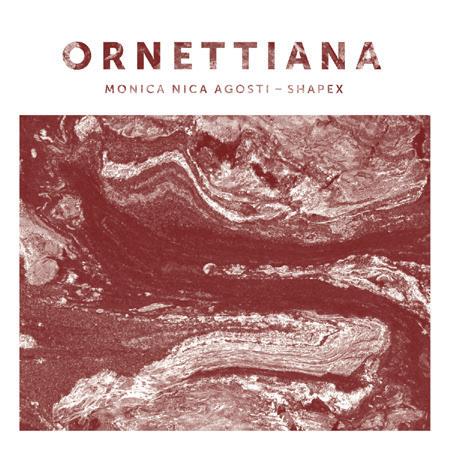 by Anna Steegmann
by Anna Steegmann
T he Italian vocalist Monica “nica” Agosti, always open to experimentation, has performed with rock, soul and jazz bands in musicals and in clubs. She wrote her thesis about Ornette Coleman at Siena Jazz university and Ornettiana , her first album as a leader, is a deeply felt tribute to the great saxophonist, who died eight years ago this month. Agosti first presented Ornettiana at the Piacenza Jazz Fest in 2021. Quintet Shapex surrounds her with brilliant musicians: Tommaso Iacoviello (trumpet), Tobia Bondesan (alto), Francesco Sarrini (bass) and Giuseppe Sardina (drums) on an album (eleven tracks in a compact 46 minutes) that offers three interpretations of Coleman compositions, plus pieces by Sardina, Bondesan, and Agosti. Shapex sounds both vintage and innovative, at times experimental, always congruous or (in Coleman’s terminology “harmolodic”). Their skill, chemistry and harmony, and especially the leader’s scat singing, are irresistible. But, as with the music of Coleman, the work cannot be easily categorized as belonging to a particular style. Instead, each song is a new listening adventure.
The opening track, “The Band Comes Playing a Crazy Little March and Goes Away”, features a great call and response between trumpet and saxophone, enriched by Agosti’s scat singing and a marching-band drum beat. Throughout the recording, the horns stand out for their warm tone. Coleman’s “Law Years” is wild, free and rhythmically complex. Agosti’s extended a capella feature on “Spread Love” shows off her range and skill as an improviser. On Coleman’s “Kathelin Gray”, perhaps the most accessible of the tracks, Agosti is stunning, her beautiful, charmingly accented singing accompanied at first by only bass and later drums. “echoes from Fort Worth, Texas” is poignant in its sparsity. “Cooper’s Game” transports the listener to a budding romance in a late-night jazz club. “Rolling” is upbeat and energetic, and “At the Funeral the Band Is Sad and Drunk” is melancholy and multifaceted. This album, full of delightful surprises, is definitely a winner.
For more info visit autrecords.com
unusual recording for me: a compilation of solo tracks recorded across a few years that I discovered while listening on tour.” The recording process was simple: a chordal accompaniment was recorded, then a track with melody and solo was added on top, sometimes inspired by an unusual guitar. The recordings are raw, with slight signal clipping here and there and small imperfections in the different guitars used, but this only emphasizes the effortless brilliance of the performances.
“The Waves Are not the Ocean” is a lovely slow jazz ballad with inverted chords, lilting melody, and a perfectly unresolved plagal cadence. Metheny’s solo is minimal, with just the right resolutions outlining the slick chord changes. Resonant fret harmonics take us out on the coda. The backing tracks of all the pieces have perfect metronomic time and show great patience and foresight in their performance. “Ole & Gard” moves in thirds with interesting harmonic twists before arriving at an optimistic vamp. The tune seems to slide between metrically modulated 3/4 and 4/4 time, keeping listeners on the edge of their seats. Metheny’s solo is lyrical and weaves expertly through the chords with just a hint of augmented major 7th harmony here and there. The tone of the lead guitar is round and dark and in great contrast to the crisp rhythm track. The standard “I Fall in Love Too easily” gets a wistful treatment with very simple accompaniment and a memorable solo. The guitarist says a lot with just a few notes; his lines have a terrific arc, with buttery slides and bends that add to the mystique. “P.C. of Belgium” grooves in 3, with a subtle country twang and counterpoint that is automatically created when the rhythm guitar uncharacteristically breaks out of its lane and plays some lines as well. The solo on the vamp out of the tune is particularly beautiful. Melancholy closer “Clouds Can’t Change the Sky” is gorgeously spacious and a perfect ending for this brilliant set. This is a great album of first-take guitar playing and a must for Metheny fans.
For more info visit modernrecordings.de. Metheny is at Beacon Theatre Jun. 24. See Calendar.
Thomas), are heartfelt but also an acquired taste (“Sketches of a Love Supreme” would arguably be better without them). “Bop On” is, as the name implies, boppish but with some sprinkled Ornette/Cherry fairy dust. Wilkes and Harding make a good team, playing around each other, backed by David Ornette Cherry’s slightly dissonant piano; his solo is full of sharp edges, true to his father’s music.
The leader’s kalimba introduces “Holy Man”, which has more effective incantatory vocals that evoke Cherry’s productive Codona period (his trio with percussionists naná Vasconcelos and Collin Walcott). “evocation” has a lovely melody voiced by the horns and some fine growling from Wilkes.
“Degi Degi”, from Don Cherry’s Brown Rice , is given an attractive treatment (via Ornette Cherry’s circling piano patterns). Coleman’s “Lonely Woman”, perhaps his most recorded tune, also benefits from David Ornette Cherry’s piano work, along with Wilkes’ haunting trumpet and el’Zabar’s percussion. Though Margo Guryan wrote lyrics for “Lonely Woman” in 1962 (both Chris Connor and Freda Payne covered it), the lyric here isn’t the same.
“Don Cherry”, on which the band chants the composer’s name, is catchy but repetitious. The maestro himself could have created the cool riff, but an actual Don Cherry piece might have had more going on. The title piece is a showcase for baritone saxophonist Harding and Trible’s spiritual jazz vocals.
Many Don Cherry albums have divine moments, and some dross. That’s true here too.
For more info visit spiritmuserecords.com. El’Zabar’s Ethnic Heritage Ensemble is at Roulette Jun. 18 as part of Vision Festival. El’Zabar is also at Nublu Jun. 28 in duo with David Murray. See Calendar.
• ARTEMIS—In Real Time (Blue Note)
• Jamie Breiwick—Awake: Volume 2-The Music of Don Cherry (Shifting Paradigm)
• Mike Clark—
Plays Herbie Hancock (Sunnyside)
• Jeff Coffin—Look For Water (Ear Up)
• Orhan Demir—
Freedom In Jazz, Vol. 3 (Solo Guitar) (Hittite)
• Michael Formanek Elusion Quartet— As Things Do (Intakt)
• Devin Gray—Most Definitely (Rataplan)
Dream Box
Pat Metheny (BMG
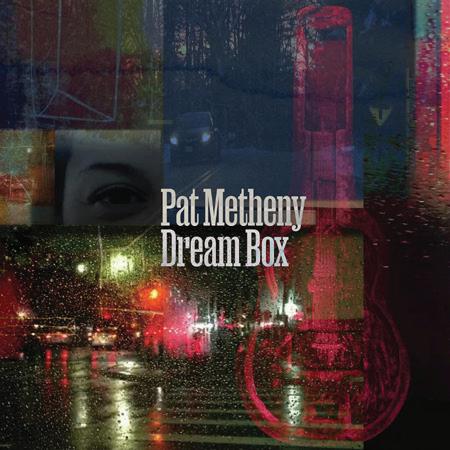 Modern
by Brian Charette
Modern
by Brian Charette
Recordings)
G uitarist Pat Metheny has covered a lot of ground since he first burst onto the international jazz scene in 1974. His iconic album Bright Size Life reinvented the role and sound of jazz guitar. On his newest recording Dream Box , the enigmatic six-stringer has constructed an engaging program of solo guitar pieces with self-accompaniment. In the press materials, Metheny says, “ Dream Box is an
Spirit Gatherer: Tribute to Don Cherry Ethnic Heritage Ensemble (Spiritmuse)
by Jim Motavalli
T rumpeter Don Cherry’s career was so wide-ranging and idiosyncratic—from serving as Ornette Coleman’s foil to embracing world music—that any tribute must similarly cover a lot of ground. Spirit Gatherer , the latest album by the ethnic Heritage ensemble, the longstanding project of drummer/percussionist/vocalist Kahil el’Zabar, certainly tries to do just that.
On Monk’s “Well, You needn’t”, baritone saxophonist Alex Harding takes on the bass role, while trumpeter Corey Wilkes tackles the melody. Harding’s growling solo is a long way from Monk, but that’s fitting; back in the day, Ornette was also perceived to be a long way from Monk, though their kinship is now more apparent.
“The Opening” (which features the nominal leader’s chanted vocals) has an elegiac feel and could serve as a tribute to David Ornette Cherry (Don Cherry’s son) who plays piano, melodica and douss’n gouni (a form of West African guitar) before passing away last year, shortly after working with el’Zabar.
The album’s vocals, from el’Zabar and Dwight Trible (the latter influenced by Andy Bey and Leon
• Elizabeth Harnik/Zlatko Kaučič— One Foot In The Air (Not Two)
• Lauren Henderson–Conjuring (Brontosaurus)
• François Houle Genera Sextet— In Memoriam (Clean Feed)
• Russ Lossing & King Vulture— Alternate Side Parking Music (Aqua Piazza)
• Joe Lovano Trio Tapestry— Our Daily Bread (ECM)
• Denman Maroney/Scott Walton/Denis Fournier—O Kosmos Meta (RogueArt)
• Edward Simon—Femeninas: Songs of Latin American Women (ArtistShare)
• Alan Skidmore—A Supreme Love (Confront)
• Cecilie Strange—Beyond (April)
• Henry Threadgill—The Other One (Pi Recordings)
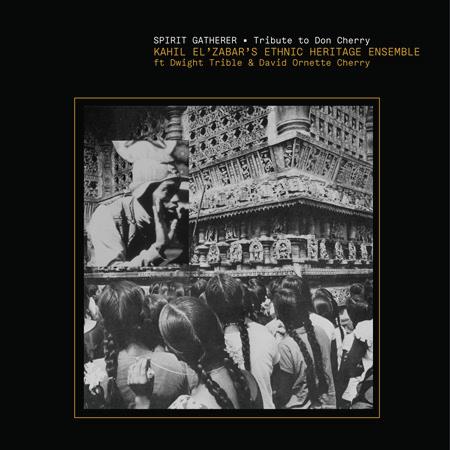
• Lukas Traxel—One-Eyed Daruma (We Jazz)
• Twirls—Tides & Shadows (Tiger Moon)
• Bo van de Graaf—Shinjuku (ICDISC)
16 June 2023 | THE NEW YORK CITY JAZZ RECORD
R e c o m m e n d e d n e w r e l e a s e s A L B u M R e V I e W S
Scylla
Dave Rempis, Joshua Abrams, Jim Baker, Avreeayl Ra (Aerophonic)
These Things Happen
Keefe Jackson, Oscar Jan Hoogland, Joshua Abrams, Mikel Patrick Avery (Astral Spirits) by Stuart Broomer
J oshua Abrams has been based in Chicago since the early ’90s, although his roots (pun intended) are in Philadelphia, where his rhythmic acuity earned him the nickname “The Original 808” after a Japanese drum machine. He is likely best known for his 14-year leadership of one of the world’s most original bands, natural Information Society, in which he plays guembri, a hide-covered north African bass lute. However, he’s long been among Chicago’s leading bassists, with associations across a range of music from post-bop to postmodern. He’s a brilliant bass soloist; his Excavations
1 (Feeding Tube) reveals how much mayhem one can create with a bow. However, it’s largely in the traditional roles of establishing the rhythmic and tonal core of the music, as well as providing flexible support, that he appears on these two quartet recordings, the first richly expansive, the second mercurially brief.
Scylla presents the quartet of tenor/alto/baritone saxophonist Dave Rempis, drummer/percussionist Avreeayl Ra, pianist/synthesist Jim Baker and Abrams playing at elastic Arts in July 2021 after a fifteen-month COVID-19 layoff. More than mere celebration, it’s a performance of profound emotions, opening with a serenely beautiful moment of Ra playing mbira and announcing, “This is for the survivors” (thoughtfully moved from the performance’s end to the album’s beginning). When Rempis launches “Between a Rock” he does so slowly; his impassioned tenor has a sound uncannily like John Coltrane’s in his last year, with high frequencies shaved off and a wide vibrato. The performance runs 35 minutes, from rubato reverie to soaring joy, through shifting tempos, techniques, volume levels and instrumental emphases, with consistent attention to nuance. each musician brings a unique voice and special empathy, including a late passage in which individuals gradually join Abrams’ arco solo, until the full quartet is engaged in an improvisation that’s compound as well as collective, its parts beautifully individuated. The very different, 27-minute companion piece, “Viscosity”, includes a long passage that matches baritone saxophone heft with dance rhythms and eerie synthesizer drones. It’s another intense, extended immersion, but the listener’s interest never flags.
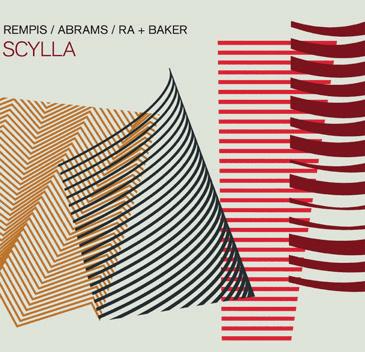
These Things Happen couldn’t be more different. It’s a strange record, beginning with its format: a six track, 22-minute, 45 rpm record.
An essentially Chicago band—Abrams, Mikel Patrick Avery (drums) and Keefe Jackson (tenor/ soprano)—here makes an essentially Dutch record, working in the netherlands with pianist Oscar Jan Hoogland. The emphasis is on slightly off-kilter jazz standards, performed briefly and explosively. The album opens with Thelonious Monk’s “epistrophy”, pushed along by Abrams’ pulsing bass and Avery’s polyrhythmic chatter. Jackson addresses the melody with a rugged honk, and he and Hoogland solo briefly. The pattern continues through performances of Dewey Redman’s “Gotta Get Some Sleep”, which is marked by frequent shifts in rhythm and tempo, and (best of all) Herbie nichols’ “The Happening”, a fitting tribute to a lost master highlighting Abrams’ classic in-the-pocket bass work and Jackson’s boppish tenor. Monk’s “Bemsha Swing” is a truncated performance (merely 2’30”), and

features a weirdly digital arrangement by Hooland. The pianist also contributes two originals, the angular ballad “Wimpel” and the concluding “Aanhanghuis”, a shifting collage of divergent approaches. This is lively, buoyant music, but the brevity of the pieces and the overall performance limit any sense of the band’s real potential.
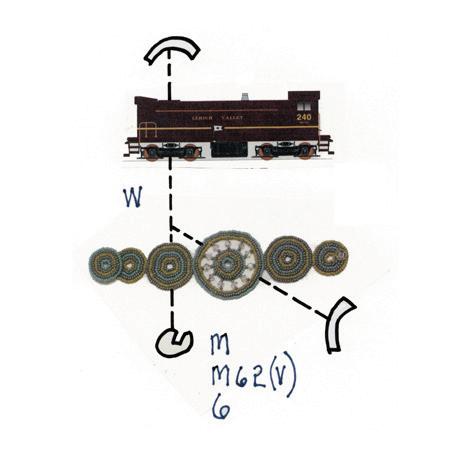
For more info visit aerophonicrecords.com and astralspiritsrecords.com. Joshua Abrams is at Roulette Jun. 14 with Hamid Drake’s “Turiya: Honoring Alice Coltrane” as part of Vision Festival. See Calendar.
Ghost Trance Septet Plays Anthony Braxton
Kobe Van Cauwenberghe’s Ghost Trance Septet (el NEGOCITO) by

I t takes a performance history to save a composer from the dustbin. Granted, that’s less true than it was before the recording age, but the digital era is arguably bringing back that ill-fated fast track. Recordings and scores won’t keep compositions in the collective memory. It’s ongoing performance that keeps them alive.
For a composer as prolific and brilliant as Anthony Braxton (who turns 78 this month), continued performance is vital. His work has been performed almost entirely by ensembles led either by himself or by musicians who have worked closely with him. With work so open to individual interpretation, it’s not just important for its future to have it performed; any such performance directly informs the present.
Kobe Van Cauwenberghe has engaged with, indulged in and absorbed the of Braxton’s headiest and most exciting compositional systems. In 2020, he released his Ghost Trance Solos, an effective if counterintuitive guitar-looping approach to a performance process that allows for concurrent interpolations from across Braxton’s catalog, and does a convincing job at realizing a concept designed for inthe-moment ensemble subgroupings.
He has now expanded that effort to a full band, and to wonderful effect. The four performances on Septet Plays Anthony Braxton
193, 255, 264 and 358, each a bit over 20 minutes—ring clearly with Braxton’s voice, but as refracted by the musical personalities of a talented assemblage of Belgian and Danish players. Van Cauwenberghe employs a standard midsize jazz band lineup—trumpet, reeds, violin, piano, bass, drums—himself playing electric and nylon string guitars and adding some surprising synthesizer. Trumpeter some nice, murky euphonium on Composition 258, and off-mic vocals add to the fabric of Composition 255. But it’s on Composition 264 that the ensemble really comes into its own, with long and seemingly open passages and especially fiery soloing by the leader.
Performance histories are what move musicians associated with the jazz tradition from the entertainer role across the line to the (racially-defined and more esteemed under eurocentric standards) status of composer. The Ghost Trance Septet hasn’t just made an enjoyable (and very much so) record for the current moment; they’ve contributed to the future critical assessment of a musical mind as important as and Riddle on the one hand and Stockhausen and Xenakis on the other.
For more info visit elnegocitorecords.com
THE NEW YORK CITY JAZZ RECORD | June 2023 17
Blues on Top
Mike Clark & Leon Lee Dorsey (featuring Mike LeDonne) (JazzAvenue1)
Plays Herbie Hancock

Mike Clark (Sunnyside) Cantaloupe Island
Leon Lee Dorsey (JazzAvenue1) by
 George Grella
George Grella
T he first name that comes to mind in association with drummer Mike Clark is Herbie Hancock; it’s Clark at the kit for some of Hancock’s finest ’70s albums, including Thrust , Death Wish , and the live Flood Clark is absolutely integral to the greatness of tracks such as “Absolute Proof” and “Hang u p Your Hang u ps”, and the Hancock legacy continued through his playing in the Headhunters band.
A long partnership with bassist Paul Jackson established Clark as one of the premier—and most sophisticated—funk drummers, but his dozens of albums as either a sideman or a leader show his range as a modern musician, from funk and soul to straight ahead piano trios in recordings with Betty Davis, Jack Walrath, Charnett Moffett, Chester Thompson and many others.
Jazz is the main flavor on these three albums, as is Hancock, not just on the Plays Herbie Hancock tribute album but through the title track on Cantaloupe Island
More central is the partnership with bassist Leon Lee Dorsey, who is present on each of these discs.


Blues on Top , with pianist Mike LeDonne, is
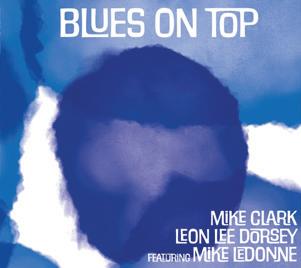
a mainstream jazz effort, but the seeming selfconsciousness works somewhat to its detriment— there’s an occasional feeling of proving bona fides. The selections are mostly well-known standards, stretching to include a classic soul music take on The Beatles’ “Can’t Buy Me Love”; there are also two LeDonne originals, the title track and “Lock It in the Pocket”. Track-to-track, this is mostly fine stuff, but there’s a sense of impatience to the album as a whole, of a need to fill every possible space with music and playing, where some light and air would be welcome. This issue is especially true with LeDonne, who has a lot to say, never dull, but at times garrulous, such as on “Stolen Moments”, a mid-tempo take that he fills with notes. The best moment on the album is Dorsey’s solo statement on “Angel e yes”, which has lovely pace, clarity and phrasing.
Plays Herbie Hancock is also a piano trio, with Jon Davis at the keyboard. This is not a tribute album, just one where the musicians play great pieces including “Toys”, “Dolphin Dance”, and “Actual Proof”— there’s no attempt to recreate a past time and place, just an appreciation of good material. Davis does put in a few gentle Hancock-isms, a tremolo here and a parallel run there; these are not imitative, but simply an acknowledgement of his predessor’s greatness. Clark is always fully present, quick and responsive, but never too much. His high-hat and stick work on the cymbals is nicely reminiscent of a young Tony Williams.
This album is straight ahead throughout, and that being said, it might be a little conservative for some tastes. The strength of Hancock’s writing is that it has both a specific thematic presence and the kind of structure that supports everything from a swing to funk to open-ended explorations. The variety here
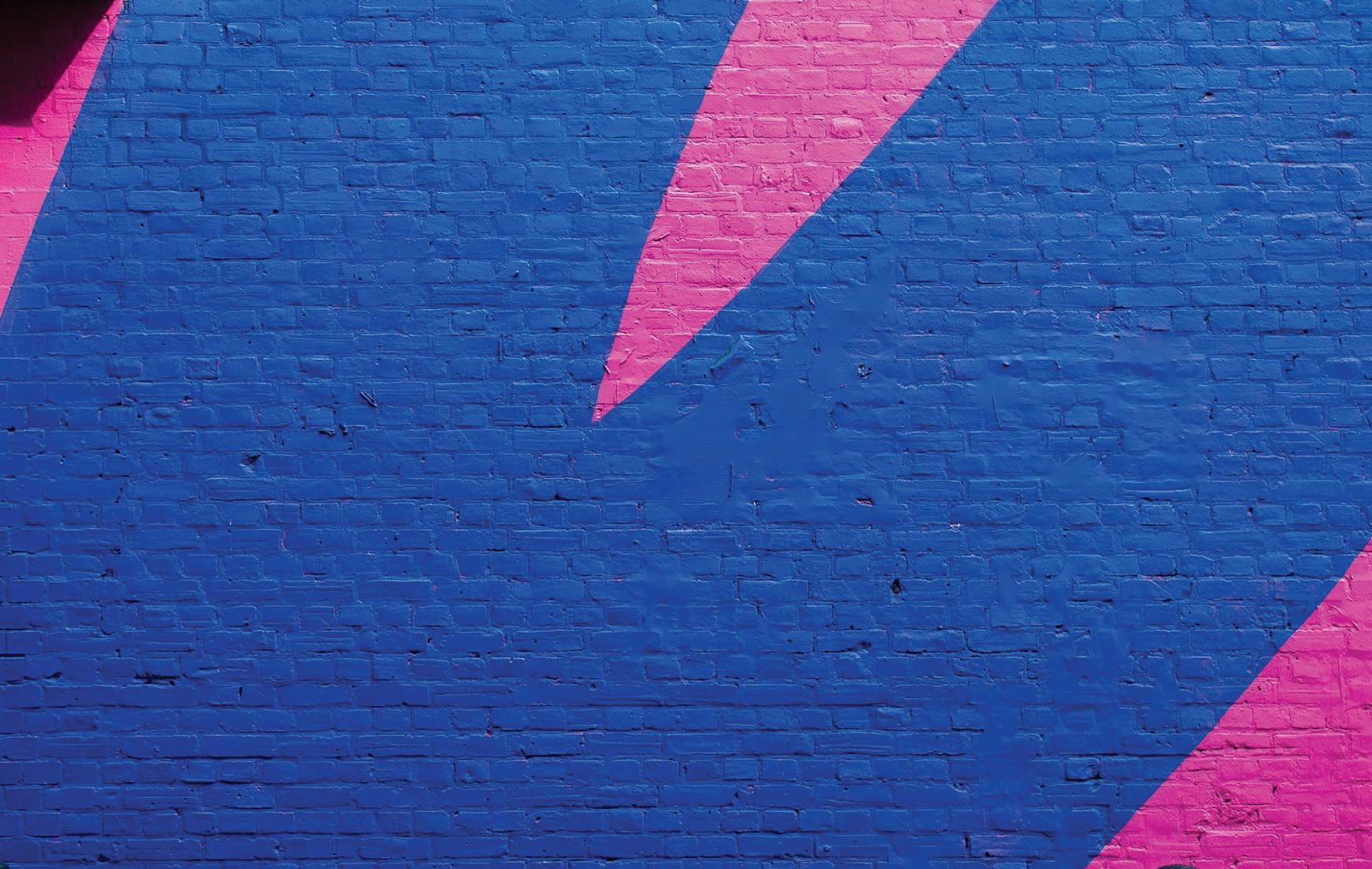
is in the tunes, not the approach—although Clark often seems to be asking musical questions such as, “How about we try this? How about we go here?”
Like Blues on Top , this is a good collection of tracks but is missing a key ingredient for the parts to equal the whole.
Cantaloupe Island is the best of the three albums because it’s the most distinctive, the one with the clearest personal voice. Guitarist Russell Malone helps open up the trio’s textures. The title track, the only Hancock tune, is complemented by other works such as Horace Silver’s “Sister Sadie”, Wes Montgomery’s “Bumpin’ on Sunset”, Prince’s “Thieves in the Temple” and Ray n oble’s “The Very Thought of You”. There’s also variety in the approaches: “Cantaloupe Island” is a medium funk groove built on Clark’s cracking march rhythm; “Sister Sadie” has a soul/ stomp feel; and the Prince tune is a lovely balance between funk and rock, with Malone bringing out the depth of harmonies.

The ballads, including Kenny Burrell’s terrific “Listen to the Dawn”, contrast nicely with the other material. The Montgomery riffs—which have Malone clearly enjoying himself—also offer the kind of contrasts that an album needs to be a fully realized statement. That’s more than a matter of major and minor keys and tempos, but moods and concepts. One can hear the range in Clark’s playing, what he does when playing slow and sculpting space, and Dorsey’s strength and wisdom at the bottom. Malone similarly plays with thoughtfulness: every line has its purpose in what is a fine, fine album.
For more info visit sunnysiderecords.com and leonleedorsey.com. Clark’s Plays Herbie Hancock album release concert is at The Django Jun. 8-9. See Calendar.

18 June 2023 | THE NEW YORK CITY JAZZ RECORD
featured shows throughout jersey city JAZZ NIGHTS tickets at jerseycityjazzfestival.com june 1–4 presented by exchange place alliance produced by FREE to the public SATURDAY & SUNDAY JUNE 3–4 jersey city

With Best Intentions
Jochen Rueckert (Colonel Beats)
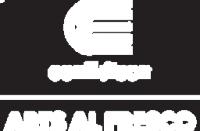

 by Thomas Conrad
by Thomas Conrad
T he presence of Mark Turner—one of America’s premier tenor saxophonists—among the personnel here is one obvious reason to check this album out, but there are many more. German trombonist nils Wogram and Dutch bass clarinetist Joris Roelofs are similarly creative and intense musicians. The instigator of this international project: German, now nYC-based drummer Jochen Rueckert.
With Best Intentions is an example of the current trend for chordless ensembles, as the rhythm section consists only of Rueckert and bassist Doug Weiss. The leader’s nine originals are convoluted little anthems, compact but hummable, that launch Turner, Wogram and Roelofs high into the air.
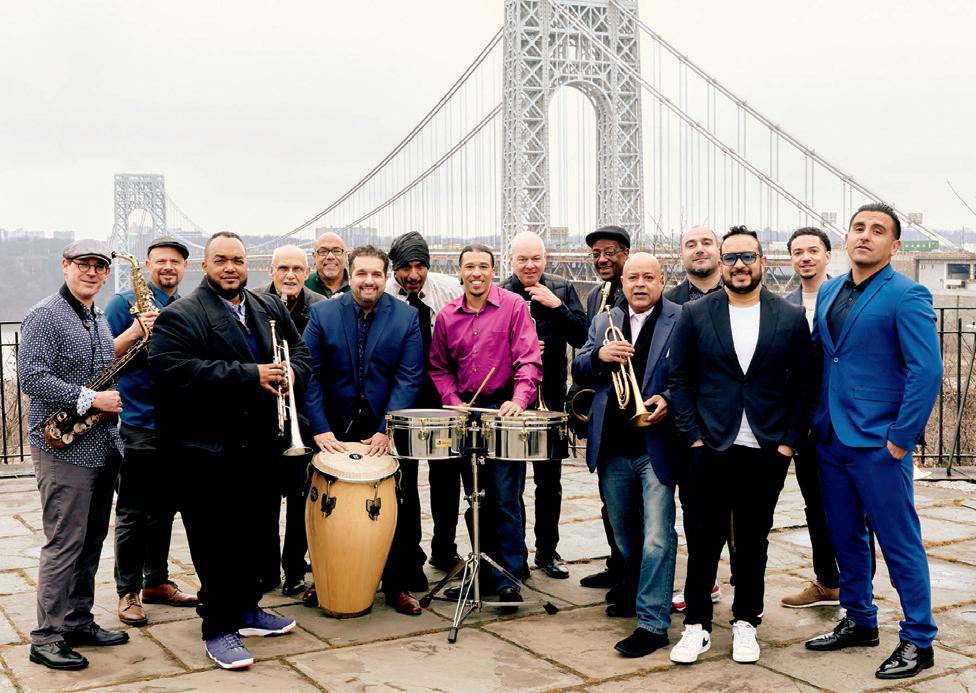
The first solo of the album, “The Dress”, is by the bass clarinetist. He is fluent across the entire range of a horn that remains a specialty instrument in jazz, despite its intriguing intervallic capabilities and expressive potential. Wogram’s playing reveals his grasp of the trombone’s natural affinity for drollery, but he also makes formidably serious statements, as on “unmitigated”. Turner justifies his imposing reputation, on “Rainbow Road” and “unmitigated”, sounding thoughtful even at

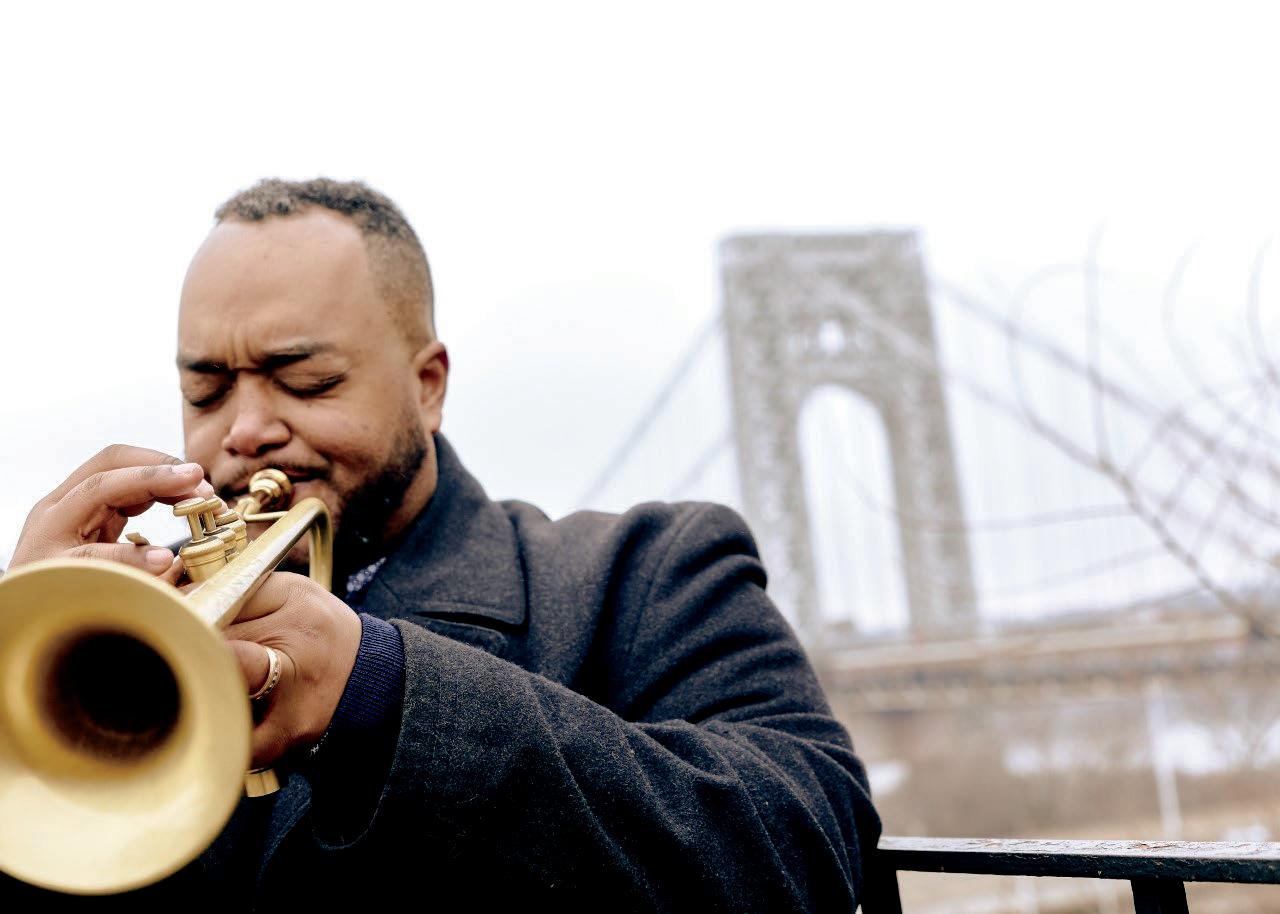
his most voluble, always dealing in fresh ideas but also tying them together.
The press notes describe Rueckert’s compositions and arrangements as “on the simple side.” But the way that this band continuously reconfigures itself, converging suddenly to create a unique backdrop for a soloist or engaging in heated, spontaneous counterpoint, is nonetheless intricate. It’s just that their playing is so crisp and efficient they make it all sound easy.


For more info visit jochenrueckert.net. Rueckert is at Bar Bayeux Jun. 28. See Calendar.


and solos in 4/4 swing and vamps and interludes in 3/4; Chambers’ “Intermezzo”, the most free-form track on the album, for which he switches to vibes to dialogue with Germanson; and guitarist Karl Ratzer’s “Moon Dancer”, where he overdubs vibes and birdcall percussion. His vibes playing, more episodic than thematic, is notable for fast, dynamic flurries. For “Caravanserai”, an uptempo, impressionistic original, the trio is augmented by Cuban percussionist emilio Valdés; on “Ruth”, his lyrical 3/4 ballad with multihued harmonies, the trio grows to quintet with Valdés and alto saxophonist Marvin Carter. Joe Henderson’s “Power to the People”, by the same quintet with Carter now on tenor, contains engaging conga/drums exchanges; Chambers again overdubs vibraphone on the melody and transitional sections. Here, as elsewhere, the studio mix pans individual parts side-toside across the channels to create an immersive, slightly surreal experience.
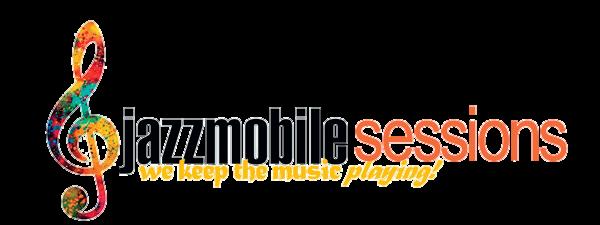
J oe Chambers established his reputation six decades ago as house drummer for Blue note Records, gigging and recording with a Who’s Who of jazz icons. Turning 81 this month, he’s back with his third release for the label as a leader, Dance Kobina , recorded in Queens and Montreal. There are three trio tracks with pianist Rick Germanson and bassist Mark Lewandowski: Kurt Weill’s “This Is new” (previously recorded by Chambers on Chick Corea’s Tones for Joan’s Bones
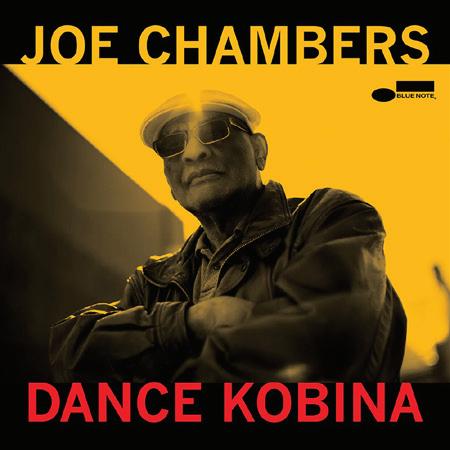
The remaining three tracks feature a Montrealbased sextet comprising alto saxophonist Caoilainn Power, pianist André Vial (who wrote two of the tunes), vibraphonist Michael Davidson, bassist Ira Coleman and Congolese percussionist elli Miller Maboungou on ngoma drums. The title cut restlessly shifts between 3+3 and 2+2+2 accent patterns over a quasi-flamenco chord progression, Chambers’ rim-taps and Maboungou’s sharp slaps pumping the pulse. “City of Saints” and “Gazelle Suite” are equally rhythmically devious, the former in 9/8, the latter in a complex polyrhythm juxtaposing eleven groups of three against a cross-cutting piano montuno in fractured 4/4, switching to straight-ahead swing for solos, 6/8 for the intro and outro. All of which sounds complicated, but Chambers’ relaxed yet hard-driving

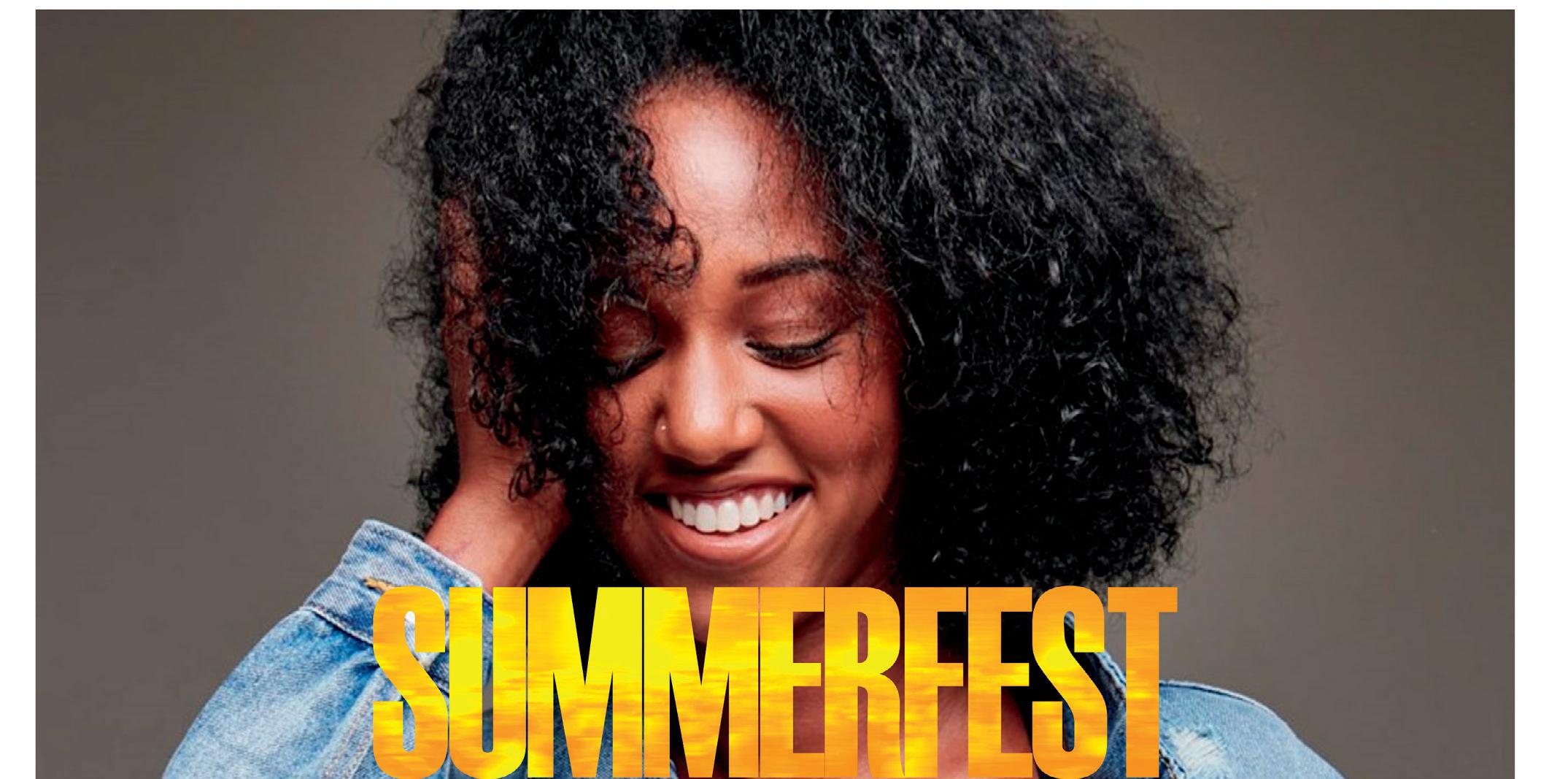
20 June 2023 | THE NEW YORK CITY JAZZ RECORD
Dance Kobina
Joe Chambers (Blue Note) by Tom Greenland
OQUENDO
FRIDAY JUNE 2 @ 7 PM SCAN FOR ALL CALENDAR UPDATES PRESENTS T H E I N T E R C H U R C H C E N T E R 6 1 C L A R E M O N T A V E B T W N W E S T 1 1 9 T H & 1 2 0 T H S T H A R L E M B E T H U N E B I G B A N D P A U L E . W E S T , C O N D U C T O R F O R M E R J A Z Z M O B I L E E X E C U T I V E D I R E C T O R W E D J U N 1 4 7 : 0 0 P M COMING SOON | JULY 5 - SEPTEMBER 23
STEVEN
LATIN JAZZ BAND

Guilty Pleasures
Kurt Elling’s SuperBlue (Edition)
by Scott Yanow
K urt e lling is arguably jazz’ leading male singer of the past 30 years. His career took a surprising turn in recent times when he recorded SuperBlue . Conceived during the worst period of the COVID epidemic, e lling collaborated with bassist-keyboardist DJ Harrison and drummer Corey Fonville, two musicians he did not actually meet until the album was completed. With Charlie Hunter (whom e lling knew from his days with the Blue n ote label) acting as guitarist, producer and go-between, SuperBlue f eatured the singer improvising over funky rhythms. While the title cut is a Freddie Hubbard tune, most of the other selections f ound e lling stretching himself into uncharted areas and sounding quite at home in the funky setting.
Guilty Pleasures , a six-song e P that is only available as a download, is even more of a stretch. e lling is again joined by Hunter on hybrid guitar, but this time in a bassless trio with drummer n ate Smith. Reinventing himself as a creative soul singer, e lling performs pieces associated with e ddie Money, Isaac Hayes (Sam & Dave’s “Wrap It u p”), Al Jarreau, P.J. Morton, and even AC/DC (“Dirty Deeds Done Dirt Cheap”). In
addition, there is a brief instrumental ( n ate Smith’s “Bounce”).

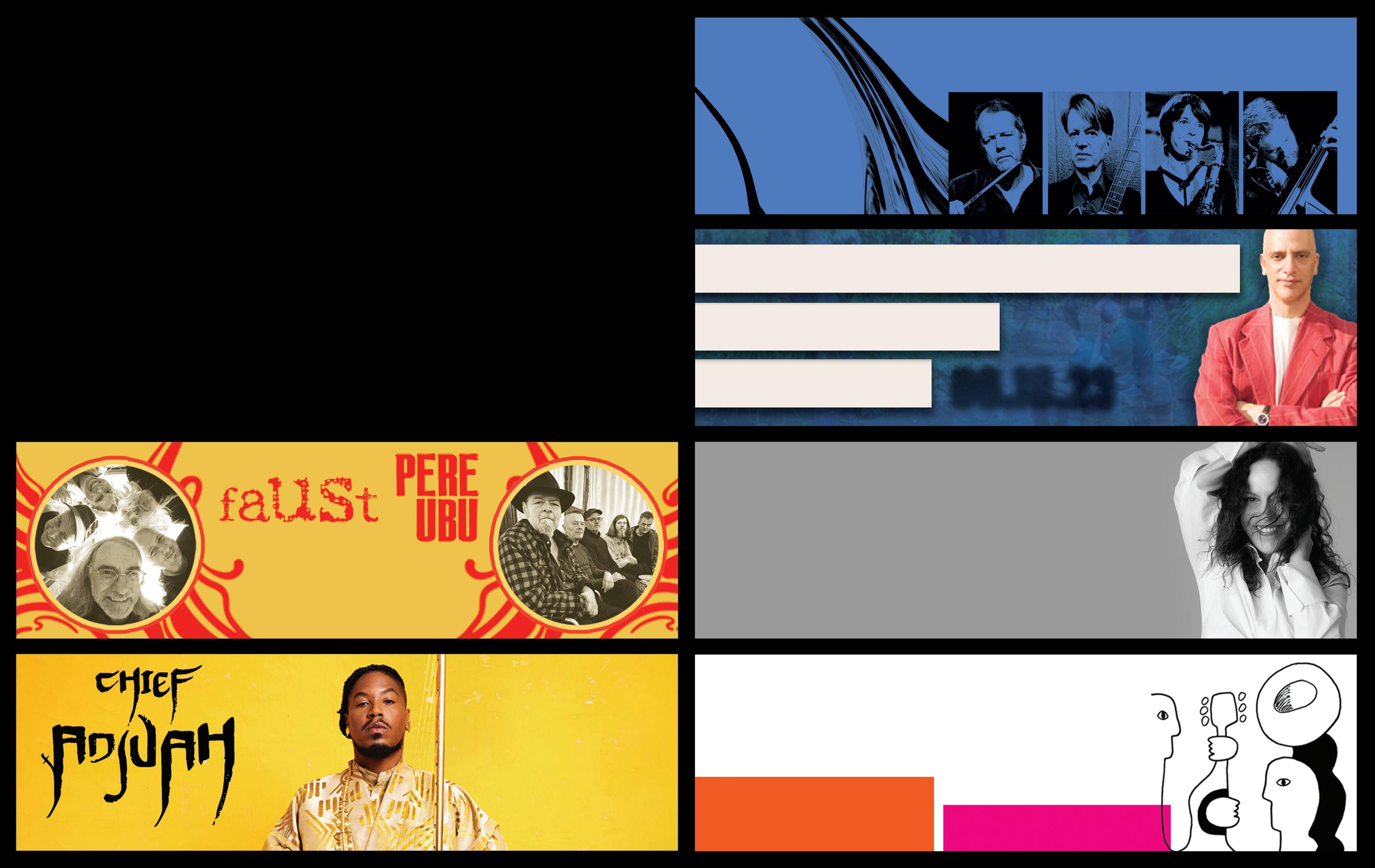

The singer meets the music on its own terms, not attempting to turn it into a boppish “jazz meets rock” project. The songs are mostly quite catchy (particularly “Wrap It u p” and the danceable “Sticking to My Guns”); Smith’s drumming is quite prominent, while Hunter takes a supportive role. Most rewarding is Jarreau’s “Boogie Down”, which has e lling scatting quite fluently and swinging in this sparse setting.
Will e lling fans embrace his latest effort? It helps to have an open mind toward soul/R&B singing, and to dismiss one’s expectations of what to expect from e lling. Chances are that Guilty Pleasures will be seen as a brief stop before the singer’s next major project.
For more info visit editionrecords.com. Elling is at Village Vanguard Jun. 6-11 with the Vanguard Jazz Orchestra. See Calendar.
premiere in Paris, but classical music fans soon began to appreciate the inspired innovations within the maestro’s groundbreaking work. Many jazz musicians have been drawn to Stravinsky’s music and there have been a number of earlier attempts by them, either solo or in a group, to interpret The Rite of Spring Pianist Harold Danko (who turns 76 this month) took a different path by composing a series of new works influenced by Stravinsky’s ballet score. Originally intending the music to be performed by his quartet, the pianist reworked it into a series of solo piano pieces, some of which were heard on his acclaimed Spring Garden (SteepleChase, 2021). This second volume further explores this body of Stravinsky-influenced compositions.
Rite Notes
Harold Danko (SteepleChase)
by Ken Dryden
I gor Stravinsky’s landmark score for The Rite of Spring drew brickbats from many who heard its 1913
The beauty of listening to this recording is detecting how Danko has incorporated snippets of Stravinsky’s masterpiece into his equally striking compositions. While Danko’s music isn’t nearly as percussive or dissonant as the original, it is no less mesmerizing. He also revisits some of the works from Spring Garden , including the somewhat humorous “Address u nknown”. On “ n o e scape”, a haunting ballad with a sense of terror just beyond the horizon, Danko strums the strings and makes use of the rarely utilized middle (sostenuto) pedal. He uses similar techniques in his raga-influenced “ n irigama”, a driving performance that incorporates a Bud Powelllike bass line. Danko’s detailed liner notes provide technical descriptions of each composition, with occasional hints as to his sources of inspiration, though there’s plenty of detective work left to listeners if they are so inclined. Rite Notes reveals new facets with each hearing.
For more info visit steeplechase.dk
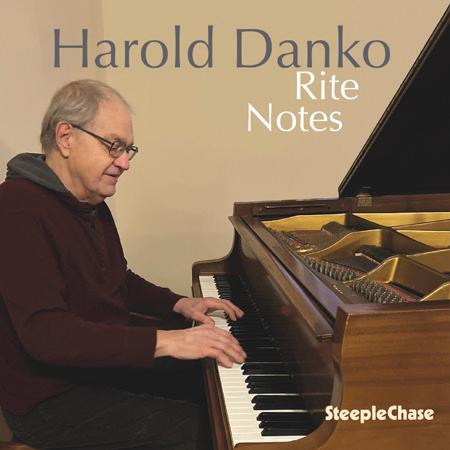
NELS CLINE: CONSENTRIK QUARTET
22 June 2023 | THE NEW YORK CITY JAZZ RECORD
FOR TICKETS AND INFO VISIT LPR.COM L I V
L
R LPR15
E AT
P
Femeninas: Songs of Latin American Women (feat. Magos Herrera)
Edward Simon (ArtistShare)
by Elliott Simon
F eminanas: Songs of Latin American Women builds upon native Venezuelan pianist e dward Simon’s previous Latin American Songbook (Sunnyside, 2016), by expanding its setting and narrowing its focus. Mexican vocalist Magos Herrera, Venezuelan percussionist Luis Quintero and Brazilian guitarist Romero Lubambo are featured, in addition to drummer Adam Cruz and bassist Reuben Rogers. The arrangements artfully complement Herrera’s voice while capturing the essence of each song. e ight tunes from female composers and a new three-movement suite showcase deep and varied emotions.

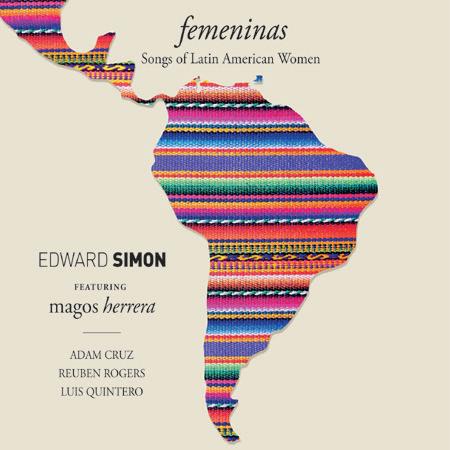
Brazilian artist Joyce Moreno’s title track is a lively opener, but Simon’s classically informed touch and Herrera’s vocals truly shine on the ballads and torch songs that follow. Herrera is the artistic advisor at Brooklyn’s n ational Sawdust and previously collaborated with Simon for a tribute to the late Argentinian songstress Mercedes Sosa. She channels Sosa’s spirit on Chilean composer Violeta Parra’s “Gracias a la Vida” while Simon applies his jazz sensibilities to this powerful performance of Parra’s life-affirming anthem. Simon opens Chabuca Granda’s Peruvian classic “La Flor de la Canela” with a gorgeous piano solo that picks up speed with Herrera’s entrance. The beautifully ethereal “Palabras”, featuring a lovely bass solo, and the touching “Hacia Dondé” represent important Cuban composer Marta Valdés.
Rogers’ beautiful bass arco work defines Argentinian Georgina Hassan’s “Tierra Movida”. More recent compositions are also included: a mystery-filled take on Chilean composer e lizabeth Morris’ stylish “Décimas”, and the breezy “Dunas”, from Rosa Passos and Fernando de Oliveira. Work from other notable Latin American women composers such as Ángela Peralta (Mexico) or Margarita Luna de e spaillat (Dominican Republic) would have been welcome, but instead Simon’s three-part “Latino Soy” completes the program. It begins with “Mujer Remolino”, initially a pleasant improvisatory performance by Simon that gradually transforms itself into a haunting recitation
inspired by female shaman Maria Sabina. The suite continues with the elegant e nglish language ballad “ n aked Sky”, and concludes with “Bulería”, a graceful blend of contemporary jazz and flamenco. While Herrera and Simon’s synergy is at the heart of Femeninas , they skillfully avoid overshadowing the tunes. Their leadership shines through as they bring a sense of familiarity and appreciation for the music, introducing these important women composers to a new audience.
For more info visit artistshare.com. Simon’s album release concert is at Dizzy’s Club Jun. 13. See Calendar.
The Red Door Orrin Evans (Smoke Sessions)
 by Keith Hoffman
by Keith Hoffman
O rrin e vans wants to tell you a story. That story is going to be broad and diverse, because e vans doesn’t believe in barriers of any kind. With The Red Door , the pianist pummels the barriers to dust, bringing together disparate source material and supremely talented musicians. Over two recording sessions, with two sets of musicians, he has produced a magnificent, coherent and beautiful story of love and loss.
The “base unit” on the album includes Gary Thomas (tenor/flute), n icholas Payton (trumpet), Robert Hurst (bass) and Marvin “Smitty” Smith (drums). For “The Good Life”, the leader brought the velvety tone of one of his great mentors and fellow Philadelphian, 82-yearold tenor saxophonist Larry McKenna. McKenna is still at the top of his game, and his solo turn is swinging, melodic and inventive. And it doesn’t hurt that the rhythm section here is: e vans, Buster Williams (bass) and Gene Jackson (drums)!
Then there is loss. Trumpeter Wallace Roney was one of the first to employ a young Orrin e vans. Roney and e vans recorded a deconstructed version of “All the Things You Are” on March 10, 2020, two days before the COVID-19 lockdown. Three weeks later, Roney was gone, making this track his last recorded output. The pianist pays tribute to the distaff side of their great (if impermanent) musical marriage with an avant gardeinfluenced version of Geri Allen’s “Feed the Fire”, and also tips his hat to Ralph Peterson Jr. with “Smoke Rings”. All major influences on e vans, and all taken much too young.
There is redemption here, as well. Two of the best pieces are “Weezy” and “Phoebe’s Stroll”, both written to honor e vans’ godchildren. “Weezy” was written at a Chicago piano with e loise literally at e vans’ side. The titular Phoebe is the younger daughter of Brinae Ali and trumpeter Sean Jones, and the funky, confident style e vans brings to the piece reflects the little girl’s personality when she was just a toddler.
Because of his musical range, complex yet melodic compositions and technical ability, e vans is on the short list of active, living piano masters along with the likes of players such as Brad Mehldau, Jason Moran and grandmaster (and a generation older) Kenny Barron. The Red Door is a superb addition to e vans’ canon of more than 25 releases as a leader or co-leader over the past quarter century; altogether, it is one of the most important collections in contemporary music.
For more info visit smokesessionsrecords.com. Evans’ album release concert is at Smoke Jun. 8-11. See Calendar.
When Harry Carney played bass clarinet on Duke ellington’s “Mood Indigo” (1930) it was an instrument he’d long-played, even before the baritone sax. Few practitioners of the grenadilla-bodied, metal-belled hybrid horn worked outside concert bands and symphonies back then, but ellington was always an innovator. In the ’60s the bass clarinet came to jazz prominence in the able hands of eric Dolphy, Bennie Maupin and Paul McCandless; later adherents include David Murray, Denis Colin and ned Rothenberg. Today, it may serve as a second or third axe and edgy alter ego for saxophonists in an ethnically expanding and sonically exploratory jazzosphere. Canada, netherlands and Germany bring us sessions that pit bass clarinetists (listed first) with long-standing colleagues.
Freedman and Thomson (trombone), accomplished veteran improvisors based in Montreal and Toronto, last paired up on disc in 2007 (Plumb, Barnyard). Amber is fossilized tree resin, and the two name their improvised artifacts for various chemicals that characterize amber types. Yes, aural-mineral metaphors do occasionally loom: “Glessite” sounds like crushing mica; “Cadinene” evokes ants quietly screaming to be released from golden prisons. Whale-song vocals arise: squiggly squeaks, gurgly coughs, key snaps, multiphonics. The soloists share the limelight equally, with a marvelous range of sonic variety and dynamic levels that range from a hush to a shout on their Amber collaboration.

Bass clarinetists Oğuz Büyükberber and Tobias Klein meet again (they’ve been at it 16 years) on Live at De Roze Tanker at the small Amsterdam arts club. Birds of a feather, they entwine necks, clack beaks, twitter querulously, and coo in the altissimo range. Their extensive ruminations range widely and well: gracefully arced arabesques cantilevering midway through “June, July?”, Middleeastern modes and mey-like ululations on “Crown Shyness”, and relaxed legato melodic ideas stretched over the finale of this half-hour set. On the website you can find a dreamy bonus track, where slap-tongue meets overtones.

Active cohorts on the Berlin scene, Rudi Mahall (clarinets, baritone) and Michael Griener (drums) go way back to their teenage years on Jazzpreis, and their witty, brisk exchanges on “Derweil...” reveal their long-standing intimacy. Their old wink-and-nudge routine peaks in a melee between bari shrieks and trap-set clanks in a track that translates roughly as “Late night in the Lockup”. Kati Mahall captures the music’s cut-and-paste-bits-makewhole-cloth mentality in her colorfully fragmented cover collages. Scintillating excursions for clarinet and vibraphone (and dry snare-less raps) break the textural skein. With their fluent phrasing, breathless pacing and clear intent, these two savvy veterans approach post-bop fragmentation freely, like, say, Scott Robinson and Han Bennink. Don’t blink!
On duos you might expect to find a few true solo passages for textural relief, but you’d find few here; with the exception of Amber’s extended pianissimo opening track and some other spots, the male protagonists on these albums vie competitively to cram notes into every cranny and suck air out of the space.

For more info visit cleanfeed-records.com, trytone.org and jazzpreis.com.
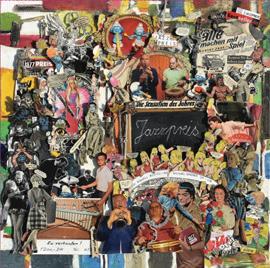
THE NEW YORK CITY JAZZ RECORD | June 2023 23
GLOB e un ITY
Amber
Lori Freedman/Scott Thomson (Clean Feed)
Live at De Roze Tanker
Oğuz Büyükberber / Tobias Klein (Trytone) Jazzpreis
Rudi Mahall/Michael Griener (Astral Spirits) by Fred Bouchard
Silent Films/Loud Music: New Ways of Listening to and Thinking about Silent Film Music
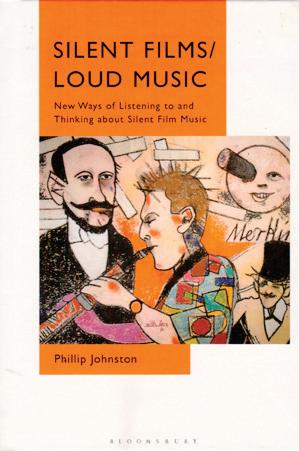 Phillip Johnston
Phillip Johnston
(Bloomsbury
by Ken Dryden
Academic)
P hillip Johnston is best known as the cofounder of the Microscopic Septet with pianist Joel Forrester. By the late ’90s, Johnston turned some of his focus to composing and performing new soundtracks for silent films. His new book on silent film music covers a lot of ground. He discusses the background music performed to accompany silent films in their day, which ranged from a solo theater organist or pianist improvising in response to the movie, to written-out cues for a group of musicians, and later completely composed scores, few of which have survived intact. His primary focus, however, is on new music performed to accompany silent films, regardless of genre. What is fascinating is how modern composers have approached writing or performing for these films in different ways. Freedom from limitations imposed by anyone associated with the original films enables new and sometimes unusual approaches, such as Forrester turning Nosferatu into a comedy and a Laurel and Hardy into a horror flick. Johnston believes that music is an equal partner to the film rather than merely serving as background, though the performance should be continuous.
Many commercial silent film DVDs have been released with one or more modern soundtracks. As Johnston notes, the quality of the music is all over the map, from electric organ played by a musician evidently seeing the film for the first time, to fully composed music, whether it is electronic, jazz, punk or a blend of classical themes.
In addition to discussing his own methodology for composing for silent films, Johnston elicits detailed information in his interviews with other soundtrack composers about how they create their soundtracks. The common thread is first viewing the film several times before starting work, even though the musicians feel no obligation to follow the guidelines created by filmmakers during the heyday of silent films.
Musicians will appreciate Johnston’s inclusion of an appendix presenting manuscript examples of his own writing for silent film. Detailed footnotes encourage further reading and research. The wealth of information in this valuable study should encourage other composers in many genres to write and play new music for silent films, though it won’t necessarily be for the money! Hopefully, arts organizations outside the major cities will begin to offer silent film festivals with live music; but for now, most fans will have to find DVDs with modern soundtracks.
For more info visit bloomsbury.com. Johnston’s book launch is at Barbes Jun. 1. He also plays with Richard Dworkin Orchestra at Barbes Jun. 2. See Calendar.
Kate Gentile/International Contemporary Ensemble (Obliquity)
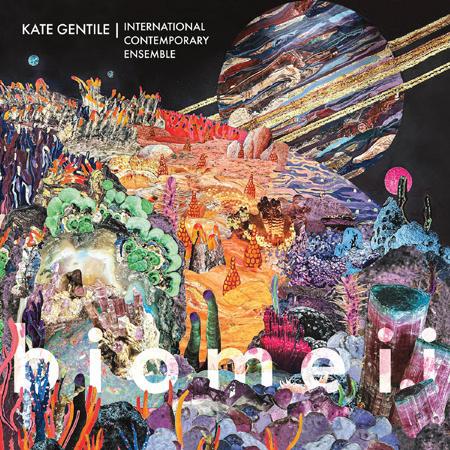 by George Grella
by George Grella
Kate Gentile is a drummer and percussionist who plays with the likes of pianist Matt Mitchell, guitarist Ava Mendoza and guitarist/banjo player Brandon Seabrook. She has a recent eponymously titled release of her band Secret People (on Out Of Your Head), which is described as a “cryptic jazz/noise rock project.” That’s a way to introduce this album, which is not necessarily a jazz record but rather a thirteen-movement composition performed by a prominent new music ensemble.
What it shares with her playing is the “cryptic” part, which describes the kind of complex rhythms that Gentile and Mitchell play in their band Snark Horse—the beats come in fragments that collide rather than join together smoothly. This is the kind of discontinuous structure that John Zorn pioneered with his game pieces. Those pieces took advantage of improvising musicians’ quickness; composing with this same kind of quickness is possible, but an altogether different, and harder task.
This is music that seems to be always trying to build something; it’s full of effort but only intermittently produces rewards. On sections like “bippf”, the woodwinds try to carve a rising, striving phrase out of the percussion’s aggressive, off-kilter rhythms—they get there, but only for a moment. Other sections sound improvisational, but hemmed in by specific cues.
The music has a dense texture, which is an ambiguous virtue. There is past music that is quite concentrated because it has a lot to say, like that of Charles Ives (whose influence seems to be here in some small phrases) or Cecil Taylor, but being cryptic is the opposite of that. The orchestration is murky and relentlessly-so in the middle range, which contributes to a monotonous and rather faceless experience, making it impossible to know exactly what Gentile is trying to say.
For more info visit kategentile.com. Gentile is at Bar Lunàtico Jun. 27 with Caroline Davis. See Calendar.
revealing a unique sonic wonderland.
The second innovation is the installation of a series of metal tines attached to a second bridge on Dresser’s bass. The tines are graduated in length and can be plucked or bowed—an amalgam of the African mbira or stroked rods designed by the composer Robert erickson. The results are frequently stunning. Audio engineer Alexandria Smith is crucial to the success of Tines of Change, capturing both the hugeness of Dresser’s sound and the intricate and amazing details within his performance.
Describing the music is difficult. Dresser’s fullthroated arco work is often juxtaposed against startling pizzicato effects that might convince the listener that multitracking or significant electronic manipulation is employed. (neither technique is used.) The results are staggering: on pieces such as “Bitonetime”, Dresser generates so much continuous sonic onslaught that you might suppose the bassist has at least three hands.
“I think of the bass as an orchestra,” says Dresser in his self-penned liner notes, and this is apparent throughout the music. His compendium of extended techniques creates a singular sonic landscape that transports the listener into a beautiful alternate reality.
For more info visit pyroclasticrecords.com. Dresser is at Zürcher Gallery Jun. 12, Roulette Jun. 14 as part of Vision Festival and plays/curates The Stone Jun. 28 - Jul. 1. See Calendar.
Tines of Change Mark Dresser (Pyroclastic)
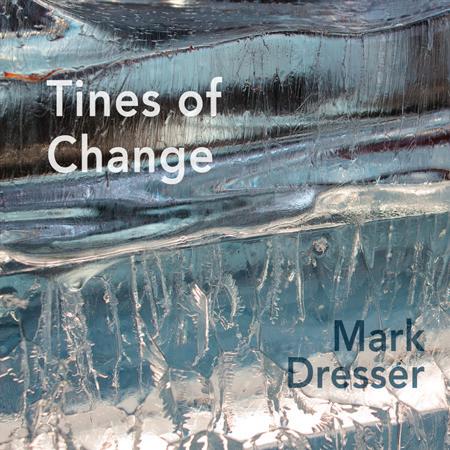 by Robert Bush
by Robert Bush
Bassist Mark Dresser is a master of the solo recital. Recent breakthroughs include his marvelous Unveil (Clean Feed, 2005) and Guts (Kadima Collective, 2010). Tines of Change is the latest development along these lines, and he performs it on two special instruments created by luthier Kent McLagan (a four- and five-string model). McLagan has been building custom instruments from sustainable woods for more than twenty years. The first modification on Dresser’s instrument came in 2000 when McLagan embedded handwound magnetic pickups in the fingerboard. These allow certain overtones and pitch segments to be amplified—
Homage
Sheryl Bailey Quartet (PureMusic)
 by George Kanzler
by George Kanzler
Guitarist Sheryl Bailey includes a definition of the word “homage” on the back of this LP release, along with the statement, “All these compositions are to honor my influences, and the performances are all to channel my deepest gratitude towards those that have been mentors and friends throughout my career, on and off the bandstand.” However, the cryptic titles of her eight selections (e.g., “The Velvet Hammer” or “A Fine Vine”) offer scant clues as to who the homages are for. Originally drawn to jazz guitar after hearing Wes Montgomery, Bailey could well be referencing him. But we don’t know. What we do know is this quartet includes Miki Hayama (electric keyboards), Harvie S (bass) and neal Smith (drums). A grant from Berklee College of Music, where Bailey is a veteran faculty member, made this vinyl + digital download only release possible.
Bailey’s sound combines a clean, single-note style with a mild reverb/echo. “The Velvet Hammer”, the opener, has distinctive, popping lines and an easy swing. The most striking of the eight originals is the Side One closer, “Lazy Dazy”. Like the late Oscar Pettiford’s “Tricotism”, its theme is played in lock-step by two instruments, in this case guitar and drums (sticks). Bass and keyboard eventually join in with riffs that expand the tune, with solos all around, including beguiling pizzicato from Harvie S.
Other selections also have welcome surprises. “Walk up”, a mid-tempo swinger, in AABA form, races doubletime through the B section. Climbing, overlapping, echoey guitar chords feature on the climax of the silky ballad “A Fine Vine”. eerie synth keyboards add spacey audio to “The Search for new Light”. And “exit” opens with drums soloing against jabs of Harvie S’ bow on strings, before segueing into a more conventional 4/4 guitar quartet sound to end Side Two.
For more info visit sherylbailey.com. Bailey’s album release concerts are at Zinc Bar Jun. 5 and Bar Lunàtico Jun. 24. See Calendar.
24 June 2023 | THE NEW YORK CITY JAZZ RECORD
b i o m e i.i
I n PRI n T
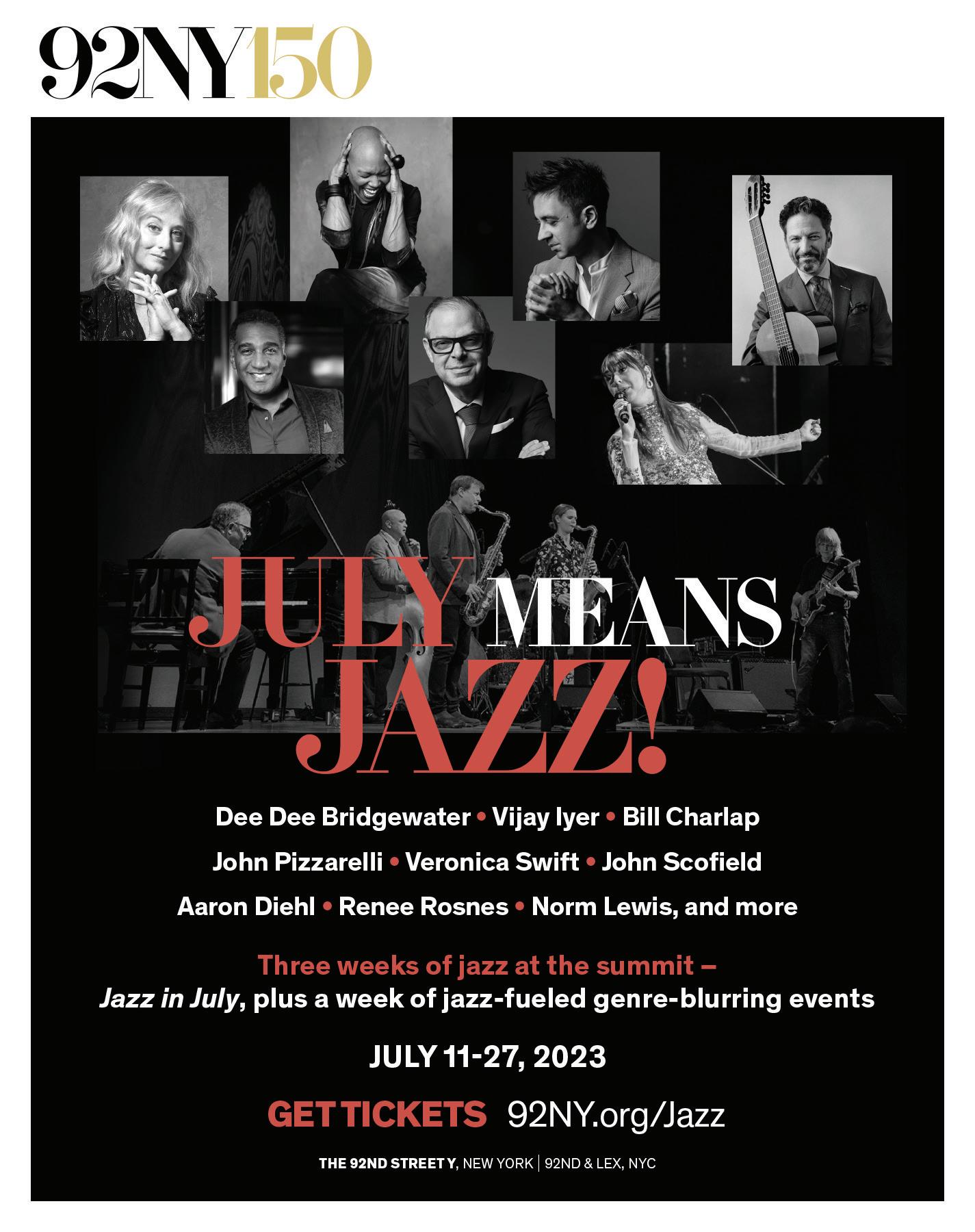
Sky Continuous Noah Preminger Trio (Criss Cross)
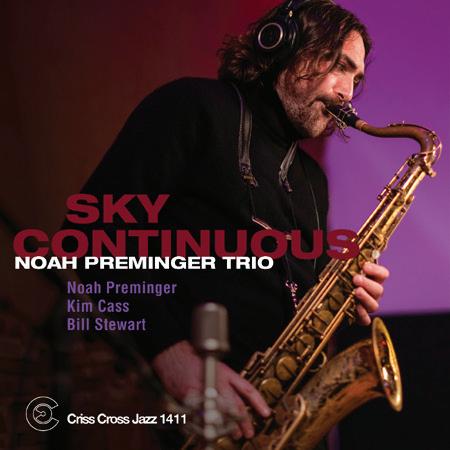 by Ken Dryden
by Ken Dryden
n oah Preminger is one of the most adventurous and least easily categorized tenor saxophonists of his generation; he’s also a versatile and prolific composer. This record date is a rare opportunity to hear him leading a trio with just bass and drums accompaniment. His frequent collaborator Kim Cass (bass) was a natural choice for the session, as they have also toured extensively together, while veteran Bill Stewart (drums) was suggested by the late Gerry Teekens (founder of Criss Cross Jazz) prior to his death in 2019. each of Preminger’s originals has a unique character that inspires the trio to great heights. Because the leader’s compositions are not heavily arranged, they instead provide frameworks for exploration that give Cass and Stewart plenty of freedom.
The acronym “FTGOP” hardly needs to be spelled out for anyone who closely follows recent u.S. politics; its turmoil and twists are handled with finesse, highlighted by Stewart’s off-center drumming. The loping, laconic “High or Booze” finds Preminger in a wistful mood, incorporating Cass’ brooding bass and Stewart’s dynamic drumming. The haunting “Iris”
honors Preminger’s grandmother, who succumbed to COVID early in the pandemic. The tenor saxophonist’s emotional playing elegantly conveys his sense of loss; as Cass keeps vigil with his pensive bass, they are buoyed by Stewart’s adept percussion. Preminger’s breezy “Sky Continuous” summons imagery of the open road on a beautiful day. The title of “Jamz” suggests an uptempo setting, but it surprisingly has a deliberate gait. Despite that, it simmers nicely, with occasional rapid-fire outbursts in Preminger’s solo and an intricate Cass bass feature. The final track is a wild interpretation of the late alto saxophonist Jackie McLean’s “Little Melonae”, a bop classic recast in a totally new light by the trio.
For more info visit crisscrossjazz.com. Preminger is at Bar Bayeux Jun. 13. See Calendar.
the pioneer fusion bands Return to Forever and Weather Report are beefed up with horn charts reminiscent of rock horn bands such as electric Flag and Blood, Sweat & Tears. Motown and James Brown are also revisited, as is Burt Bacharach.
Time Capsule
Bill Warfield and the Hell’s Kitchen Funk Orchestra (Planet Arts)
by George Kanzler
T rumpeter Bill Warfield’s Time Capsule is a brass and reed–heavy trip down the leader’s musical memory lane, with an emphasis on the pop and jazz fusion hits of his formative years (the late ’60s and ’70s). Tunes from
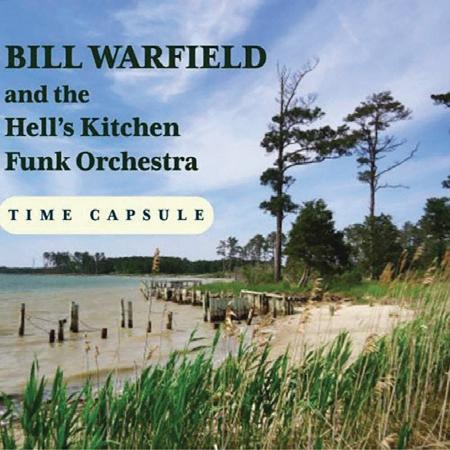
The opener, Billy Taylor’s “I Wish I Knew How It Would Feel to Be Free”, features the versatile Broadway and pop-rock singer Chrissi Poland. Its emphatic horn charts and churning mix of Hammond organ (Paul Shaffer) and piano (Cecilia Coleman) recall the 1969 version by San Francisco rock horn band Cold Blood and its vocalist Lydia Pense. But Poland isn’t just a jazzrock belter. She brings out the tenderness in the ballad “Alfie” (also heard in an instrumental version featuring the leader’s trumpet) and conjures up The Temptations with overdubs on “Just My Imagination”. She also brings the requisite vocal power to Percy Mayfield’s “Please Send Me Someone to Love”, which is pumped up with horns and organ. Her other vocal is on “Let It Go”, from Disney’s Frozen Warfield dresses up Return to Forever’s “Light as a Feather” with dual flugelhorns leading the ensemble (it’s the one track recorded live in concert). Shaffer’s organ and Scott neumann’s drums propel the funk on James Brown’s “Cold Sweat/I Got the Feeling”, with gritty solos from Matt Hong (alto), Kurt Bacher (baritone) and Matt Chertkoff (guitar). Alto saxophonist Lou Marini and tenor saxophonist Dave Riekenberg are compelling on Joe Zawinul’s “Man in the Green Shirt”. Bacher and Warfield prance through the boogaloo of “Zoe’s Dance”. And for contrast to the pop-fusion-funk, there’s Hank Levy’s “Chain Reaction”, in 13/8, with Warfield overdubbing all the brass.
For more info visit planetarts.org. Warfield’s album release concert is at Silvana Jun. 30. See Calendar.
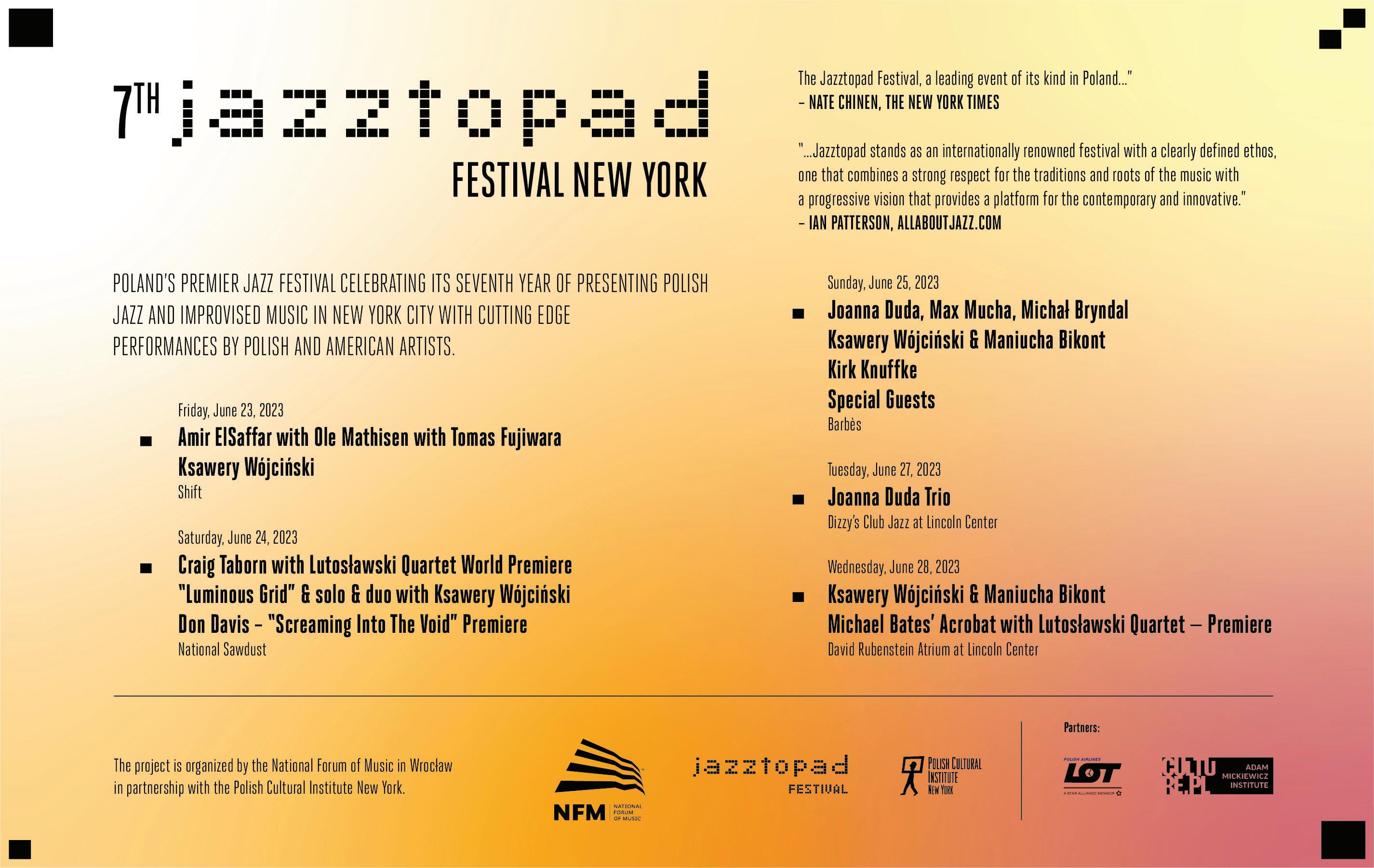
26 June 2023 | THE NEW YORK CITY JAZZ RECORD
Far Far Away (feat. Kurt Rosenwinkel) Jim Snidero (Savant)
 by Terrell K. Holmes
by Terrell K. Holmes
F ar Far Away by alto saxophonist Jim Snidero is an embarrassment of riches. This remarkable album contains a great roster of mostly original tunes, with Snidero joined by an all-star band featuring Kurt Rosenwinkel (guitar), Orrin evans (piano), Peter Washington (bass) and Joe Farnsworth (drums).
Rosenwinkel states the band’s case immediately on the title track, leading off with a fiery solo that grabs the listener by the shoulders and sets the tone for not only this song but the rest of the album. The brooding “Infinity” has strong soloing by Snidero, Rosenwinkel and evans, with each solo moving the song toward its unresolved ending—which makes sense: how can one resolve infinity? “nowhere to Hide” swings effortlessly, with more great soloing again from the leader, guitarist and pianist. Farnsworth’s boogaloo-inflected drumbeat provides the underpinning for the the moody and pensive “Obsession”. The band takes a strut along the block with the light-hearted bopper “Pat”, with Washington finally stepping forward for a brief, nimble solo of his own. “Little Falls” is as crisp and cheerful as a drive through snowy mountains on a winter’s morning.
In addition to his own tunes, the leader adds a pair of classics to the mix, which the band interprets faithfully, though not without its own signature. The quintet renders McCoy Tyner’s “Search for Peace” with the tenderness and introspection that it deserves. Snidero’s somber statement of the theme and Washington’s pizzicato are pitch perfect. And Snidero, Rosenwinkel, Farnsworth and Washington’s heartfelt version of Rodgers and Hammerstein’s “It Might as Well Be Spring” is as good as any that has been recently recorded.
Far Far Away is a pleasure to listen to. How can an album with this lineup not be? Led by the alto saxophonist’s stellar playing and composing, this quintet’s smoothness and cohesion is enviable and exemplary. This unit makes sounding great seem easy; they also make Far Far Away a prime candidate for Best of the Year lists.
For more info visit jazzdepot.com. Kurt Rosenwinkel is at Village Vanguard Jun. 27-Jul. 2. See Calendar.
statement. How to follow that up couldn’t have been a light question. What he apparently decided to do was to go low-key, and what he found was dense, perplexing, sometimes exhilarating and consistently intriguing.
Open Arms included more than two dozen guests, many contributing vocals; some voices were seemingly recorded impromptu and dropped in later. Certain Reveries is a duo with drummer Tommaso Moretti. But it’s not as simple as that. Trumpeter Gay’s is the sole singing voice on the album, and then only occasionally. He fills out the textures with liberal use of synthesizers, often droning in organ tones or sounding more like machinery. The album (which only got a cassette and digital release) still feels like a duo, but a very big duo.
Gay and Moretti have worked in partnership in the past under the name Bottle Tree, but their songwriting and sound-making has grown considerably since their sole release in 2017. Comparisons between their new album and Lester Bowie’s duo with Philip Wilson (as well as his wonderful solo album All the Magic! ) are both inevitable and apt, with glimmers of Sun Ra’s outer realms discernable in the open-ended keyboard excursions. Moretti, for his part, is a remarkable drummer. His fast, light playing was a big part of what made Open Arms to Open Us so exciting. Given less structure in the new album’s tracks, he has more room to wander. Some of the extended synth and drum improvisations are truly fantastic.
Almost certainly, another bud of Gay’s sound, song and discovery will blossom in the future—indeed, hopefully many more—and no doubt Moretti (who may be to Gay what Dannie Richmond was to Charles Mingus) will be part of it. If Certain Reveries is a bit of a placeholder, it still earns its place.
For more info visit intlanthem.com. Gay is at Roulette Jun. 15 with Mike Reed as part of Vision Festival. See Calendar.
ear label’s Blue Series, some 20 years ago (one Blue Series release was a collaboration between Antipop and pianist Matthew Shipp); at other times, such as “Mainsource C”, it sounds like a Timbaland and Missy elliott track played underwater. Late in the album’s second half, the “GLP3” > “GLP1” > “GLP” sequence comes across like a lost 12” single from the cult dub techno label Basic Channel, with just a little extra boom-bap in the middle section. The disc ends with “Mainsource C1”, its longest track at more than seven minutes; this cut feels the most “organic” and the least “produced”, and even ends with applause, but as this record proves, the instant you make the first edit, you’ve created sonic fiction. What matters is the final product.
For more info visit 577records.com. Cleaver is at Roulette as part of Vision Festival: Cleaver’s Black Host Jun. 14, Cleaver with William Parker’s Mayan Space Station Jun. 16 and with Lopez’ “the gospel of sans” Jun. 17. See Calendar.
DROP TH e nee DL e
T he late Andrew Hill (who died 16 years ago this month) had a command of the piano on par with his contemporaries, but his nuanced melodic quality has arguably fallen through the cracks of jazz history. With Dance With Death , Hill proved that he could build uniquely intricate mosaics.
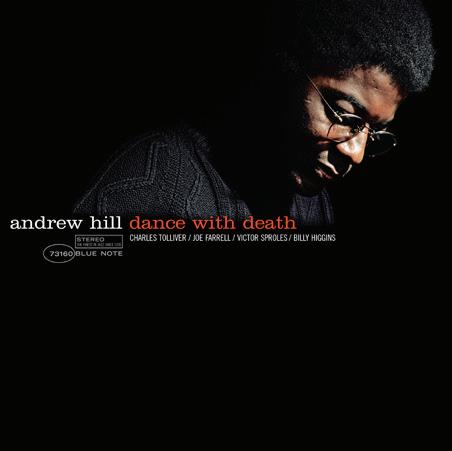
In the Wilderness Gerald Cleaver/Brandon Lopez/Hprizm (577 Records) by Phil
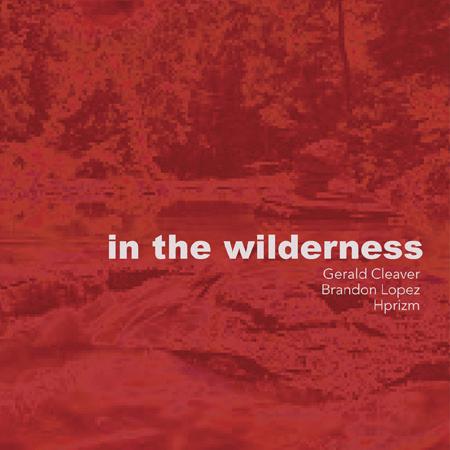 Freeman
Freeman
Gerald Cleaver is one of the most creative drummers on the current music scene. He plays conventionally swinging jazz and the freest improvisation with equal facility; he’s worked with performers as different from each other as trumpeter Jeremy Pelt and saxophonist Charles Gayle, but that’s because he sees it all as one thing, not as a dichotomy. And in recent years, he’s embraced the music of his upbringing in Detroit by leaning into electronic sounds on albums including Signs and Griots , which featured an array of modular synth sounds, programmed techno beats, and guest appearances from trumpeter Ambrose Akinmusire and keyboardist David Virelles.
Recorded in 1968 but not released until 1980, Dance With Death begins with the solemn “Yellow Violet”. The melody seamlessly weaves together the timbres of trumpeter Charles Tolliver and soprano saxophonist Joe Farrell (elsewhere heard exclusively on tenor). The original Hill composition (one of six on the album) is also a keen example of Hill’s expertise as an accompanist, as he gently entwines his piano with Tolliver’s solo.
The pianist is especially adept at balancing different tones. While “Yellow Violet” is reflective, the subsequent “Partitions” is a lively hard bop tune, complete with a beautifully executed solo from the leader. “Fish ’n Rice” shows the ensemble at their most free, guided by a firm, fun groove underpinned by Victor Sproles (bass) and Billy Higgins (drums).
Certain Reveries
Ben LaMar Gay’s Open Arms to Open Us (2021) was an exciting and revelatory release. He’s a member of the Association for the Advancement of Creative Musicians, has spent three years living in Brazil, has composed for new York City’s Wet Ink ensemble and duetted with Chicago’s DuSable Bridge. On Open Arms , all these influences congealed into a remarkable and joyous
In the Wilderness is an experimental release that takes as its source material an improvised live performance, a 2019 duo between Cleaver and bassist Brandon Lopez. (They’ve been playing together for several years, sometimes just the two of them and sometimes in a trio with poet Fred Moten.) These recordings were given to Kyle Austin, aka High Priest of avant-garde rap crew Antipop Consortium, currently known as Hprizm. He manipulated them, added sounds, sent them back to Cleaver and Lopez for revision as a good editor should, and together they gradually built this album. Sometimes, such as on “Hopoff” with its fractured organic breakbeats, it sounds like a refracted, dubby version of the fusion of jazz and electronic music from the Thirsty
The title track is a great example of Sproles’ simple line, anchoring the music’s atmospheric and, at times, nefarious feel. The sole ballad, “Love n octurne”, reveals the romantic side of Hill who beautifully evokes the nature of love with subtle adornments. The album ends on a high note with closer “Black Sabbath”, a showcase for Farrell, whose tenor solo veers between unbridled and controlled.
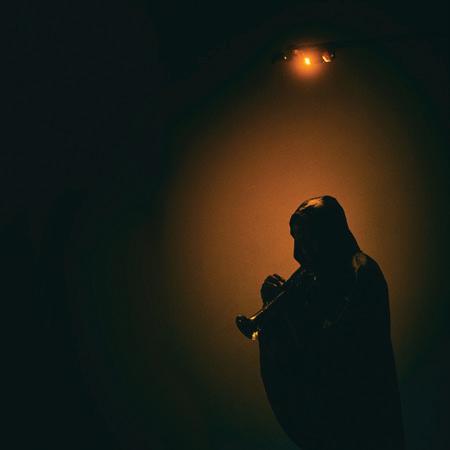
n o longer under-appreciated, Dance With Death demonstrates Hill’s sophisticated compositional style. History can now help this album finally get its due in no small part to it getting the Blue n ote “Tone Poet Series” audiophile treatment: cut directly from the original analog tapes and released on 180g vinyl with deluxe gatefold packaging. A feast for the eyes and ears.
For more info visit bluenote.com
THE NEW YORK CITY JAZZ RECORD | June 2023 27
Ben LaMar Gay (International Anthem) by Kurt Gottschalk
Dance With Death Andrew Hill (Blue Note) by Eric Wendell
JUNE 1
SEKOU MCMILLER AND FRIENDS: AFRICAN DIASPORA AND DANCE
JUNE 2– 4
DION PARSON & 21ST CENTURY BAND
JUNE 5
SONIC FESTIVAL: CLARICE ASSAD (7:30PM) & YOSVANY TERRY (9:30PM)
JUNE 6
HARRY BELAFONTE’S CALYPSO REIMAGINED
JUNE 7
BRIAN CHARETTE QUARTET
JUNE 8
STEVEN FEIFKE BIG BAND
JUNE 9 –10
ANDRE CYRILLE AND CARIBBEAN CROSS-GENERATIONS
JUNE 11
SONGBOOK SUNDAY: FATS WALLER
JUNE 12
JAZZ AT LINCOLN CENTER YOUTH ORCHESTRA
JUNE 13
FEMININAS: SONGS OF LATIN AMERICAN WOMEN
JUNE 14
ALEX WEITZ QUARTET: ALBUM RELEASE (7:30PM) & RUBEN FOX & FRIENDS (9:30PM)
JUNE 15 –18
VIJAY IYER TRIO
JUNE 19 – 20
BRYAN CARTER PRESENTS “JAZZ AT PRIDE”
JUNE 21
DANTON BOLLER CELEBRATES “THE SENATOR”
JUNE 22
DOUG BEAVERS: LUNA ALBUM RELEASE
JUNE 23 – 24
CARIBBEAN DIASPORA BIG BAND
JUNE 25
TERELL STAFFORD, RODNEY WHITAKER AND FRIENDS
JUNE 26
BENNY BENACK III: THIRD TIME’S THE CHARM ALBUM RELEASE
JUNE 27
7TH JAZZTOPAD FESTIVAL NYC PRESENTS:
JOANNA DUDA TRIO
JUNE 28 – 29
NEW YORK SALSA JAZZ PROJECT
JUNE 30 –JULY 2
CHARLIE SEPULVEDA AND THE TURNAROUND
JAZZ.ORG/DIZZYS 7:30PM & 9:30PM
SUNDAYS 5PM & 7:30PM
212.258.9595
BROADWAY AT 60TH ST.
You Break You Buy
Mick Rossi/Peter Hess/Matt Moran (Diskonife) Wild Awake
Darren Johnston (Diskonife) Audible Spirits
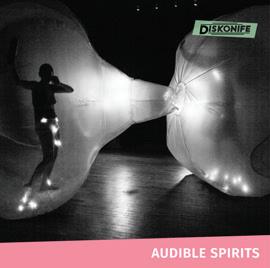
Matt Moran (Diskonife)
by Elijah Shiffer
W oodwind player Peter Hess and percussionist Matt Moran are two of Brooklyn’s (not to say the world’s) most versatile musicians. Both have performed and recorded with a seemingly infinite roster of artists across the entire range of composed, improvised and traditional music. As collaborators, they’re perhaps best known as members of the Balkan brass band Slavic Soul Party! Hess and Moran are also the founders of Diskonife, a label mostly dedicated to their own projects as leaders and co-leaders. The label’s three latest releases are very different from each other, but all sound like a lot of fun to create— the kind of fun you’ll be familiar with if you’ve ever heard Slavic Soul Party!
On You Break You Buy , Hess and Moran are joined by Mick Rossi (keyboards, drums), another eclectic multi-instrumentalist who’s worked with the greats of every genre. Given the lineup, it’s no surprise that this album is impossible to categorize; its vast sonic palette is united by these players’ love for the diversity of music. The 11 tracks are improvised throughout, but with tight overdubbing, which transforms them from jams to arrangements. The title track is a great example, sounding almost like a zanier version of the Claudia Quintet (another ensemble featuring Moran). Hess in particular explores overdubbing as a guitarist would use effects pedals, as in “Constants”, where he creates a continuous trill that shifts in timbre between tenor sax and clarinet. Other highlights include Rossi’s fiery solo piano track “Free Lunch” and Hess’ wideinterval clarinet lines on “ u rsa Major Minor”.
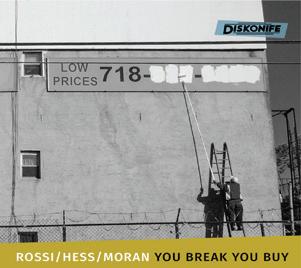
e qually joyous is trumpeter Darren Johnston’s Diskonife debut, Wild Awake . Though more traditional in instrumentation than the label’s other new releases, this quintet album features a slippery rhythm section (Jacob Sacks-piano, Sean Conlybass, Ches Smith-drums) that seems prepared to go anywhere at any time. Johnston and saxophonist Dayna Stephens form a sure-footed front line, one that goes right along with the many shifts in time and feel, over the seven tracks. Stephens is an interesting choice for such a playful ensemble; his lines have a polished quality that often contrasts with the other players’ hijinks. Johnston’s voice is heard on “Joe Hill’s Last and Final Will”; he sings the namesake labor activist’s final testament in a beautiful ballad setting, approaching it like a venerable jazz standard.
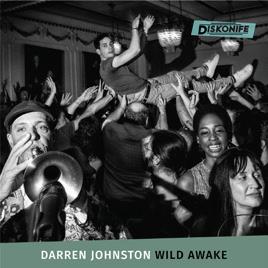
Interpreting standards from an experimental direction is always fascinating, and Audible Spirits is a standards album with a major twist. The trio of Moran (vibraphone), Curtis Hasselbring (trombone) and Sarah e lizabeth Charles (vocals) is joined by a unique accompanist: samples of Jamey Aebersold Play-A-Long recordings. The eight songs use this source material in several ways; some are charming arrangements (such as Antonio Carlos Jobim’s “Girl from Ipanema”) while others are barely recognizable. On Jerome Kern’s “All the Things You Are”, Moran solos over two simultaneous backing tracks at completely different tempos. Charles’ warm-toned voice holds things together when the accompaniment gets particularly skewed. There have been all sorts of opinions on Aebersold and
the Play-A-Longs, but it’s refreshing to hear them reimagined with these players’ sly sense of humor. This is a novel approach to music-making that breathes new life into recordings we never thought would get it.
For more info visit diskonife.com. All three projects are at The Owl Music Parlor Jun. 3 as part of a Diskonife showcase. See Calendar.
What a Way to Go!
Ben Cassara (Audiophile)
by Marilyn Lester
W ell known as a vocalist and producer around n ew York and its environs, Ben Cassara knows jazz deeply. He studied with a trio of late jazz divas, Carol Fredette, Roz Corral and Marlene Ver Planck, picking up a thing or two about selling a song. His strong suit is a sharp eye for talent, as demonstrated in the quintet backing his latest (second) album, What a Way to Go! . Right out of the gate, in “I Just Found Out About Love” (Jimmy McHugh, Harold Adamson), Josh Richman’s piano is delightfully forward with its lyrical, upbeat swing. Ronny Whyte, the album’s producer, also guests as a pianist on four of his originals. His song “The Party u pstairs” (lyric by Roger Schore) is one of those swell, sophisticated numbers you can imagine Cole Porter writing back in the day. This number also introduces the mellow saxophone of Harry Allen, who happily demonstrates his chops on quite a few of the album’s other cuts.
Cassara does well with this kind of light swing. He’s got a pleasant mid-range tenor, a propensity to exaggerate final t’s and a vibrato that reveals itself in ballads. In many respects, his style is akin to a less assertive form of Steve Tyrell’s. Still, even with a gentle delivery, Cassara has a way with a lyric and can certainly put a song across. Duke e llington’s usually zippy “I Let a Song Go Out of My Heart” (Henry n emo, John Redmond) is thoughtfully delivered as a torchy blues ballad. Transforming this standard into a story song works nicely, shining a spotlight on how a re-imagining and clever arrangement can give an old chestnut, even as great as e llington’s, new life and new meaning. Another master of mood and melody, Antonio Carlos Jobim, is present on this album in bossa nova classics “Living on Dreams (Vivo Sonhando)” (alternate e nglish lyric by Susannah McCorkle) and “Fotografia”.
What a Way to Go! is a highly curated piece of work, devised by someone who’s intimate with the jazz repertoire as a whole and who has an ear for neglected material. Cassara, for instance, is a fan of songwriter Dave Frishberg, and includes “Zanzibar”, “Let’s e at Home” and “Wheelers and Dealers”. It’s on “Let’s e at Home” that drummer Tim Horner and bassist Boots Maleson finally get to show off their stuff; their solos are brief but demonstrate why they’re highly in demand. As for “What a Way to Go”, the ballad by June Tonkin confirms Cassara as a pleasantly savvy singer who uses his voice wisely. He’s just the ticket for a listener who’s looking for something off the beaten path.
For more info visit jazzology.com. Cassara’s album release concert is at Pangea Jun. 7. See Calendar.
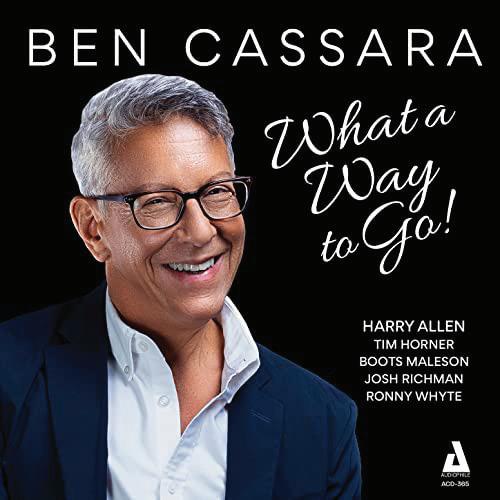
28 June 2023 | THE NEW YORK CITY JAZZ RECORD
Criss Cross Jazz latest releases
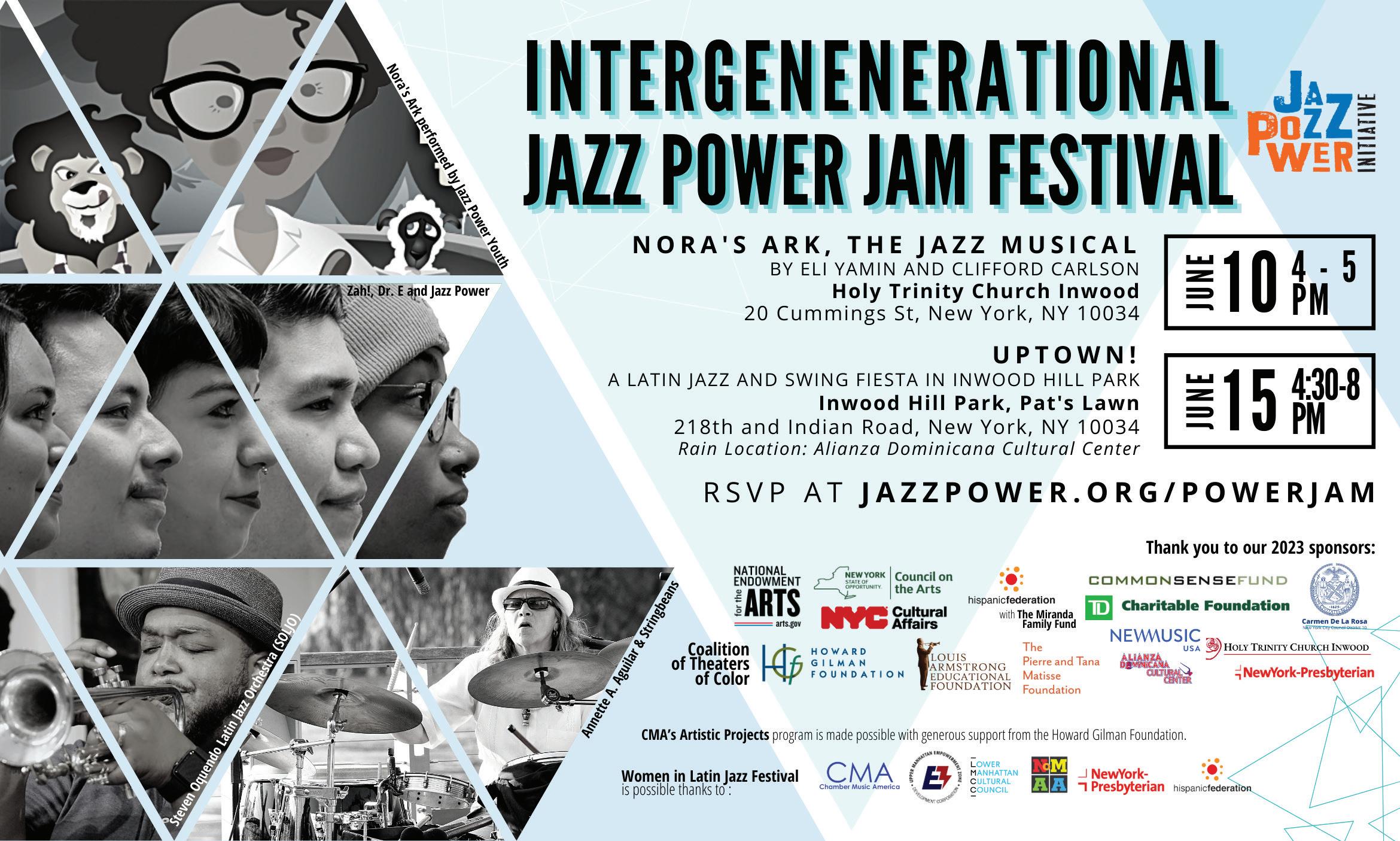
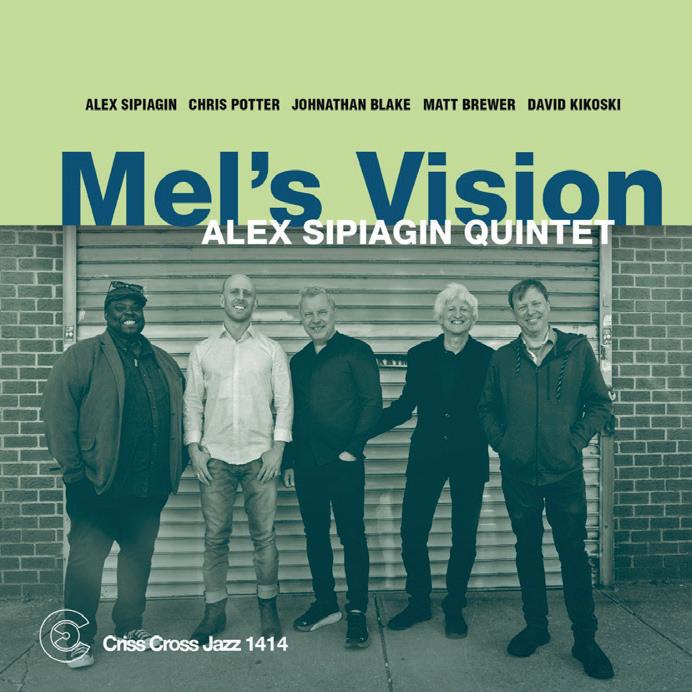
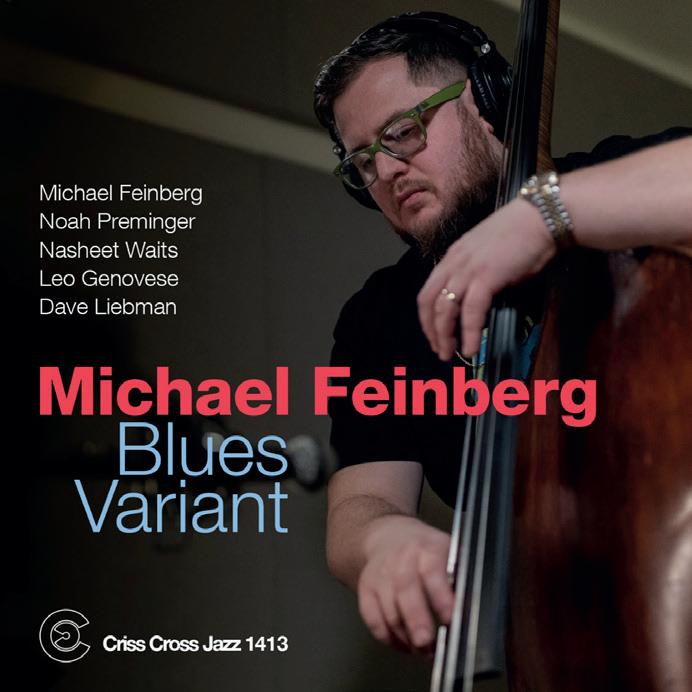


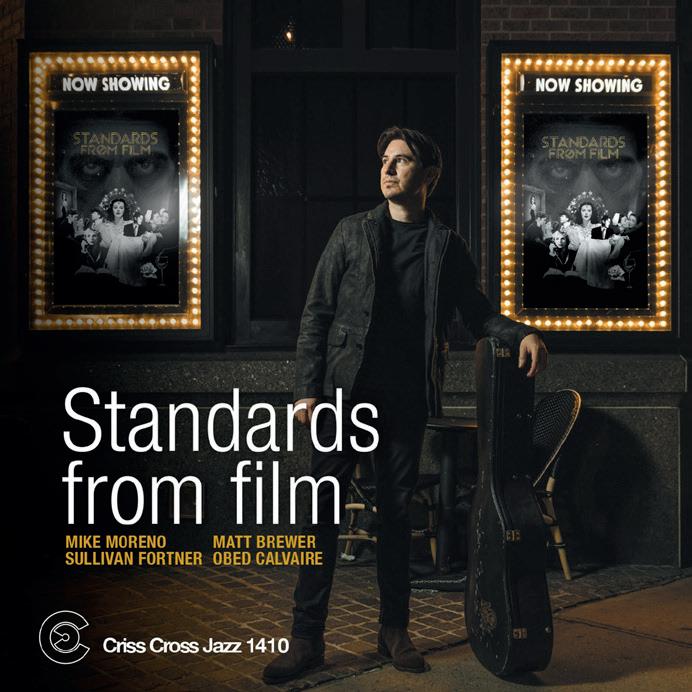




www.crisscrossjazz.com info@crisscrossjazz.com
MID2023ALSOONVINYL RELEASEDMAY26
CrissCross81 @crisscrossjazzrecords Criss Cross Jazz Recordss
Luna Doug Beavers (Circle 9) by
Russ Musto
T rombonist Doug Beavers is a mainstay of the Spanish Harlem Orchestra and eddie Palmieri bands. On Luna , his fourth effort as a leader, the follow-up to his critically acclaimed Sol date, he again proves himself not only a talented trombonist and commanding bandleader, but a first rate composer and arranger in the tradition of Thad Jones, Marty Sheller and Don Sebesky.
The first half of the album features the six-movement “Luna Suite”, performed by a nonet that includes Jeremy Bosch (flute/vocals), Ivan Renta (tenor and soprano saxophones), Manuel “Maneco” Ruiz (trumpet and flugelhorn), Max Siegel (bass trombone), Gabriel Chakarji (piano), Jerry Madera (bass), Luis Quintero (congas and timbales) and Camilo Molina (drums and bongos). It opens with a tranquil “Intro”, which leads into the dynamic “Tidal”, on which vibrant horns soar over Afro-Cuban cadences. “Reflejo del Sol” has Bosch’s flute floating gently over the ensemble. The band then switches gears, swinging soulfully on the reggae-flavored “Piedras”. Bosch is featured singing his Spanish language lyric to the gamboling melody of Beavers’ “Multicolores”, with guest vocalist Carlos Cascante joining the band on

the gorgeous bolero title track that closes the suite.
An expanded ensemble, with Luques Curtis taking over bass duties and Robby Ameen and George Delgado augmenting the percussion section, is heard on the album’s second half, which kicks off with a feature for vibraphonist Joe Locke and guitarist Paul Bollenback on the multifaceted “Sea”. Conrad Herwig and Francisco Torres join Siegel and Beavers on trombones for the latter’s pulsating arrangement of Djavan’s beautiful Brazilian classic “Flor de Lis”. The album concludes dramatically with “Sands Time”, where the gospel tinged vocal of Ada Dyer finishes the song on an appropriately uplifting note.
For more info visit circle9music.com. Beaver’s album release concert is at Dizzy’s Club Jun. 22. See Calendar.


are now married with academic positions in separate cities). Though each of the relatively short tracks stress a separate idea, the album’s overall atmosphere is of a piece. One unique feature of the project is close-mic’ing and low-volume playing. This gives the saxophones an intimate breathy quality—like wind blowing or wire brushes stroking a snare drum.
Pascal contributes eleven compositions, including seven miniatures inspired by Meredith Monk’s practice of orchestrating improvised passages for ensemble, which are used as interludes or palate cleansers between the longer numbers. The eight remaining compositions are Remy’s. Pascal’s “Wedding Planning”, an up-tempo, floating/ swinging ‘canon’, is a prime candidate for an album single; the dulcet theme of his “Soot” is invigorated by Remy’s alto solo, passionate without theatrics, while his “Apollo” smooths out the bumps of its 5/4 time signature.

HUSH
Le Boeuf Brothers (Soundspore)
 by Tom Greenland
by Tom Greenland
H USH , the fifth release by the Le Boeuf Brothers (pianist Pascal, alto saxophonist Remy), delivers the twins’ usual double-barreled compositional sophistication. Its relatively subdued emotional key perhaps reflects their transition from wunderkinder to seasoned vets (both
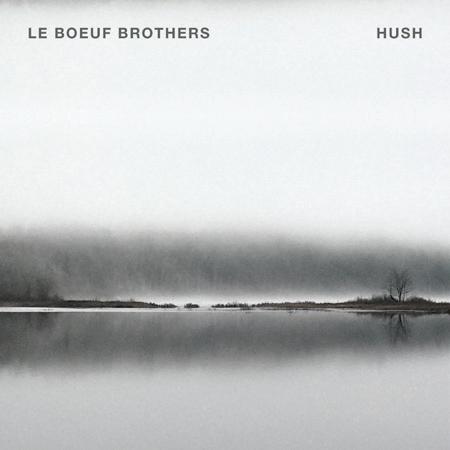
The brothers are ably abetted by frequent collaborators Dayna Stephens (tenor), Linda May Han Oh (bass) and Christian euman (drums). Remy and Stephens work together closely, echoing, answering, harmonizing and inspiring each other. “Too Soon” is a standout example of Remy’s abstract romanticism; his ballad “Gaia”, on which his ardent alto adds just enough color and ornamentation to galvanize the melody, is another. Pascal, in contrast, communicates through conception and inference: he explodes concrete ideas into subliminal fragments, as on “Susie Song” where, over shifting accents of 2’s and 3’s, he permutates a stable pedal point into complex polyrhythms and pantonality. Together, the siblings generate yin-yang synchronicity, an appeasing melding of head and heart, intention and intuition.
For more info visit leboeufbrothers.bandcamp.com. Remy Le Boeuf’s Assembly of Shadows Big Band is at The Jazz Gallery Jun. 21-22. See Calendar.
Cantaloupe Island
is the latest release from bassist Leon Lee Dorsey
alongside drummer extraordinaire Mike Clark
and the brilliant guitarist Russell Malone.
Veteran bassist Leon Lee Dorsey and drummer Mike Clark have forged a deep simpatico over the course of six projects on Dorsey’s Jazz Avenue 1 record label:

*2019’s Monk Time (with guitarist Greg Skaff)
*2020’s Play Sgt. Pepper (with pianist Michael Wolff)
*2021’s Thank You Mr. Mabern (with late, great pianist Harold Mabern)
*2022's Freedom Jazz Dance (with pianist Manuel Valera) and Blues on Top (with pianist Mike LeDonne)
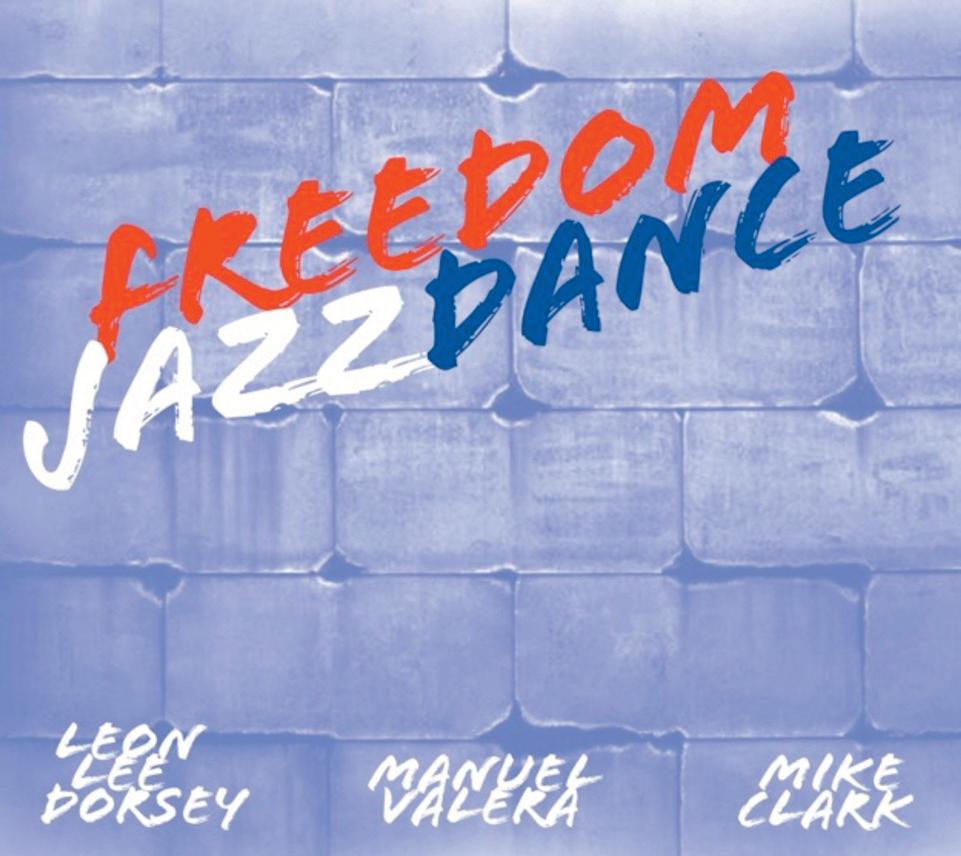
Lydia Liebman Promotions


lydialiebman.com

30 June 2023 | THE NEW YORK CITY JAZZ RECORD
Jukebox Ella: The Complete Verve Singles, Vol. 1
Ella Fitzgerald (Verve)
by Marilyn Lester
Originally released as a double CD in 2003, Jukebox Ella: The Complete Verve Singles, Vol. 1 has been rereleased as a limited edition boxed set of 3 LPs with the same 36 tracks (sadly, the label has never gotten around to Vol. 2). The singles represent Fitzgerald’s move to manager norman Granz’ new label, Verve, and his desire to revitalize her career by extricating “The First Lady of Song” from Decca, where she’d spent two decades. In January 1956, Fitzgerald thus went into the studio and recorded “Stay There”; a session in March yielded “A Beautiful Friendship”. These sessions were held at L.A.’s Capitol Studios with a choir and string-heavy orchestra conducted by Buddy Bregman. Band members included high-profile musicians of the day, including Milt Bernhart (trombone), Barney Kessel (guitar), Bud Shank (alto), Harry “Sweets” edison (trumpet) and Alvin Stoller (drums). Over ten years, she continued to record 45s along with her 33 rpm albums, which included
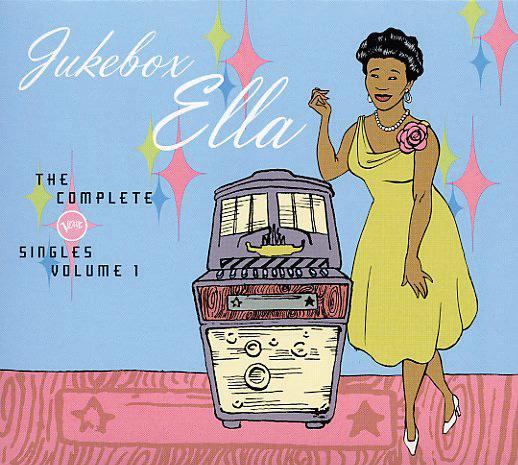
the now legendary Song Book series of albums, which were released at regular intervals between 1956 and 1964. Arrangers who worked on the singles included Bregman, Marty Paich, Frank DeVol, Russ Garcia, Paul Weston and nelson Riddle, who was much sought after but not always available; several also arranged for the Song Books
It’s safe to say that Jukebox Ella has something for everyone, covering many genres but always informed by the agreeable personality that the singer brought to her recordings over a 50-year career—her aim always to please her public. Fitzgerald was as at home with stringladen ‘50s arrangements, such as “The Sun Forgot to Shine This Morning”, as with small groups (listen to the jazzy “Beale Street Blues”, with clarinet and piano forward). She was also an ace at torch songs such as “It’s Only a Man”. The singles include many obscure tunes, such as Phil Tuminello’s “Teach Me How to Cry”, which are far from the Song Book standards of major writers. One exception is a singles release of “But not for Me” from the George and Ira Gershwin Song Book. The choices were mostly ella’s, not Granz’. Ironically, she’d long dreamed of having a big singles hit. Yet despite being one of the world’s most popular recording artists, these relatively obscure singles failed to bring her one—even when the bossa nova craze swept over the land and the music of Antonio Carlos Jobim came to the fore. In 1962, she recorded a straightahead “Desafinado” paired with one of the most engaging singles on the Jukebox release, “Stardust Bossa nova”. The latter was arranged by Paich using Brazilian percussion; Fitzgerald’s interpretation, with jazz phrasing and scat, thrillingly transforms an iconic tune that started out in 1927 as a simple jazz instrumental.
And then there are the novelty songs, for which she had a penchant. These include “Hotta Chocolatta” and
“I’m a Poached egg (Without Toast)”. The latter was written by George and Ira Gershwin, went unpublished, and finally wound up in the 1964 Billy Wilder comedy Kiss Me, Stupid. Fitzgerald also recorded another obscure Gershwin tune, “All the Live Long Day”, originally written for the 1933 stage show Pardon My English, which also wound up in Kiss Me, Stupid. Fitzgerald had a way with humor. Her swinging “Bill Bailey, Won’t You Please Come Home?” features imitations of Louis Armstrong, Della Reese and Pearl Bailey. She tackled German in “Ich Fuhle Mich Crazy (You’re Driving Me Crazy)”, with truly wondrous scat sequences. An update on her classic “(You’ll Have to Swing It) Mr. Paganini”, also Germanized, and a Latin version of “A-Tisket, A-Tasket” reveal creative exploratory artistry. As with the bossa nova releases, the singles also represent the mood of the times, notably rock and roll. When The Beatles burst on the scene she was inspired to create “Ringo Beat”, a forgettable ode to Mr. Starr and the Fab Four. More successful are the doo-wop version of “She’s Just a Quiet Girl” and a girl-group style “We Three (My echo, My Shadow, and Me)”.
By the last track of Jukebox Ella, “Lonely Is”, a keen listener will note how Fitzgerald’s vocal tone grew and matured over the years. The slightly girlish soprano of “Too Young for the Blues”, for example, mellowed into a deeper resonance; one also notes the finer interpretive depth that age and experience bring, as in “The Shadow of Your Smile”. For those who appreciate vinyl, Jukebox Ella: The Complete Verve Singles, Vol. 1 is a worthy piece of musical history, offering an indispensable collection of tunes sung by an artist (passing away 27 years ago this month) whom Duke ellington called “beyond category”. For more info visit ververecords.com
Sunday / June 18 / 4:00pm
Hot Jazz Age Frolic
Eyal Vilner Big Band
Nathan Bugh and Gaby Cook, dance instructors
Imani Rousselle, featured singer
This high-energy event takes place under an airy tent turned into a hot-to-trot dance club plucked right out of 1920s Harlem. Join us on the dance floor for a lesson, then be unabashed and strut your stuff.
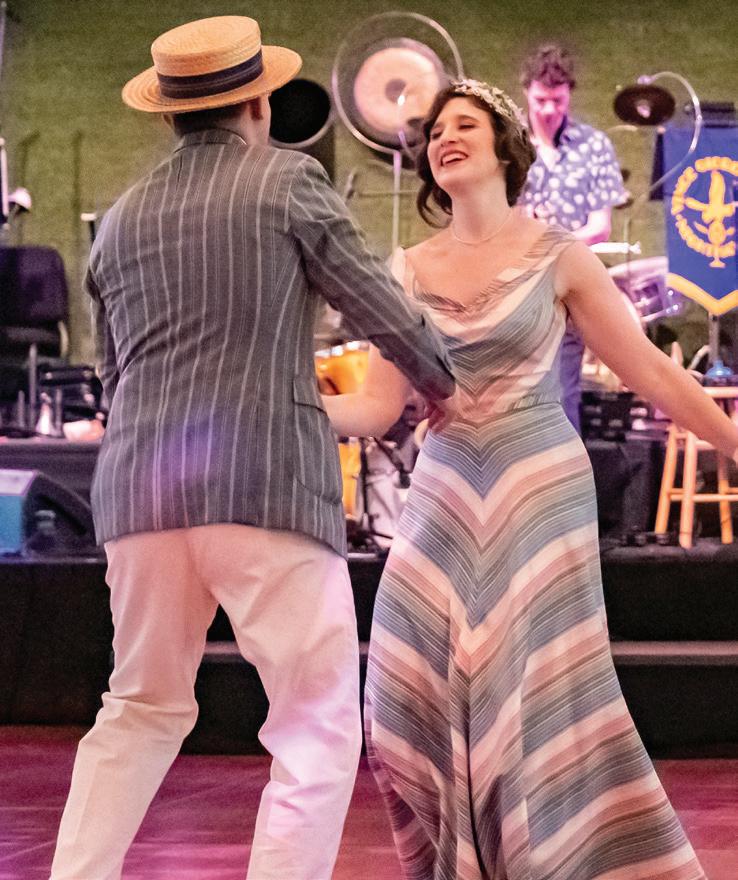
Bringing the family?
Join us at 2:00pm for a special family set from the Eyal Vilner Swing Band with dancers Nathan Bugh, Gaby Cook, Jennifer Jones, and Ray Davis.
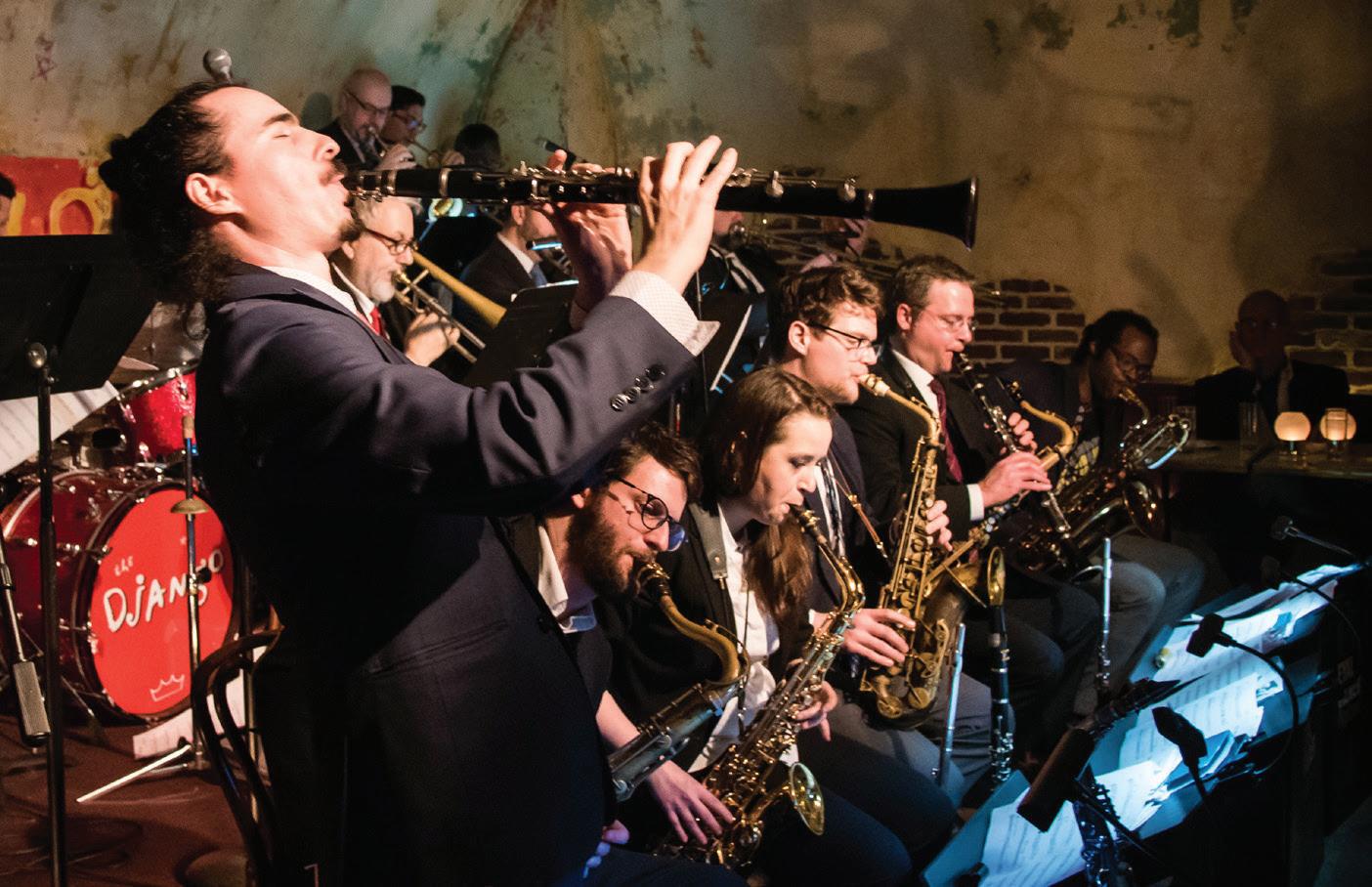
Free Shuttle from the Katonah Train Station Plus! Free Parking & No Ticket Fees!

KATONAH, NY / 914.232.1252 / CARAMOOR.ORG
Eyal Vilner Big Band
more music this summer!
July 22
Jazz Festival
Cécile McLorin Salvant
July 29
Arooj Aftab, Vijay Iyer, Shahzad Ismaily: LOVE IN EXILE
August 4
Samara Joy
THE NEW YORK CITY JAZZ RECORD | June 2023 31
BOX e D S e T
Feel free to sport your favorite swing-era vintage look!
JUNE 1 – 3 ROSE THEATER THE JAZZ AMBASSADORS: DUKE, DIZZY, AND BRUBECK
The Jazz at Lincoln Center Orchestra with Wynton Marsalis pays homage to three of America’s most influential jazz artists—Duke Ellington, Dizzy Gillespie, and Dave Brubeck—who, along with their integrated bands, traveled the globe to perform as cultural ambassadors.
JUNE 9 – 10 THE APPEL ROOM CARNIVAL: THE SOUND OF A PEOPLE
Get ready to experience the ultimate celebration as Trinidad & Tobago’s world-famous Carnival comes to The Appel Room! With trumpeter, percussionist, and composer Etienne Charles leading the way, this highenergy spectacle will transport you to the heart of the Caribbean.
Ekphrastic Discourse
James Ilgenfritz/Sandy
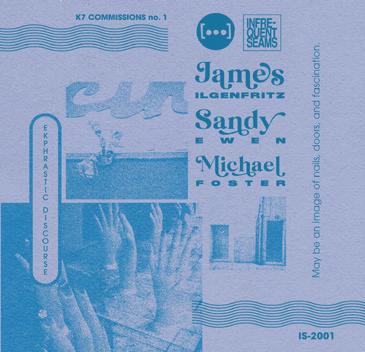 Ewen/Michael Foster (Infrequent
Ewen/Michael Foster (Infrequent
Seams)
Time Phrase Trio (featuring the BCDs)
Ty Citerman/Jen Baker/Shayna Dunkelman (Infrequent Seams)
by Elijah Shiffer
T here is a constant dialogue between the improvised and composed sides of n ew York’s avant garde music scene, and Infrequent Seams has been documenting this interaction for over a decade. The label’s many releases include fully written works, pure improv and all sorts of experiments in between. Two recent albums illustrate the diversity of Infrequent Seams’ output. Both are by trios including one horn and an electric guitar, but little else unites them besides their creativity; they lie on quite different points on the line between improvisation and composition.
Ekphrastic Discourse features three unique improvisers: Michael Foster (tenor and soprano), Sandy e wen (guitar) and the label’s founder James Ilgenfritz (bass). The title, used also for all seven tracks followed by their number, means the literary description of a work of art. It seems to reference how hearing these players on record is an entirely different medium from their live performance. There is a striking visual element in at least Foster’s and e wen’s improvising (Ilgenfritz may be considered more of a composer). Their collections of objects with which they modify their instruments—Foster’s balloons and pipes, e wen’s springs and spikes—are familiar to anyone who’s seen them play. When these are unseen, the listener is left with a challenging landscape of mysterious sounds. At times it can be difficult to assign a sound to a particular instrument, as extended techniques meld together in clouds of scrapes, slaps and hisses. When the instruments become recognizable it feels like light shining through; Foster’s voluptuous tenor in the last two tracks is particularly refreshing after all the commotion.

Toward the composed end of the spectrum we find Time Phase Trio (featuring the BCDs) . This doubly named ensemble consists of Jen Baker (trombone), Ty Citerman (guitar), and Shayna Dunkelman (percussion). The nine tracks are compositions, eight by Citerman and the last by Baker, that blend written and improvised elements quite effectively. Citerman was a co-leader of the madcap mathpunk-jazz quartet Gutbucket; his piece “Tennis” comes close to that band’s goofiness in its clunky rhythms and noisy timbres. Throughout the album, all three players have fun exploring the many quirks of their instruments; Baker in particular brings a certain absurdity with her exuberant vocabulary of rasps, bellows and yelps. Things never get too silly, however; several pieces are comparatively tranquil and lyrical, especially Citerman’s “Water Music” and Baker’s “25 Degrees of Sticking to It”. Curiously, there is an aquatic theme to this album, with all of Citerman’s titles except “Tennis” having something to do with water. This seems like an appropriate subject for this dynamic ensemble and the way this music flows through such a variety of aural habitats.
For more info visit infrequentseams.bandcamp.com. The Infrequent Seams Festival is at 411 Kent and Scholes Street Studios Jun. 7-10. See Calendar.
Fifty The Manhattan Transfer (Craft) (with The WDR Funkhausorchester)
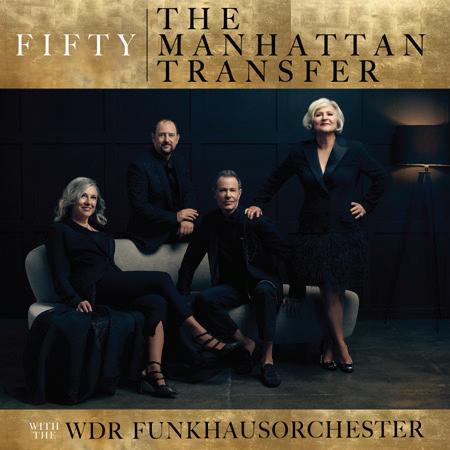 by Marilyn Lester
by Marilyn Lester
A half century is a considerable span of time for any group to be together, and certainly speaks to the popularity and longevity of The Manhattan Transfer. Thus, the aptly named Fifty , with its ten carefully chosen tracks drawn from their biggest hits, skillfully captures the group’s amazing history. Recorded in the studio with the WDR Funkhausorchester Köln (WDR Radio Orchestra Cologne), Fifty reveals itself as a lush and fearlessly innovative treasure chest of song. Given that the album was recorded in stages and in disparate locations, owing to the pandemic, the result is all the more remarkable.
Originally founded by the late Tim Hauser, Laurel Massé, Janis Siegel and Alan Paul, The Manhattan Transfer is now Siegel and Paul with longtime member Cheryl Bentyne and Trist Curless (who replaced Hauser in 2014). Always practitioners of carefully choreographed, complex close harmony, and initially a lot of vocalese, over the years the group has explored a wider range of jazz, pop, big band, doo-wop and more—“What Goes Around Comes Around” even offers an ode to hip-hop within the bebop/jazz ethos. But Fifty is mostly a symphonic album; the sound of the WDR Funkhausorchester as a whole is intensely atmospheric, and the individual instrumentalists are sharp and creative.
The first track, “Agua”, is a thrilling deep immersion, calling up the swirling aquatic feel of e nya’s “Orinoco Flow”. That fulsome approach, with a perfect integration of vocal and musical instruments, appears again in one of the group’s early hits, “Chanson D’Amour”. For lovers of vocalese, the closest Fifty gets to it is in “The Man I Love”, a masterwork of phrasing and tempo juxtapositions between singer(s) and orchestra. Interestingly, this number, unlike the other selections on the album, was never previously recorded by the group.

There’s plenty of wry fun in Fifty too. For a 1940s film noir experience, there’s “Blues for Harry Bosch”, with its spoken introduction and some parlando along with a prominent percussive beat, and “On a Little Street In Singapore”. This latter tune begins with a scat intro, then spins into a dramatic evocation of men in trench coats and slouch hats in dark, mysterious alleys. For sheer fun, the offbeat “Twilight Zone” riffs on that TV show’s theme and includes the show’s spoken Rod Serling intro, adding a generous portion of danceable swing to the entire track. Fittingly, the last cut on Fifty , “God Only Knows”, infuses the symphonic sound with swing, pulling out all the stops to showcase the Transfer’s amazing ability to mix and match vocals and harmonies. This rich treatment of The Beach Boys song has a rising arc and hymn-like ending—almost like a prayer. It’s a soulstirring performance that invokes one’s memories and contemplation of a musical legacy that’s given so much pleasure over these five decades. The Manhattan Transfer are currently in the midst of a 50th Anniversary worldwide tour. If Fifty becomes the group’s swan song, it is certainly a memorable one.
For more info visit craftrecordings.com. The Manhattan Transfer is at Sony Hall Jun. 9 as part of Blue Note Jazz Festival. See Calendar.
32 June 2023 | THE NEW YORK CITY JAZZ RECORD
212.721.6500 BROADWAY AT 60TH ST., 5TH FL.
Etienne Charles by Kwaku Alston
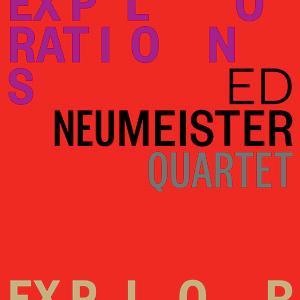
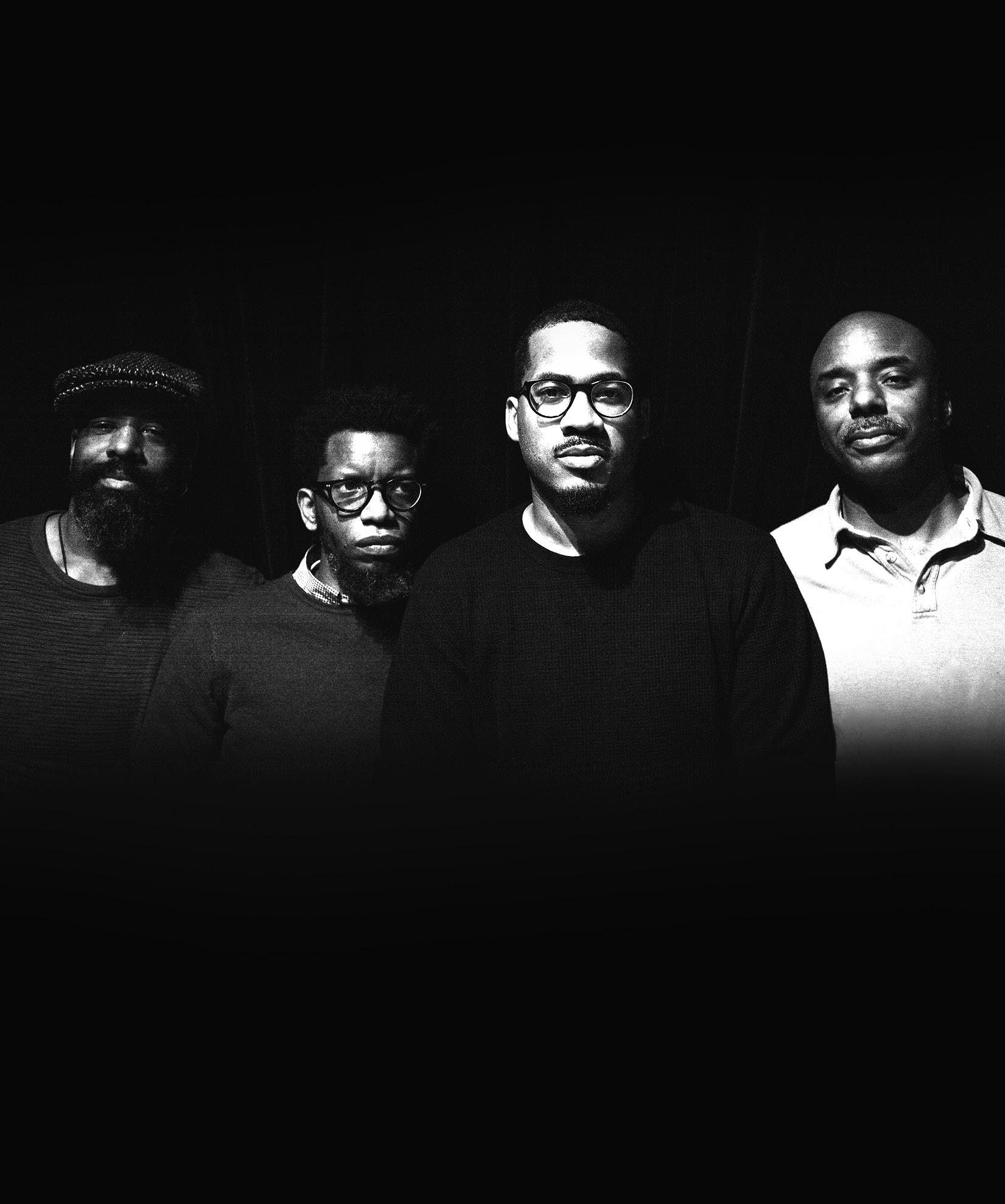

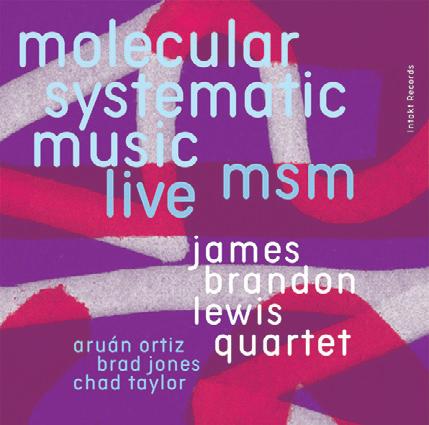


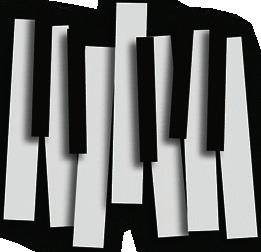


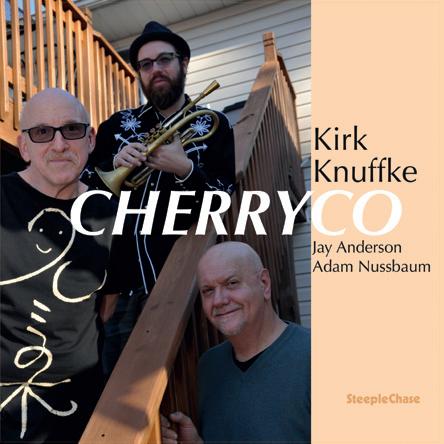
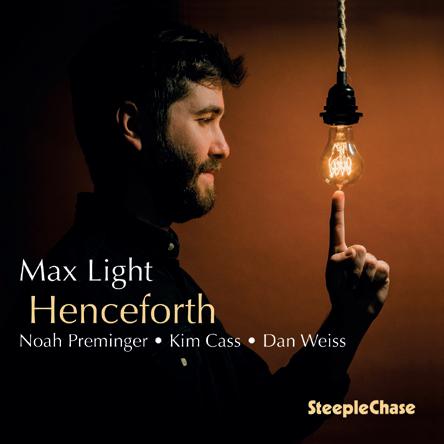

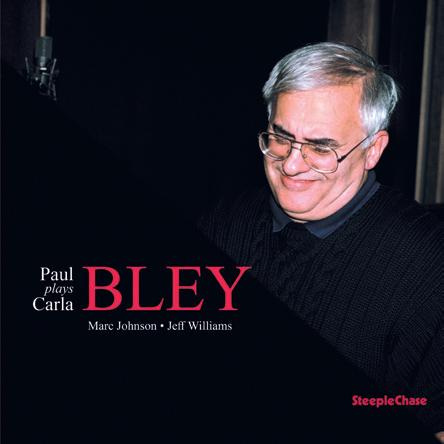
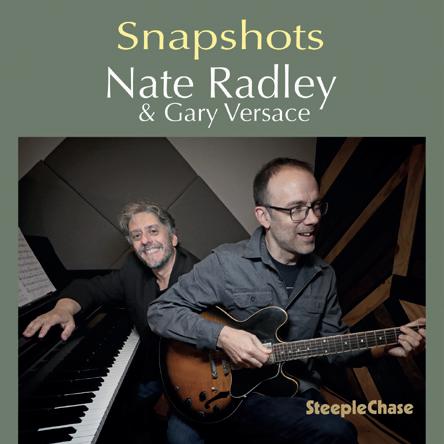
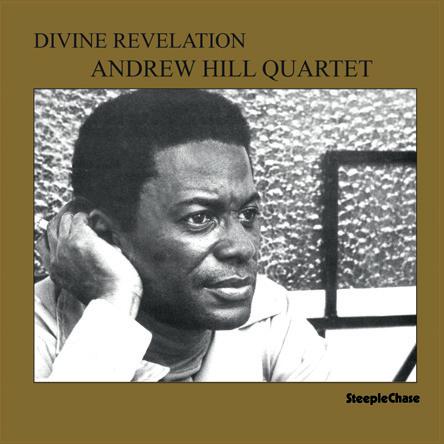
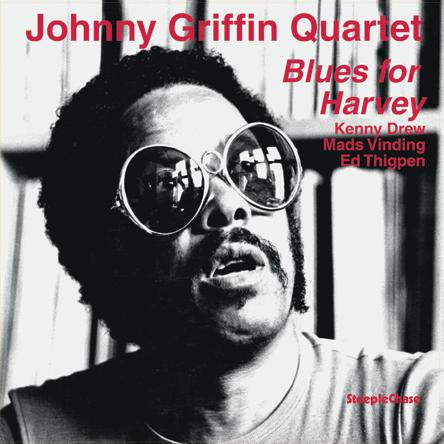
“A living legend” - Cecily Janus (The New FaceofJazz,BillboardBooks) Available exclusively at meisteromusic .bandcamp.com Fritz Pauer & Gar y Versace - piano Drew Gress - bass John Hollenbeck & Tom Rainey - drums Ed Neumeister - trombone "Ed Neumeister is the Picasso of music .” Holli Harms (The Front Row Center) INTAKT RECORDS www.intaktrec.ch Distributed by: Virtual Label Group ∙ Digital store: intaktrec.bandcamp.com MSM MOLECULAR SYSTEMATIC MUSIC - LIVE CODE OF BEING MOLECULAR INTAKT CD 389 INTAKT CD 371 INTAKT CD 350 NYCJR_June_QTRpg_JBL.indd 1 16.05.23 17:11 Live Returns to “…The most elegant spot in New York City” Stephen Sorokoff, Broadway World JAZZ Wednesdays through Saturdays 6:00pm - 9:00pm No Reservations Required No Cover Antonio Ciacca June 16, 17, 21, 23, 24, 28, 30 & July 1 Champian Fulton June 1, 8, 15, 22, & 29 Jill McCarron June 2, 3 & 7 Marco di Gennaro June 9, 10 & 14 TwoE_NYCJazzRcrdADApril.indd 3 5/15/23 6:20 PM G1006 SCCD 33149 new releases CD - download - streaming US distribution: www.statesidemusic.com email: info@statesidemusic.com G1434 Complete catalog: www.steeplechase.dk 50 years of jazz recordings G1832 SCCD 31946 G1443 G1303 SCCD 31947 G1044 G1004 180g Audiophile Vinyl - 2023 Spring
Song For Alice Dave Scott (SteepleChase)
 by Ken Dryden
by Ken Dryden
T rumpeter Dave Scott is a veteran jazz educator who is also well known for his work in the bands of Jim Widner, Kim Richmond and Billy Mintz. When he gets the opportunity to record as a leader, Scott focuses on his original compositions. His sixth album for SteepleChase, with his working quintet, includes long-time collaborators Rich Perry (tenor) and Gary Versace (piano), plus Johannes Weidenmüller (bass) and Mark Ferber (drums). As Scott discusses in his liner notes, his music has grown more open over the years, allowing for more freedom during improvisation. In this case, the music was not rehearsed in full on stage or in the studio, increasing the spontaneity of the musicians’ interpretations.
There’s no explanation of the title to the extended piece “Ralph Retired”, though it sounds like its namesake must be as busy now as when he was working. The furious opening gives way to a more subdued section showcasing the leader’s expressive trumpet; Weidenmüller’s solo gradually builds steam as the band returns to its original furious momentum. Scott’s delicate ballad “Song for Alice” was written in memory of his mother. The love within this lush composition, with just a touch of wistfulness, is apparent from the opening statement, while each spacious solo reveals new facets. “Venus at Dusk” is the most unusual piece, a turbulent composition inspired by György Ligeti’s piano concerto. Scott builds tension with a dramatic introduction featuring Versace’s ominous piano, Weidenmüller’s droning arco bass and Ferber’s irregular percussion, as the leader’s haunting trumpet and Perry’s tenor saxophone slowly come to the forefront. The improvised section releases the tension gradually as the musicians enter free territory. “K.C. Swingin’” pays homage to Scott’s Kansas City roots, though it is more in spirit than in sound; it features an irregular structure and superb call and response between Perry and Scott.
Song For Alice is demanding music, requiring the listener to devote complete attention to its constantly shifting textures.
For more info visit steeplechase.dk. Scott is at Main Drag Music Jun. 14 and Smalls Jun. 15. See Calendar.

releasing his promising debut Brit-Eyed Soul six years ago, luckily one of his supporters has been producer Bob Thiele Jr., whose father founded the legendary jazz l abels Impulse! and Flying Dutchman . With this new release, Thiele Jr. seeks not only to revive Valentine’s career but also t he latter of his dad’s record labels
The eight-song album is a heartfelt tour through bleak, sociopolitical soul songs mostly from the ’70s, bolstered by an impressive ensemble of musicians. Curtis Mayfield’s yearning “We the People Who Are Darker Than Blue” features Immanuel Wilkins’ soaring, modal sax and Linda May Han Oh’s fluid bass; the plea for racial unity is brought home by Valentine’s sad, beautifully straining voice. Valentine makes Gil Scott-Heron’s bleak junkie tale “Home Is Where the Hatred Is” even more heartfelt and desperate than the original or e sther Phillips’ lovely cover version; he is aided by Rob Moose’s subtle strings and Larry Goldings’ lithe electric piano. e ddie Kendrick’s “My People...Hold On” grabs attention with Abe Rounds’ booming drums; Valentine’s clarion vocals are buoyed by a five-piece chorus and a fuzzed-out psychedelic guitar solo from Jeff Parker (of Tortoise fame).
Stevie Wonder’s pointed, accusatory “You Haven’t Done n othin’” is taken at a much slower pace than the original, emphasizing Valentine’s sweet, weary singing atop doo-wop voices (apparently all by Valentine himself). His tender vocals also perfectly match Pharoah Sanders’ spiritual anthem “The Creator Has a Master Plan” (featuring an economical Steely Dan-like guitar solo from Parker) and Prince’s spare, topical “Sign o’ the Times” (aided by Theo Croker’s bop trumpet). The album closes with a soulful R&B treatment of the traditional gospel tune “Wade in the Water” and War’s bleak but hopeful funk jam “The World Is a Ghetto”, slowed to a burning, insistent ballad. In this time of animosity toward critical race theory, this album serves as a mini-history lesson, a reminder that we can’t forget our sometimes uncomfortable cultural past.
For more info visit flyingdutchmanrecords.com
B illy Valentine was half of the ’70s/’80s R&B group Valentine Brothers (“Money’s Too Tight to Mention”), and he has spent the last few decades working in a successful songwriting team and recording TV soundtracks. Long overdue for an album, after
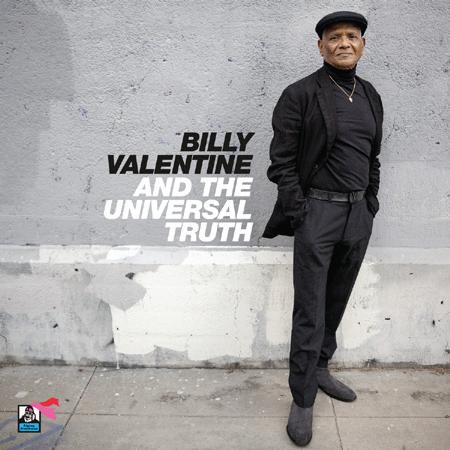
Mediumistic Methodology
Devin Brahja Waldman/Hamid Drake (Astral Spirits) Eternal River
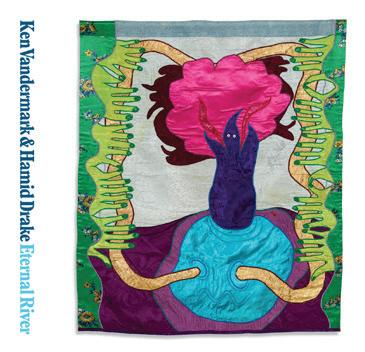
Ken Vandermark/Hamid Drake (Corbett vs. Dempsey) by John
 Shand
Shand
T here’s a secret few drummers unlock: the art of playing so melodically as to create relationships between their instrument (of indeterminate pitch) and other instruments (of determinate pitch) that imply a kind of harmony. Max Roach, e d Blackwell, Paul Motian and Jack DeJohnette spring to mind, as does Hamid Drake. Such techniques are especially pertinent when duetting, because suddenly the interrelationship reaches beyond rhythmic, melodic and textural areas into a rarefied zone where the two instruments seem to fatten each other’s notes.
A duo situation requires drummers to exert supreme control in nuancing such elements as dynamics, attack, overtones, pitch-bending and the choice of simultaneous sounds coming from their four limbs. Listen to how Drake does it on “Table Turner”, from his duo album with alto saxophonist Devin Brahja Waldman, Mediumistic Methodology . This is an extended piece based around a fanfare-like motif,
34 June 2023 | THE NEW YORK CITY JAZZ RECORD
Billy Valentine & Universal Truth
Billy Valentine (Flying Dutchman) by Jason Gross
and Drake creates an ever-shifting sound-world of implied harmonic contextualization for Waldman’s astonishing forays. By contrast, the opening “Knock Knock” has them barely frosting silence with overtones and shakers: music that makes you lean forward to listen, rather than pushing you back. Yet they keep you in suspense with the unfolding beauty and sense of power held in reserve. When that power is unleashed—with Waldman’s alto sounding like some gnarly double-reed instrument, and Drake increasing volume rather than density—the earlier intricacy of the conversation is sustained.
Trumpeter Don Cherry’s 1960s-80s dialogues with Blackwell were duet masterworks, and Drake enjoyed a strong personal relationship with Cherry. This makes another new duo album, the live Eternal River, with long-term collaborator Ken Vandermark (tenor saxophone), an especially heartfelt project. They revisit classic Cherry compositions in flowing medleys (as the composer was wont to do), including “ e lephantasy”, “ e l Corazon”, “Brown Rice” and “Complete Communion”. Drake is consistently at his most melodic, while maintaining his instinct for harmony-like shading as he engages in thrilling interplay with Vandermark’s scalding tenor. It’s fascinating to hear these pieces reimagined, and anyone doing anything to keep the Cherry legacy alive does the world a huge favor.
For more info visit astralspiritsrecords.com and corbettvsdempsey.com. Drake’s “Turiya: Honoring Alice Coltrane” is at Roulette Jun. 14 as part of Vision Festival. See Calendar.
fortunately returns to a swinging tempo and includes the little-heard verse and some scat.
Billy Strayhorn’s “Lush Life” with Wayne e scoffery (tenor) is a highlight. His intro is full-bodied and Thomas’ vocal is intimate. It’s not going to make the listener forget Coltrane and Johnny Hartman, but despite a shaky midpoint it’s still pretty darn good. Rossano Sportiello’s piano sparkled at the recent Gotham Jazz Festival, and he’s bouncy on Harry Warren/Al Dubin’s “You’re Getting to Be a Habit with Me”. Thomas’ vocal is warm and happy. Charlie Chaplin’s “Smile” (lyrics by John Turner, Geoffrey Parsons) is similar, but with added poignancy and a touch of Brazil in Guilherme Monteiro’s guitar work. Mairi Dorman-Phaneuf contributes excellent arco cello on Monk’s “Round Midnight”.
The album was a product of COVID necessities, but the end the result is something lasting.
For more info visit lizziethejazzsinger.com. Thomas is at Zinc Bar Jun. 6. See Calendar.
AMERICAN ACADEMY OF ARTS AND LETTERS
Duo Encounters Lizzie Thomas (Dot Time)
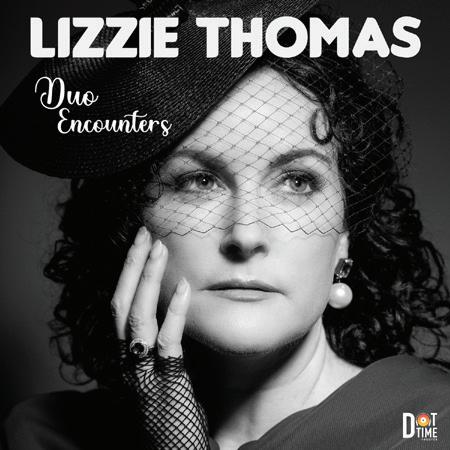 by Jim Motavalli
by Jim Motavalli
T he concept here is vocalist Lizzie Thomas in a series of duos with a wide variety of players. This sort of barebones performance asks a lot from a singer. Though perceived mistakes might be right up front, for the most part, she is able to still pull it off. Thomas stays close to the melodies, rarely taking chances in the way someone like Betty Carter might—but that’s not a problem since the tunes are mostly classics from the Great American Songbook.
A chipper duo with pianist Helio Alves on Cole Porter’s “Love for Sale” kicks things off. Ron Carter mines the bottom range of his bass on “Willow Weep for Me”, which comes off as slightly ghostly. Pianist John DiMartino, a veteran accompanist, plays on “After You, Who?”; Thomas has a bit of brass in her voice, but she’s no shouter and his low-key solo is exquisite.
“My Foolish Heart” (Washington/Young) has frequently been recorded, but not as a vocal/guitar duet. The Johnny Mathis album Open Fire, Two Guitars comes to mind. Thomas plays it extra poignant, and Russell Malone follows suit, channeling Johnny Smith. Maybe e den Ahbez’ “ n ature Boy” should be given a rest, but Café da Silva’s percussion at least gives a touch of ’50s exoticism. Thomas’ vocal is slowed down to something like a recital of the lyrics. Joni Mitchell’s “Both Sides n ow”, also shopworn by now, features guitarist Ron Affif, and is similarly taken at a lullaby-like tempo. Rodgers/Hart’s “Have You Met Miss Jones”, with Dezron Douglas on bass,
Parallel Motion Yellowjackets (Mack Avenue)
 by Scott Yanow
by Scott Yanow
T he Yellowjackets have been together for a remarkable 46 years. The current version of the band consists of original member, pianist-keyboardist Russell Ferrante; tenor saxophonist Bob Mintzer, who has been with the group for 32 years; drummer William Kennedy (a member from 1987-99 and again since 2010); and electric bassist Dana Alderson, who joined in 2015. The quartet never really fit into the fusion category (not rock-ish enough), always too adventurous to be merely smooth and has had its own identifiable sound and style through each of its periods. The band plays originals that, while touched by Weather Report, funk and aspects of R&B, can accurately be described as modern post-bop jazz.
On Parallel Motion , the Yellowjackets perform a trio of songs apiece by Mintzer (generally the most challenging) and Ferrante, two by Alderson and one from Kennedy. As usual, the pieces generally have long melody statements, colorful and inventive solos, original chord changes and enough twists and turns to keep the listener guessing. The band sets a groove on many of the originals, yet the rhythms are never simplistic or repetitive and the playing is harmonically advanced. “Challenging Times”, with a creative Mintzer solo, unpredictable comping from Ferrante and inventive group interplay, is a fine example of the group’s style.
Many of the songs, including the title cut, are complex and catchy. The lyrical “Il Mio Amico”, which contains an excellent soprano solo from Mintzer, is a highlight. Ferrante’s ballad “If You Believe” has a guest vocal by Jean Baylor, whose husband Marcus Baylor played drums with the Yellowjackets in an earlier period. One could not imagine many singers attempting to sing most of the other quirky originals, although Kennedy’s relatively melodic “Samaritan” might be an exception. Parallel Motion , the group’s 26th album to date, gives listeners a strong sampling of how the largely unclassifiable Yellowjackets sound today.
For more info visit mackavenue.com. The Yellowjackets are at Birdland Jun. 14-18. See Calendar.
2023 New Members and Award Winners in
Music
A CADEMY M EMBER S Adolphus Hailstork
Carman Moore
Roger Reynolds
Maria Schneider
Wadada Leo Smith
Pamela Z
A RTS AND L ETTE R S A WARD S Eve Beglarian
David Serkin Ludwig
Nicole Mitchell
Roscoe Mitchell
MARC BLITZSTEIN MEMORIAL AWARD
Missy Mazzoli
Royce Vavrek
W ALTER H INRICHSEN A WARD
Shih-Hui Chen
A NDREW I MBRIE A WARD
Robert Honstein
C HARLES I VES O PERA P RIZE
Laura Elise Schwendinger
Ginger Strand
C HARLES I VES F ELLOWSHIPS
Charles Peck
Peter Shin
C HARLES I VES S CHOLARSHIPS
Seare Ahmad Farhat
Jordyn Gallinek
Luke Haaksma
Ali Can Puskulcu
Harriet Steinke
Bethany Younge
G ODDARD L IEBERSON F ELLOWSHIPS
Andy Akiho
Zosha Di Castri
www.artsandletters.org
THE NEW YORK CITY JAZZ RECORD | June 2023 35
Debut CD out now
ENJA Records
Explorations
Ed Neumeister Quartet (MeisteroMusic)
 by Ken Dryden
by Ken Dryden
T rombonist e d n eumeister has always been a bold performer and innovative composer, though his breakthrough came when he began to record as a leader in the mid ‘90s, and especially after the launch of his MeisteroMusic label a few years later. The originals in this collection were mostly recorded in 2001 and 2002, when n eumeister was touring e urope with his quartet with Fritz Pauer (piano), Drew Gress (bass) and Tom Rainey (drums). Three other tracks are from 2021 with Gress, Gary Versace (piano) and John Hollenbeck (drums).
The Fuchsthone Orchestra is anything but a conventional big band – with a line-up expanded to include violin, vocals and electronica, the 20 award-winning musicians represent the state of the art of contemporary large jazz ensembles.
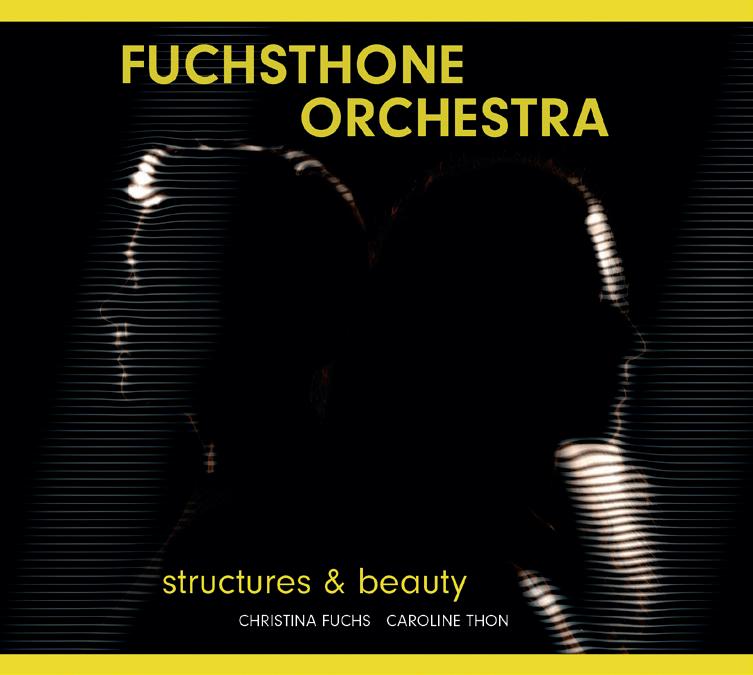
In the compositions of bandleaders Christina Fuchs and Caroline Thon, brute tutti passages and wind voicings à la Maria Schneider are followed by moments of silence, punctuated by collective improvisations of smaller sub-units of the band.
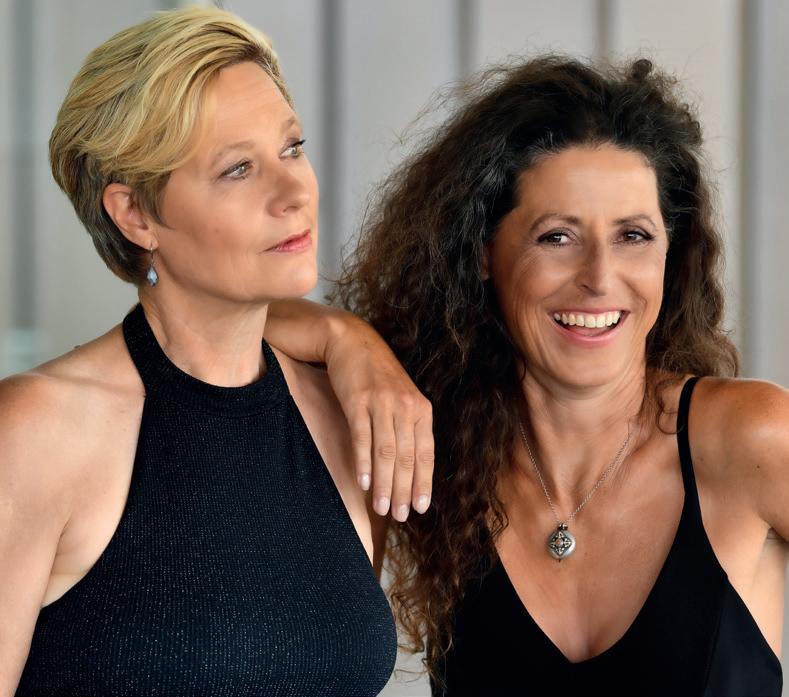
An impressive musical experience that fully exploits the diverse timbres and possible combinations of the instruments involved.
The trombonist’s songs are like sketches, designed to give his musicians a great deal of freedom to explore their possibilities. The earlier sessions consist of eleven different “ e xplorations”, only one of which is longer than four minutes. “#1” has a mysterious air, with Pauer darting in and out playing brief rapid runs and strumming the strings, while n eumeister contributes little recognizable trombone, though it sounds like he is making sound effects with the mute. Things come more into focus with “#2”, as the leader’s straightahead, spacious playing contrasts with Pauer’s staccato, dissonant chords and Gress’ percolating bass. “#7” is introduced with a furious drum solo, then jagged fireworks from Pauer, plus Gress’ free bass line, while the leader’s trombone is almost conversational.
“#6” has a loopy air: n eumeister sings through his horn and Pauer contributes additional vocals, mixing playfulness with ominous overtones. The “ya-ya” style of trombone introduced by “Tricky” Sam n anton in Duke e llington’s band is prominent in “#8”, as Pauer’s attack keeps the musicians on edge.

The latter quartet is featured on three selections. “Fawg-It #1” also features n eumeister’s use of n anton’s tricks, with superb support from Versace, Gress and Hollenbeck. The final selection, “Fawg-It #2”, utilizes mournful open horn buoyed by Versace’s dramatic accompaniment, while the duo section showcasing Gress and Hollenbeck takes the piece in another direction.
Explorations is filled with introspective, surprising music that will stand the test of time.
For more info visit edneumeister.com. Neumeister’s album release concert is at Smalls Jun. 8. See Calendar.
Belmont. From there, the sound naturally spread west to nearby Philadelphia, where Jimmy Smith, Don Patterson, Shirley Scott, Trudy Pitts, Jimmy McGriff and “The Mighty Burner” Charles e arland—and many others—established the organ trio as the dominant sound at nightspots including Spider Kelly’s, Dino’s Lounge, Morgan’s and Catherine’s Postal Card. And long before bassists such as Bootsy Collins and Fred Thomas were bringing those gut-crunching bottoms you could feel down to your soul, there was the B3; those low-end vibrations coming out of a Leslie speaker cabinet, controlled by foot pedals could make you move. With that dominant sound, when the B3 was king, Philadelphia was the hard-beating heart of the kingdom.
South Philly-born and raised drummer Vince e ctor doesn’t need a recitation of the history because, as he said, “I was there, I lived it.” And although he was too young for the ’50s scene, his father, a professional pianist, brought Vince to see Don Patterson and many others when he was as young as eight years old. Later, having his first professional gig with e arland further hipped him to all that had come before.
That history, that love, is here in every note, captured live at the Side Door Jazz Club in Old Lyme, CT. e ctor was there to support Organatomy +’s excellent 2019 release, Theme for Ms. P . The personnel for that album was Pat Bianchi (organ), Bruce Williams (saxes) and Paul Bollenback (guitar). For the Side Door gig, Williams wasn’t available, so he hooked e ctor up with his former student, the talented young Justin Williams.
From the first shuffle of opener “South Philly Groove” this album swings ferociously, driven by drummer e ctor and organ master Bianchi, an acolyte of the late Joey DeFrancesco. The Side Door crowd is there with the musicians for every note. Bianchi sears on the Patterson burner “Sister Ruth”. Jones and Bollenback are just killing it left and right. An excellent release for B3 aficionados and anyone who loves to swing.
For more info visit vinceector.com. Ector’s album release concert is at Soapbox Gallery Jun. 24. He also plays at The Django Jun. 1 with T.K. Blue Quartet. See Calendar.
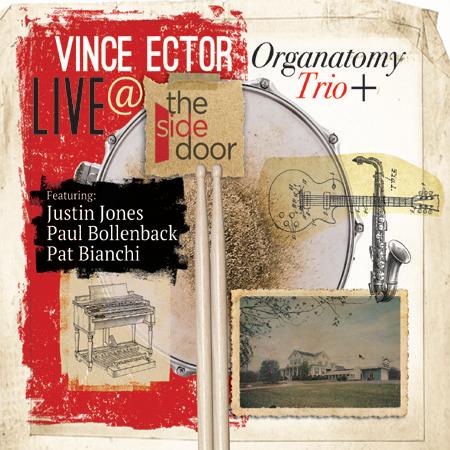 Hoffman
Hoffman
W hen Wild Bill Davis came e ast in the ’40s, he paired up with Crazy Chris Columbo on drums to bring the new sound to the hippest spots on Kentucky Avenue in Atlantic City, the Club Harlem and Gracie’s Little
séances
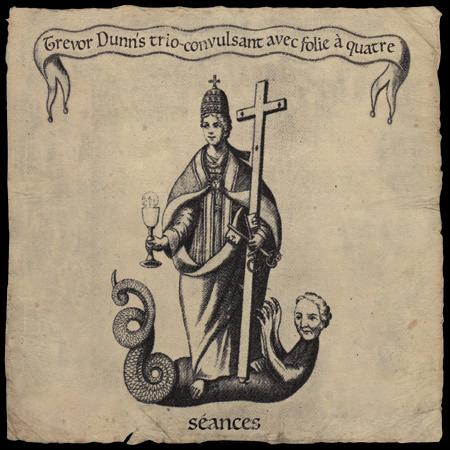
Trevor Dunn’s Trio-Convulsant avec Folie à Quatre (Pyroclastic)
by Phil Freeman
B assist Trevor Dunn hasn’t made an album with his Trio-Convulsant, featuring guitarist Mary Halvorson and percussionist Ches Smith, since 2004’s Sister Phantom Owl Fish . That record came out on the Ipecac imprint of Faith n o More frontman Mike Patton. Patton and Dunn have collaborated many times, notably in Mr. Bungle, Fantômas, Tomahawk and John Zorn’s Moonchild. Trio-Convulsant’s music shares many qualities with those projects, including a proclivity for sudden sideways lurches; melodies that straddle the space between jazz and rock; and a general feeling of unresolved tension. It’s also worth remembering that before he became an avant jazz darling, Ches Smith was the drummer in the noise-rock trio Theory of Ruin, and Halvorson has a skronky punk-rock side that bursts out at odd moments.
On this album, the trio is augmented by an ensemble dubbed Folie à Quatre: Anna Webber (flute),
36 June 2023 | THE NEW YORK CITY JAZZ RECORD
Live @ the Side Door
Vince Ector Organatomy Trio + (Cabo Verde) by Keith
at www.amazon.com / www.amazon.de and spotify www.fuchsthone.com
Available
Cologne/Germany
Christina Fuchs and Caroline Thon
Oscar n oriega (bass clarinet), Carla Kihlstedt (violin, viola) and Mariel Roberts (cello). n ot all of this music is performed by the full septet; indeed, much of it is designed to showcase one player or another. It’s heavily composed, and on many, if not most tracks, one instrument is allowed to roam free while the others hew to the score. (Dunn reveals in the liner notes that none of the percussion parts were written out; that’s all Smith.) The opening “Secours Meurtriers” begins with solo flute, before guitar and strings come in playing a gentle, repetitive figure. e ventually, things begin to swirl like a zephyr sweeping through a pile of leaves, with occasional bursts of distortion and a swinging, loping beat. Throughout the album, Halvorson’s guitar is subject to multiple effects, not just her usual squiggly delay-pedal sound, but also echo and reverb, giving it an almost psychedelic, dubby feel. Similarly, when Smith switches from drum kit to timpani on “Restore All Things” and Webber’s echo-treated flute floats over droning strings, the entire effect feels like an unsettling dream. This is painstakingly written and assembled music that never allows the intricacy of its structures to become the point—nothing here feels like an exercise, or a stunt.
For more info visit pyroclasticrecords.com. Dunn is at The Stone Jun. 10 with Ben Goldberg and Microdose, and Nublu Jun. 26 with Dan Weiss’ Starebaby. See Calendar.
Working from this firm foundation, Hervey, Sarah Hanahan (alto) and Isaiah J. Thompson (piano) blend their voices to create colorful shades of introspection. One of Hervey’s strengths is his note choice and meticulous tone, in full evidence on the elegiac “His e ye Is on the Sparrow”, a gospel hymn, as well as a tender rendition of “But Beautiful”, which resonates with a Miles Davis feel.
Hervey has it all: technique, compositional skill, historical scope and creativity. The most inspiring aspect of his music, however, is its earnest spiritual and intellectual clarity.
For more info visit outsideinmusic.com. Hervey is at Smoke Jun. 7 with Sean Mason Quintet. See Calendar.
W hile not as hit-the-ground-running incandescent as her follow-up set Journey in Satchidananda , this album, recorded at the Coltrane home studio at Dix Hills and recently re-released on 180 gram LP (including a limited edition bright yellow vinyl!), holds more intimate thrills, the quietude of a candle’s flicker against a wall, deep in a cave.
Words from My Horn
Anthony
Hervey
(Outside In Music)
by Franz Matzner
T rumpeter Anthony Hervey’s Words from My Horn is a centered, calm and collected debut. While the album may be his introduction as a leader, Hervey is not new to the scene, having worked with Christian McBride, Jon Batiste, Wynton Marsalis and other luminaries. Hervey is more than adept as a leader of this quartet, with a honed voice and refined sense of artistic direction. Words from My Horn provides a carefully constructed overview of jazz’ core history, for the most part drawing within the lines.
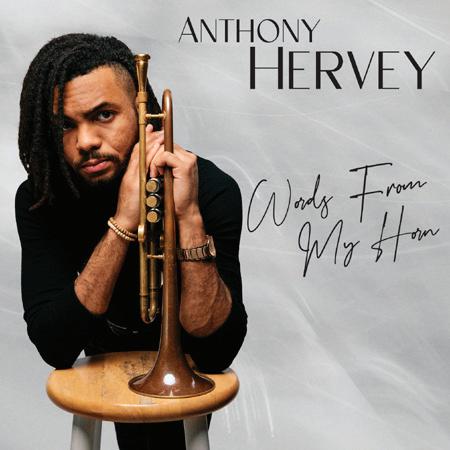
It is tempting to label the album “traditionalist”, but that would not give enough credit to Hervey’s inventiveness across these twelve pieces. Somehow, Hervey manages to simultaneously deliver his musical analysis of the trumpet’s history in jazz, while also manipulating that heritage so that different elements become puzzle pieces joined together to form a variety of structures. In this way, he offers a panoramic exploration of African-American identity as expressed through its most distinguished musical forms, including jazz, gospel and blues, as well as his own contemporary interpretations.
Case in point, “Du-Rug” is an amalgam of earlier jazz forms. At the hands of Sean Mason (piano), Philip n orris (bass) and Miquel Russell (drums), rhythms are overlaid. Ragtime sways, stride pounds, blues swing and even barrelhouse rolls into the mix. All the while, Hervey matches every rhythmic shift, weaving together the individual styles of the era’s greats, such as Louis Armstrong, in the same way that modernist authors weave together words.
“Glider” illustrates the quartet’s instrumental talents and Hervey’s ability to compose emotionally cogent, balladic blues. The tune is carried by a fullon walking bass and n orris’ quick-flicking drums.
by Steven Loewy
O ne of the most innovative trombonists on today’s scene, Steve Swell continues to push the limits of his craft through hard discipline and concentrated effort. Through his career, Swell has often performed in small settings with a who’s who of modern saxophonists, including Jemeel Moondoc, Gebhard u llmann, Peter Brötzmann, Rob Brown, Paul Flaherty, Frode Gjerstad and Paul Dunmall. Swell’s trombone playing and off-beat arrangements often surprise, especially as he brings an array of influences from various genres. e ven after decades of plying his trade, he continues to discover new ways to express his thoughts and sounds.

There is something new in Sometimes the Air Is Swell has assembled a stunning trio with Joe McPhee (tenor) and Chris Corsano (drums). At 83, and at the top of his game, the legendary McPhee maintains a wild, aggressive sound that harkens back to the revolutionary spirit of his early work. Corsano brings a raw, unrelenting approach to the drums, pushing the horns hard. The music emphasizes short bursts from both Swell and McPhee, clipped repetitive phrases and intense group interaction. The result is a hugely expansive sound, belying the small group size. All the pieces on the album are freely improvised but subject to Swell’s guiding hand, and in light of its intensity and abstractness, the music is surprisingly accessible and immediately enjoyable. Along the way, there is the usual diversity from moment to moment: changing tempos, group improvisations mingled with solo efforts, and dramatic contrasts in mood, timbre and abstraction. Highlights abound: Swell’s beautifully crafted lines; McPhee’s joyous extended performance with e van Parker-like technique on “Welcome to the Dancing”; the opening jabs from the trombonist and the abstract collaborations between Swell and McPhee on the closing title track; the powerful drum solo on “Open That Other Can of Worms”; the slow, soft clusters of notes from the three performers on “Ardent Disrupter”.
An important addition to Steve Swell’s discography, Sometimes the Air Is should thoroughly delight his fan base.
For more info visit mahakalamusic.com. Swell and McPhee are each at Roulette as part of Vision Festival: Swell Jun. 13 with Joëlle Léandre Septet, McPhee Jun. 17 in duo with Dave Burrell. See Calendar.
The title track, a modern hymn to creator god Ptah (“ e l Daoud” translates to “the beloved”), starts with Ron Carter’s inimitable walking bass. Coltrane picks her notes carefully at the piano, sustaining chords over the melody from tenor saxophonists Joe Henderson (left channel) and Pharoah Sanders (right channel). The former’s lyricism is moving but relatively standard in format, as he lays down simple, supple lines, while Sanders as usual waxes noisier and freer. Drummer Ben Riley’s solo suggests a cashier stacking the component parts of a huge order on his countertop—adding, building, reckoning.

On “Turiya and Ramakrishna” the horns lay out (though Sanders rings sleigh bell-like tambourine in the background), which permit a deeper study of the rhythm section: Coltrane’s pirouettes from figure to figure; Riley’s methodical brush work on snare and cymbals; and Ron Carter doing what he does best—a song of a solo, lyrical, impeccable. For “Blue n ile”, Coltrane switches to harp (she was practically the only jazz harpist of the period, aside from the sadly unsung Dorothy Ashby), settling into a permeable galaxy of glissandos as Henderson and Sanders shift to alto flutes. Henderson’s civil contemplation stands out, as does Sanders’ surprisingly sweet outing, a stimulating contrast to his tenor work.
“Mantra”, the closer, heats up the pot as the tenors brood menacingly across the stereo spectrum. The two saxes mix and match phrases, like a compare-and-contrast pair of modern dancers rather than the manic simultaneous improv of n ew Orleans jazz. Sanders goes faster, higher, smearing notes like a dancer sliding across a stage floor, then takes to the bells as Henderson cycles through a series of variations—throwing in screeches and wails as a kindly nod to his neighbor across the way. Sanders responds with some Henderson-esque licks; his bubbling tone sounds like he’s down in the sand at the bottom of an aquarium.
Intimacy. Mutual respect. Affection. Leaving enough room for others to work. All hands building higher. Alice Coltrane laid down wider music, brasher music, more obviously ambitious music, but has she ever gotten closer to her trusted collaborators? A subtle set of reverberations here and a meeting that transcends minds, getting down to essences, down to souls.
For more info visit udiscovermusic.com. “Turiya: Honoring Alice Coltrane” featuring Hamid Drake is at Roulette Jun. 14 as part of Vision Festival. See Calendar.
THE NEW YORK CITY JAZZ RECORD | June 2023 37
Sometimes the Air Is Steve Swell/Joe McPhee/Chris Corsano (Mahakala Music)
DROP TH e nee DL e
Ptah, the El Daoud Alice Coltrane (Impulse-uMe) by Andrew Hamlin
A New Beginning Eric Alexander (HighNote)
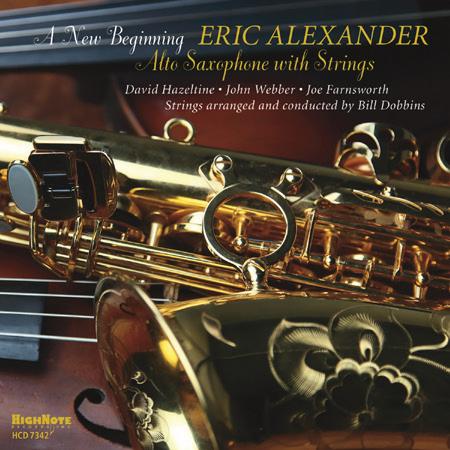 by Scott Yanow
by Scott Yanow
W hen one thinks of an alto saxophonist being joined by a string section, the famous “Bird W ith Strings” sessions of 1949-50 immediately come to mind. And when one thinks of e ric Alexander, it is of a harddriving tenor saxophonist.
A New Beginning is a bit different. Alexander originally played alto when he was a teenager decades ago, but has rarely picked it up since. During the COVID period of isolation, he took it up again to fill up some time. Although he found it a little more difficult to play than tenor, he soon felt comfortable again on the smaller instrument. While Alexander played it in 2021 on a version of “ e state” on his Gentle Ballads VI (for the Japanese Venus label), A New Beginning is his first full-length recording exclusively on alto. At times one can hear the influences of Charlie Parker and Sonny Stitt along with the soulfulness of Hank Crawford, but in general Alexander already sounds like himself on alto.
While one is prepared to hear a set of ballads on A New Beginning , the opening selection is a bit of a surprise: “Blues for Diane” (which is heard again as the closing track) is taken without strings and is a medium-tempo cooker. It serves to introduce the “new” e ric Alexander. He is joined by his longtime rhythm section: David Hazeltine (piano), John Webber (bass) and Joe Farnsworth (drums).
The other seven selections include an unidentified string section, with arrangements by Bill Dobbins. One would swear, while listening to these lush and thoughtful performances, that all of the musicians were in the same room at the same time, but the strings were actually overdubbed months later. Alexander and his musicians left space in their playing so the results sound natural and not overcrowded. Only “ e mbraceable You” is from Charlie Parker’s repertoire but it was not recorded by Bird with strings. The other selections are ballads from later periods including the leader’s “Anita”. Alexander digs into the music and, even when playing heated double-time runs, never loses sight of the melody. And Dobbins’ string writing is tasteful and complementary to the playing of the quartet throughout this set.
For more info visit jazzdepot.com. Alexander is at Rizzoli’s Jun. 4 as part of Peperoncino Jazz Festival and Smalls Jun. 5. See Calendar.
David Murray’s quartet. At one point, he played a solo with so much energy that, apparently, the drum kit didn’t suffice. He stepped away from the drums, sticks in hand, and walked along the perimeter of the club, laying paradiddles on tabletops, empty glasses, the walls and the unoccupied seat right in front of me. Cyrille’s excellent new solo project, Music Delivery/Percussion , is as evocative and inspiring as that initial encounter.
On several tracks, the drummer/percussionist uses the elemental trap kit, cymbals and sticks unit, but elemental doesn’t mean elementary. “Thruway” is a polyrhythmic excursion, a kind of introduction to what follows. “Bernard Albert Wilkinson” finds Cyrille lamenting the passing of a lifelong friend. He establishes a five-beat motif, then expands on it masterfully by creating variations with different tempos and textures, and using eloquent, welltimed silences to build tension.
Setting sticks aside on “La Ibkey” (“Don’t Cry”), he overdubs his hand drumming over the hihat. The song is in 7/4, and Cyrille moves in and out of the unusual time signature, accommodating it in one moment, then challenging it in the next. The spirited cover of Amina Claudine Myers’ “Jumping in the Sugar Bowl” is in standard 4/4 time but is far from average. The instruments and implements Cyrille uses on the spacious improvisation “Metallic Resonance”, including crotales and knitting needles, creates a vivid range of sonic textures. A cowbell, played in a Ghanaian 6/8 pattern, enhances the drums on the sobering “Water Water Water”. This leads seamlessly into the lighthearted “Cowbell e cstasy”, on which only cowbells with sticks are played. He uses mallets with the hi-hat on “ e nter from the e ast” to produce another colorful texture, then steps away from the drums completely to explore another path on “Tambourine Cocktail”. The way brushes are utilized on “Threading a n eedle” is sophisticated and thoughtful, rather than as mere soup-stirrers.


The final tune, “For Girls Dancing”, was inspired by Cyrille’s days at Juilliard. The pulsating energy and joy with which he plays is what I heard during that first encounter at the Vanguard and is what makes Music Delivery/Percussion such a wonderful album.
For more info visit intaktrec.ch. Cyrille’s “Caribbean Cross-Generations” is at Dizzy’s Club Jun. 9-10. See Calendar.
Music Delivery/Percussion Andrew
 Cyrille (Intakt)
by Terrell K. Holmes
Cyrille (Intakt)
by Terrell K. Holmes
I first heard drummer Andrew Cyrille many years ago at the Village Vanguard as part of saxophonist
T o paraphrase a commercial advertising campaign decades ago for a financial firm: “When Brazilian tenor saxophonist Ivo Perelman performs, people listen.” People are listening more intently now, as the peripatetic Perelman consistently releases outstanding, disciplined recordings at an unprecedented pace, and with some of the world’s most notable jazz performers. For the double CD Molten Gold , Perelman has assembled an all-star quartet, with Ray Anderson (trombone), Joe Morris (bass) and Reggie n icholson (drums). The recording
38 June 2023 | THE NEW YORK CITY JAZZ RECORD
Molten Gold
Ivo Perelman/Ray Anderson/Joe Morris/ Reggie Nicholson (Fundacja Słuchaj) by Steven Loewy
is stunning and potentially a game changer for the saxophonist.
Perelman has rarely worked closely with trombonists before, but the timbre of the trombone is a natural foil for the saxophonist, even though merely keeping up with Perelman’s velocity would be challenge enough for trombonists less skilled than Anderson. This writer was first introduced to the trombonist more than forty years ago through Harrisburg Half Life , Anderson’s seminal recording as a leader. Today, the trombonist’s playing is at peak performance: lately, his approach has changed in favor of a new focus on nuance and deep listening, reaching down to the lowest tones with incredible flexibility.
Like most of Perelman’s recent projects, Molten Gold is freely improvised. The two horns partner magnificently, and the album is among Perelman’s most effective collaborations; so much is going on that the quartet might be confused for a large ensemble. From the start, it sounds like a working group, the musicians anticipating each other’s moves and brilliantly moving across dense, complex landscapes. On the opening “Warming u p” (which is anything but), the two horns navigate a difficult landscape, rapidly changing directions, punching out diverse phrases. Anderson focuses on the low tones and sometimes growls; his syncopated give and take with Perelman and the Morris/ n icholson tandem is especially fascinating. “Aqua Regia”, the third track, encompasses many of the strategies that Perelman pursues as a leader. Starting slowly and gradually building, a collective groove develops, the horns spitting out phrases and the group sound taking precedence. Perelman and Anderson lock horns, as if morphing into a single unit.
Listening to this recording in one sitting is exhausting but exhilarating, and when it ends, there is a sense that something very special has been created.
For more info visit sluchaj.bandcamp.com. Anderson is at Zürcher Gallery Jun. 29 with BassDrumBone. Morris is at Roulette Jun. 13 with Joëlle Léandre Septet as part of Vision Festival. See Calendar.
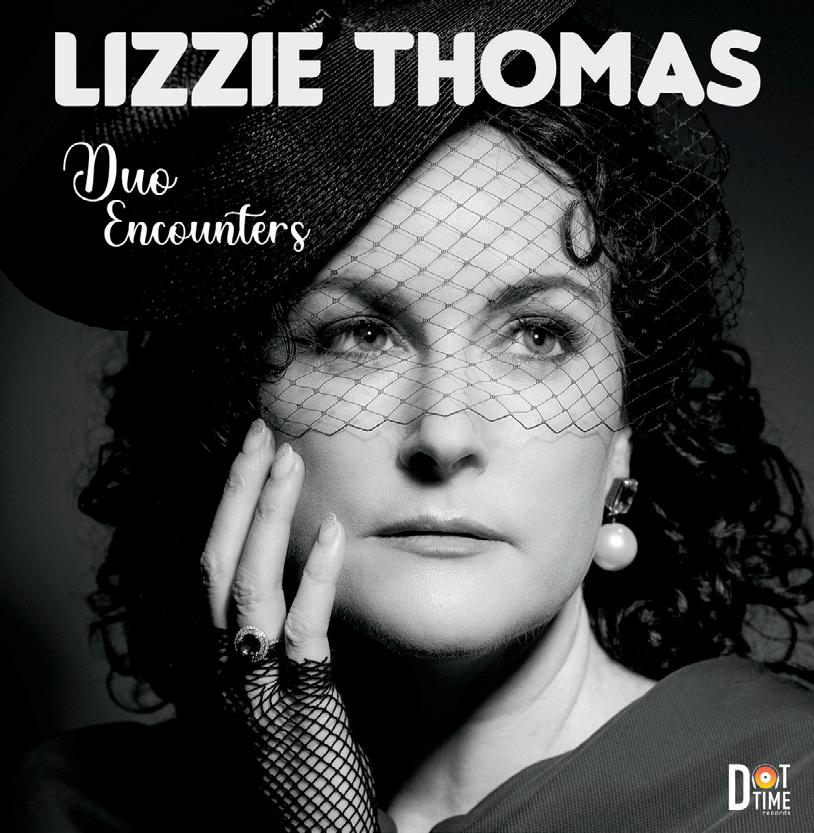
with similarly rapid-fire flights of interregistral fancy, each gesture a kaleidoscope of dynamic contrast as the others murmur agreement. These are ensembles in which listening and playing generate symbiotic propulsion, just as tonal centers slide in and out of focus. The two albums are sides of the same coin and represent high points in a nearly half-century career.
For more info visit discus-music.co.uk
une ARTH e D G e M
Yes Tomorrow
It’s

Paul
a Matter of Fact
Dunmall
(Discus Music)
by Marc Medwin
T he lines curve, fragment and reform, incorporating vast harmonic and historical tracts in a seemingly parenthetical phrase. Fairly brief by the standards of saxophonist Paul Dunmall (who turned 70 last month), “ e very Soul”, Yes Tomorrow ’s closer, brings his inclusive and unpredictable approach into focus.

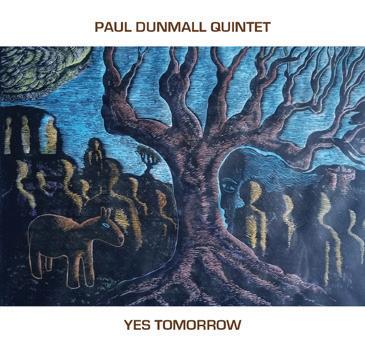
In another way, that alto solo is an outlier. The pieces on these two albums are ensemble compositions, brimming with the invention, discovery and musical dynamism typical of every Dunmall project, composed or otherwise. Last year’s Yes Tomorrow release is a revelation in that the quintet plays Dunmall’s compositions, a relatively rare occurrence and always a treat. Steven Saunders (guitar), James Owston (bass) and Jim Bashford (drums) rock the opening salvos of “Micromys Minutus”, but soon slide into one of those wonderfully nebulous areas Davey Graham and company occupied in the late ’60s. They elongate the groove as Dunmall’s slithery melody obscures the pulse, so that by Saunders’ solo, genre has been irradicated. It isn’t even really a solo, as in late Coltrane fashion, everyone is improvising contrapuntally as meter dissolves, until the infectious groove returns at the end. The compositions explore particular areas: they can be alternately meditative and swinging, as in “Medgar e vers”, or they can blaze with the high energy of the title track, on which trombonist Richard Foote punches, growls and slides his way to the foreground.
On It’s a Matter of Fact , the genre-busting quintet is expanded to include Martin Archer (alto and baritone saxophones), Charlotte Keeffe (trumpet) and long-time Dunmall collaborator, vocalist Julie Tippetts (who turns 76 this month). Her strong, earthy voice propels “Calling the Spirits” into the stratosphere, paving the way for a subsequent collective improvision that blasts notions of time and space into irrelevance. The 18-minute piece grooves while conjuring Dunmall’s I Wish You Peace in distillation, just as “Latu Reunion” builds on its foundational freedoms, with Saunders’ electronic timbres an integral component. Dunmall guides the melody to the surface at 5:47, and his unisons with Tippetts are breathtaking as another vamp ensues.
As with his compositions, Dunmall’s playing morphs continuously even as its roots remain firmly planted. Scales and blues licks coalesce with stunning precision, traversing tonalities with the speed and assurance of complete assimilation. The band aesthetic inhabits similar spaces. Listen at 17:30, as Dunmall lays down a pentatonic phrase and Saunders echoes the final pitch at a moment’s notice. Keeffe imbues the bluesy “Don’t Ask Why”
T his is neither a great stand-alone album, nor a proper introduction to David Amram, but for those already familiar with him it is a worthy, often charming, document. Amram was one of the early, and arguably most accomplished, Third Stream musicians who tried to bring the structures and forms of Western classical music to jazz, and mix swing and improvisation with classical forms. He is an important composer in American music, producing in-house scores for the n ew York Shakespeare Festival, serving as the n ew York Philharmonic’s first Composer in Residence, and scoring Splendor in the Grass , The Manchurian Candidate and other films.
Amram wasn’t the first French horn player in jazz, and while he was an active sideman, his most prominent jazz work was slightly parallel, developing poetry and jazz performances with Jack Kerouac and other Beat poets. One of the pleasures of this album is how it features his horn playing in a small group, alongside a young Albert Mangelsdorff (trombone). This is the first of the two live dates, a rather boxy and stuffy Armed Forces n etwork Radio broadcast from Amram’s stint with the Army. The vibe is mellow and the swinging is both easy and meticulous. Given that this recording dates from a mere two years after the debut of the Gerry Mulligan–Chet Baker Quartet, it’s fascinating to hear how deeply embedded these musicians are in that style. Amram and Mangelsdorff play fluid, well-thought-out and articulated solos, and there’s a clever arrangement of Juan Tizol and Ravel entitled “Perdido Meets Bolero”.
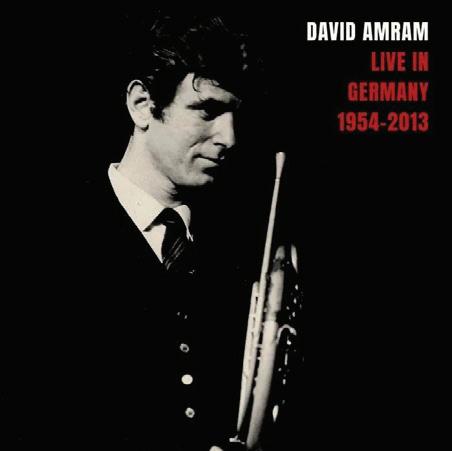
The later date (recorded ten years ago this month) is a short and slightly scattered tribute to Amram; he plays piano, pennywhistles (one of his specialties) and shepherd’s flute, and sings a little, too. The band includes alto saxophonist e mil Mangelsdorff (Albert’s older brother) and the feeling is warm and rambunctious, even if the playing from the band might be stiff and awkward. The highlight is Amram playing his theme to Splendor in the Grass on piano and pennywhistle. Both sessions show his vitality and musicianship, but fans will likely stick with the earlier session.
For more info visit afterthefallrecords.com. Amram is at Zinc Bar Jun. 27. See Calendar.
THE NEW YORK CITY JAZZ RECORD | June 2023 39
Live in Germany 1954-2013 David Amram (After The Fall) by George Grella Ron Carter Russell Malone Wayne Escoffery Noriko Ueda
and more Featuring
This is not your typical duet album
THE ELECTRIFYING NEW ALBUM FROM NYC STELLAR VOCALIST LIZZIE THOMAS
LizzieTheJazzSinger.com DotTimeRecords.com
“Her pitch and sense of time are flawless.” Scott Yanow, LA Jazz Scene
CONTINUED FROM PAGE 12
hospital. From there, they move on to Discovery Week—a “variety of events [that] replicates nearly every kind of performance situation a professional pianist will encounter”, according to the program. Among these events are a non-adjudicated solo performance for the community and four adjudicated sets—two as part of a trio, one accompanying star vocalist Cécile McLorin Salvant, and another soloing with the Buselli-Wallarab Jazz Orchestra.
Divided across two evenings, these four sets fell under the purview of a preeminent panel of judges: pianists Fortner, Cyrus Chestnut and Bill Cunliffe; The Jazz Gallery Artistic Director Rio Sakairi; and A&R Senior Director of Mack Avenue Records Will Wakefield. n o less impressive, celebrated soprano Sylvia Mc n air and master pianist Bill Charlap emceed the two evenings, live-streamed via the APA website.
Thompson, a Juilliard graduate and recipient of the 2018 Lincoln Center e merging Artist Award, approached the trio performances by leaning into the blues. He displayed a deep understanding of the style on his own “Citizen of the Blues” in the first trio set and Johnny Hodges’ “Funky Blues” in the second, before charging through an ebullient rendition of Duke e llington’s “Take the ‘A’ Train”. His seemingly preternatural maturity as a player on these standard forms doubtless factored heavily into the judges’ decision to award him top honors.
But Thompson was not without strong rivals in the contest. William Paterson u niversity graduate Cardello, who bears the distinction of being the final student of Harold Mabern (1936-2019), distinguished himself through his grasp of contrasting styles, first with his solo take of Jimmy McHugh’s ballad “Don’t Blame Me” followed immediately by a skilled bop rendition of Kenny Barron’s “ n ew York Attitude”. And Castro, a current Juilliard student and winner of three ASCAP Foundation Young Jazz Composer Awards, excelled with two superb originals, the beautifully filigreed “Indigo Flurries” and the jazz meditation “Love Song”.
To the extent that the trio performances showcased the players’ improvisatory and compositional skills, the duo and big band sets tested their abilities as collaborators. Cornish, who received a full scholarship to u CLA’s Herbie Hancock Institute of Jazz, delivered one of the competition’s most enthralling performances on Billy Strayhorn’s “Lush Life”, so responsive and unpredictable was his rapport with Salvant. And u niversity of n orth Carolina ( un C) grad Linger, winner of the American Jazz Pianist Competition in 2017 (a year before Cornish in 2018 and five years before Castro in 2022), showed an unruffled dexterity in finessing the variable tempos, shifting keys and crisp grooves in “Monk Medley”, a tight big-band arrangement of select compositions by the bebop master.
After the big band set on the final evening, the judges sequestered themselves to select the winner. As the audience waited, perhaps they recalled Charlap’s earlier wisdom summing up the difficulties of choosing the recipient of this year’s award.
“ e verybody here is a winner. It sounds corny to say, but it isn’t,” he said. “Think about it—a competition that had in it Oscar Peterson, Art Tatum, Bud Powell, Bill e vans and Thelonious Monk. Who wins? Of course, they all win. They all win for being themselves. And that’s what these marvelous musicians have—they all have a point of view, something to say about the music. They will continue to develop into greater and greater artists—and have not just a hit record, but a hit career. And that’s where it’s at.”
For more info visit americanpianists.org
electronic and acoustic timbres with a punk/metal attitude, restively switching moods and textures like someone scanning radio stations. In BRIC Ballroom, Ganavya and Shabaka Hutchings co-led a soothing, spiritual session that made the big hall feel small and close. Ganavya’s melismatic vocals and Hutchings’ mesmerizing flute cast a spell that conjured a few uninhibited trance dancers to rise from their seats.
Back at Mark Morris Dance Center, innovative bassist Brandon Lopez employed a plethora of percussive and extended techniques to craft a oneman orchestral backdrop for Fred Moten’s intoned ‘flowetry’, which offered wry observations on the contradictory nature of human beings. A quick trip out to Littlefield afforded a peek at the second half of soprano saxophonist Dave Liebman and pianist Kenny Werner’s duo set. Werner was extroverted and ebullient; Liebman was more subdued, but poured out his soul on John Coltrane’s ballad “ n aima”. There were ten times as many musicians onstage at Roulette when conductor/arranger David Sanford’s Pittsburgh-based big band played a raucous set ending with featured trumpeter Hugh Ragin’s The Moors of Spain , a programmatic meditation on war and peace.
A second quick jaunt to Littlefield offered a taste of tenor saxophonist James Brandon Lewis and drummer Chad Taylor’s superb duet set. After playing a novel version of “Over the Rainbow”, Lewis exclaimed, “The reed’s trying to be my enemy tonight,” but nobody believed it when they heard his tremendous tone on the minor ballad in 9/8 time that capped the set. The tone profile was of decidedly deeper frequency at Synaesthesis’ Roulette set; bass clarinet, cello, piano, bass and tuba all rumbled together like electronic digeridoos. At Public Records, Thumbscrew (guitarist Mary Halverson, bassist Michael Formanek, drummer Tomas Fujiwara) crafted brittle, crab-walking melodies that side-slipped through established key areas in quirky rhythmic motions—ideal theme music for a steampunk adventure.
The final Saturday event was one of the more interesting: Liturgy’s bristling black metal concert at Littlefield, a swarm of high-velocity, tremolo-picked mosquito notes punctuated by guitarist/vocalist Haela Hunt-Hendrix’ howling “Wow’s!” over longform, through-composed blast beats trip-hammered home by drummer Leo Didkovsky.
First up Sunday (May 7) in BRIC’s lobby was Julia Wolfe’s “my lips from speaking”, a two-piano composition (based on the churchy piano riff of Aretha Franklin’s “Think”) performed by Vicky Chow and David Friend. Down the hallway in the big ballroom, birdsong played over the PA system established an irenic ambiance for guitarist Gyan Riley and sitarist Krishna Bhatt’s jugalbandi (duet) with tabla, which grafted Hindustani raga and tala to jazz and new age music. At Littlefield, Lori Goldston’s solo cello set alternated between open-handed, quasi-flamenco strumming and bowed drones and overtones that created a gritty, bagpipe-like effect. At BAM Café, vibraphonist Patricia Brennan led her quartet on an original program of quickfire, metrically intricate pieces including “Convergences” and “Sizigia”, shading her gleaming, gliding lines with a whammy pedal.
Composer/multi-reedist Henry Threadgill gave an insightful interview at Center for Fiction bookstore, touching on various topics: the music business (comparing major labels to loan sharks); innovating within tradition (“You gotta get up off of this and on to something else”); finding your voice (“You have to have a language built up within you before you can say something”); travel as a source of artistic inspiration; musical meanings (“I never have a ‘message’ as such; I would never put myself
in that position”); the Vietnam War’s dehumanizing effects; childhood sonic memories; and his personal mantra, derived from Muhammad Ali: “I’m in shape, and my training’s on time!” Shortly afterward, he and we reassembled around the corner at Mark Morris Dance Center for a tribute to his Very Very Circus, organized like parallel train tracks: tubas (Marcus Rojas, Ron Caswell) and guitars (Brandon Ross, Miles Okazaki) on either side of the stage, alto sax (Yosvany Terry) to the left, trombone (Jose Davila) to the right, with locomotive drummer Gene Lake chugging up the middle. The rumbling twin tubas made for muddy textures at first, but the septet’s sound grew clearer and more cohesive as the set progressed, cresting with the final tune, “Bee Dee Aff”.
Pianist Marta Sanchez’ trio set at Roulette featured intelligent themes laced with subtly subversive rhythms, serving as a brief palate cleanser before the festival finale: the Art e nsemble of Chicago at Pioneer Works. Since saxophonist Roscoe Mitchell was COVID-quarantined, the remaining original member, drummer Famoudou Don Moye, captained the ship comprised of Moor Mother (spoken word), eddy kwon (violin), Simon Sieger (trombone, keyboards) and Junius Paul (bass), plus Shabaka Hutchings (tenor saxophone/flutes) filling in for Mitchell. Calling out the ancestral spirits for a good hour and a half, A e C’s most transcendental moments occurred when the band sang, danced and played small bells, rattles, flutes and whistles. Moving in close, winding circles, they enjoined the audience: “Let the children see!” “Trust your vision!” “Seek to live!” “Ancient to the future!” “This is what freedom sounds like, looks like, feels like!”
For more info visit bangonacan.org/longplay
NEW WOLFGANG LACKERSCHMID & CHET BAKER ALBUm

40 June 2023 | THE NEW YORK CITY JAZZ RECORD
(
( APA
visit do imerecords.com for more info Available on vinyl & CD
LONG PLAY CONTINUED FROM PAGE 12 )
)
“Bob wanted to do it for a while, but timing is everything. It’s like a dream that came true. The fact that it’s a comeback for both of us makes it feel like it wasn’t an accident. I learned my trade in new Jersey where Bob’s dad did a lot of his work. You start connecting the dots, it’s pretty amazing to me,” he adds.
Thiele Jr. selected songs for Valentine that drew connections from past to present. Valentine says, “We were coming out of lockdown and we wanted to say something. We thought ‘You Haven’t Done nothing’ by Stevie Wonder spoke to our disappointment in political officials who we’d put our faith in and ‘Home Is Where the Hatred Is’ by Gil Scott-Heron and ‘We People Who Are Darker Than Blue’ by Curtis Mayfield speak to the racism Black people experience. We also did ‘The Creator Has a Master Plan’ by Pharoah Sanders and ‘Wade in the Water’. It was pretty gut-wrenching… Once it was finished, I couldn’t listen to it for nine months because it had taken so much out of me. Bob told me we’d done something special. I was very pleasantly surprised by the depth we put into those songs.
“We’d cut the record in LA at east West Studio and Bob took it to nY and added musicians Claire Daly on baritone saxophone and Theo Croker on trumpet. So, when he brought it back to me it’d taken on a whole new thing. The nucleus of the rhythm section was so good that what we put on later was icing on the cake,” he adds.
“What I tried to do with Billy was to link him with artists like saxophonist Immanuel Wilkins and drummer James Gadson, who’d never made a record together. It’s the idea of bringing together great musicians regardless of their prior individual recognition,” Thiele says. “I want to break down the lanes that have been established for a long time in jazz and let collaborators come together to create something unique.”
Given the enduring relevance of the sociopolitical classics covered, Valentine ponders how much has changed and how much has stayed the same since Flying Dutchman first launched. “We’re much more aware of things, even though a lot of things remain the same. I love the young people who take to the street and speak out. Progress is slow and it comes in increments. As MLK said, ‘you must continue the struggle.’”
Thinking of his father’s legacy and his renewed sense of vision for the label, Thiele Jr. says, “I ask myself, what would Bob Senior do? I’m committed to honoring the early years of Flying Dutchman as a social and political mouthpiece reflecting the times… The brand has been reactivated to its original mission statement. My father loved being in the studio with artists he wanted to hear recorded. We’re going to do stuff that I love that’s jazzbased, politically and socially conscious. My dad had a strong feeling about what’s going on in 1969, like I do now.”
For more info visit flyingdutchmanrecords.com. A Gato Barbieri tribute with Jeff Lederer is at Barbés Jun. 15. See Calendar.
(INTERVIEW CONTINUED FROM PAGE 6 )
TNYCJR: What about the “Louis Armstrong and Latin Music” show you’re doing at Hostos Center in June?
BS: Louis Armstrong has a strong connection to Latin music because his trumpet inspiration, the person he copied his tone off of, was Manuel Perez. Perez was Cuban, and he was the trumpeter in the Olympia Brass Band in new Orleans. And if you don’t believe me, look at the transcript of his interview with the Smithsonian. I freaked out when I read it because me and Mario (Bauzá) were having a conversation one day about why are all these hidden figures that are Latino and Latinos in jazz never given any credit? When you hear recordings of Louis Armstrong, you’re hearing Manuel Perez’ voice on
the trumpet combined with Louis Armstrong’s creative improvisational genius. He also in 1930 recorded “The Peanut Vendor (el Manisero)”, which was the first Cuban tune that hit the u.S. in a big way, so he has that connection to Latin music. And of course, he’s from the northernmost city of the Caribbean: new Orleans. So there you go. It’s a children’s concert. It’s free. So families can come with their kids and have a great Sunday afternoon.
For more info visit bobbysanabria.com. Sanabria’s album release concert is at Hostos Center Jun. 4. See Calendar.
Recommended Listening:
• Mongo Santamaria—Mongo Magic (Roulette, 1983)
• Mario Bauza And His Afro-Cuban Jazz Orchestra— Tanga (Messidor, 1991)
• Bobby Sanabria Big Band Afro-Cuban Dream— …live & in clave!!! (Arabesque, 1999)
• Bobby Sanabria/Manhattan School of Music AfroCuban Jazz Orchestra—Kenya Revisited Live!!! (featuring Candido) (Jazzheads, 2008)
• Bobby Sanabria Big Band—Multiverse (Jazzheads, 2011)
• Bobby Sanabria MuLTIVeRSe Big Band— VOX HUMANA (Jazzheads, 2022)
( ULRICHSBERG CONTINUED FROM PAGE 12 )
Butcher’s command of multiphonics gifts him an entire language which he deployed not only in visceral rollercoaster surges, but also in more nuanced settings. That was illustrated by one magical episode when splittoned soprano blended with bowed cymbal and spare tolling bass, conjuring up a deliciously melancholy atmosphere.
The union of another stalwart of the London scene, drummer Roger Turner, with two veteran Japanese protagonists, guitarist Otomo Yoshihide and pianist Masahiko Satoh, in the Sea Trio, proved another highlight. Amid the mutual give and take, Satoh showed a particular affinity for form, periodically inserting vamps into the unfettered outpouring. every oblique comment and rattle by Turner was visible in his facial expressions, as he either played against patterns or fell into a steady meter to accentuate the rush even more. While piano and drums could get quite jazzy on occasion, Yoshihide tended towards the abstract, drawing on noise, rock and improv, enlisting bows, mallets and a metal u-bend in his quest. In a rousing finale, Satoh cued a pithy convoluted unison which drew whoops and hollers from the throng. Their entreaties were answered with a delicate lullaby, sporting just a hint of dissonance.
The shadow of the late German bassist Peter Kowald loomed large over In Memoriam Global Village. The two remaining members of Kowald’s Global Village Trio, Gunda Gottschalk on violin and Xu Fengxia on guzheng (a sort of zither) and sanxian (a three-stringed lute), joined with his erstwhile sparring partner, drummer Günter Baby Sommer, and Belgian bassist Peter Jacquemyn. The addition of Sommer was inspired, as his infectious rhythms grounded the wilder flights of fancy, and his provocations productively kept the strings off balance. All three supplemented their instrumental duties with vocal lines; Jacquemyn’s eerie throat singing was especially striking. Their set, which veered from effervescent swing to exotic timbral intertwining, acted as a joyous celebration of its absent founder and a vibrant affirmation of the musicians’ artistry.
The quartet of reedman Frank Gratkowski, pianist Achim Kaufmann, bassist Wilbert de Joode and drummer Tony Buck teetered constantly between chamber delicacy and thorny wallop, often depending on whether Gratkowski favored flute and clarinets or his fiery alto saxophone. It was an intense set, which privileged ensemble interaction over solo breaks. That emphasis on communal music-making was characteristic of the whole event. Metal Breath, the pairing of vocalist Phil Minton and
tubist Carl Ludwig Hübsch, was highly communicative, albeit in a tongue utterly of their own making. Minton seemed to be channeling a stream of different characters; Hübsch complemented Minton’s dazzling litany of hums, groans and sniffs with vocal sounds of his own. Jane In ether, comprising pianist Magda Mayas, violinist Biliana Voutchkova and flutist Miako Klein, also traded in unconventional sonorities, shaping them into prickly dialogue.
Italian cellist Luca Tilli and trombonist Sebi Tramontana hewed closer to conventional norms in a relaxed, thoughtful conversation, yet still integrated excitable vocalizations and percussive outbursts into the extemporized discourse. Likewise anchored, the Austrian twosome of pianist Josef novotny and bassist Peter Herbert mined an accessible seam at first, then stretched the parameters with the intrusion of electronic effects. The contemporary music strand of the Kaleidophon was also represented by a performance of the Italian composer Luigi nono’s “Hay que caminar soñando” by violinists Annelie Gahl and Alexander Gheorghiu (who perambulated through the parish church), alongside other contemporary pieces and two baroque works.
With its top-notch programming, enthusiastic crowd and friendly vibe, the ulrichsberg Kaleidophon should figure highly on every festival-goer’s radar.
For more info visit jazzatelier.at
( LEST WE FORGET CONTINUED FROM PAGE 10 )
shows his skills on clarinet. His last recording was with saxophonist James Carter ( Conversin’ with the Elders , Atlantic, 1996). Carter said this about Tate’s sound: “It’s like he could swing honk and boot but at the same time turn around and caress a rose petal… He could show tenderness, but he got the spurs on and jingle, jingle, jingle, just knock everybody on their butt. But when it came time to seduce and move a filly, let me flip this over here for you.”
Carter remembers his first meeting with Tate ten years earlier as a seventeen-year-old attending a concert in Detroit. “The catalyst was a fundraiser for Paradise Valley, which is a part of Detroit where the jazz groups used to come… I still have the program. Buddy and Sweets (trumpeter Harry edison) just finished playing, and you would think they would be, ‘no, don’t mess with this, don’t mess with that,‘ but I was like, ‘Can I see your horn?‘ I played his Conn and…YeAH! ... Then Buddy said, ‘Oh, you got a little set on there, look at that.’ This is September 1986, and ten years later both of them agreed to be on my album.” Carter continues, “I asked Buddy, what was the real deal on Billie Holiday? And I can just see how his cheeks turned up and he was, like, ‘Yeah, I was there, she was one of the guys and at the same time she was the lady, but then that sailor side would come out and put folks in check.’”
Tate passed away on February 10, 2001, but his sax still blows. Carter possesses his Selmer Balance Action and says, “I bring it out every time I need to reconnect.” You can hear Carter connect with Tate’s Selmer as he plays all over it on “Skull Grabbin” ( In Carterian Fashion , Atlantic, 1998). As he tells it, “My Yamaha Custom for some reason wouldn’t fall under my fingers, but I also had Buddy’s ax there with me, and we did it in one take.” Buddy Tate would approve.
Recommended Listening:
• Buddy Tate— 1945-1950 (Classics, 1945-50)
• Count Basie And His Orchestra— 1947 (Classics, 1947)
• Buck Clayton/Buddy Tate— Buck & Buddy (Prestige Swingville, 1960)
• Buddy Tate/Milt Buckner— When I’m Blue (The Definitive Black & Blue Sessions) (Black & Blue, 1967)
• Buddy Tate— Meets Dollar Brand (Chiaroscuro, 1977)
• Buddy Tate/Al Grey— Just Jazz ( u ptown, 1984)
THE NEW YORK CITY JAZZ RECORD | June 2023 41
( LABEL SPOTLIGHT CONTINUED FROM PAGE 11 )
C A L e n D A R
Thursday, June 1
êCaleb Michel; Darius Jones Quintet 411 Kent 8 pm $20
êJerry Bergonzi with Anthony Pinciotti, Adam Kolker, Jeremy Stratton Bar Bayeux 8, 9:30 pm
• Mike Moreno Quartet with Lex Korten, Matt Brewer, Jimmy Macbride Bar Lunàtico 9, 10:30 pm $10
êPhillip Johnston Barbès 6 pm
êJohn Patitucci Remembrance Trio with Joe Lovano, Brian Blade Birdland 7, 9:30 pm $30-40
• Ghost Note Blue Note 8, 10:30 pm $30-45
• Jon Davis Trio; Ai Murakami Quartet Cellar Dog 7, 8:30, 11pm $5
• Sekou McMiller and Friends: “African Diaspora and Dance”; SJC-3 with Sarah Cion, Alec Safy, Mike Camacho Dizzy’s Club 7:30, 9:30, 11:15 pm $20-45
• Julieta Eugenio Quartet; T.K. Blue Quartet The Django 7:30, 9, 10:30, 12 am $25
• Roy Hargrove Big Band The Jazz Gallery 7:30, 9:30 pm $20-30
êTim Berne, Tom Rainey, Gregg Belisle-Chi Lowlands 8 pm $10
• Oran Etkin, Kevin Hays, Matt Wilson; Greg Murphy Trio Mezzrow 7:30, 9, 10:30 pm, 12 am $35
• Trampleman The Porch 8 pm $10
êJALC Orchestra: “The Jazz Ambassadors - Duke, Dizzy, and Brubeck” Rose Theater 8 pm $40-180
• Trevor Turla; Sophia Kickhofel Quintet Silvana 7, 11 pm
• Willy Rodriguez Quintet with Gideon Forbes, Grant Richards, Joseph Doubleday, John Sims; Sarah Hanahan Quartet and Jam with Luther S. Allison, Elam Friedlander, Diego Joaquin Ramirez Smalls 7:30, 9, 10:30 pm, 12 am $35
êGeorge Coleman Quintet with Peter Bernstein, Tadataka Unno, John Webber, George Coleman Jr Smoke 7, 9 pm $35-55
• JC Maillard, Jorge Glem, Darío Boente, Juana Luna, Sofía Rei The Stone at The New School 8:30 pm $20
êAmbrose Akinmusire with Fabian Almazan, Joe Sanders, Marcus Gilmore Village Vanguard 8, 10 pm $40
Friday, June 2
• Anant Pradhan, Larry McDonald Bar Lunàtico 9, 10:30 pm $10
• Richard Dworkin Orchestra; Spanglish Fly Barbès 8, 10 pm $20
• Bill Saxton and the Harlem All-Stars Bill’s Place 7, 9 pm $30
êBirdland Big Band; John Patitucci Remembrance Trio with Joe Lovano, Brian Blade Birdland 5:30, 8:30, 10:30 pm $20-40
êScott Robinson Quartet Birdland Theater 7, 9:30 pm $20-30
• Ghost Note Blue Note 8, 10:30 pm $30-45
* = Recommended Shows
• Steven Oquendo Latin Jazz Orchestra Bryant Park 7 pm
• Victor Gould Quartet; Tad Shull Quartet Cellar Dog 7, 8:30, 11pm $10
êDion Parson and 21st Century Band with Ron Blake, Melvin Jones, Reuben Rogers, Carlton Holmes, Victor Provost, Alioune Faye; SJC-3 with Sarah Cion, Alec Safy, Mike Camacho Dizzy’s Club 7:30, 9:30, 11:15 pm $20-55
• David Gibson Quartet; Sam Dillon Quintet The Django 7:30, 9, 10:30, 12 am $25
• Alone Not Lonely Vol. 5 with Yoon Sun Choi, Tizia Zimmermann, Noa Fort, DoYeon Kim Ibeam Brooklyn 7:30 pm $20
• Vanisha Gould The Jazz Gallery 7:30, 9:30 pm $20-30
• Tomoko Ohno, Jay Leonhart Knickerbocker Bar & Grill 9 pm
êNels Cline’s Consentrik Quartet with Ingrid Laubrock, Chris Lightcap, Tom Rainey Le Poisson Rouge 7:30 pm $32.96
• Peter Zak, Paul Gill, Billy Drummond; John Chin Trio Mezzrow 7:30, 9, 10:30 pm, 12 am $40
• Khalil Kwame Bell Mount Morris Ascension Presbyterian Church 7 pm
• Rico Jones Quartet Red Room at KGB Bar 10 pm
• Ryan Sands; Michael Zilber Room 623 at B2 Harlem 7, 8:30, 10 pm $20
êJALC Orchestra: “The Jazz Ambassadors - Duke, Dizzy, and Brubeck” Rose Theater 8 pm $40-180
êSteve LaSpina Reunion Quintet with Billy Drewes, Dave Ballou, Marc Copland, Jeff Hirshfield; Corey Wallace Dubtet and Jam Smalls 7:30, 9, 10:30 pm, 12 am $40
• George Coleman Quintet with Peter Bernstein, Tadataka Unno, John Webber, George Coleman Jr Smoke 7, 9, 10:30 pm $35-55
• Lisa Fischer Sony Hall 8 pm $55-85
• Jorge Glem, Franco Pinna, Sofía Rei The Stone at The New School 8:30 pm $20
êAmbrose Akinmusire with Fabian Almazan, Joe Sanders, Marcus Gilmore Village Vanguard 8, 10 pm $40
• Ray Blue Quintet Williamsbridge Oval 6 pm Saturday, June 3
• Maalem Hassan BenJaafar, Dan Freedman Bar Lunàtico 9, 10:30 pm $10
• Brian Prunka; Anant Pradhan, Larry McDonald, DJ Little Dynasty Barbès 6, 10 pm $20
• Bill Saxton and the Harlem All-Stars Bill’s Place 7, 9 pm $30
êJohn Patitucci Remembrance Trio with Joe Lovano, Brian Blade Birdland 8:30, 10:30 pm $40
êScott Robinson Quartet Birdland Theater 7, 9:30 pm $20
• Ghost Note Blue Note 8, 10:30 pm $30-45
• Samba de Gringo; Miki Yamanaka Quartet Cellar Dog 7, 8:30, 11pm $10
êDion Parson and 21st Century Band with Ron Blake, Melvin Jones, Reuben Rogers, Carlton Holmes, Victor Provost, Alioune Faye; SJC-3 with Sarah Cion, Alec Safy, Mike Camacho Dizzy’s Club 7:30, 9:30, 11:15 pm $20-55
• Max Johnson Trio; Craig Handy and 2nd Line Smith The Django 7:30, 9, 10:30, 12 am $25
• Alone Not Lonely Vol. 6 with Akiko Pavolka, Mazz Swift, Cat Toren Ibeam Brooklyn 7:30 pm $20
• Tomoko Ohno, Jay Leonhart Knickerbocker Bar & Grill 9 pm
• Peter Zak, Paul Gill, Billy Drummond; Johnny O’Neal Trio Mezzrow 7:30, 9, 10:30 pm, 12 am $40
êMatt Moran, Sarah Elizabeth Charles, Curtis Hasselbring; Darren Johnston, Dayna Stephens, Jacob Sacks, Sean Conly, Vinnie Sperrazza; Peter Hess, Matt Moran, Mick Rossi The Owl Music Parlor 8 pm $10
êRoberta Donnay, Kay Kostopoulo Pangea 7 pm $25

• Raphael Silverman Trio; Casa Mantequilla The Porch 1, 7, 9 pm $15
• Tamar Eisenman and Y&I Room 31 at Arlo NoMad 7:30 pm $23.41
êJALC Orchestra: “The Jazz Ambassadors - Duke, Dizzy, and Brubeck” Rose Theater 8 pm $40-180
êSteve LaSpina Reunion Quintet with Billy Drewes, Dave Ballou, Marc Copland, Jeff Hirshfield; Eric Wyatt Quartet and Jam Smalls 7:30, 9, 10:30 pm, 12 am $40
êGeorge Coleman Quintet with Peter Bernstein, Tadataka Unno, John Webber, George Coleman Jr Smoke 7, 9, 10:30 pm $35-55
êAllen Lowe and The Constant Sorrow Orchestra Soup & Sound 8 pm
• JC Maillard, Sofía Rei The Stone at The New School 8:30 pm $20
êBruce Hornsby and The Noisemakers with Christian McBride, John Scofield, Kenny Garrett Town Hall 8 pm $68-174
êAmbrose Akinmusire with Fabian Almazan, Joe Sanders, Marcus Gilmore Village Vanguard 8, 10 pm $40 Sunday, June 4
êAruan Ortiz solo 411 Kent 8 pm $20
• The Creole Cookin’ Jazz Band Arthur’s Tavern 7 pm
• Jon Cowherd’s Mercy Project with Steve Cardenas, Ben Allison, Dan Rieser Bar Lunàtico 9, 10:30 pm $10
• Max Johnson Trio with Neta Raanan, Jeff Davis; Stéphane Wrembel Barbès 6, 8 pm $20
• Jay Leonhart; Arturo O’Farrill and The Afro Latin Jazz Orchestra Birdland 5:30, 8:30, 10:30 pm $20-40
êScott Robinson Quartet Birdland Theater 7, 9:30 pm $20
• Harlem Blues Project Blue Note 12:30, 2:30 pm $25
• Ghost Note Blue Note 8, 10:30 pm $30-45
• Maria Kaushansky Campbell Apartment 6 pm
• Mike Karn Trio Cellar Dog 7, 8:30 pm $5
êDion Parson and 21st Century Band with Ron Blake, Melvin Jones, Reuben Rogers, Carlton Holmes, Victor Provost, Alioune Faye Dizzy’s Club 5, 7:30 pm $20-40
• Alexander Claffy Quartet; Caelan Cardello Trio The Django 6:30, 8, 9:30, 11 pm $25
êBobby Sanabria Multiverse Big Band; Miguel Zenon, Angelica Negron Hostos Center 1, 4 pm
• Welf Dorr, Elias Meister, Dmitry Ishenko, Rodrigo Recabarren Keep 9 pm
• Kristina Koller with Fima Chupakhin, James Robbins, Cory Cox; Jamile Polite Jam Mezzrow 7:30, 9, 10:30 pm, 12 am $35
êThe Pan Afrikan Peoples Arkestra with Michael Session, William Roper, et al.; Taja Cheek National Sawdust 8 pm $20
• Wajdi Cherif, Kana Miyamoto New York Jazz Workshop 5:30 pm $20
• Kate Baker Trio North Square Lounge 12:30, 2 pm
• Angelina Kolobukhova, Andrew Wilcox, Sameer Shankar Ornithology Jazz Club 2 pm $5
• Akie Bermiss, Kazemde George, Yotam Ben-Or The Owl Music Parlor 8 pm $10
• Timothy Johnson The Porch 1 pm $10
• Elio Coppola, Eric Alexander, Alexander Claffy Rizzoli Bookstore 5 pm $25
• Carmen & Jean Room 31 at Arlo NoMad 7:30 pm $23.41
• Marcus Goldhaber; Mimi JonesRoom 623 at B2 Harlem 6, 8, 9:30 pm $20
• Sivan Arbel Quartet Saint Peter’s Church 5 pm
• From Bebop to Hardbop; John Colonna Silvana 7, 10 pm
• John Ellis Quintet with Mike Rodriguez, Gary Versace, Massimo Biolcati, Joe Dyson; Aaron Johnson Boplicity and Jam Smalls 7:30, 9, 10:30 pm, 12 am $35
êGeorge Coleman Quintet with Peter Bernstein, Tadataka Unno, John Webber, George Coleman Jr Smoke 7, 9 pm $35-55
êAmbrose Akinmusire with Fabian Almazan, Joe Sanders, Marcus Gilmore Village Vanguard 8, 10 pm $40
Monday, June 5
êOmer Avital Group Bar Lunàtico 9, 10:30 pm $10
• Billy Stritch and Gabrielle Stravelli: “Mel and Ella Swing!” Birdland 8:30, 10:30 pm $30
êVince Giordano and the Nighthawks Birdland Theater 5:30, 8:30 pm $30-40
• Talib Kweli and the Whiskey Boys Blue Note 8, 10:30 pm $40-55
• Vanderlei Pereira Trio Cellar Dog 7, 8:30 pm $5
• Clarice Assad, Mariel Mayz, João Luiz Rezende, Carolina Calvache; Yosvany Terry, Fabian Almazan, Yunior Terry, David Virelles Dizzy’s Club 7:30, 9:30 pm $20-40
• Marius Van Den Brink Quintet; Wilfie Williams Quartet The Django 7:30, 9, 10:30, 12 am $25
êMingus Big Band Drom 7:30, 9:30 pm $30-35
• Spike Wilner Trio; Pasquale Grasso, Ari Roland, Keith Balla Mezzrow 7:30, 9, 10:30 pm, 12 am $35
• Brian Hargrove; Randal Fisher Quartet; Mekala Session and Zekkereya El-Magharbel Nublu 151 7 pm $22.66
• Julen Rodriguez Quintet Silvana 10 pm
• Eric Alexander Quartet; Mike Boone Quartet and Jam Smalls 7:30, 9, 10:30 pm, 12 am $35
êVanguard Jazz Orchestra Village Vanguard 8, 10 pm $40
êSheryl Bailey Zinc Bar 7, 8:30 pm $25
Tuesday, June 6
• Jorge Glem, Sam Reider: “Brooklyn-Cumaná” Bar Lunàtico 9, 10:30 pm $10
• Tamar Korn Barbès 7 pm $20

êStacey Kent Birdland 7, 9:30 pm $30-40
• Loston Harris Birdland Theater 5:30 pm $20-30
• Talib Kweli and the Whiskey Boys Blue Note 8, 10:30 pm $40-55
• Our Delight Cellar Dog 7, 8:30 pm $5
• Brandon Bain and Jonathan Michel: “Harry Belafonte’s Calypso Re-Imagined” Dizzy’s Club 7:30, 9:30 pm $25-50
• Pedro Giraudo Tango Quartet; Hector Martignon’s Foreign Affair The Django 7:30, 9, 10:30, 12 am $25
• Kevin Sun Trio with Walter Stinson, Kayvon Gordon Lowlands 8, 9:30 pm $10
• Susan Tobocman Quartet with Matt Ray, Caleb Tobocman, Michael Sarin; Michael Kanan, Greg Ruggiero, Neal Miner Mezzrow 7:30, 9, 10:30 pm, 12 am $35
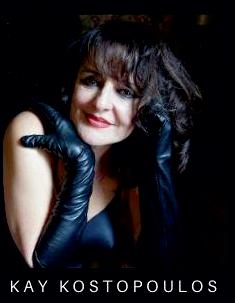
• Frank Lacy Quartet; Jason Clotter Quartet and Jam Smalls 7:30, 9, 10:30 pm, 12 am $35
êKurt Elling with the Vanguard Jazz Orchestra Village Vanguard 8, 10 pm $40 êLizzie Thomas Zinc Bar 7, 8:30 pm $25
Wednesday, June 7
• Oz Noy Trio with Matt Penman, Colin Stranahan 333 Lounge 7:30, 9:30 pm
êEkphrastic Discourse with James Ilgenfritz, Sandy Ewen, Michael Foster, Sam Newsome; Anagram Ensemble with Sara Schoenbeck, Josh Sinton 411 Kent 8 pm $20
êSullivan Fortner Bar Bayeux 8, 9:30 pm
• Chris Morissey Bar Lunàtico 9, 10:30 pm $10
êStacey Kent Birdland 7, 9:30 pm $30-40
êDavid Ostwald’s Louis Armstrong Eternity Band; Frank Vignola’s Guitar Night with Mike Stern Birdland Theater 5:30, 8:30 pm $20-30
• Talib Kweli and the Whiskey Boys Blue Note 8, 10:30 pm $40-55
êBrandi Disterheft Trio Cellar Dog 7, 8:30 pm $5
• Rome Neal Quintet Columbus Park 12 pm
• Kirk Fletcher with Anton Fig, Felicia Collins, Andy Hess, Eric Finland Cutting Room 8 pm $35-40
êBrian Charette Quartet with Joel Frahm, Ed Cherry, Adam Nussbaum Dizzy’s Club 9:30 pm $25-40
êJonny King Trio; Frank Basile Quartet The Django 7:30, 9, 10:30, 12 am $25
• Ben Tiberio Root Cause with David Leon, Yvonne Rogers, Ari Hoenig The Jazz Gallery 7:30, 9:30 pm $20-30
êCarol Sudhalter, Bertha Hope, Keisha St. Joan, Bill Crow Jazz Museum in Harlem 7 pm $25
• Stephen Gauci, Adam Lane, Colin Hinton; Alejandro Florez, Dan Blake, Satoshi Takeishi; Yoni Kretzmer, Mike Pride, Sean Conley, Reuben Radding Main Drag Music 7 pm $20
• Neil Podgurski Trio; Sam Raderman Trio Mezzrow 7:30, 9, 10:30 pm, 12 am $35
• Ben Cassara with Josh Richman, Harry Allen, Dean Johnson, Tim Horner Pangea 7 pm $25
• Harlem Blues and Jazz Band Pier 84 7 pm
• Ginetta’s Vendetta The Porch 8 pm $10
êBRIC Celebrate Brooklyn!: Taj Mahal, Corinne Bailey Rae, Harlem Gospel Travelers Prospect Park Bandshell 6 pm
• Peter Brainin Room 623 at B2 Harlem 8 pm $20
• Eishin Nose, Satoshi Takeishi Scholes Street Studio 8 pm
• Adam Brenner Quartet; Curtis Nowosad Quintet and Jam Smalls 7:30, 9, 10:30 pm, 12 am $35
êSean Mason Quintet with Anthony Hervey, Chris Lewis, Felix Moseholm, Domo Branch Smoke 7, 9 pm $35-55
êSono Fest!: Ethan Iverson, Mark Turner Soapbox Gallery 7:30, 9 pm $25
êThomas Morgan, Ben Goldberg The Stone at The New School 8:30 pm $20
42 June 2023 | THE NEW YORK CITY JAZZ RECORD
êKurt Elling with the Vanguard Jazz Orchestra Village Vanguard 8, 10 pm $40
êHenry Fraser Zürcher Gallery 8 pm $20
Thursday, June 8
êAnagram Ensemble with Katie Porter; Sara Bernstein + Stuart Popejoy; Time Phase Trio with Ty Citerman, Jen Baker, Shayna Dunkelman 411 Kent 8 pm $20
• Grassroots Jazz Effort with Jerome Sabbagh, Adam Kolker, Jeremy Stratton, George Schuller Bar Bayeux 8, 9:30, 11 pm
• Jason Lindner, Nate Wood Bar Lunàtico 9, 10:30 pm $10
• Miss Maybell and her Jazz Age Artistes Barbès 8 pm $20
êStacey Kent Birdland 7, 9:30 pm $30-40
• Talib Kweli and the Whiskey Boys Blue Note 8, 10:30 pm $40-55
• Dave Gibson Organ Quartet; Simona Premazzi Quartet Cellar Dog 7, 8:30, 11pm $5
• Steven Feifke Big Band; Adriel Vincent Brown Dizzy’s Club 7:30, 9:30, 11:15 pm $25-55
êChris Beck Quartet; Mike Clark Trio The Django 7:30, 9, 10:30, 12 am $25
• Yasser Tejeda Harlem Stage Gatehouse 9 pm $20
• Kengchakaj Yon Yaeng with Rose Stoller, Alfredo Colon, Mike Haldeman, Almog Sharvit, Kobi Abcede, Nitcha Tothong The Jazz Gallery 7:30, 9:30 pm $20-30
êTim Berne, Jeff Davis, Gregg Belisle-Chi, John Hebert Lowlands 8 pm $10
• Freddie Bryant, Tarik Shah, Jimmy Madison; Mike Camacho Trio Mezzrow 7:30, 9, 10:30 pm, 12 am $35
• Morgan Price Silvana 6 pm êEd Neumeister Quartet; Nick Hempton Quartet Smalls 7:30, 9, 10:30 pm, 12 am $35
êOrrin Evans All-Star Quintet with Sean Jones, Gary Thomas, Robert Hurst, Marvin “Smitty” Smith Smoke 7, 9 pm $35-55
• Daniel Jodocy, Hamir Atwal, Michael Coleman, Ben Goldberg The Stone at The New School 8:30 pm $20
êKurt Elling with the Vanguard Jazz Orchestra Village Vanguard 8, 10 pm $40
Friday, June 9
• Etienne Charles: “Carnival - The Sound of a People” Appel Room 7, 9:30 pm $80-100
• Jojo Kuo and The Afrobeat Messengers Bar Lunàtico 9, 10:30 pm $10
• Bill Saxton and the Harlem All-Stars Bill’s Place 7, 9 pm $30
êBirdland Big Band; Stacey Kent Birdland 5:30, 8:30, 10:30 pm $20-40
• Esteban Castro Trio in the Theater Birdland Theater 7, 9:30 pm $20-30
• Lettuce with Grand Puba Blue Note 8, 10:30 pm $45-65
• Richard Clements Quintet; Jamale Davis Quartet Cellar Dog 7, 8:30, 11pm $10
• Quintin Harris Trio; Randy Edelman Chelsea Table + Stage 7, 9:30 pm $21
êCaribbean Cross-Generations with Andrew Cyrille, Aruán Ortiz, Giveton Gelin and Shenel Johns; Adriel Vincent Brown Dizzy’s Club 7:30, 9:30, 11:15 pm $25-55
• Jason Tiemann Quartet; Simon Moullier Quartet The Django 7:30, 9, 10:30, 12 am $25
• Nerissa Campbell with Arta Jekabsone, David Cieri, Desmond White, Bill Campbell The Jazz Gallery 7:30, 9:30 pm $30-40
• Arnie Sainz Knickerbocker Bar & Grill 9 pm
• Joe Locke, Jim Ridl, Lorin Cohen; Eden Ladin Trio Mezzrow 7:30, 9, 10:30 pm, 12 am $40
• Jay Rodriguez Mount Morris Ascension Presbyterian Church 7 pm
• Corey Bernhard X, Sanche Ramirez; Alexander Claffy, David Kikoski, Jonathan Blake Nublu 151 7 pm $22.66
• Sabeth Perez, Tal Yahalom, Martina Liviero The Owl Music Parlor 8 pm $20
• Seawind of Battery & Kendraplex Room 31 at Arlo NoMad 7:30 pm $23.41
• Alissa Stahler; Coby Petricone-Berg Room 623 at B2 Harlem 7, 8:30, 10 pm $20
• Joel Frahm Quartet with Spike Wilner, Paul Gill, Joe Strasser; Philip Harper Quintet and Jam with Bernell Jones II, Miles Lennox, Jason Maximo Clotter, David Hawkins Smalls 7:30, 9, 10:30 pm, 12 am $40
êOrrin Evans All-Star Quintet with Sean Jones, Gary Thomas, Robert Hurst, Marvin “Smitty” Smith Smoke 7, 9, 10:30 pm $35-55
• Manhattan Transfer Sony Hall 8 pm $62.50
êBen Goldberg, Steve Cardenas, Ben Allison, Allan Mednard The Stone at The New School 8:30 pm $20
êKurt Elling with the Vanguard Jazz Orchestra Village Vanguard 8, 10 pm $40
Saturday, June 10
êAlex Marcelo, JD Parran, Daniel Carter; Anagram Ensemble with Nicole Parks 411 Kent 8 pm $20
• Etienne Charles: “Carnival - The Sound of a People” Appel Room 7, 9:30 pm $80-100
êEndea Owens BAMCafé 9 pm
• Pakula Surprise with Eric Pakula, Blake Lindberg, Nick Cudahy; Brian Prunka Barbès 3, 6 pm $20
• Bill Saxton and the Harlem All-Stars Bill’s Place 7, 9 pm $30
êStacey Kent Birdland 8:30, 10:30 pm $40
• Esteban Castro Trio in the Theater Birdland Theater 7, 9:30 pm $20-30
• Lettuce with Mike Stern Blue Note 8, 10:30 pm $45-65
• Jade Synstelien Quartet; Courtney Wright Quartet Cellar Dog 7, 8:30, 11pm $10
êCaribbean Cross-Generations with Andrew Cyrille, Aruán Ortiz, Giveton Gelin and Shenel Johns; Adriel Vincent Brown Dizzy’s Club 7:30, 9:30, 11:15 pm $25-55
• Freddy DeBoe Band; Matt Chertkoff Quartet with Houston Person The Django 7:30, 9, 10:30, 12 am $25
• Eli Yamin, Clifford Carlson: “Norah’s Ark” Holy Trinity Cathedral 4 pm
• Joaquin Pozo y la Clave Suena J. Hood Wright Park 2 pm
• Caracas Trio with Juan Diego Villalobos, Gabriel Chakarji, Daniel Prim The Jazz Gallery 7:30, 9:30 pm $30-40
• Arnie Sainz Knickerbocker Bar & Grill 9 pm
• Joe Locke, Jim Ridl, Lorin Cohen; Jon Cowherd Trio Mezzrow 7:30, 9, 10:30 pm, 12 am $40
• Chase Elodia National Sawdust 8 pm $20
• Ilya Dynov Trio; Wayne Tucker & The Bad Mothas The Porch 1, 8 pm $10
• Soul Science Lab; Olivia K and The Parkers Prospect Park Bandshell 4 pm
• Ken Kobayashi Quartet; Tom Blatt Project Silvana 8, 9 pm
• Joel Frahm Quartet with Spike Wilner, Paul Gill, Joe Strasser; Saul Rubin Zebtet and Jam Smalls 7:30, 9, 10:30 pm, 12 am $40
êOrrin Evans All-Star Quintet with Sean Jones, Gary Thomas, Robert Hurst, Marvin “Smitty” Smith Smoke 7, 9, 10:30 pm $35-55
• Sono Fest!: Timo Andres Soapbox Gallery 7:30, 9 pm $25
êMatt Hollenberg, Trevor Dunn, Kenny Grohowski, Ben Goldberg The Stone at The New School 8:30 pm $20
êChucho Valdes and Paquito D’Rivera Town Hall 8 pm $68-143
êKurt Elling with the Vanguard Jazz Orchestra Village Vanguard 8, 10 pm $40 Sunday, June 11
• Sawt Out 411 Kent 8 pm $20
• The Creole Cookin’ Jazz Band; Noé Socha Arthur’s Tavern 7, 10 pm
• Stéphane Wrembel Barbès 8 pm $20
• Brian Krock and Big Heart Machine Ensemble; Arturo O’Farrill and The Afro Latin Jazz Orchestra Birdland 5:30, 8:30, 10:30 pm $20-40
• Senri Oe Birdland Theater 7, 9:30 pm $20-30
• Lettuce Blue Note 8, 10:30 pm $45-65
• DJ Logic, Neal Evans, Eddie Roberts, Ben Atkind, Nate Edgar Brooklyn Bowl 8 pm $22
• Maria Kaushansky Campbell Apartment 6 pm
• Willerm Delisfort Trio Cellar Dog 7, 8:30 pm $5
• Songbook Sunday: Fats Waller Dizzy’s Club 5, 7:30 pm $25-40
êJed Levy Quartet; Pete Malinverni Trio The Django 6:30, 8, 9:30, 11 pm $25
• Welf Dorr, Elias Meister, Dmitry Ishenko, Dalius Naujo Keep 9 pm
• Aimée Allen Trio; Naama Polite Jam Mezzrow 7:30, 9, 10:30 pm, 12 am $35
• Timbalooloo Jazz for Kids with Oran Etkin; Edmar Castañeda National Sawdust 11 am $20
• Vicki Burns with Paul Bollenback, Sam Bevan North Square Lounge 12:30, 2 pm
• Jazz Is PHSH Nublu 151 8, 10 pm $22.66
• Tobias Meinhart, Eden Ladin, Matt Penman, Mark Whitfield jr. The Owl Music Parlor 7:30 pm $10
• Angela Grey Trio The Porch 1 pm $10
• Mattan Klein and Tammy Scheffer Group Room 31 at Arlo NoMad 7:30 pm $23.41
• Marcus Goldhaber; Mimi JonesRoom 623 at B2 Harlem 6, 8, 9:30 pm $20
• Kris Allen Trio Saint Peter’s Church 5 pm
• Audrey Silver Silvana 7 pm
• Bruce Williams, Ted Chubb, Brandon McCune, Chris Berger, Vince Ector; Jeff McGregor Quartet and Jam Smalls 7:30, 9, 10:30 pm, 12 am $35
êOrrin Evans All-Star Quintet with Sean Jones, Gary Thomas, Robert Hurst, Marvin “Smitty” Smith Smoke 7, 9 pm $35-55
êSono Fest!: Sam Newsome, Sylvie Courvoisier Soapbox Gallery 7:30, 9 pm $25
êKurt Elling with the Vanguard Jazz Orchestra Village Vanguard 8, 10 pm $40
• “To Ibrahim with Love: A Memorial Concert for Ibrahim Gonzalez” Woodlawn Cemetery 3 pm Monday, June 12
• Allan Mednard Trio with Carmen Rothwell, Santiago Leibson Bar Lunàtico 9, 10:30 pm $10
êVince Giordano and the Nighthawks Birdland Theater 5:30, 8:30 pm $30-40
• Talib Kweli and the Whiskey Boys Blue Note 8, 10:30 pm $40-55
• Ehud Asherie Trio Cellar Dog 7, 8:30 pm $5
• Jazz at Lincoln Center Youth Orchestra Dizzy’s Club 7:30, 9:30 pm $20-45
• Cameron Campbell Quartet; Hiruy Tirfe Quartet The Django 7:30, 9, 10:30, 12 am $25
êMingus Big Band Drom 7:30, 9:30 pm $30-35
• Mike LeDonne Trio; Stefano Doglioni Quartet Mezzrow 7:30, 9, 10:30 pm, 12 am $35
• Sunny Jain’s Wild Wild East Nublu 151 8 pm $22.66
• Ari Hoenig Trio with Gadi Lehavi, Ben Tiberio; Charles Goold Quartet and Jam Smalls 7:30, 9, 10:30 pm, 12 am $35
êVanguard Jazz Orchestra Village Vanguard 8, 10 pm $40
• Oz Noy Zinc Bar 7, 8:30 pm $25
êMark Dresser Zürcher Gallery 8 pm $20
Tuesday, June 13
êNoah Preminger, Josh Evans, Kiyoshi Kitagawa, Diego Voglino: “Weekly Jam Session” Bar Bayeux 8, 9:30 pm
• Ross Pederson Quartet Bar Lunàtico 9, 10:30 pm $10
êStephan Crump Slow Water with Patricia Brennan, Jacob Garchik, Kenny Warren, Joanna Mattrey, eddy kwon Barbès 7 pm $20
• Yellowjackets Birdland 7 pm, 9:30 pm $30-40
• Loston Harris Birdland Theater 5:30 pm $20-30
• Talib Kweli and the Whiskey Boys Blue Note 8, 10:30 pm $40-55
• Bruce Harris Trio Cellar Dog 7, 8:30 pm $5
êEdward Simon Trio with Magos Herrera, Luis Quintero: “Femininas - Songs of Latin American Women” Dizzy’s Club 7:30, 9:30 pm $25-45
• Alex Brown Quartet; Benito Gonzalez Quartet The Django 7:30, 9, 10:30, 12 am $25
• Happy Trio XXX with Kevin Sun, Gui Duvigne, Ele Howell Lowlands 8, 9:30 pm $10
• David Janeway, Cameron Brown, Billy Hart; John Merrill Trio Mezzrow 7:30, 9, 10:30 pm, 12 am $35
êVision Festival: Tiger Trio with Joëlle Léandre, Myra Melford, Nicole Mitchell; Joëlle Léandre/Fred Moten; Judson Trio with Joëlle Léandre, Craig Taborn, Mat Maneri; Joëlle Léandre Septet with Ingrid Laubrock, Steve Swell, Mat Maneri, Jason Kao Hwang, Fred Lonberg-Holm, Joe Morris Roulette 7 pm $45-65
• Matt Kahn; Caroline Kuhn Silvana 7 pm
êSteve Nelson Quartet with Rick Germanson, Kiyoshi Kitagawa, Charles Goold; Russell Hall Quintet and Jam with Mike Troy, Sasha Berliner, Leo Larrett, Matt Lee Smalls 7:30, 9, 10:30 pm, 12 am $35
• Peter White and Vincent Ingala Sony Hall 8 pm $45-80
êFred Hersch with Drew Gress, Johnathan Blake Village Vanguard 8, 10 pm $40
• Rachel Z Zinc Bar 7, 8:30 pm $25
Wednesday, June 14
• Akiko Tsuruga Trio 333 Lounge 7:30, 9:30 pm
• Ben Bennet, Toshi Makahara; Kid Millions, Sarah Bernstein 411 Kent 8 pm $20
êMax Light with Noah Preminger, Kim Cass, Dan Weiss Bar Bayeux 8, 9:30 pm
• Sarah Cabral Bar Lunàtico 9, 10:30 pm $10
• Yellowjackets Birdland 7 pm, 9:30 pm $30-40
êDavid Ostwald’s Louis Armstrong Eternity Band; Frank Vignola’s Guitar Night with Mike Stern Birdland Theater 7, 9:30 pm $20-30
• Talib Kweli and the Whiskey Boys Blue Note 8, 10:30 pm $40-55
êEd Cherry Trio Cellar Dog 7, 8:30 pm $5
• Gene Ghee Columbus Park 12 pm
• Alex Weitz Quartet; Ruben Fox Dizzy’s Club 7:30, 9:30 pm $20-45
• Todd Herbert Quartet; Ben Wolfe Trio The Django 7:30, 9, 10:30, 12 am $25
êAlan Ferber Nonet with Scott Wendholt, Jon Gordon, John Ellis, Chris Cheek, Nir Felder, David Cook, Matt Clohesy, Mark Ferber The Jazz Gallery 7:30, 9:30 pm $30-40
• Kaelen Ghandhi, Raf Vertessen, Kyle Motyl; Stephen Gauci, Adam Lane, Colin Hinton; Yoni Kretzmer; Billy Mintz; John Hebert; Dave Scott; Main Drag Philharmonix Conductino Orchestra Main Drag Music 7 pm $20
• Daryl Sherman, Warren Vache, Boots Maleson; Lex Korten Trio Mezzrow 7:30, 9, 10:30 pm, 12 am $35
• Marty Elkins with Janice Friedman, Yoshi Waki, Vito Lesczak: “The Music of Dakota Staton “ Pangea 7 pm $25
• Gregory “Organ Monk” Lewis Pier 84 7 pm
• Chase Elodia Trio The Porch 8 pm $10
• Peter Brainin Room 623 at B2 Harlem 8 pm $20
êVision Festival: Gerald Cleaver’s Black Host with Cooper-Moore, Brandon Seabrook, Darius Jones, Dezron Douglas, Brandon Lopez, Miriam Parker; Karen Borca Quartet with Rob Brown, Hilliard Greene, Jackson Krall; Hamid Drake’s “Turiya: Honoring Alice Coltrane” with James Brandon Lewis, Jamie Saft, Joshua Abrams, Patricia Nicholson; Mark Dresser 7 with Nicole Mitchell, Keir GoGwilt, Marty Ehrlich, Michael Dessen, Joshua White, Michael Sarin Roulette 7 pm $45-65
THE ENGAGING NEW ALBUM FROM AWARD-WINNING CHICAGO SINGER AND SONGWRITER JOANIE PALLATTO
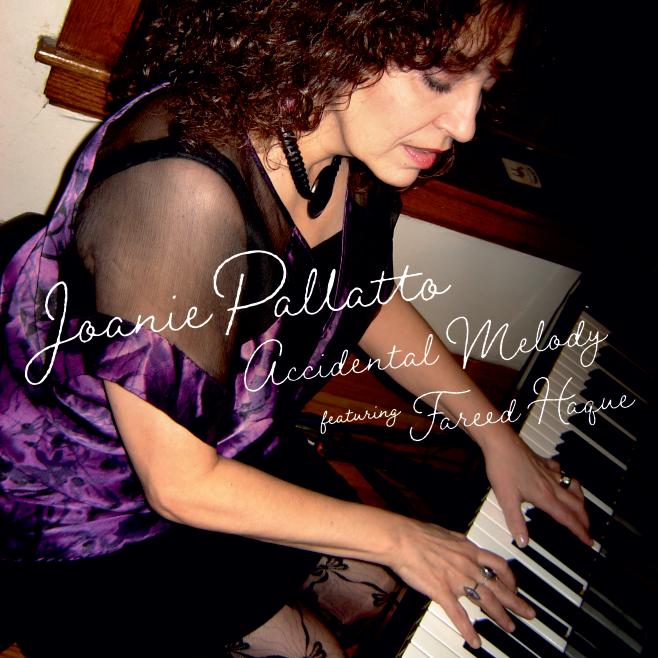
"Joanie’s lyrics take you to the core of your being.” - Roots Music Report (5 STAR REVIEW)
Featuring Modern Guitar Virtuoso and Co-Producer FAREED HAQUE
CD Release Show at Chicago's Legendary Green Mill Sunday, June 11th, 4 - 6 PM greenmilljazz.com
Southport Records Real Jazz Made In Chicago chicagosound.com
"Joanie Pallatto offers a stimulating program of 13 new songs on her new album…” - JAZZIZ
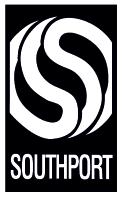
THE NEW YORK CITY JAZZ RECORD | June 2023 43
• Luca Rosenfeld Trio SEEDS 9 pm
êAllen Lowe Sextet with Frank Lacy, Lewis Porter, Ray Suhy, Will Goble, Rob Landis; Benny Benack Quintet and Jam Smalls 7:30, 9, 10:30 pm, 12 am $35
êSono Fest!: Marta Sánchez Soapbox Gallery 7:30, 9 pm $25
êJulian Lage, Greg Cohen The Stone at The New School 8:30 pm $20
êFred Hersch with Drew Gress, Johnathan Blake Village Vanguard 8, 10 pm $40
Thursday, June 15
êGraham Haynes 411 Kent 8 pm $20
• Danny Lipsitz & His Brass Tacks Arthur’s Tavern 7 pm
• Three (Other) Tenors with Troy Roberts, Bob Sheppard, Adam Kolker, Jeremy Stratton, Colin Stranahan Bar Bayeux 8, 9:30 pm
• Brandon Woody’s UPENDO Bar Lunàtico 9, 10:30 pm $10
êThird World: The Music of Gato Barbieri with Jeff Lederer Barbès 10 pm $20
• Yellowjackets Birdland 7 pm, 9:30 pm $30-40
• Soulive Blue Note 8, 10:30 pm $50-65
• Greg Glassman Quartet; Gabriele Donati Quartet Cellar Dog 7, 8:30, 11pm $5
êVijay Iyer Trio; Anthony Hervey Dizzy’s Club 7:30, 9:30, 11:15 pm $25-55
• John Sneider Quintet; Mark Whitfield The Django 7:30, 9, 10:30, 12 am $25
• Uptown! A Latin jazz and swing FIESTA Inwood Hill Park 4:30 pm
• Alan Ferber Nonet with Scott Wendholt, Jon Gordon, John Ellis, Chris Cheek, Nir Felder, David Cook, Matt Clohesy, Mark Ferber The Jazz Gallery 7:30, 9:30 pm $30-40
êReggie Workman: “Remember” Jazz Museum in Harlem 2 pm
• Steven Oquendo Latin Jazz Orchestra; Annette A. Aguilar & Stringbeans Lehman College, Steve Getz Music Hall 4:30 pm
êTim Berne, Tom Rainey, Gregg Belisle-Chi Lowlands 8 pm $10
• Julian Shore, Martin Nevin, Allan Mednard; Tyler Bullock Trio Mezzrow 7:30, 9, 10:30 pm, 12 am $35
• Chris Dave, Burniss Travis, Kebbi Williams, Mike Aaberg, Jahi Sundance, Oswin Benjamin Nublu 151 8, 11 pm $22.66
êBalance with Anna Webber, Matt Mitchell The Owl Music Parlor 8 pm $10
• Lloyd Haber The Porch 8 pm $10
êVision Festival: Brahja with Devin Brahja Waldman, Watson, Ras Moshe, Lee Odom, Damon Hankoff, Luke Stewart, Reggie Nicholson, Nissa Nishikawa, Gabriel Gall; L.I.P. with K.J. Holmes, Jeremy Carlstedt, Matt Lavelle; Ted Daniel International Brass and Membrane Corps with Marvin Sewell, Jose Davila, Michael Wimberly; Mike Reed’s Separatist Party with Ben LaMar Gay, Marvin Tate, Cooper Crain, Dan Quinlivan, Rob Frye Roulette 7 pm $45-65
êLauren Cauley - Erika Dohi Duo; Marius Duboule Quartet with Ohad Talmor, Ben Street, Billy Mintz; Michel Maurer Quartet SEEDS 7:30, 8:30, 9:30 pm
• Steve Count Silvana 7 pm
• Dave Scott Quintet; David Gibson Quartet and Jam Smalls 7:30, 9, 10:30 pm, 12 am $35
êVincent Herring & Something Else with Jeremy Pelt, James Carter, Paul Bollenback, David Kikoski, Essiet Essiet, Jeff “Tain” Watts Smoke 7, 9 pm $35-55
êSono Fest!: Aaron Diehl Soapbox Gallery 7:30, 9 pm $25
êScott Robinson, Greg Cohen The Stone at The New School 8:30 pm $20
êFred Hersch with Drew Gress, Johnathan Blake Village Vanguard 8, 10 pm $40
Friday, June 16
• Kalí Rodriguez Peña’s Mélange Bar Lunàtico 9, 10:30 pm $10
• Bill Saxton and the Harlem All-Stars Bill’s Place 7, 9 pm $30
• Birdland Big Band; Yellowjackets Birdland 5:30, 8:30, 10:30 pm $30-40
êSteve Slagle Birdland Theater 7, 9:30 pm $20-30
• Soulive Blue Note 8, 10:30 pm $50-65
• Wayne Tucker Quintet; James Austin Quartet Cellar Dog 7, 8:30, 11pm $10
êVijay Iyer Trio; Anthony Hervey Dizzy’s Club 7:30, 9:30, 11:15 pm $25-55
êLauren Sevian Quartet; Spin Cycle The Django 7:30, 9, 10:30, 12 am $25
• The Jazz Wahi Composers Sextet with Julie Maniscalco, Berta Moreno, Michael Rörby, Mark Kross, Eddy Khaimovich, Joseph Chidiebere Emmanuel Governors Island 5, 7 pm
êMike Holober and The Gotham Jazz Orchestra Greenwich House Music School 6 pm
êMicah Thomas Mountains with Adam O’Farrill, Immanuel Wilkins, Nicole Glover, Caleb Smith, Kanoa Mendenhall, Kweku Sumbry
The Jazz Gallery 7:30, 9:30 pm $20-30
• Spike Wilner Trio; Jon Davis Trio Mezzrow 7:30, 9, 10:30 pm, 12 am $40
• Franz Hackl Mount Morris Ascension Presbyterian Church 7 pm
• Chris Dave, Burniss Travis, Kebbi Williams, Mike Aaberg, Jahi Sundance, Oswin Benjamin Nublu 151 8, 11 pm $22.66
• Kris Allen; Akili Bradley Room 623 at B2 Harlem 7, 8:30, 10 pm $20
êVision Festival: Patrica Brennan’s More Touch with Kim Cass , Marcus Gilmore, Mauricio Herrera, Mincho Vega; Mayan Space Station Flight 66 with William Parker, Ava Mendoza, Gerald Cleaver, Mixashawn Rozie, Jason Kao Hwang, gabby fluke-mogul, William Parker; Shamanic Principle with Val Jeanty, Patricia Nicholson, Miriam Parker, Amir Bey; Mississippi to NY Freedom Band with Dick Griffin, Dave Sewelson, Luke Stewart, Michael Wimberly, Tcheser Holmes, Dick Griffin; Matthew Shipp Quartet with Mat Walerian, Michael Bisio, Whit Dickey, Dawn Bisio Roulette 6:30 pm $45-65
• Alain Metrailler Quartet with Elias Stemeseder, Chris Tordini, Steven Crammer SEEDS 8 pm
• Peter Louis Octet Silvana 8 pm
êSam Newsome Quartet with David Liebman, Mark Helias, Reggie Nicholson; Greg Glassman Quartet and Jam Smalls 7:30, 9, 10:30 pm, 12 am $40
êVincent Herring & Something Else with Jeremy Pelt, James Carter, Paul Bollenback, David Kikoski, Essiet Essiet, Jeff “Tain” Watts Smoke 7, 9, 10:30 pm $35-55
êGreg Cohen, Panda Rontop Padin
The Stone at The New School 8:30 pm $20
êFred Hersch with Drew Gress, Johnathan Blake Village Vanguard 8, 10 pm $40
Saturday, June 17
• Belo and the Beasts with Eduardo Belo Bar Lunàtico 9, 10:30 pm $10
• Brian Prunka; Living Language Barbès 6, 10 pm $20
• Bill Saxton and the Harlem All-Stars Bill’s Place 7, 9 pm $30
• Yellowjackets Birdland 8:30, 10:30 pm $30-40
êSteve Slagle Birdland Theater 7, 9:30 pm $20-30
• Soulive Blue Note 8, 10:30 pm $50-65
• Bebop Collective; Kyoko Oyobe Quartet Cellar Dog 7, 8:30, 11pm $10
• Mozayik Chelsea Table + Stage 7, 9:30 pm $21
êVijay Iyer Trio; Anthony Hervey Dizzy’s Club 7:30, 9:30, 11:15 pm $25-55
• Dave Stryker Quartet; Lezlie Harrison The Django 7:30, 9, 10:30, 12 am $25
êMicah Thomas Mountains with Adam O’Farrill, Immanuel Wilkins, Nicole Glover, Caleb Smith, Kanoa Mendenhall, Kweku Sumbry The Jazz Gallery 7:30, 9:30 pm $20-30
• Spike Wilner Trio; Johnny O’Neal Trio Mezzrow 7:30, 9, 10:30 pm, 12 am $40
êCHAMA with Cyro Baptista, Felipe Hostins, Martche, Gil Oliveira; Melanie Charles Nublu 151 7, 10 pm $22.66
• Olli Soikelli The Porch 1 pm $10
• Spaceman Patterson and the Celestials; Phil Young Experience Riverbank State Park 1 pm
• Klye Nasser and Simona Premazzi Group Room 31 at Arlo NoMad 7:30 pm $23.41
êVision Festival: Sun Han Guild with William Parker, eddy kwon, Laura Cocks, Nava Dunkelman, DoYeon Kim, Lester St. Louis; Dave Burrell/Joe McPhee; Yasmine Lee, Michael Wimberly; Brandon Lopez “the gospel of sans” with Zeena Parkins, Cecilia Lopez, Mat Maneri, DoYeon Kim, Gerald Cleaver, Tom Rainey, Ian Kornfeld; HEAR IN NOW Extended with Tomeka Reid, Silvia Bolognesi, Angelica Sanchez, Selina Trepp Roulette 6 pm $45-65
• Annie Chen Guardians Project with Marius Duboule, Alex LoRe, Fung Chern Hwei, Jacob Sacks, Jeong Lim Yang, Satoshi Takeishi; Sebastien Ammann’s Spectrum with Neta Raanan, Pablo Menares, Peter Kronreif SEEDS 7:30, 9 pm
êSam Newsome Quartet with David Liebman, Mark Helias, Reggie Nicholson Smalls 7:30, 9 pm $40
êVincent Herring & Something Else with Jeremy Pelt, James Carter, Paul Bollenback, David Kikoski, Essiet Essiet, Jeff “Tain” Watts Smoke 7, 9, 10:30 pm $35-55
• Dwayne “Cook” Broadnax Quartet; George Gray Quartet South Oxford Park 1 pm
êElias Stemeseder, Greg Cohen The Stone at The New School 8:30 pm $20
êFred Hersch with Drew Gress, Johnathan Blake Village Vanguard 8, 10 pm $40
Sunday, June 18
êCooper-Moore 411 Kent 5 pm $20
êDevin Gray 440Gallery 4:40 pm $10
• Anita Brown Orchestra; Arturo O’Farrill and The Afro Latin Jazz Orchestra Birdland 5:30, 8:30, 10:30 pm $20-40
êSteve Slagle Birdland Theater 7, 9:30 pm $20-30
• Soulive Blue Note 8, 10:30 pm $50-65
• Saul Rubin Trio Cellar Dog 7, 8:30 pm $5
êVijay Iyer Trio Dizzy’s Club 5, 7:30 pm $25-45
• Sam Taylor Quartet; Neal Miner Trio The Django 6:30, 8, 9:30, 11 pm $25
• Donny McCaslin Joe’s Pub 6:30, 8 pm $35
• Welf Dorr, Elias Meister, Dmitry Ishenko, Dave Miller Keep 9 pm
• Dave Soldier Orchestra with Komar and Melamid, Gene Pritsker, Talujon Le Poisson Rouge 7:30 pm $32.96
• Mary Foster Conklin Quartet with Sara Caswell, John DiMartino, Ed Howard; Lucy Wijnands Polite Jam Mezzrow 7:30, 9, 10:30 pm, 12 am $35
• Ben Cassara with Addison Frei, Perrin Grace North Square Lounge 12:30, 2 pm
• Mike Gebhart, Katy Pinke, Alena Spanger, Derek Weaving The Owl Music Parlor 8 pm $10
• The Key To Authenticity; April Varner Quartet The Porch 1, 8 pm $10
êBen Allison, Steve Cardenas, Vinicius Gomez, Allan Mednard Rizzoli Bookstore 5 pm $25
• Work in Progress Session #4 with Charlie Rauh, Rinat Tregerman, Julia Easterlin, Miwa Gemini Room 31 at Arlo NoMad 7:30 pm $23.41
• Marcus Goldhaber Room 623 at B2 Harlem 6 pm $20
êVision Festival: 75 Dollar Bill Altered Workspaces with Che Chen, Rick Brown, Sue Garner, Talice Lee, Jason Kao Hwang, Talice Lee; Ethnic Heritage Ensemble with Kahil El’Zabar, Corey Wilkes, Alex Harding, Justin Dillard, Dwight Trible; We Free Strings with Melanie Dyer, Gwen Laster, Ken Filiano, Alexander Waterman, Newman Taylor Baker, Kayo, Nioka Workman; Celebration Band with Reggie Workman, Odean Pope, Jason Moran, Jen Shyu, Elijah Thomas, Elizabeth Panzer, Tapan Modak, Gerry Hemingway Roulette 6:30 pm $45-65
• Lex Korten, David Leon Saint Peter’s Church 5 pm
• Charles Owens Quartet with Garen Dorsey, Kris Monson, Kofi Shepsu; Aaron Johnson Boplicity and Jam Smalls 7:30, 9, 10:30 pm, 12 am $35
êVincent Herring & Something Else with Jeremy Pelt, James Carter, Paul Bollenback, David Kikoski, Essiet Essiet, Jeff “Tain” Watts Smoke 7, 9 pm $35-55
• Sono Fest!: Robert Cuckson; Ethan Iverson Soapbox Gallery 7:30, 9 pm $25
êFred Hersch with Drew Gress, Johnathan Blake Village Vanguard 8, 10 pm $40
Monday, June 19
• Rich Hinman, Adam Levy Bar Lunàtico 9, 10:30 pm $10
• Natalie Douglas Birdland 7 pm $20-30
êVince Giordano and the Nighthawks Birdland Theater 5:30, 8:30 pm $30-40
• TAUK with Kanika Moore Blue Note 8, 10:30 pm $25
• Chris Beck Trio Cellar Dog 7, 8:30 pm $5
• Bryan Carter: “Jazz at Pride” Dizzy’s Club 7:30, 9:30 pm $20-50
• Thomas Linger Quartet; Esteban Castro Trio The Django 7:30, 9, 10:30, 12 am $25
êMingus Big Band Drom 7:30, 9:30 pm $30-35
• Abigail Riccards, Michael Kanan, Neal Miner; Pasquale Grasso, Ari Roland, Clifford Barbaro Mezzrow 7:30, 9, 10:30 pm, 12 am $35
• The Lit Revue Room 31 at Arlo NoMad 7:30 pm $23.41
êGeorge Coleman Quartet with Spike Wilner, David Williams, Joe Farnsworth; Miki Yamanaka Trio and Jam Smalls 7:30, 9, 10:30 pm, 12 am $35
êVanguard Jazz Orchestra Village Vanguard 8, 10 pm $40
Tuesday, June 20
• Ben Monder, Joe Martin, Diego Voglino: “Weekly Jam Session” Bar Bayeux 8, 9:30 pm
• Arthur Kell Quartet with Nate Radley, Allan Mednard Bar Lunàtico 9, 10:30 pm $10
• Tamar Korn Barbès 7 pm $20
êMaria Schneider Orchestra Birdland 7, 9:30 pm $30-40
• Loston Harris Birdland Theater 5:30 pm $20-30
• The Motet Blue Note 8, 10:30 pm $25-35
• Organ Grooves Cellar Dog 7, 8:30 pm $5
• Bryan Carter: “Jazz at Pride” Dizzy’s Club 7:30, 9:30 pm $20-50
êJoe Farnsworth Latin Quartet; Yotam Silberstein Brazilian Quartet The Django 7:30, 9, 10:30, 12 am $25
• Nicole Glover, Alexander Claffy InterContinental New York Barclay’s Club 6:30 pm $55
• Kevin Sun Trio with Walter Stinson, Kayvon Gordon Lowlands 8, 9:30 pm $10
• Barbara Rosene, Jon Davis, Jon Roche; Tardo Hammer Trio Mezzrow 7:30, 9, 10:30 pm, 12 am $35
êSophie Said; Isaiah Collier, Brandon Woody, Surya Botofasina, Russell Hall, Tim Regis Nublu 151 7, 9, 11 pm $22.66
• Human Rights Shrine 10 pm
• Liz Woolley/Andrew Hartman Duo; Gary Sieger, Beverly Crosby Silvana 7, 9 pm
êGeorge Coleman Quartet with Spike Wilner, David Williams, Joe Farnsworth; Jason Clotter Quartet and Jam Smalls 7:30, 9, 10:30 pm, 12 am $35
êGeorge Cables with Essiet Essiet, Jerome Jennings Village Vanguard 8, 10 pm $40
• Emilio Modeste Zinc Bar 7, 8:30 pm $25 Wednesday, June 21
• Steve Sandberg Trio 333 Lounge 7:30, 9:30 pm
êTom Chiu; Gerry Hemingway 411 Kent 8 pm $20
êJerome Sabbagh & Melissa Aldana Quartet with Joe Martin, Bill Stewart Bar Bayeux 8, 9:30 pm
• Vinícius Gomes Quartet with Jon Cowherd, Matt Penman, JK Kim Bar Lunàtico 9, 10:30 pm $10
• Buck And A Quarter Quartet Barbès 8 pm $20
êMaria Schneider Orchestra Birdland 7 pm, 9:30 pm $30-40
êDavid Ostwald’s Louis Armstrong Eternity Band; Frank Vignola’s Guitar Night with Mike Stern Birdland Theater 7, 9:30 pm $20
• The Motet Blue Note 8, 10:30 pm $25-35
• Tardo Hammer Trio Cellar Dog 7, 8:30 pm $5
• Chief Baba Neil Clarke Columbus Park 12 pm
• Danton Boller Dizzy’s Club 7:30, 9:30 pm $25-45
• Ron Jackson Trio; Ian Hendrickson-Smith The Django 7:30, 9, 10:30, 12 am $25
êRemy Le Boeuf’s Assembly of Shadows The Jazz Gallery 7:30, 9:30 pm $30-40
êKen Kobayashi, Ayumi Ishito, Eric Plaks, Adam Lane; Barbara Solsky, Elliott Levin, Warren Kitt, Mike McCann; Stephen Gauci, Adam Lane, Colin Hinton; Yoni Kretzmer and Juan Pablo Carletti’s BIGGISH; James Nadien, Cosmo Gallaro, Brenna Rey Main Drag Music 7 pm $20
• Jay Leonhart Trio; Wilfie Williams Trio Mezzrow 7:30, 9, 10:30 pm, 12 am $35
êBertha Hope Quintet: “Elmo Hope at 100” Pier 84 7 pm
• Ruben Fox The Porch 8 pm $10
• Peter Brainin Room 623 at B2 Harlem 8 pm $20
êAdam Nussbaum Lead Belly Project with Ohad Talmor, Steve Cardenas, Nate Radley SEEDS 8 pm
• Jason Yeager Quintet with Milena Casado, Randal Despommier, Danny Weller, Evan Hyde; Benny Benack Quintet and Jam Smalls 7:30, 9, 10:30 pm, 12 am $35
44 June 2023 | THE NEW YORK CITY JAZZ RECORD
êSasha Berliner Quintet with Mike King, Russell Hall, Jongkuk Kim Smoke 7, 9 pm $35-55
• Meshell Ndegeocello Sony Hall 8 pm $40-80
• Alberto Mesirca The Stone at The New School 8:30 pm $20
êGeorge Cables with Essiet Essiet, Jerome Jennings Village Vanguard 8, 10 pm $40
• Liberation Trio with Elijah J. Thomas, Alberto Oliart, Skyler Hagner Zürcher Gallery 8 pm $20
Thursday, June 22
• Flamenco Inside/Out Bar Lunàtico 9, 10:30 pm $10
êMaria Schneider Orchestra Birdland 7 pm, 9:30 pm $30-40
êRon Carter’s Foursight Quartet Blue Note 8, 10:30 pm $30-45
• Akiko Tsuruga Quartet; Matt Martinez Quartet Cellar Dog 7, 8:30, 11pm $5
• Brooke Alford, Reggie Hines, Kelley Andre Chelsea Table + Stage 7, 9:30 pm $21
êDoug Beavers; Josh Lee Big Band Dizzy’s Club 7:30, 9:30, 11:15 pm $25-55
• Wayne Escoffery Quartet; Hector Martignon Quartet The Django 7:30, 9, 10:30, 12 am $25
• Human Rights Drom 7:30, 9:30 pm $30-35
êRemy Le Boeuf’s Assembly of Shadows The Jazz Gallery 7:30, 9:30 pm $30-40
êTim Berne, Tom Rainey, John Hebert, Ralph Alessi Lowlands 8 pm $10
• Peter Mazza, Andrew Gould, Gianluca Renzi; Andrea Domenici Trio Mezzrow 7:30, 9, 10:30 pm, 12 am $35
• Felipe Salles and the Interconnections Ensemble National Sawdust 8 pm $20
• Diana Herold; Short Memory; Noah Rosner Silvana 7, 9, 10 pm
• Marcus McLaurine Trio with Tomoko Ohno, Samuel Martinelli; Sarah Hanahan Quartet and Jam with Luther S. Allison, Elam Friedlander, Diego Joaquin Ramirez Smalls 7:30, 9, 10:30 pm, 12 am $35
êMary Stallings with Emmet Cohen, Peter Washington, Joe Farnsworth Smoke 7, 9 pm $35-55
• Omara Portuondo Sony Hall 8 pm $59-85
• Alberto Mesirca The Stone at The New School 8:30 pm $20
êGeorge Cables with Essiet Essiet, Jerome Jennings Village Vanguard 8, 10 pm $40
Friday, June 23
êJazztopad Festival: Amir El Saffar Trio; Ksavery Wojcinski Trio 411 Kent 8 pm $20
• Louis Fouché Bar Lunàtico 9, 10:30 pm $10
• Bill Saxton and the Harlem All-Stars Bill’s Place 7, 9 pm $30
êBirdland Big Band; Maria Schneider Orchestra Birdland 5:30, 8:30, 10:30 pm $30-40
êFrank Vignola Quartet Birdland Theater 7, 9:30 pm $20-30
êRon Carter’s Foursight Quartet Blue Note 8, 10:30 pm $30-45
• Wayne Escoffery Quartet; Mariel Bildsten Quartet Cellar Dog 7, 8:30, 11pm $10
• Ty Stephens & SoulJaazz Chelsea Table + Stage 9:30 pm $22
• Caribbean Diaspora Big Band; Josh Lee Big Band Dizzy’s Club 7:30, 9:30, 11:15 pm $25-55
• Dwayne “Cook” Broadnax Quartet; Sarah Hanahan Quartet The Django 7:30, 9, 10:30, 12 am $25
êMarquis Hill The Jazz Gallery 7:30, 9:30 pm $20-30
êJonny King, Russell Hall, Nasheet Waits; Alan Broadbent Trio Mezzrow 7:30, 9, 10:30 pm, 12 am $40
• T.K. Blue with Alva Nelson, Gregory Jones, Greg Bufford Mount Morris Ascension Presbyterian Church 7 pm
• Julia Easterlin, Innov Gnawa The Owl Music Parlor 8 pm $10
• Natasha Blaine The Porch 8 pm $10
êBRIC Celebrate Brooklyn!: Antonio Sanchez “Birdman Live”; Takuya Kuroda Prospect Park Bandshell 6 pm
• Phil Grenadier Quintet with Jerry Bergonzi, Bruce Barth, Harvie S, Billy Drummond; Philip Harper Quintet and Jam with Bernell Jones II, Miles Lennox, Jason Maximo Clotter, David Hawkins Smalls 7:30, 9, 10:30 pm, 12 am $40
êMary Stallings with Emmet Cohen, Peter Washington, Joe Farnsworth Smoke 7, 9, 10:30 pm $35-55
• Sergio Mendes Sony Hall 8 pm $60-100
• Alberto Mesirca, Yura Lee The Stone at The New School 8:30 pm $20
êGeorge Cables with Essiet Essiet, Jerome Jennings Village Vanguard 8, 10 pm $40
• David Lee Jones West Harlem Piers Park 7 pm
Saturday, June 24
êSheryl Bailey 3 Bar Lunàtico 9, 10:30 pm $10
• Pakula Surprise with Eric Pakula, Blake Lindberg, Nick Cudahy; Brian Prunka Barbès 3, 6 pm $20
êPat Metheny Side-Eye Beacon Theatre 8 pm $62-248
• Bill Saxton and the Harlem All-Stars Bill’s Place 7, 9 pm $30
êMaria Schneider Orchestra Birdland 8:30, 10:30 pm $30-40
êFrank Vignola Quartet Birdland Theater 7, 9:30 pm $20-30
êRon Carter’s Foursight Quartet Blue Note 8, 10:30 pm $30-45
• James Burton Quintet; Carol Morgan Quartet Cellar Dog 7, 8:30, 11pm $10
êStanley Clarke N 4Ever; Kenny Garrett; Brandee Younger; DJ Logic Central Park Summerstage, Rumsey Playfield 6 pm
• Caribbean Diaspora Big Band; Josh Lee Big Band Dizzy’s Club 7:30, 9:30, 11:15 pm $25-55
• Danny Jonokuchi Quintet; Nick Hempton Band The Django 7:30, 9, 10:30, 12 am $25
êMarquis Hill The Jazz Gallery 7:30, 9:30 pm $20-30
êJonny King, Dezron Douglas, Billy Drummond; Jeremy Manasia Trio Mezzrow 7:30, 9, 10:30 pm, 12 am $40
êJazztopad Festival: Craig Taborn with Lutosławski Quartet: “Luminous Grid”; Don Davis: “Screaming Into The Void”; Craig Taborn Solo & Duo with Ksawery Wójciński National Sawdust 8 pm $20
• Kaushik Viswanathan Trio The Porch 1 pm $10
êBRIC Celebrate Brooklyn!: Anderson .Paak and Knxwledge, Robert Glasper with Lalah Hathaway, Bilal; BJ Chicago Kid Prospect Park Bandshell 5 pm $90

• Perry Smith Trio Room 31 at Arlo NoMad 7:30 pm $23.41
• Phil Grenadier Quintet with Jerry Bergonzi, Bruce Barth, Harvie S, Jason Tiemann Smalls 7:30, 9 pm $40
êMary Stallings with Emmet Cohen, Peter Washington, Joe Farnsworth Smoke 7, 9, 10:30 pm $35-55
êVince Ector Organatomy Trio + Soapbox Gallery 8 pm $25
• Sergio Mendes Sony Hall 8 pm $60-100
• Excavation Mini Orchestra with Chris Cochrane, John Thayer, Nick Jozwiak, Shoko Nagai, Hans Tammen, Dafna Naphtali, Gelsey Bell The Stone at The New School 8:30 pm $20
êGeorge Cables with Essiet Essiet, Jerome Jennings Village Vanguard 8, 10 pm $40
Sunday, June 25
êCory Smythe 411 Kent 5 pm $20
êJoel Frahm Trio with Dan Loomis, Ernesto Cervini Bar Lunàtico 9, 10:30 pm $10
êJazztopad Festival: Joanna Duda, Max Mucha, Michał Bryndal; Ksawery Wójciński & Maniucha Bikont; Kirk Knuffke Barbès 8 pm $20
• Wagner High School Jazz Band; Arturo O’Farrill and The Afro Latin Jazz Orchestra Birdland 5:30, 8:30, 10:30 pm $20-40
êFrank Vignola Quartet Birdland Theater 7, 9:30 pm $20-30
êRon Carter’s Foursight Quartet Blue Note 8, 10:30 pm $30-45
• Ned Goold Trio Cellar Dog 7, 8:30 pm $5
êTerell Stafford, Rodney Whitaker, and Friends Dizzy’s Club 5, 7:30 pm $20-45
• Carolyn Leonhart Quartet; Yaron Gershovsky Trio The Django 6:30, 8, 9:30, 11 pm $25
• Welf Dorr, Elias Meister, Dmitry Ishenko, Dalius Naujo Keep 9 pm
• Ashley Pezzotti, Miki Yamanaka, Jason Maximo Clotter; Vanisha Gould Polite Jam Mezzrow 7:30, 9, 10:30 pm, 12 am $35
• Paul Jost with Jim Ridl, Dean Johnson North Square Lounge 12:30, 2 pm
• Lauren Lee Trio and Marcos Varela Trio Room 31 at Arlo NoMad 7:30 pm $23.41
• Marcus Goldhaber; Mimi Jones Room 623 at B2 Harlem 6, 8, 9:30 pm $20
• Jonathan Saraga Trio with Marius Van Den Brink, Sam Trapchak Saint Peter’s Church 5 pm
• Antoine Dowdell Group Silvana 10 pm
• Alexander McCabe Quartet; Robert Edwards Quintet and Jam Smalls 7:30, 9, 10:30 pm, 12 am $35
êMary Stallings with Emmet Cohen, Peter Washington, Joe Farnsworth Smoke 7, 9 pm $35-55
êGeorge Cables with Essiet Essiet, Jerome Jennings Village Vanguard 8, 10 pm $40
Monday, June 26
• Ocean Ave Bolero Club Bar Lunàtico 9, 10:30 pm $10
• Caelan Cardello Trio Birdland 7 pm $20-30
êVince Giordano and the Nighthawks Birdland Theater 5:30, 8:30 pm $30-40
• Julius Rodriguez Blue Note 8, 10:30 pm $25
êChampian Fulton Trio Cellar Dog 7, 8:30 pm $5
• Benny Benack III with Peter Bernstein Dizzy’s Club 7:30, 9:30 pm $25-45
• Zach Adleman Quartet; Jihee Heo Trio The Django 7:30, 9, 10:30, 12 am $25
êMingus Big Band Drom 7:30, 9:30 pm $30-35
• Spike Wilner Trio; Pasquale Grasso, Ari Roland, Clifford Barbaro Mezzrow 7:30, 9, 10:30 pm, 12 am $35
êSTAREBABY with Craig Taborn, Matt Mitchell, Trevor Dunn, Dan Weiss Nublu 151 8 pm $22.66
• ELEW Quartet and Jam Smalls 10:30 pm, 12 am $35
• Vanguard Jazz Orchestra Village Vanguard 8, 10 pm $40
• Paul Bollenback Zinc Bar 7, 8:30 pm $25
Tuesday, June 27
êBruce Barth, Ugonna Okegwo, Diego Voglino: “Weekly Jam Session” Bar Bayeux 8, 9:30 pm
êCaroline Davis’ Alula Trio with Chris Tordini, Kate Gentile
êSonelius Smith, Adam Kahan
êRavi Coltrane Quartet
• Loston Harris
êRon Carter’s Golden Striker Trio
• Zaid Nasser Trio
• Jazztopad Festival: Joanna Duda Trio
• Tim Ries Latin Project; Helio Alves Trio
• Kevin Sun Trio with Walter Stinson, Kayvon Gordon
• Jamie Baum Quartet with Carmen Staaf, Tony Scherr, Allison Miller; Steve Ash Trio
• Luther Allison
• Ralph Alessi Quartet with Andy Milne, John Hebert, Mark Ferber; Russell Hall Quintet and Jam with Mike Troy, Sasha Berliner, Leo Larrett, Matt Lee
êKurt Rosenwinkel with Aidan McKeon, Joe Block, Alex Claffy, Joe Farnsworth
êDavid Amram with Kevin Twigg, Rene Hart, Adam Amram, Jerome Harris
• T.K. Blue Trio
• Luke Stewart, Ed Bear, Madison GreenThe Stone
êJochen Rueckert
êRavi Coltrane Quartet
êDavid Ostwald’s Louis Armstrong Eternity Band; Frank Vignola’s Guitar Night with Mike Stern
êRon Carter’s Golden Striker Trio
• Ehud Asherie Quartet
• Patsy Grant
• Jazztopad Festival: Ksawery Wójciński & Maniucha Bikont; Michae
Lutosławski Quartet
• New York Salsa Jazz Project
• Tyler Blanton Quartet; David Bixler and The Old Dog Quartet with Freddie Bryant, Raul Reyes, Jason Tiemann
êEric Plaks, Adam Lane, Tcheser Holmes; Devin Gray, Hery Paz, Kenneth Jimenez; Stephen Gauci, Adam Lane, Kevin Shea; Marc Edwards and Slipstream Time Travel with Tor Snyder, Takuma Kanaiwa, David Tamura, Ayumi Ishito, Brenna Rey
• Dida Pelled Trio; Adam Ray Trio
êKahil Elzabar/David Murray
• Lauren Lee Trio
• Ariacne Trujillo Quintet
• Peter Brainin
• Bernd Reiter Quartet; Evan Sherman Quintet and Jam
• Harlem Gospel Choir: “Sings Nina Simone”
• Terry Jenoure, Angelica Sanchez; New Muse 4tet with Gwen Laster, Melanie Dyer, Alex Waterman, Andrew Drury
êLarry Ochs, Vladimir Tarasov, Mark Dresser
êKurt Rosenwinkel with Aidan McKeon, Joe Block, Alex Claffy, Joe Farnsworth
• Robbie Rozelle Birdland Theater 8:30 $20-30
• Soulive Blue Note 8, 10:30 pm $50-65
• JFA All-Stars Bushwick Inlet Park 6:30 pm
êDavid Schnitter Quintet; Sarah Hanahan Quartet Cellar Dog 7, 8:30, 11pm $5
êEnsemble Ipse with Aruán Ortiz, Seong Ae Kim, Treya Nash, Charles Peck DiMenna Center 7:30 pm
• New York Salsa Jazz Project; Melvis Santa Dizzy’s Club 7:30, 9:30, 11:15 pm $25-50
• Erena Terakubo Quartet; Ty Bailie B3 Trio The Django 7:30, 9, 10:30, 12 am $25
• Pedrito Martinez Drom 9 pm $25-35
êHilliard Greene and the Jazz Expressions Jazz Museum in Harlem 2 pm
• Pablo Ziegler Jazz Tango Trio Joe’s Pub 7 pm $30
• Harish Raghavan Trio; Ray Gallon Trio Mezzrow 7:30, 9, 10:30 pm, 12 am $35
• Sirintip with Kengchakaj Kengkarnka, Andrew Freedman, James Quinlan, Nolan Byrd, Nitcha Tothong; Ilhan Ersahin, Trevor Dunn, Kenny Wollesen Nublu 151 7, 10 pm, 12am $22.66
• Marcelino Feliciano The Porch 8 pm $10
• Greg Lapine; Matt Roach; Sophia Kickhofel Quintet Silvana 7, 9, 11 pm
• Patrick Cornelius Octet with Mike Rodriguez, Dayna Stephens, Nick Vayenas, Perry Smith, Adam Birnbaum, Yasushi Nakamura, Jimmy Macbride; David Gibson Quartet and Jam Smalls 7:30, 9, 10:30 pm, 12 am $35
êMark Dresser Quartet with Denman Maroney, Matthias Ziegler, Michael Sarin The Stone at The New School 8:30 pm $20
êKurt Rosenwinkel with Aidan McKeon, Joe Block, Alex Claffy, Joe Farnsworth Village Vanguard 8, 10 pm $40
êBassDrumBone with Mark Helias, Gerry Hemingway, Ray Anderson Zürcher Gallery 8 pm $20
Friday, June 30
• Bill Saxton and the Harlem All-Stars Bill’s Place 7, 9 pm $30
êBirdland Big Band; Ravi Coltrane Quartet Birdland 5:30, 8:30, 10:30 pm $30-40
• Steve Smith Vital Information Trio Birdland Theater 7, 9:30 pm $20-30
• Soulive Blue Note 8, 10:30 pm $50-65
• Darrell Green Quintet; Jinjoo Yoo Quartet Cellar Dog 7, 8:30, 11pm $10
• Charlie Sepulveda; Melvis Santa Dizzy’s Club 7:30, 9:30, 11:15 pm $25-55
• Ricardo Grilli Quartet with Mike Harmon, Aaron Seeber, Eric Alexander; David Cook Quintet The Django 7:30, 9, 10:30, 12 am $25
• Roberta Piket Trio; Jon Davis Trio Mezzrow 7:30, 9, 10:30 pm, 12 am $40
• Tony Lewis Mount Morris Ascension Presbyterian Church 7 pm
• Will Delisfort Project The Porch 8 pm $10
êBill Warfield and the Hell’s Kitchen Orchestra Silvana 8 pm
• Steve Davis Quintet with Mike DiRubbo, Zaccai Curtis, Ugonna Okegwo, Eric McPherson; Jason Marshall Quintet and Jam Smalls 7:30, 9, 10:30 pm, 12 am $40
êMyra Melford, Matt Wilson, Mark Dresser The Stone at The New School 8:30 pm $20
êKurt Rosenwinkel with Aidan McKeon, Joe Block, Alex Claffy, Joe Farnsworth Village Vanguard 8, 10 pm $40
• Gary Versace, Adam Kolker, Jeremy Stratton, Anthony Pinciotti
• Momentum with Joy Hanson
êRavi Coltrane Quartet
THE NEW YORK CITY JAZZ RECORD | June 2023 45
NEWPORT
FESTIVAL buses depart Aug 4, 5 + 6 choose departure from NYC or Newark weekend package available On sale now WBGO. ORG/NEWPORT
WBGO TRIPS TO
JAZZ
• 333 Lounge 333 Flatbush Ave. (718-399-8008) Subway: B, Q to Seventh Avenue 333lounge.com
• 411 Kent 411 Kent Ave. Subway: J, M, Z to Marcy Ave. 411kent.org
• 440Gallery 440 Sixth Ave., Brooklyn (718-499-3844) Subway: F, G to Seventh Ave. 440gallery.com
• The Appel Room Broadway at 60th Str., 5th floor (212-258-9800) Subway: 1, 2, 3, A, C, E, B, D, F to Columbus Circle jazz.org
• Arthur’s Tavern 57 Grove Str. (212-675-6879) Subway: 1 to Christopher Str. arthurstavernnyc.com
• BAMCafé 321 Ashland Pl.
(718-636-4139) Subway: M, N, R, W to Pacific Str. ; Q, 1, 2, 4, 5 to Atlantic Ave. bam.org
• Bar Bayeux 1066 Nostrand Ave. (347-533-7845) Subway: 2, 5 to Sterling Str. barbayeux.com
• Bar Lunàtico 486 Halsey Str. (917-495-9473) Subway: C to Kingston-Throop Ave. barlunatico.com
• Barbès 376 9th Str. at 6th Ave., Brooklyn (718-965-9177) Subway: F to 7th Ave. barbesbrooklyn.com
• Beacon Theatre 2124 Broadway at 74th Str. (212-496-7070) Subway: 1, 2, 3 to 72nd Str. beacontheatre.com
• Bill’s Place 148 W. 133rd Str. btwn. Lenox and 7th Ave. (212-281-0777) Subway: 2, 3 to 125th Str. billsplaceharlem.com
• Birdland 315 W. 44th Str. btwn. 8th and 9th Ave.s (212-581-3080) Subway: 7, A, C, E, F, N, Q, R, to 42nd Str. birdlandjazz.com
• Birdland Theater 315 W. 44th Str. btwn. 8th and 9th Ave.s (212-581-3080) Subway: 7, A, C, E, F, N, Q, R, to 42nd Str. birdlandjazz.com
• Blue Note 131 W. 3rd Str. at 6th Ave. (212-475-8592) Subway: A, C, E, F, V Grand Str. Shuttle to W. 4th Str. bluenotejazz.com
• Brooklyn Bowl 61 Wythe Ave. (718-963-3369) Subway: L to Bedford Ave. brooklynbowl.com
• Bryant Park 5th and 6th Ave.s btwn. 40th and 42nd Str. Subway: 4, 5, 6 to 42nd Str. bryantpark.org
• Bushwick Inlet Park Kent Avenue between N. 7th and 12th Str., Brooklyn
Subway: L to Bedford Ave.
• Campbell Apartment 15 Vanderbilt Ave. (212-953-0409) Subway: 4, 5, 6, 7, S to 42nd Str. -Grand Central hospitalityholdings.com
• Cellar Dog 75 Christopher Str. at 7th Ave. (212-675-6056) Subway: 1 to Christopher Str. /Sheridan Sq. cellardog.net
• Central Park Summerstage, Rumsey Playfield 72nd Str. and Fifth Ave. (212-36O-2777) Subway: B, D to 72nd Str. summerstage.org
• Chelsea Table + Stage Hilton Fashion District Hotel, 152 W 26th Str. (212-434-0499) Subway: C, E to 23rd Street; R, W to 28th Str. chelseatableandstage.com
• Columbus Park Johnson Str., Brooklyn Subway: 4, 5 to Borough Hall
• The Cutting Room 44 E. 32nd Str. (212-691-1900) Subway: 6 to 33rd Str. thecuttingroomnyc.com
• David Rubenstein Atrium Broadway at 60th Str. (212-258-9800) Subway: 1, 2, 3, A, C, E, B, D, F to Columbus Circle atrium.lincolncenter.org
• Dizzy’s Club 33 W. 60th Str., 11th floor (212-258-9800) Subway: 1, 2, 3, A, C, E, B, D, F to Columbus Circle jazz.org
• The Django 2 Sixth Ave. (212-519-6600) Subway: A, C, E to Canal Str. ; 1 to Franklin Str. thedjangonyc.com
• Drom 85 Ave. A (212-777-1157) Subway: F to Second Ave. dromnyc.com
CL u B DIR e CTORY
• Governors Island
Subway: Ferry from Battery Maritime Building
• Greenwich House Music School 46 Barrow Str. (212-242-4770) Subway: 1 to Christopher Str. greenwichhouse.org
• Harlem Stage Gatehouse 150 Convent Ave. at W. 135th Str. (212-650-7100) Subway: 1 to 137th Str. harlemstage.org
• Holy Trinity Cathedral 337 E. 74th Str. (212-288-3215) Subway: M, Q, R to 72nd Str. thecathedralnyc.org
• Hostos Center 450 Grand Concourse (718-518-6700) Subway: 2, 4, 5 to 149th Str. hostos.cuny.edu
• Ibeam Brooklyn 168 7th Str. btwn. Second and Third Ave. Subway: F to 4th Ave. ibeambrooklyn.com
• InterContinental New York Barclay’s Club 111 E. 48th Str. (212-755-5900) Subway: 6 to 51st Str. intercontinentalnybarclay.com/
• Inwood Hill Park
Subway: A train to 207 Str.
• J. Hood Wright Park W. 173rd Street and Haven Ave. (212-927-1563) Subway: A to 175th Str. nycgovparks.org
• The Jazz Gallery 1160 Broadway, 5th fl (212-242-1063) Subway: C, E, to Spring Str. ; 1, 2 to Houston Str. jazzgallery.org
• Jazz Museum in Harlem 58 W. 129th Str. btwn. Madison and Lenox Ave. (212-348-8300) Subway: 6 to 125th Str. jazzmuseuminharlem.org
• Joe’s Pub 425 Lafayette Str. (212-539-8770) Subway: N, R to 8th Str. -NYU; 6 to Astor Pl. joespub.com
• The Keep 205 Cypress Ave., Queens (718-381-0400) Subway: L to Jefferson Str. thekeepny.com
• Knickerbocker Bar & Grill 33 University Pl. at 9th Str. (212-228-8490) Subway: N, R to 8th Str. -NYU knickerbockerbarandgrill.com
• Le Poisson Rouge 158 Bleecker Str. (212-228-4854) Subway: A, B, C, D, E, F, V to W. 4th Str. lepoissonrouge.com
• Lehman College, Steve Getz Music Hall 250 Bedfork Park Blvd West, Bronx (718-960-8833) Subway: 4, D train to Bedford Park Blvd.
• Lowlands 543 Third Ave., Brooklyn (347-463-9458) Subway: R to Prospect Ave. lowlandsbar.com
• Main Drag Music 50 S. 1st Street between Kent and Wythe Ave. (718-388-6365) Subway: L to Bedford Ave. maindragmusic.com
• Mezzrow 163 W. 10th Str. (646-476-4346) Subway: 1 to Christopher Str. smalls.com
• Mount Morris Ascension Presbyterian Church 15 Mount Morris Park West (212-831-6800) Subway: 2, 3 to 125 Str.
• National Sawdust 80 N. 6th Str. (646-779-8455) Subway: L to Bedford Ave. nationalsawdust.org
• New York Jazz Workshop 265 W. 37th St, 10th floor suite (212-287-5908) Subway: A, C, E to 34th Street-Penn Station newyorkjazzworkshop.com
• North Square Lounge 103 Waverly Pl. at McDougal Str. (212-254-1200) Subway: A, B, C, E, F, V to West 4th Str. northsquareny.com/about-jazz.php
• Nublu 151 151 Ave C Subway: L to 1st Ave. nublu.net
• Ornithology Jazz Club 6 Suydam Str., Brooklyn (917-231-4766) Subway: J, M, Z to Myrtle Ave. ornithologyjazzclub.com
• The Owl Music Parlor 497 Rogers Ave. (718-774-0042) Subway: Subway: 2 to to Sterling Str. theowl.nyc
• Pangea 178 Second Ave. (212-995-0900) Subway: L to First Ave. pangeanyc.com
• Pier 84 W. 44th Str. and Hudson River Subway: A, C, E, F, V to 42nd Str. -Port Authority
• The Porch 750A St. Nicholas Ave. (646-895-9004) Subway: A, B, C, D to 145th Str. theporchnyc.com
• Prospect Park Bandshell
Subway: F to Prospect Park
• Red Room at KGB Bar 85 E. 4th Str. (703-221-4587) Subway: F to Second Ave. redroomnyc.com
• Riverbank State Park 679 Riverside Drive at 145th Str. Subway: A, C, 1 to 145th Str.
• Rizzoli Bookstore 1133 Broadway (212-759-2424) Subway: R, W to 28th Str. rizzolibookstore.com
• Room 31 at Arlo NoMad 11 E. 31st Str. (212-806-7000) Subway: 6 to 33rd Str. arlohotels.com/nomad
• Room 623 at B2 Harlem 271 W. 119th Str. (212-280-2248) Subway: B, C to 116th Str. b2harlem.com
• Rose Theater Broadway at 60th Str., 5th floor
(212-258-9800) Subway: 1, 2, 3, A, C, E, B, D, F to Columbus Circle jazz.org
• Roulette 509 Atlantic Ave. (917-267-0363) Subway: 2, 3, 4, 5 to Atlantic Ave. roulette.org
• Saint Peter’s Church 619 Lexington Ave. at 54th Str. (212-935-2200) Subway: 6 to 51st Str. saintpeters.org
• Scholes Street Studio 375 Lorimer Str. (718-964-8763) Subway: L to Lorimer Str. ; G to Broadway scholesstreetstudio.com
• SEEDS 617 Vanderbilt Ave.
Subway: 2, 3, 4 to Grand Army Plaza seedsbrooklyn.org
• Shrine 2271 Adam Clayton Powell Blvd. btwn. 133rd & 134th Str. (212-690-7807) Subway: B, 2, 3 to 135th Str. shrinenyc.com
• Silvana 300 W. 116th Str. (646-692-4935) Subway: B, C, to 116th Str. silvana-nyc.com
• Smalls 183 W 10th Str. at Seventh Ave. (212-252-5091) Subway: 1 to Christopher Str. smallsjazz.com
• Smoke 2751 Broadway btwn. 105th and 106th Str. (212-864-6662) Subway: 1 to 103rd Str. smokejazz.com
• Soapbox Gallery 636 Dean Str. Subway: 2, 3 to Bergen Str. soapboxgallery.org
• Sony Hall 235 W. 46th Str. (212-997-5123) Subway: N, R, W to 49th Str. sonyhall.com
• Soup & Sound 292 Lefferts Ave. btwn. Nostrand and Rogers Ave. (917-828-4951) Subway: 2 to Sterling Str. soupandsound.org
• South Oxford Park 197 S. Oxford Str. (212-639-9675) Subway: 2, 3, 4, 5, B, D, N, Q, R to Atlantic Ave. nycgovparks.org/parks/south-oxford-park
• The Stone at The New School 55 West 13th Str. (212-229-5600) Subway: F, V to 14th Str. thestonenyc.com
• Town Hall 123 W. 43rd Str. (212-997-1003) Subway: 7, B, D, F, M to 42nd Str. -Bryant Park the-townhall-nyc.org
• Village Vanguard 178 Seventh Ave. South at 11th Str. (212-255-4037) Subway: 1, 2, 3 to 14th Str. villagevanguard.com
• West Harlem Piers Park Riverside Drive and 130th Str. Subway: 1 to 125th Str.
• Williamsbridge Oval 3225 Reservoir Oval E, Bronx (718-543-8672) Subway: 4 to Mosholu Parkway nycgovparks.org/parks/williamsbridge-oval
• Woodlawn Cemetery 517 E 233rd Str. (718-920-0500) Subway: 2, 5 to 219th Str. thewoodlawncemetery.org
• Zinc Bar 82 W. 3rd Str. (212-477-8337) Subway: A, C, E, F, V, Grand Str. Shuttle to W. 4th Str. zincbar.com
• Zürcher Gallery 33 Bleecker Str. (212-777-0790) Subway: 6 to Bleeker Str. ; B, D, F to BroadwayLafayette galeriezurcher.com
46 June 2023 | THE NEW YORK CITY JAZZ RECORD
HARRISON BANKHEAD (Mar. 1, 1955 – Apr. 5, 2023)
A wide-ranging avant garde jazz bassist, Bankhead died at 68 in north Chicago, IL. Born Harrison napoleon Bankhead III in Waukegan, IL, by the early ’80s Bankhead was working steadily in the Chicago jazz scene, most notably with Fred Anderson and at the tenor saxophonist’s club, the Velvet Lounge. Over the years he performed with Oliver Lake and other Chicagoans, including Roscoe Mitchell, Von Freeman, Malachi Thompson, saxophonist edward Wilkerson’s 8 Bold Souls and Hamid Drake. Bankhead was a member of the Association for the Advancement of Creative Musicians (AACM). Wilkerson and Mars Williams joined Bankhead on his two albums as a leader, Morning Sun / Harvest Moon (2010) and Velvet Blue (2013).
KARL BERGER (Mar. 30, 1935 – Apr. 9, 2023) The pianist-vibraphonist, arranger-composer and champion of improvised music, died at 88 in Albany, nY, from complications following surgery. Berger is best known for the Creative Music Studio (CMS) in Woodstock, nY, co-founded in 1972 with singer-poet (and wife) Ingrid Sertso and Ornette Coleman, which offered training to musicians and presented hundreds of “sessions”. Born in Heidelberg, Germany, he studied classical piano, but was drawn to jazz. Berger took up the vibraphone while studying for his doctorate in musicology in Germany, and taught briefly as a professor before deciding to focus on music and moving to Paris where he joined a band led by trumpeter Don Cherry, on whose Symphony for Improvisers, Brown Rice, Eternal Rhythm and Live at Café Montmartre he appears. His own debut album From Now On (eSP-Disk’) was released in 1967; ultimately, he recorded over 20 other albums as leader. Berger was also a frequent collaborator with some of jazz’ most creative musicians, including his lifelong mentor Coleman, Anthony Braxton, Jack DeJohnette, Carla Bley, John McLaughlin and Roswell Rudd. After CMS initially closed in 1984, he continued to conduct musical workshops around the world with Sertso. He also led the Karl Berger Improvisers Orchestra while also teaching at various universities, chairing the music department of the university of Massachusetts Dartmouth until retiring in 2006. Berger was additionally a sought-after arranger for disparate musical artists and acts (Angélique Kidjo, Jeff Buckley, natalie Merchant, Bootsy Collins, Buckethead). CMS was reopened in 2010 and its leadership has since been passed on to percussionist Billy Martin (CMS President and executive Director), with workshops in Kingston and Woodstock. Berger and Sertso’s Creative Music Foundation is currently releasing archival recordings in conjunction with the Columbia university Center of Jazz Studies. His final album, Heart Is a Melody, was released last year.
IVAN “MAMÃO” CONTI (Aug. 16, 1946 – Apr. 18, 2023)
A founding member of the pioneering Brazilian jazz-funk trio Azymuth and often lauded as one of the greatest drummers ever, Conti died at age 76. Born Ivan Miguel Conti Maranhao in Rio de Janeiro’s estáncio neighborhood, where samba was first established, Mamão played guitar in the bossa nova band Os Dissonantes and a leading ’60s rock group, The Youngsters, while also picking up steady session jobs with the likes of eumir Deodato and José Mauro. At 20, he started playing drums, echoing the powerhouse playing of Buddy Rich, Gene Krupa and Louie Bellson, and two years later started playing in Projeto 3 with future Azymuth bandmates José Roberto Bertrami and Alex Malheiros. The trio eventually launched Azymuth in 1973, and recorded their self-titled debut two years later, mixing jazz, funk, samba and other Brazilian sounds. Azymuth signed to Milestone in 1979 and released the influential Light as a Feather, scoring a hit with “Jazz Carnival”. Mamão recorded more than two dozen albums with Azymuth, as well as several acclaimed solo recordings, most notably The Human Factor (1984), the big band album Pulsar (1997) and Poison Fruit (2018). Mamão was an active collaborator with many artists outside Azymuth, creating Sujinho with hiphop luminary Madlib in 2008.
EMAHOY
TSEGUÉ-MARYAM GUÈBROU (Dec. 12, 1923 – Mar. 26, 2023) The renowned ethiopian Orthodox nun and pianist-composer died at age 99 in Jerusalem. Born into a wealthy Addis Ababa family, she studied violin at a Swiss boarding school before moving back to ethiopia, working briefly as a civil servant before taking her holy orders at 21 and living for a decade in silence at a monastery. eventually, she began to compose again and performed on violin, piano and organ. emahoy’s first album was released in 1967, her music a blend of ellingtonian jazz, folkloric and choral music. Wider fame arrived in 2006 with the release of a compilation, Éthiopiques Vol. 21: Ethiopia Song, and emahoy used her popularity to open a charitable foundation in Africa and Washington, D.C. to help underserved children.
DUŠKO GOJKOVIC (Oct. 14, 1931 – Apr. 5, 2023) The trumpeter and composer who brought the musical heritage of the Balkans into modern jazz died at 92 in Munich, Germany. Gojković (often spelled as “Gojkovich”) was born in Jajce, a small town in former Yugoslavia, now Bosnia and Herzegovina. While studying at a music academy in Belgrade he played in various jazz combos, as well as in the Radio Belgrade Big Band. In 1956, Gojković moved to West Germany and performed regularly with the Frankfurt Allstars. An acclaimed performance with Marshall Brown’s International Youth Band at the 1958 newport Jazz Festival raised his stature, and in 1961 Gojković was awarded a scholarship to study composing and arranging at the Berklee College of Music. He then worked with Maynard Ferguson and Woody Herman before returning to europe and forming a sextet. In 1966 Gojković released his first album, Swinging Macedonia, a milestone in Balkan jazz, and more than 30 recordings as a leader followed. Gojković worked with the Kenny Clarke-Francy Boland Big Band from 1968-73, then with Slide Hampton’s big band before leading his own large ensembles, one of which performed at the 200th anniversary of Serbian statehood in 2004.
RALPH HUMPHREY (May 11, 1944 – Apr. 25, 2023) The drummer and educator known for his stints with the Don ellis Big Band, Frank Zappa and Al Jarreau died at 78 in Los Angeles from cancer. Humphrey was born in Berkeley, CA, and started on clarinet before switching to drums at 15. His many bandstand credits include work with Wayne Shorter, Barbra Streisand and natalie Cole, as well as countless film and TV soundtracks. He cofounded the Los Angeles Music Academy and authored an instructional book, Even in the Odds
AHMAD JAMAL (Jul. 2, 1930 – Apr. 16, 2023) A leading figure in the development of modern jazz’ small group aesthetic, the pianist-composer died at 92 in Ashley Falls, MA from complications of prostate cancer. A Pittsburgh native, he began playing piano at 3. After high school, he became a professional musician; at 20, he converted to Islam and changed his name (from Frederick Russell Jones). He moved to Chicago and started to work in a trio called the Three Strings, recording first for the Okeh label. Together with bassist Israel Crosby and drummer Vernel Fournier, Jamal recorded the landmark live album At the Pershing: But Not for Me in 1957, a best-seller that included what would become Jamal’s theme song, “Poinciana”. The trio’s deceptively understated style, deeply grooving and joyously melodic, was a strong influence on other musical artists, most notably Miles Davis. A national endowment for the Arts (neA) Jazz Master and Grammy Lifetime Achievement honoree, Jamal recorded over 70 albums as a leader. Last year, two volumes of unreleased live trio recordings, Emerald City Nights: Live at the Penthouse 19631964 and 1965-1966, met with wide acclaim.
EDWARD “KIDD” JORDAN (May 5, 1935 – Apr. 7, 2023)
The popular saxophonist and educator, a fixture of the new Orleans jazz scene for 70 years, died at 87 in his sleep. Born and raised in Crowley, a southwestern Louisiana farming community suffused with blues and zydeco
sounds, Jordan became entranced with Charlie Parker and continued music studies at Southern university in Baton Rouge, where he met his future brother-in-law and frequent bandmate, clarinetist Alvin Batiste. Jordan moved to new Orleans in 1955 and quickly became a first-call side musician for R&B greats including Ray Charles, Guitar Slim and Chuck Willis. Jordan formed his Improvisation Arts Quintet in 1975, and over the years worked with Cecil Taylor, Cannonball Adderley, Fred Anderson, Ornette Coleman, ed Blackwell and Archie Shepp. His greatest contribution to jazz, however, was as an educator: he was a professor in the music program (and later the chair of the Jazz Studies Program) for 34 years at Southern university in new Orleans, and an instructor at the new Orleans Jazz and Heritage Foundation’s music school for 25 years. Among his many honors was recognition as chevalier of the Ordre des Artes et des Lettres by the French Ministry of Culture, and a Lifetime Achievement award from the Vision Festival at which he was a regular. In 2020, Jordan released his tenth and final album, Last Trane to New Orleans
MARY McMAHON (Aug. 30, 1948 – Mar. 30, 2023) A Buffalo, nY vocalist with a passion for jazz standards, she died at 74 from cancer. McMahon grew up in a musical family, singing in various jazz groups around Buffalo, including Things to Come with pianist Bobby Jones, before stepping aside to raise her two children and focus on a 25-year teaching career. After retirement, she swung into action with the popular group My Cousin Tone’, performed in musical theater productions and led her own group, the Mary McMahon Project.
BILL MIELE (Jan. 22, 1952 – Apr. 25, 2023) Regarded as one of the top jazz bassists in new england, Miele died at 71; he lived in Johnston, RI, just outside Providence, where he was born and raised. A graduate of the Berklee College of Music, he worked early on with Bobby Greene and Coleus, a fusion outfit, and then steadily with top jazz artists, such as Greg Abate, Dan Moretti and John Allmark, in the busy Providence and new Bedford, MA scenes. A member of the Whaling City Sound Superband and the Jim Robitaille Trio, Miele was a longtime educator as well, teaching at the R.I. Philharmonic Music School, Providence College and the Franklin School for the Performing Arts.
DON SEBESKY (Dec. 10, 1937 – Apr. 29, 2023) The Grammy Award-winning composer and arranger died at 85 in Maplewood, nJ, of complications from dementia. Born and raised in Perth Amboy, nJ, he first started playing the accordion, then took up the trombone in high school. Sebesky took lessons with Warren Covington from Tommy Dorsey’s band, and paid close attention to the work of other trombonists, namely Frank Rosolino and Carl Fontana, whom he subbed for in Kai Winding’s band, an early professional gig. After studying at the Manhattan School of Music, Sebesky joined Maynard Ferguson’s band in 1958—his song “Humbug” is on Ferguson’s A Message from Newport—and then briefly worked in the Stan Kenton Orchestra before turning to full-time arranging, conducting and composing. He began working with producer Creed Taylor, first on Wes Montgomery’s memorable 1965 album Bumpin’, then on countless other recordings as house arranger for Creed Taylor Inc.—CTI Records—and overseeing sessions in the late ’60s and ’70s for artists including George Benson, Milt Jackson, Hubert Laws, Herbie Mann and Freddie Hubbard. At this point, Sebesky was creating a pop-friendly crossover sound that would later develop into the contemporary jazz genre. He also recorded over a dozen albums as a leader. Pop music stars regularly sought his arranging skills for their recordings—Tony Bennett, Aretha Franklin, Barbra Streisand, Roberta Flack, Prince, Rod Stewart, Liza Minnelli and many more. Sebesky had numerous theater credits as well, and won emmy nominations for his television work. His papers were acquired by the Library of Congress in 2016. Thomas Staudter
THE NEW YORK CITY JAZZ RECORD | June 2023 47
I n M e M O R I A M
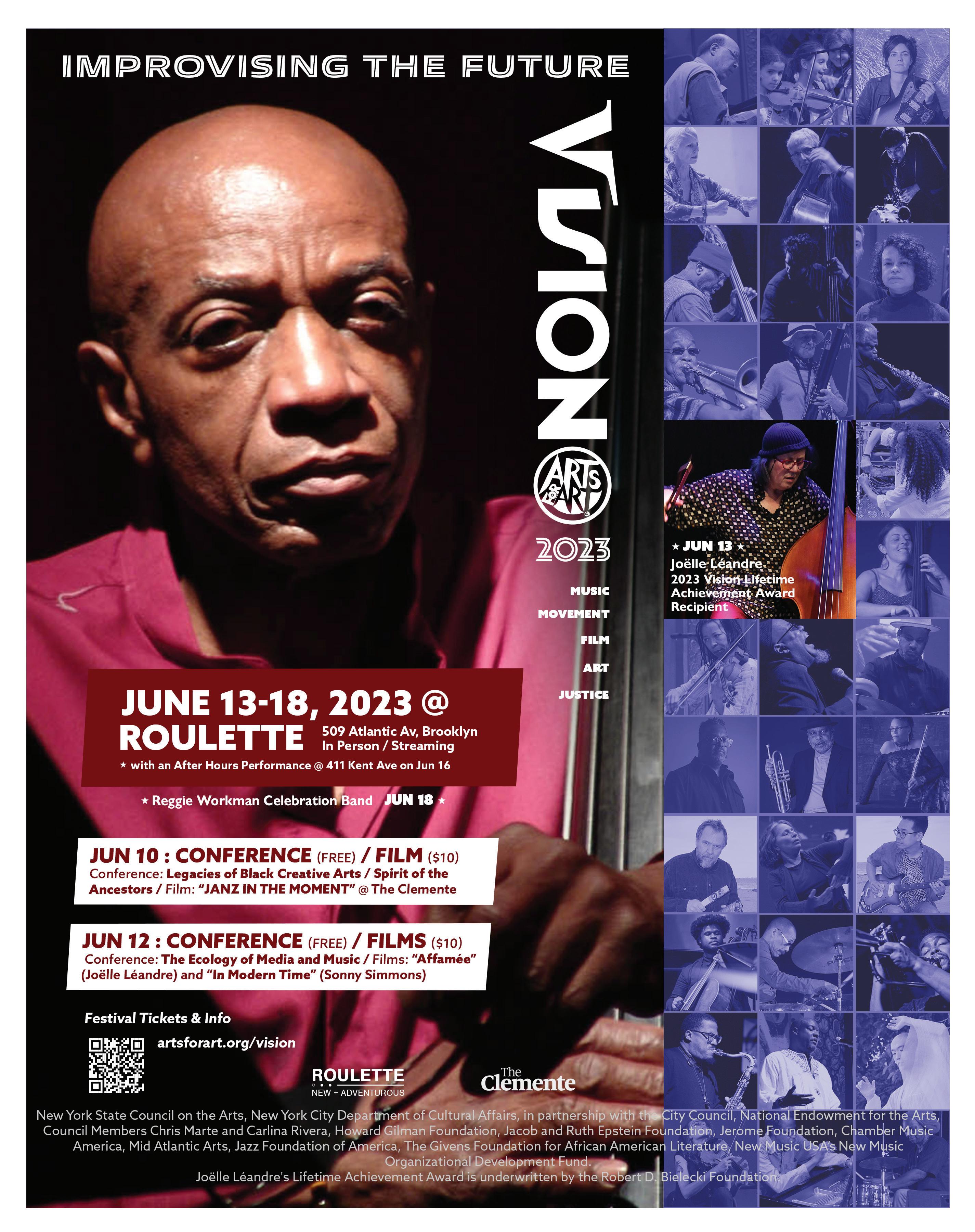












































 — Tom Greenland
— Tom Greenland















































 by Anna Steegmann
by Anna Steegmann
 Modern
by Brian Charette
Modern
by Brian Charette






 George Grella
George Grella









 by Thomas Conrad
by Thomas Conrad


















 by Keith Hoffman
by Keith Hoffman




 Phillip Johnston
Phillip Johnston
 by George Grella
by George Grella
 by Robert Bush
by Robert Bush
 by George Kanzler
by George Kanzler

 by Ken Dryden
by Ken Dryden


 by Terrell K. Holmes
by Terrell K. Holmes

 Freeman
Freeman
















 by Tom Greenland
by Tom Greenland










 Ewen/Michael Foster (Infrequent
Ewen/Michael Foster (Infrequent

 by Marilyn Lester
by Marilyn Lester

















 by Ken Dryden
by Ken Dryden



 Shand
Shand
 by Jim Motavalli
by Jim Motavalli
 by Scott Yanow
by Scott Yanow
 by Ken Dryden
by Ken Dryden



 Hoffman
Hoffman




 by Scott Yanow
by Scott Yanow


 Cyrille (Intakt)
by Terrell K. Holmes
Cyrille (Intakt)
by Terrell K. Holmes












